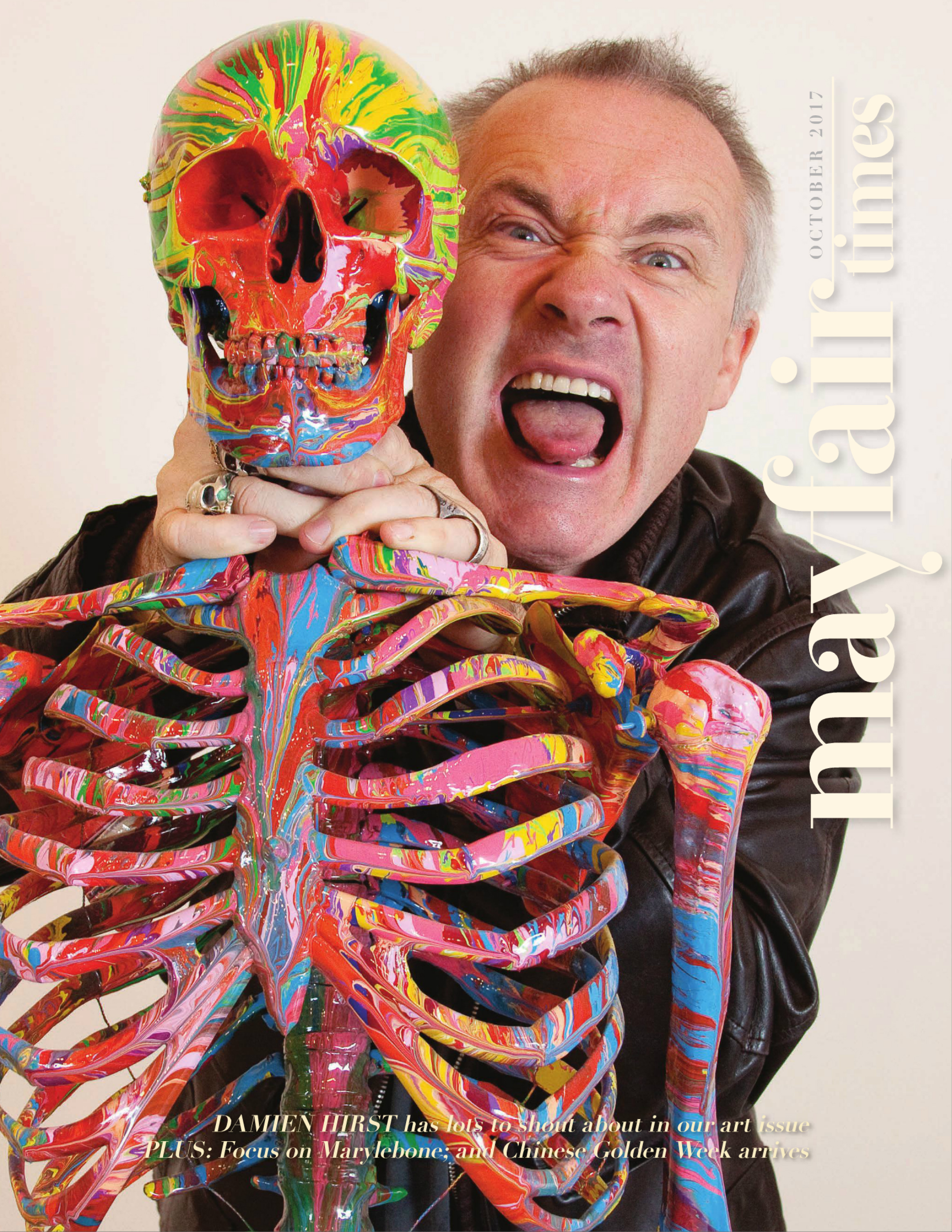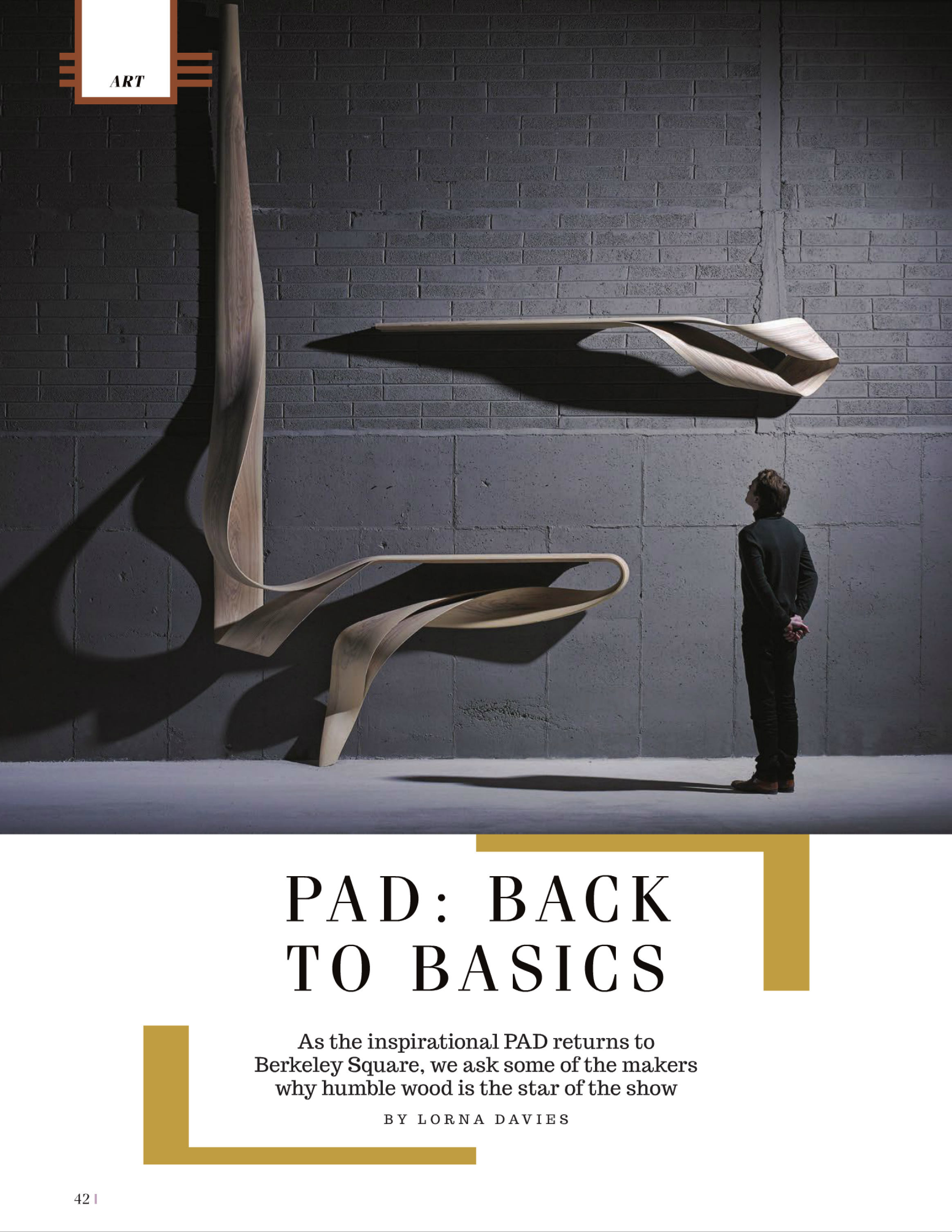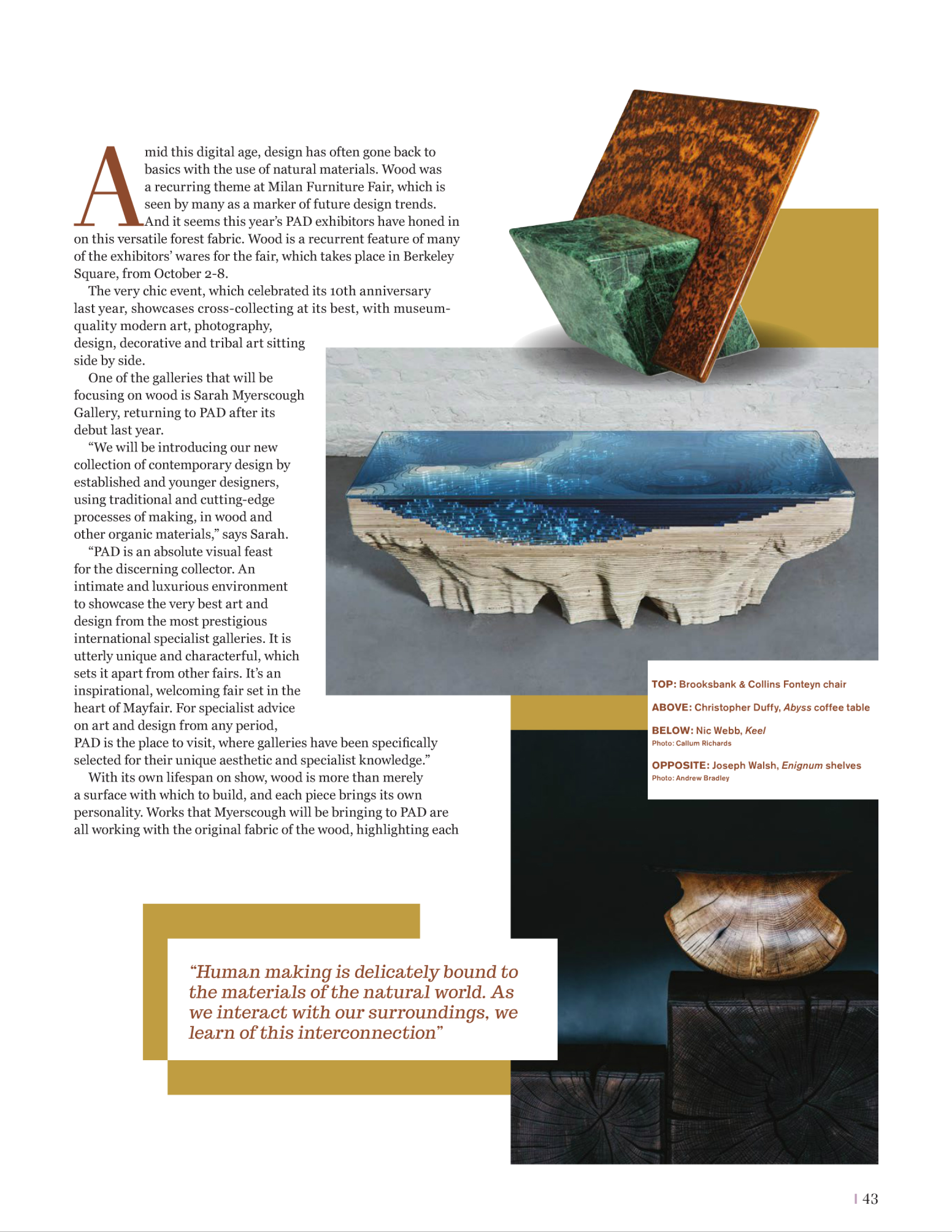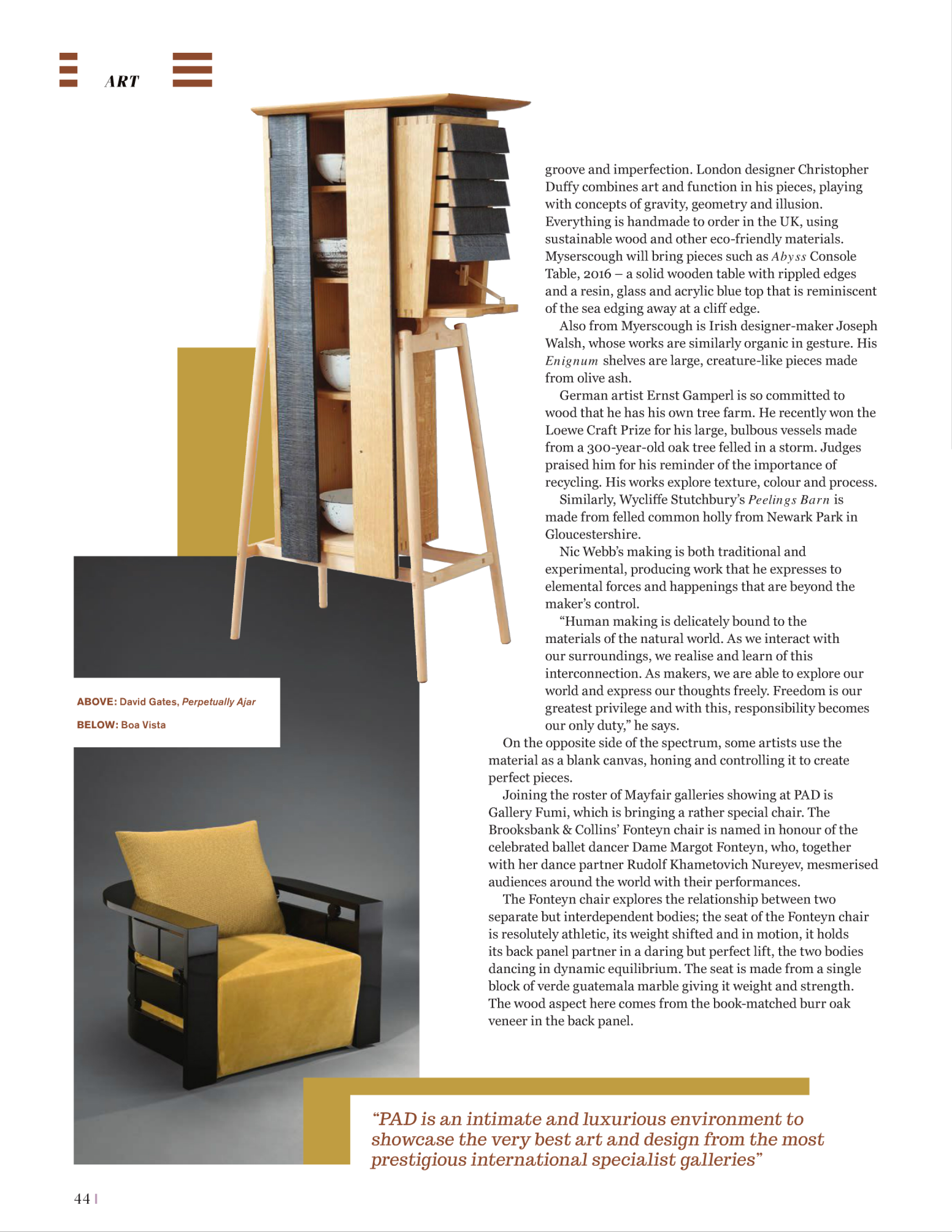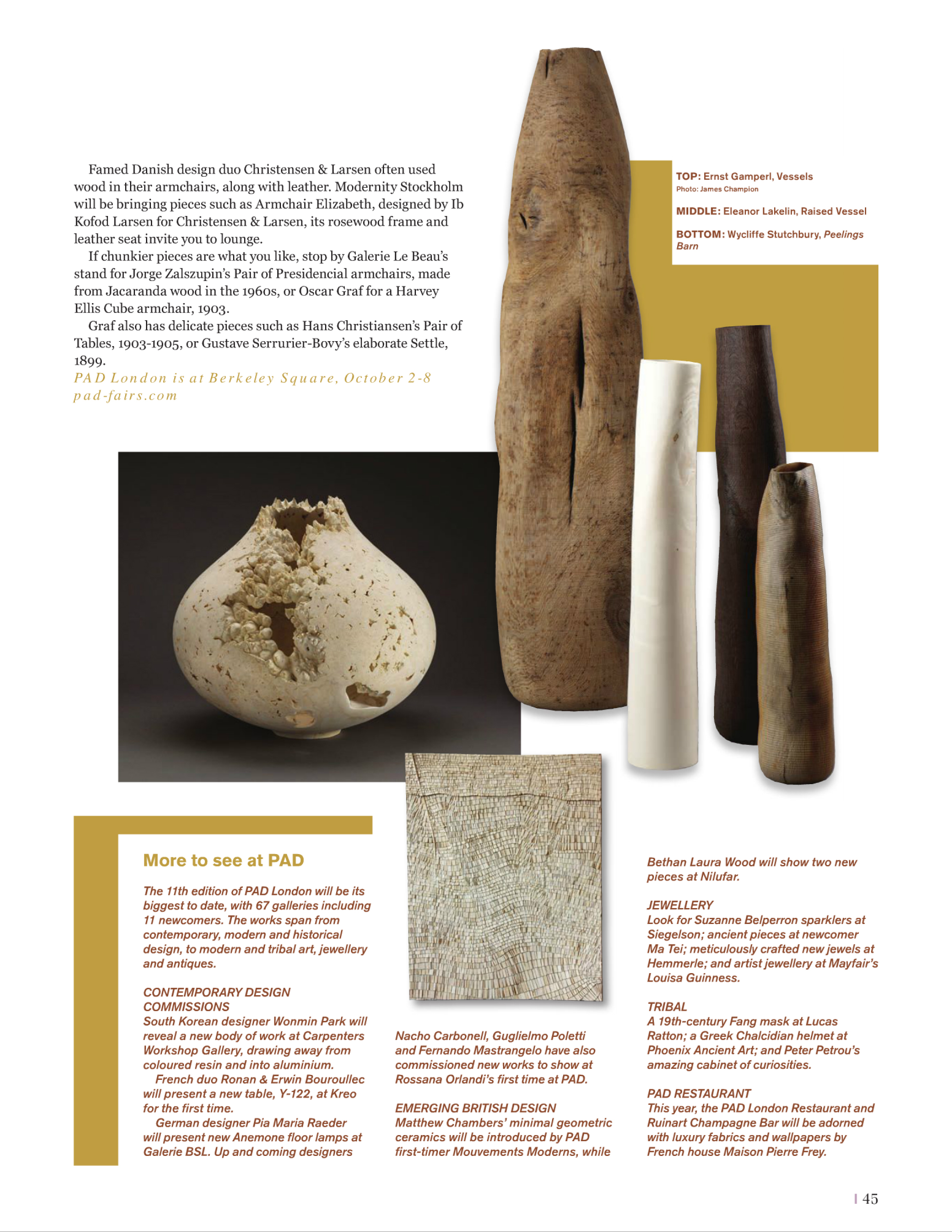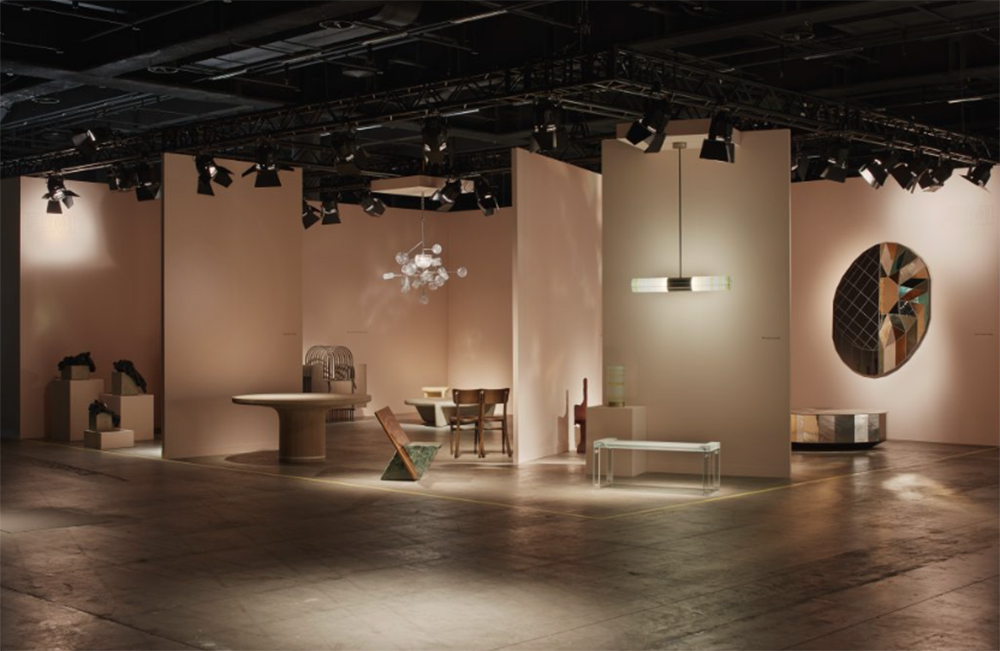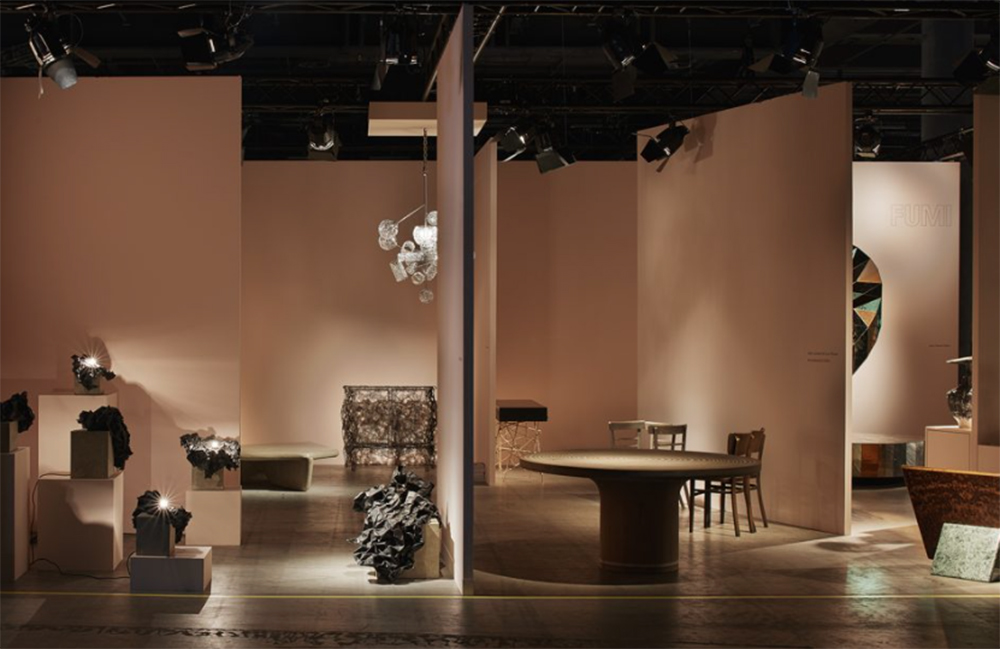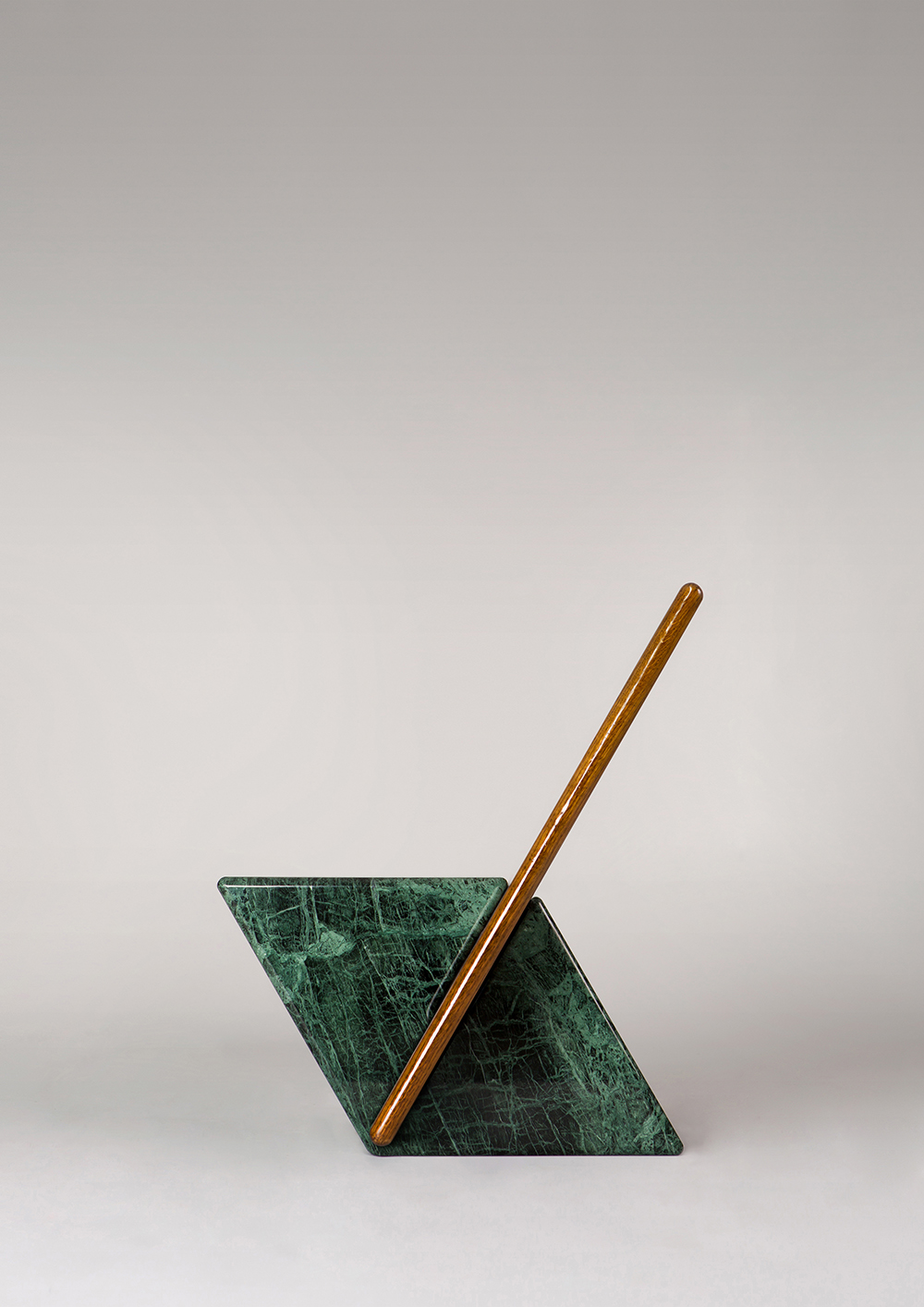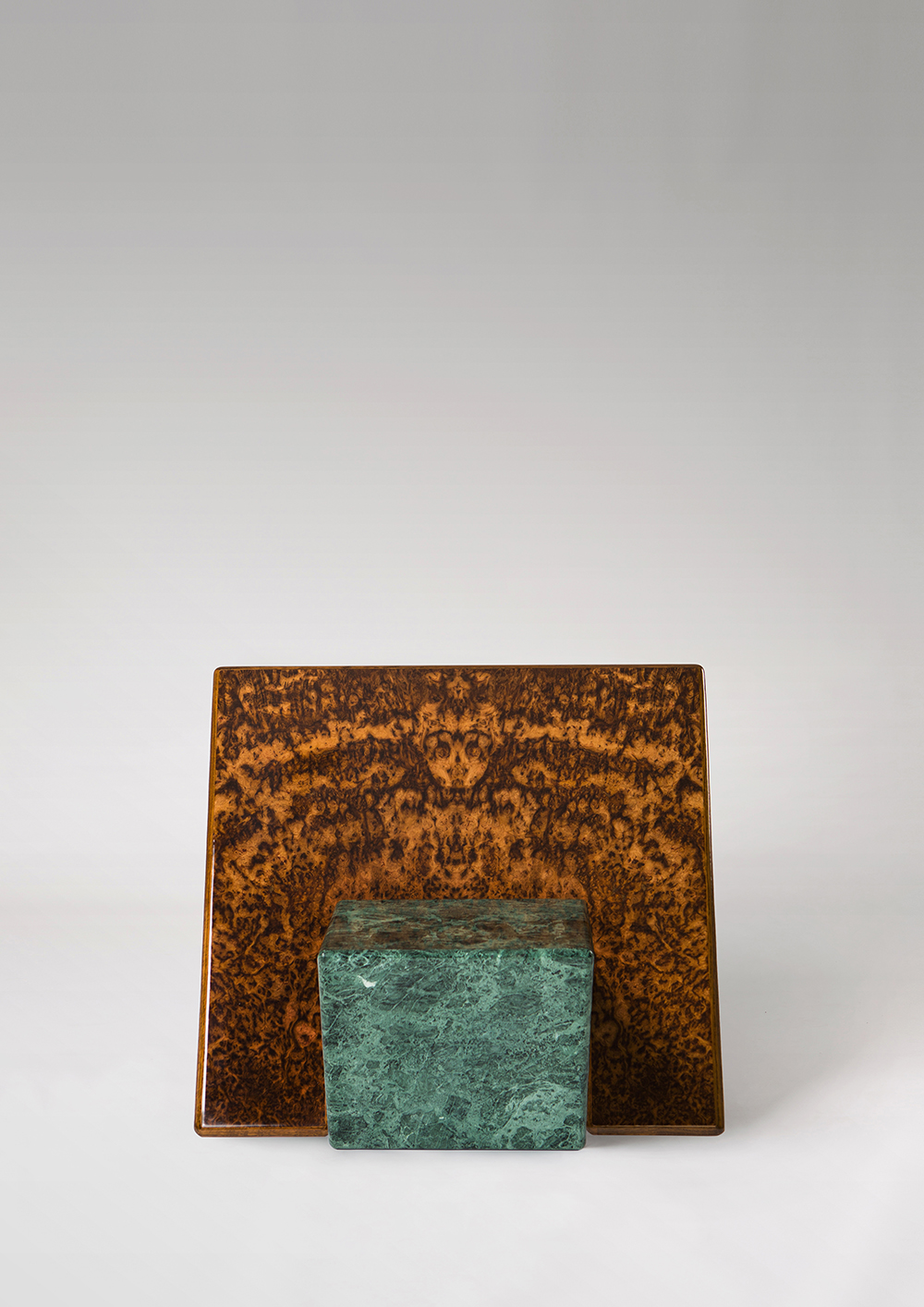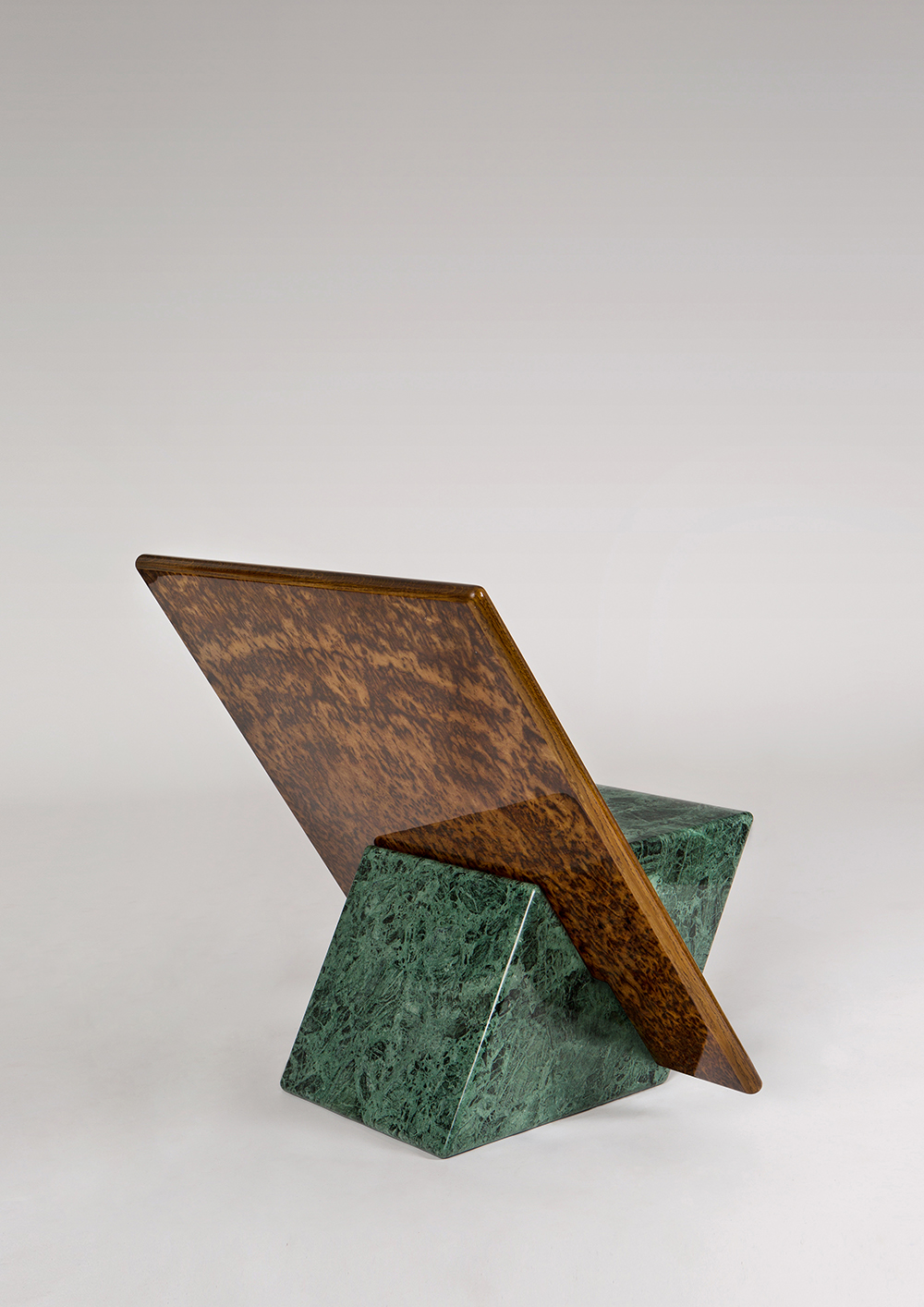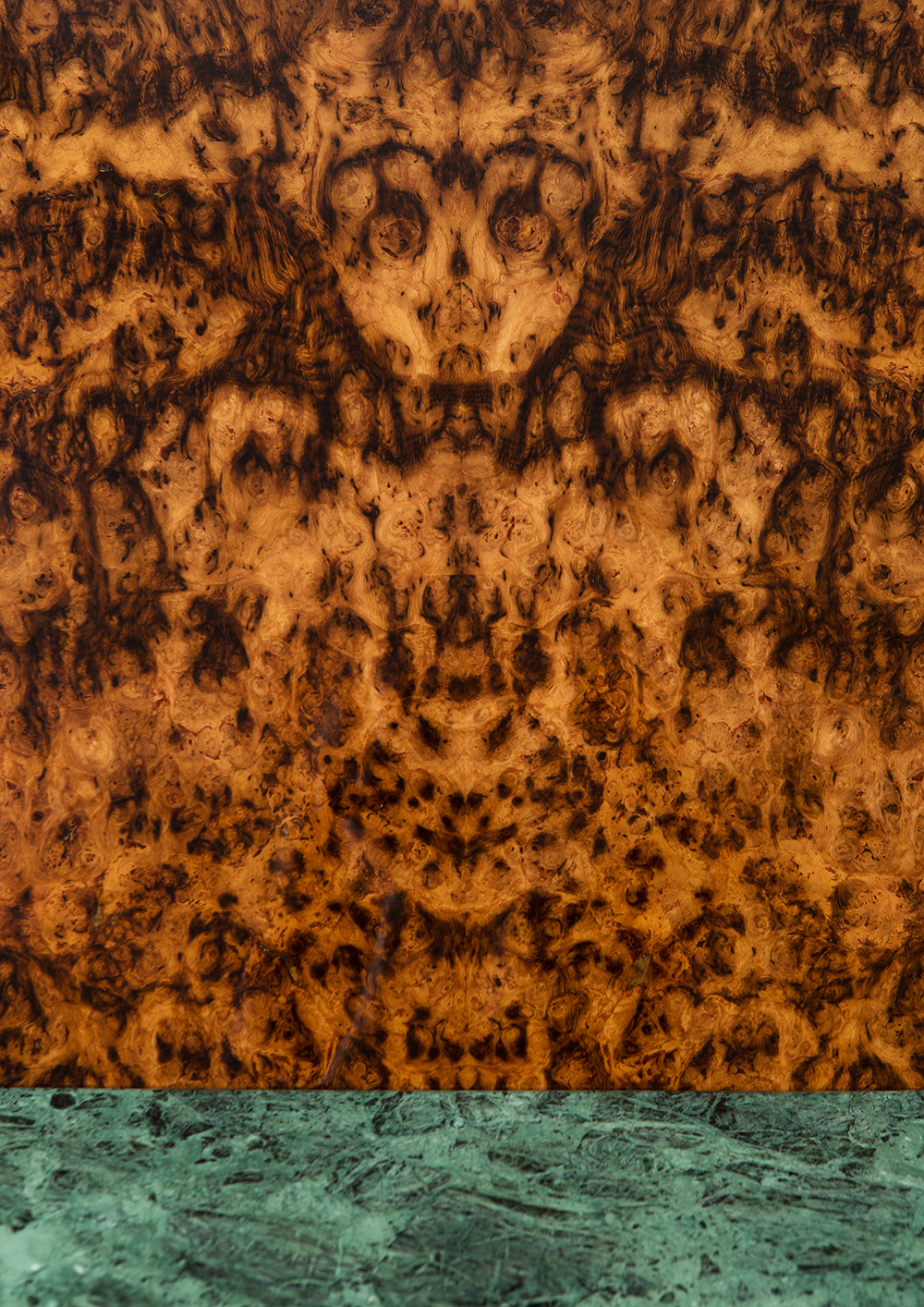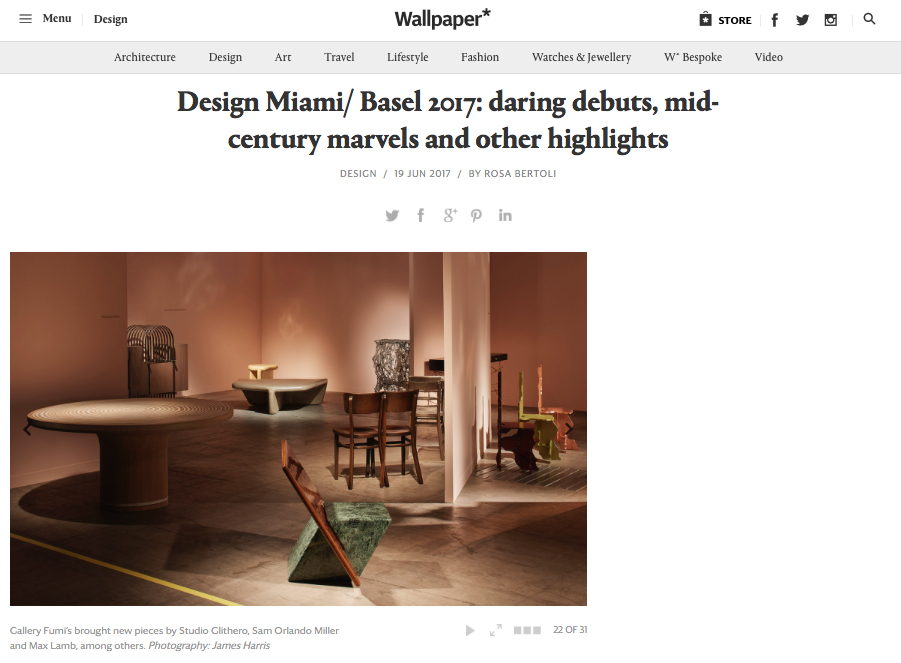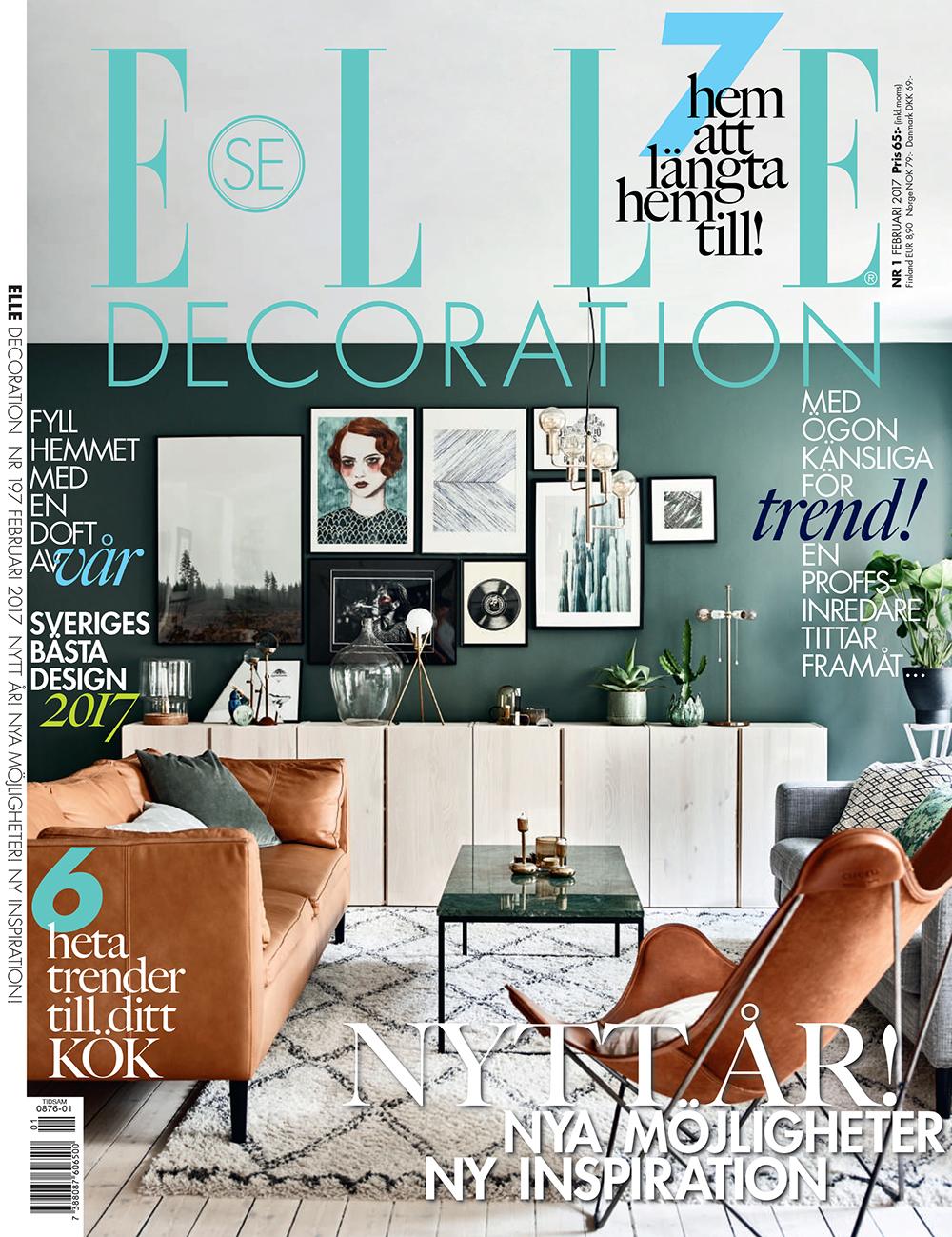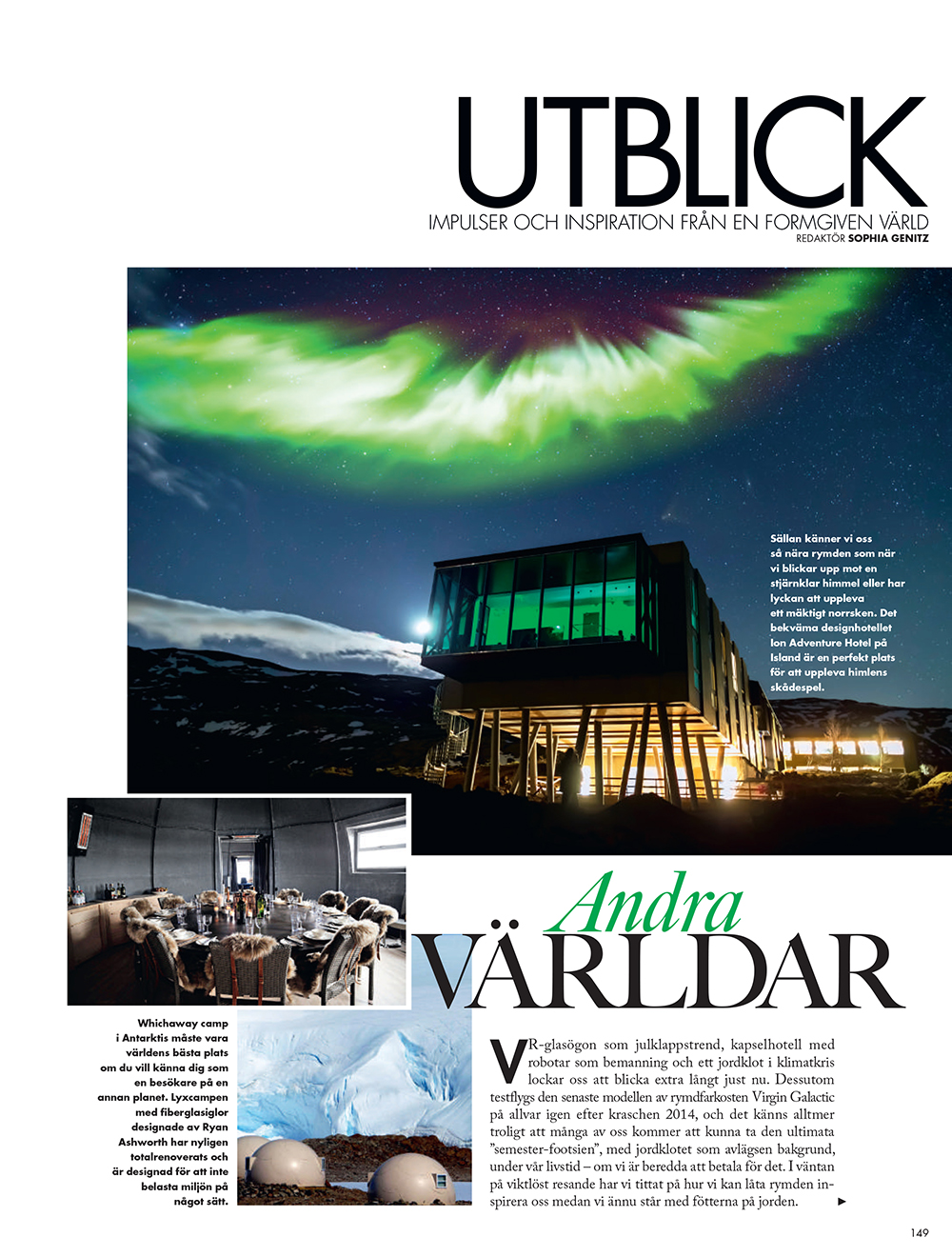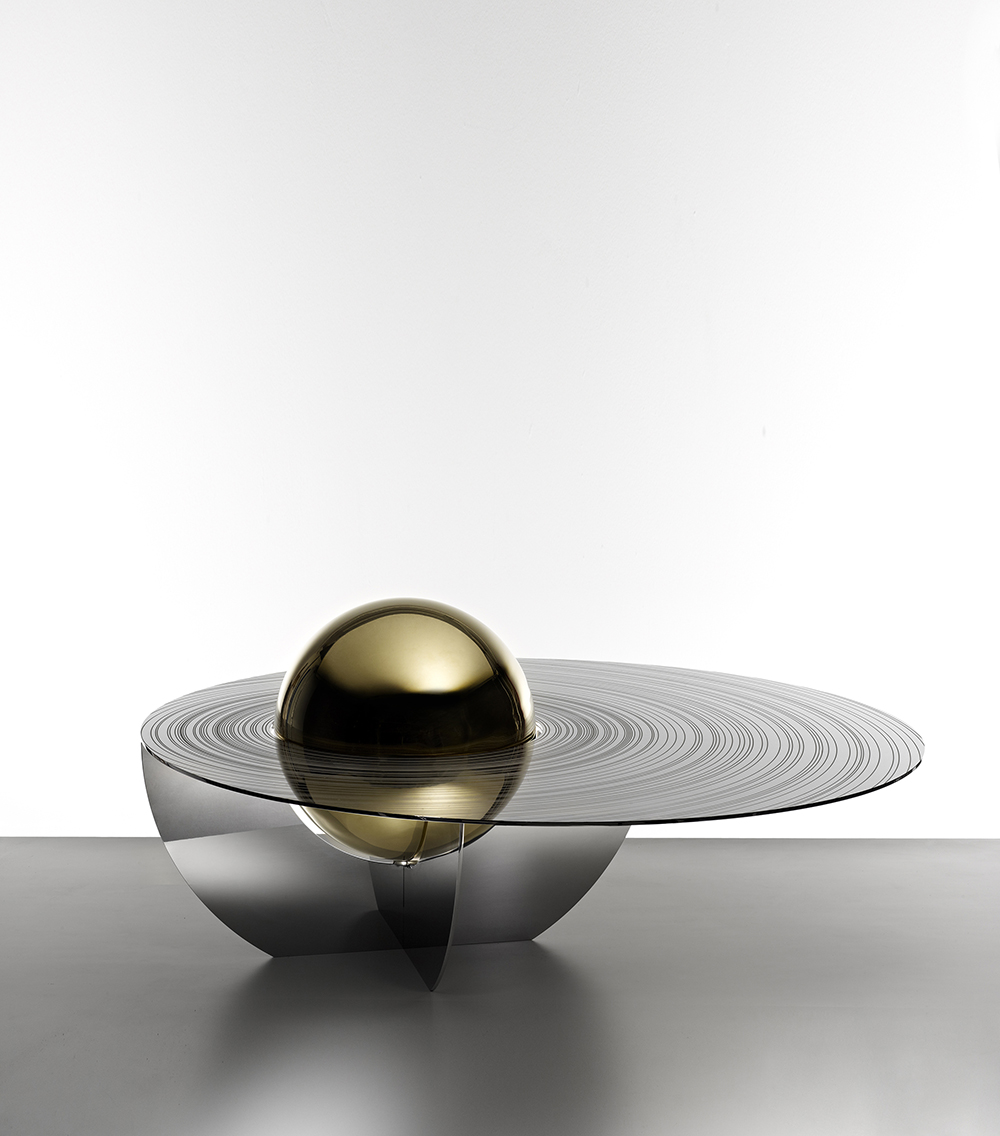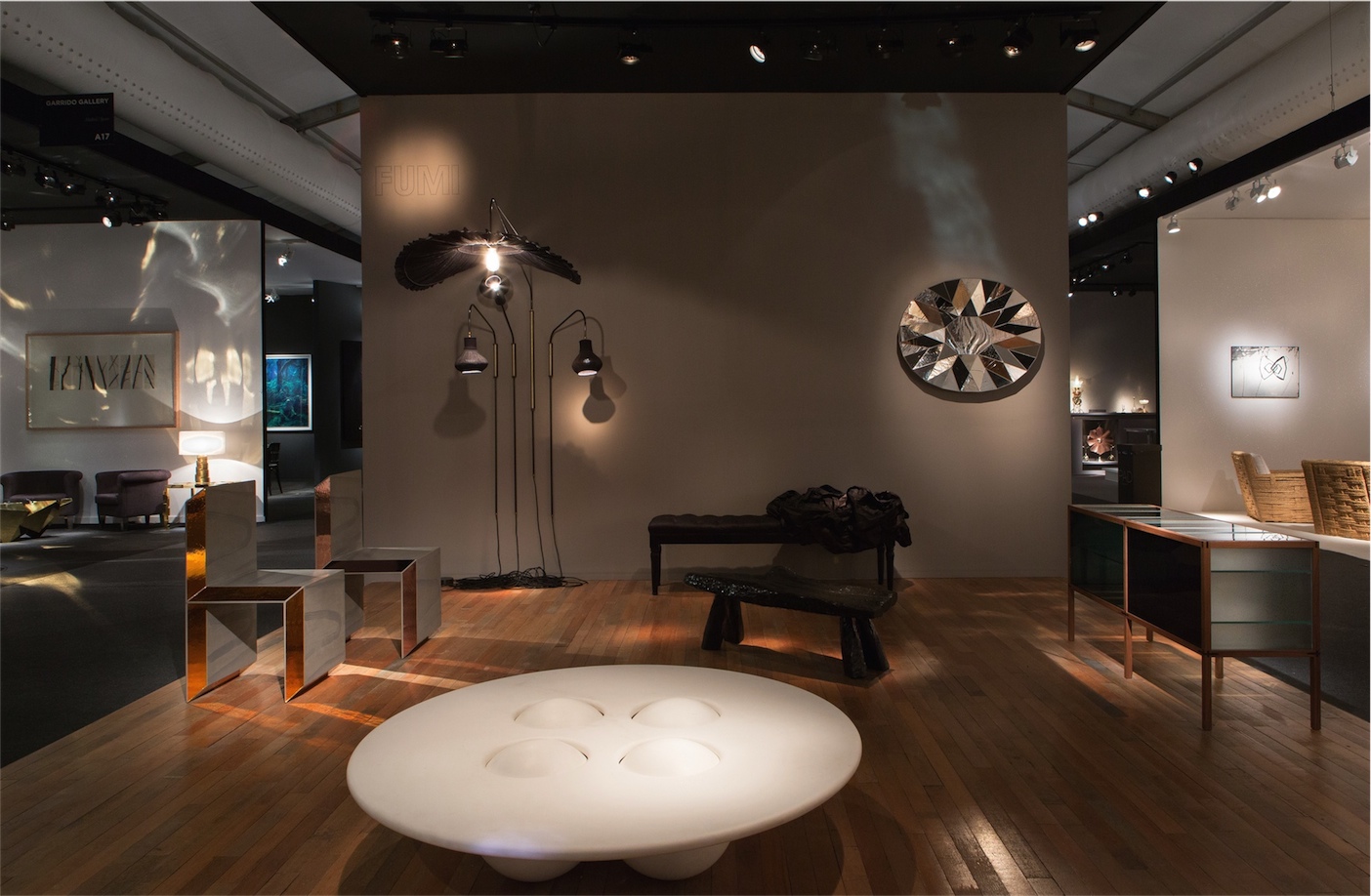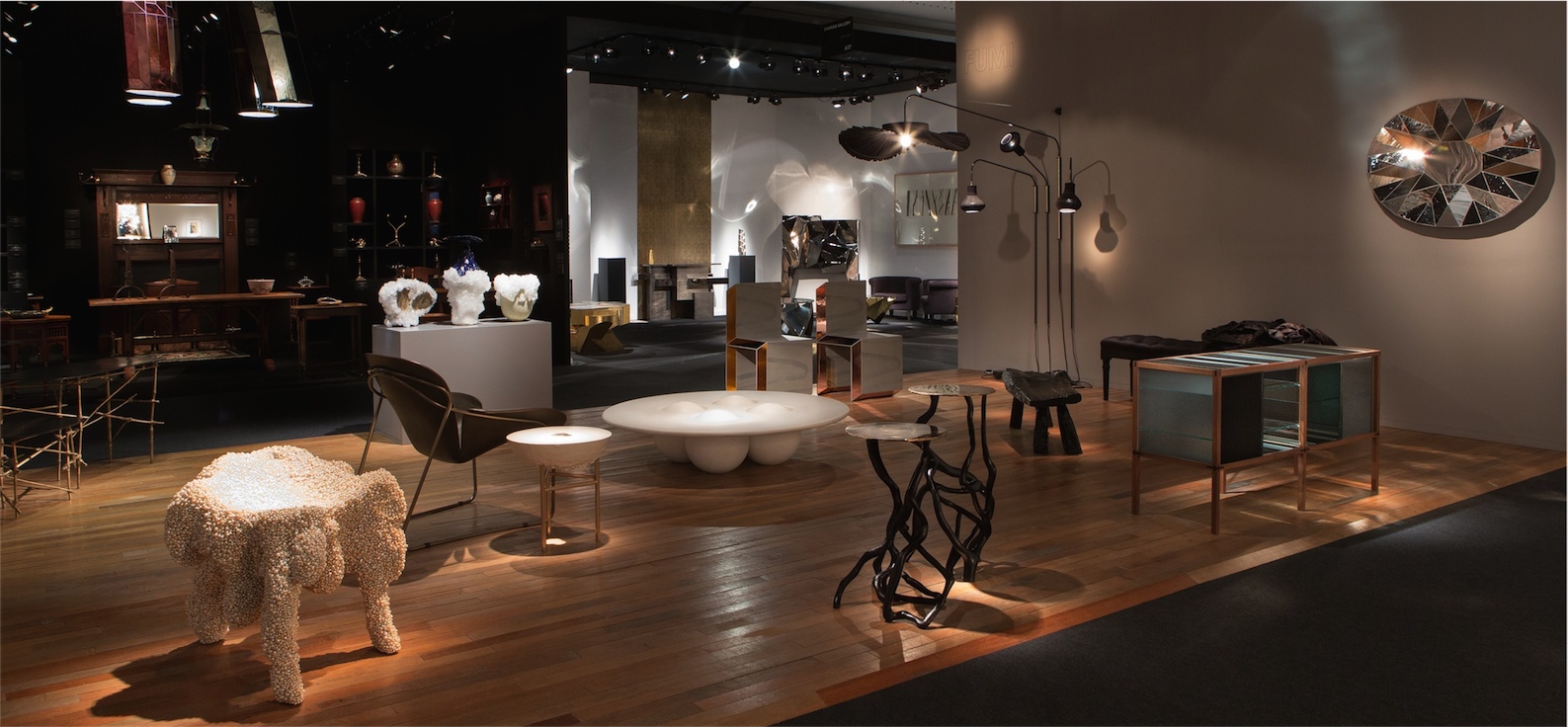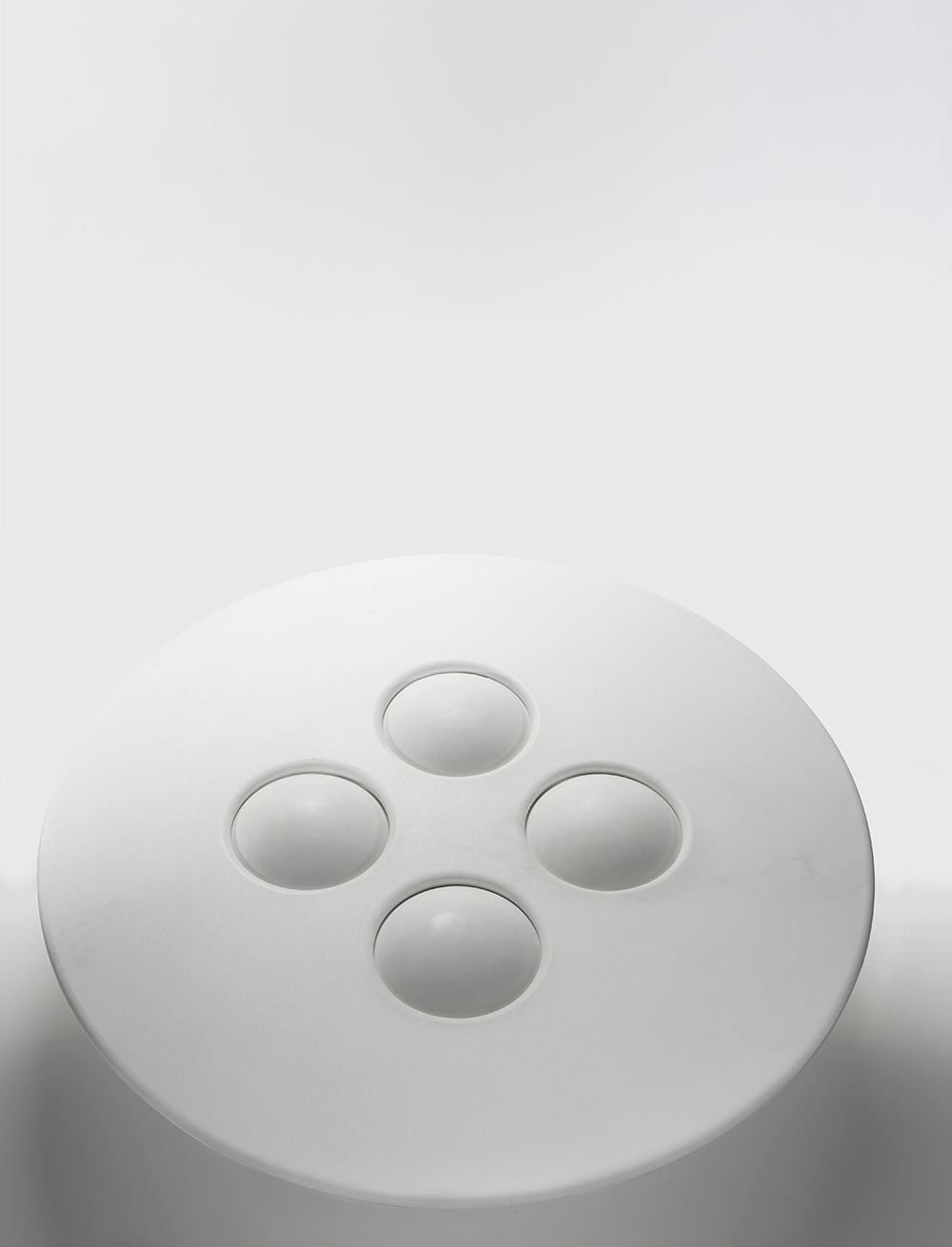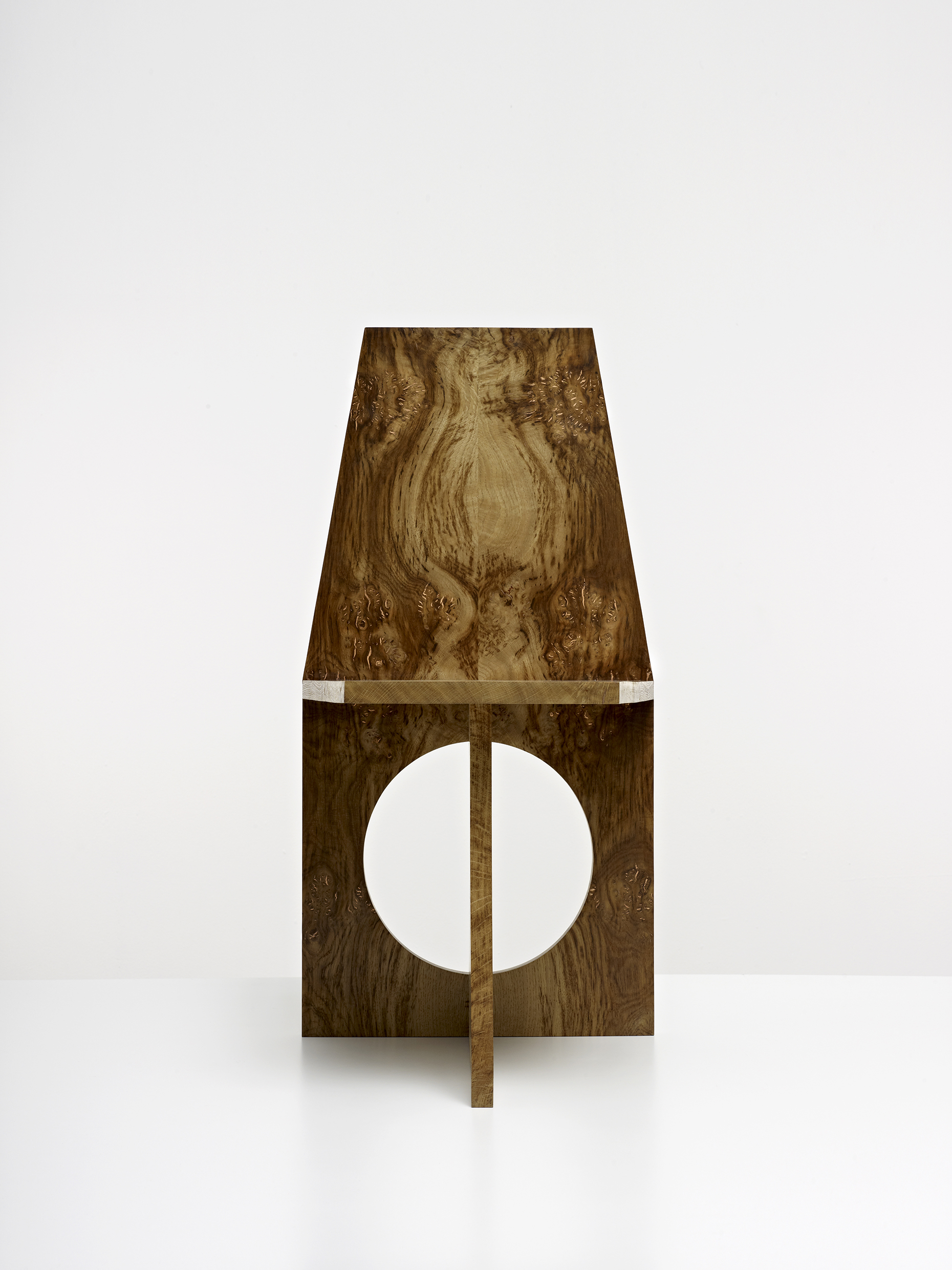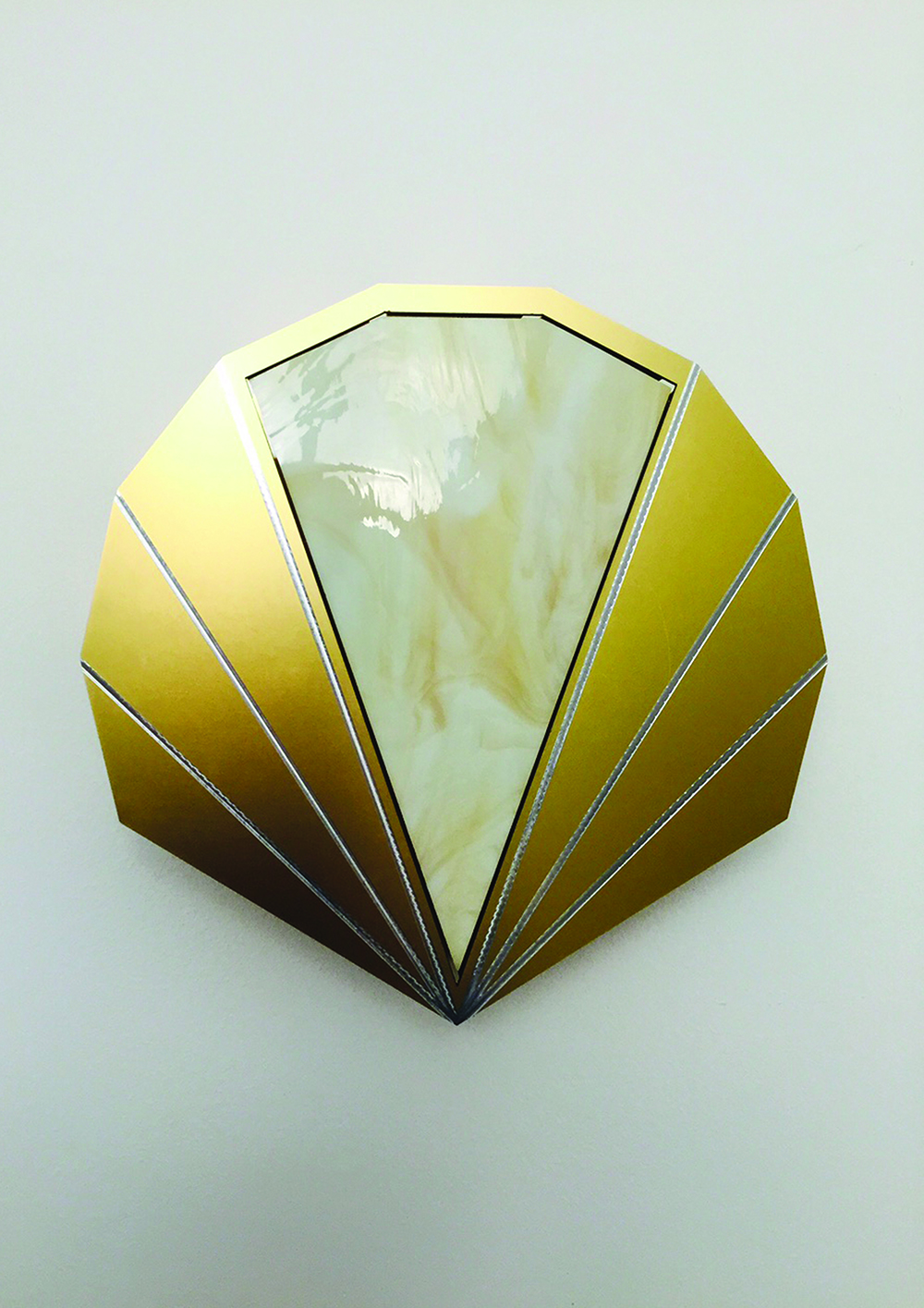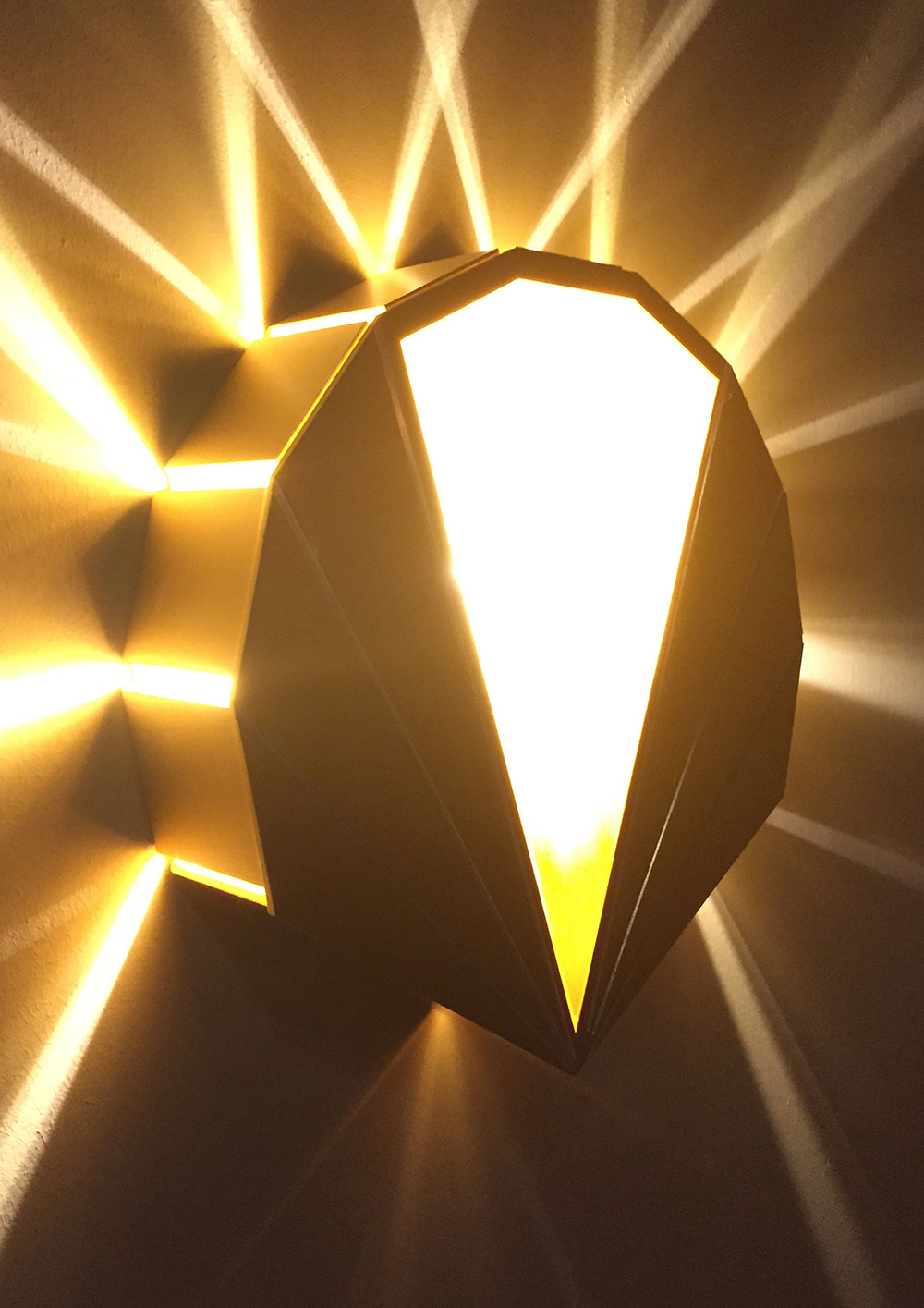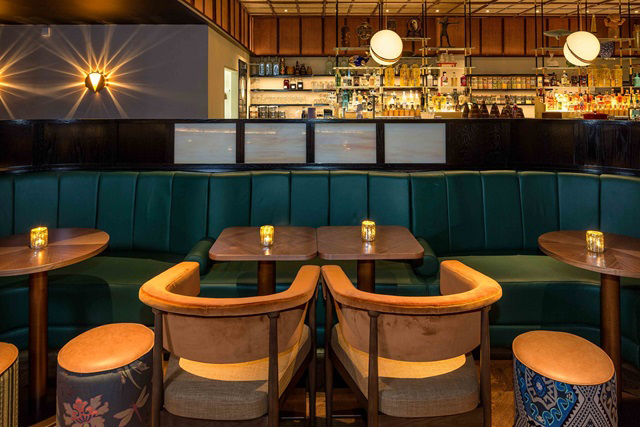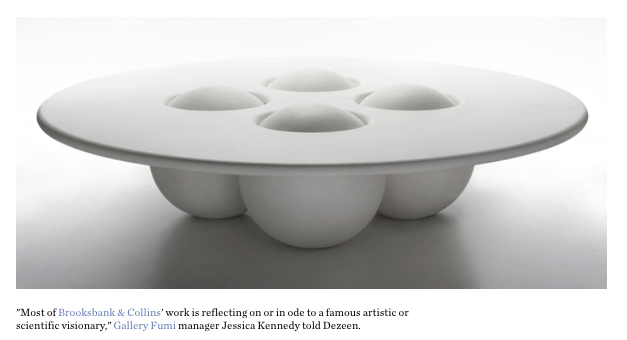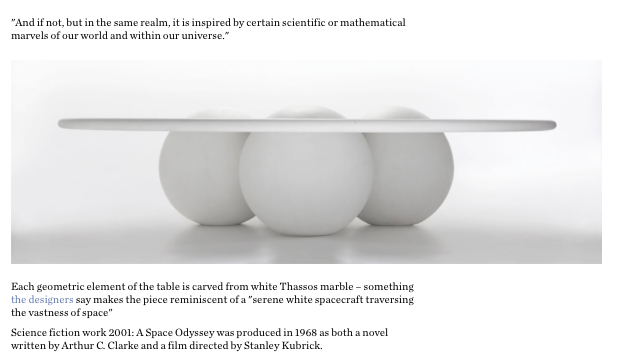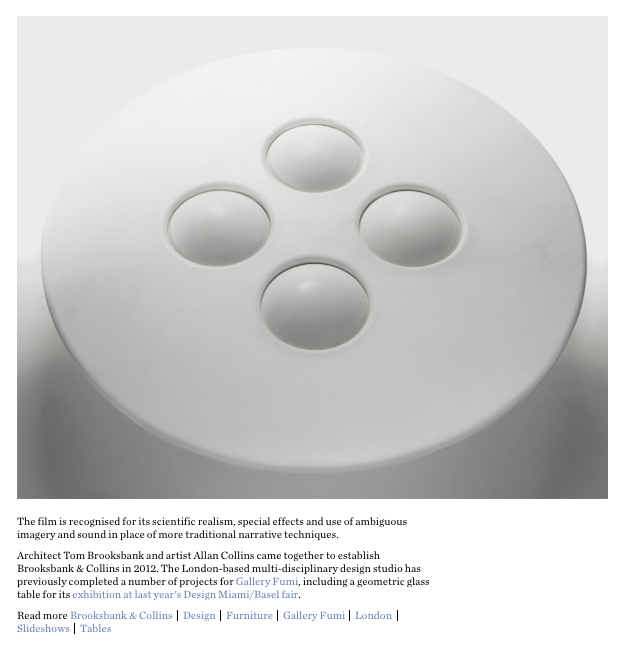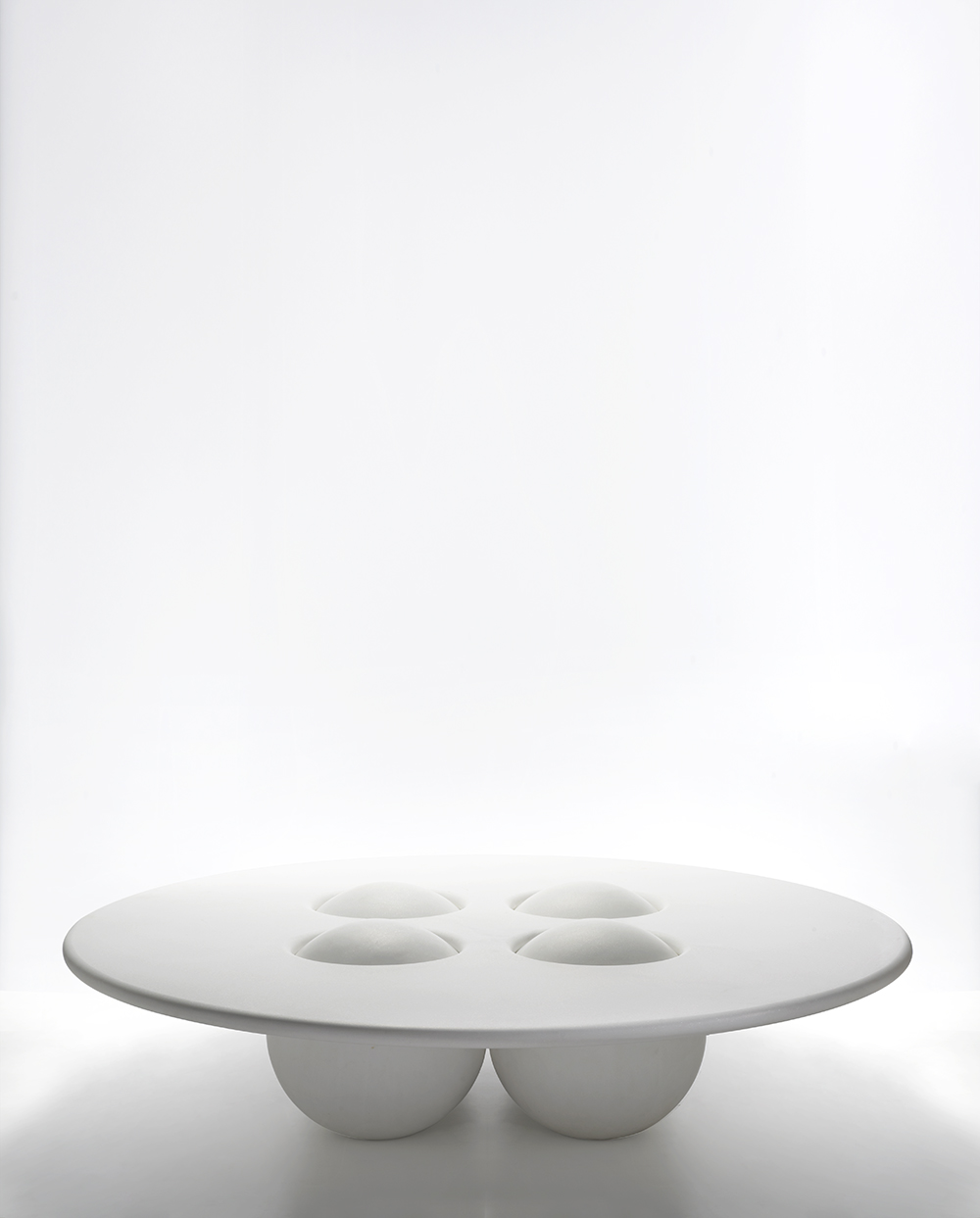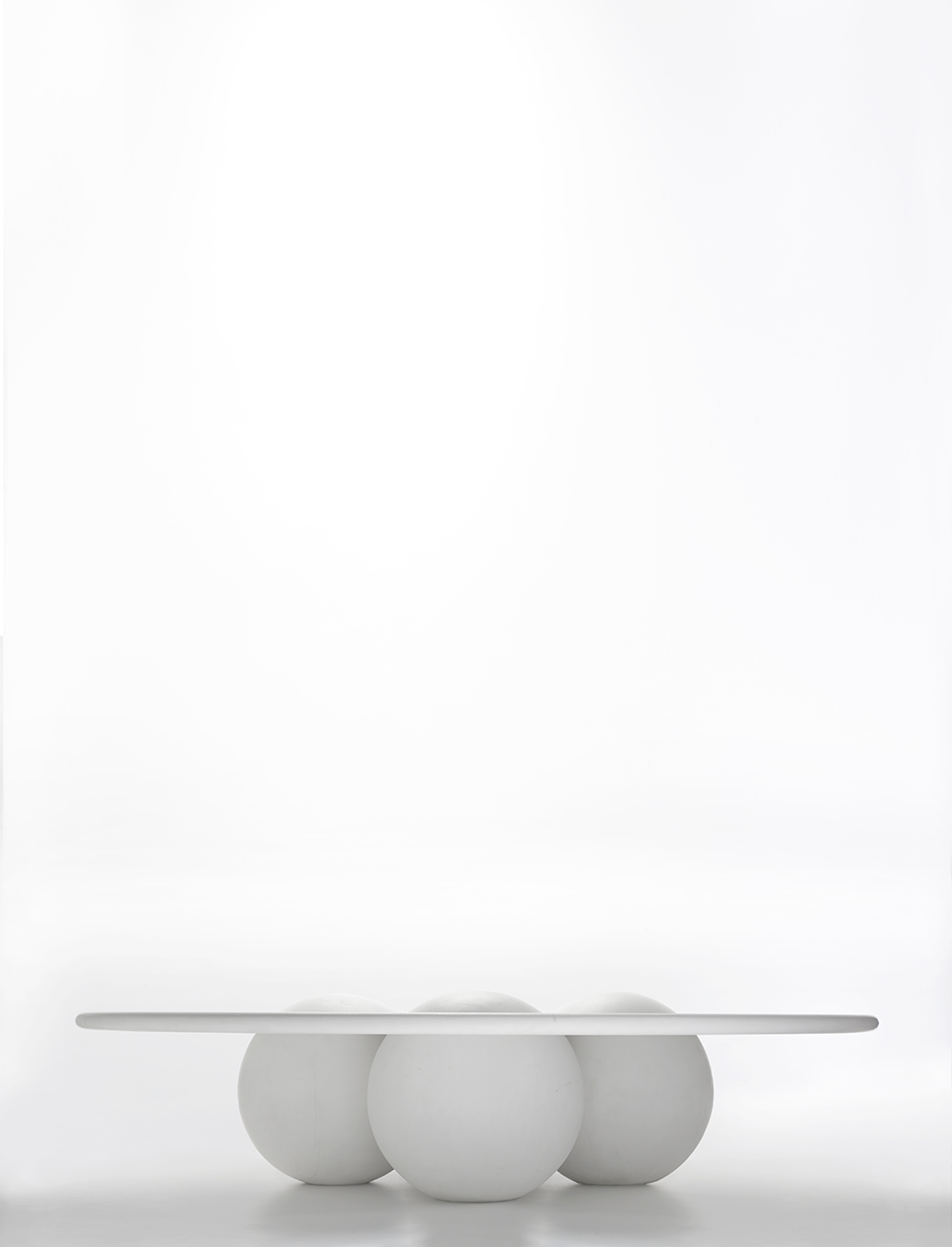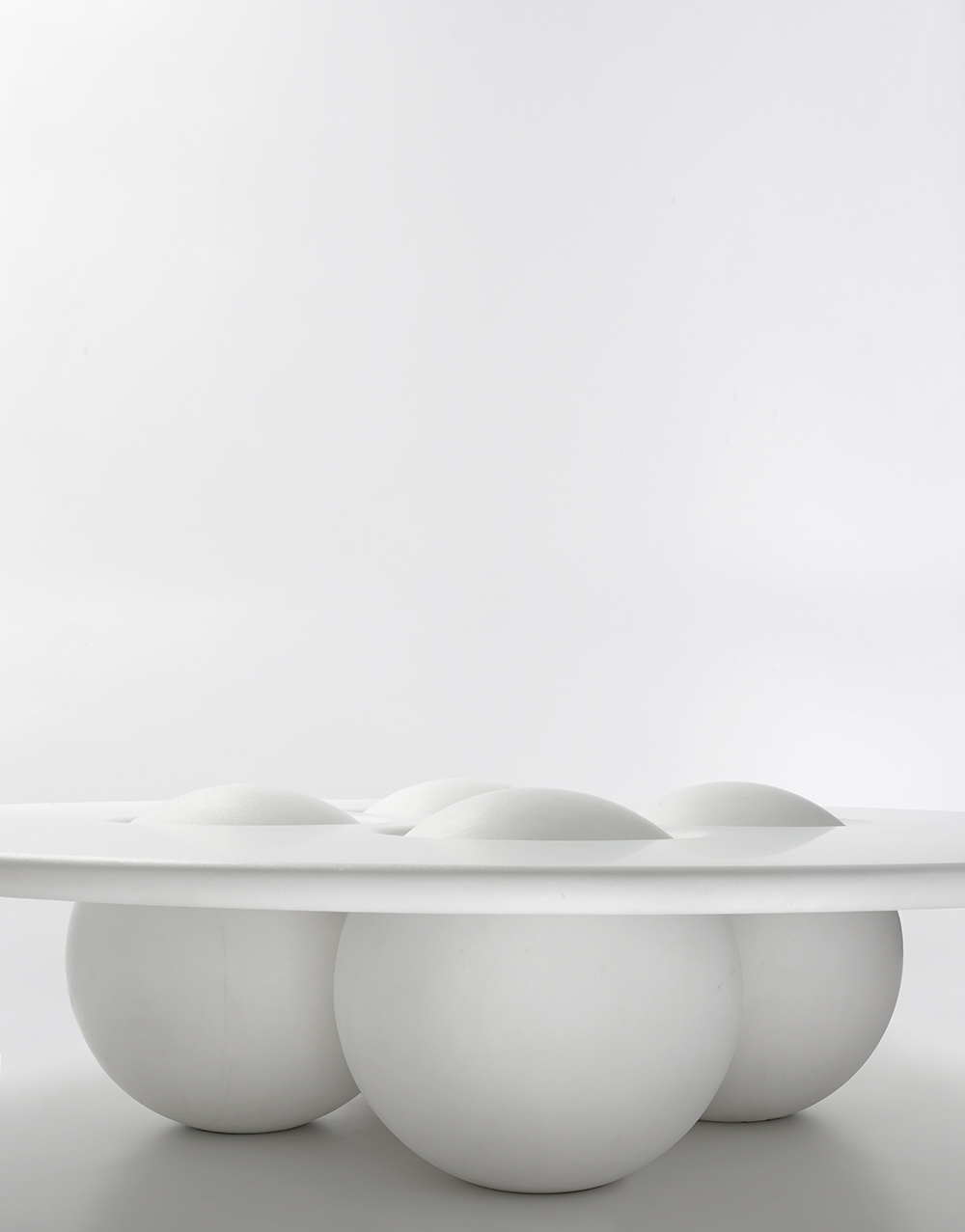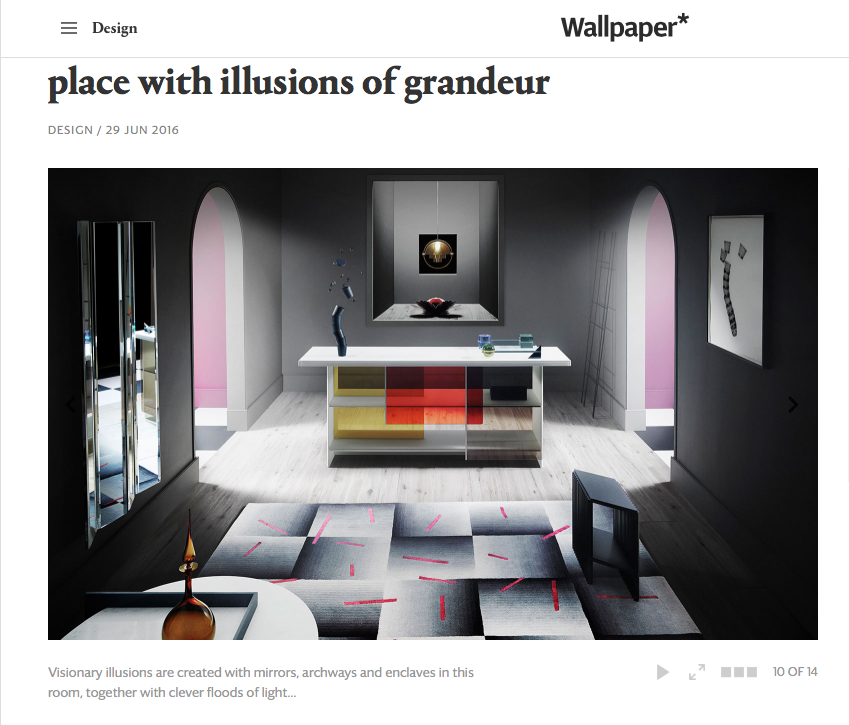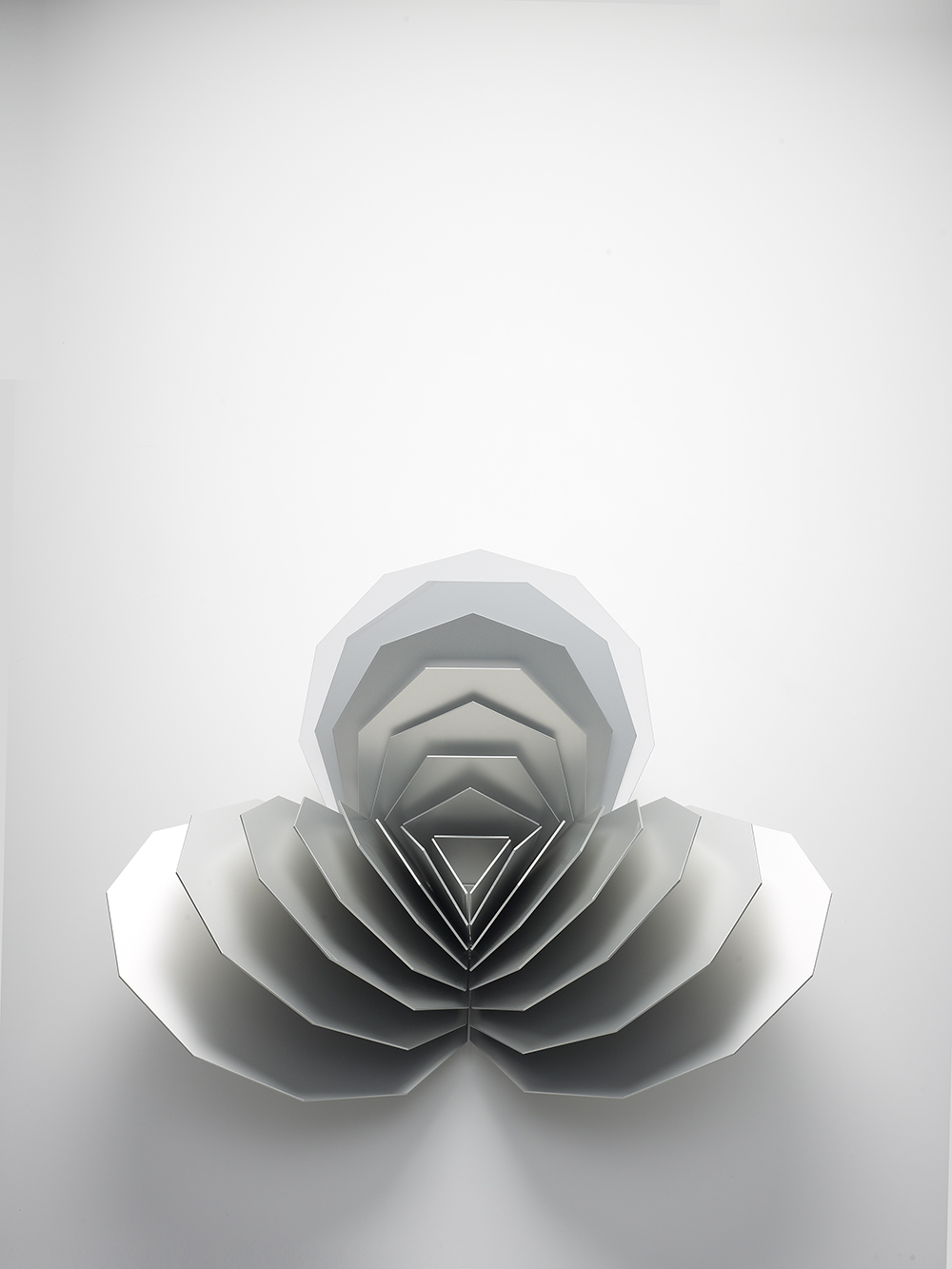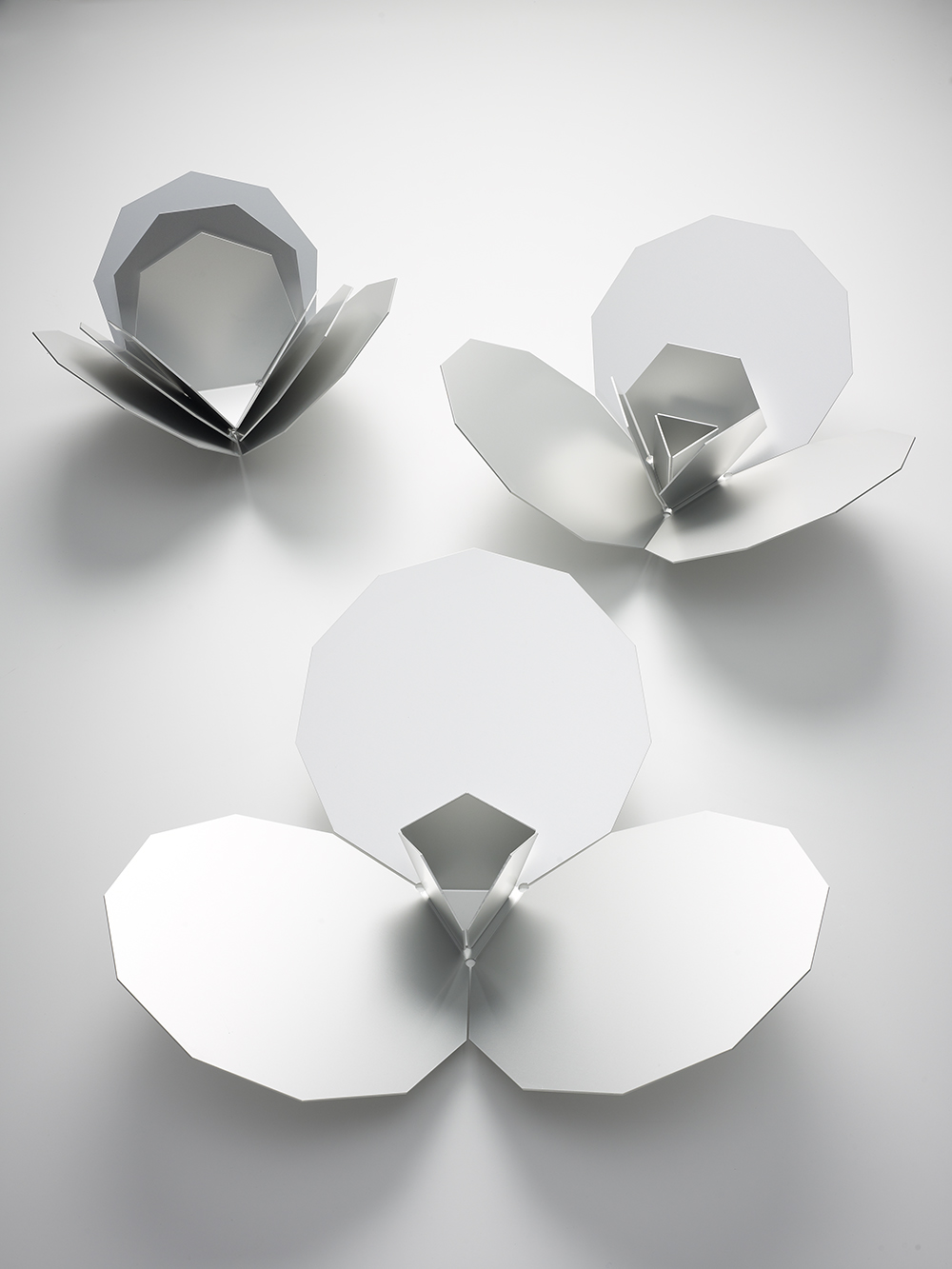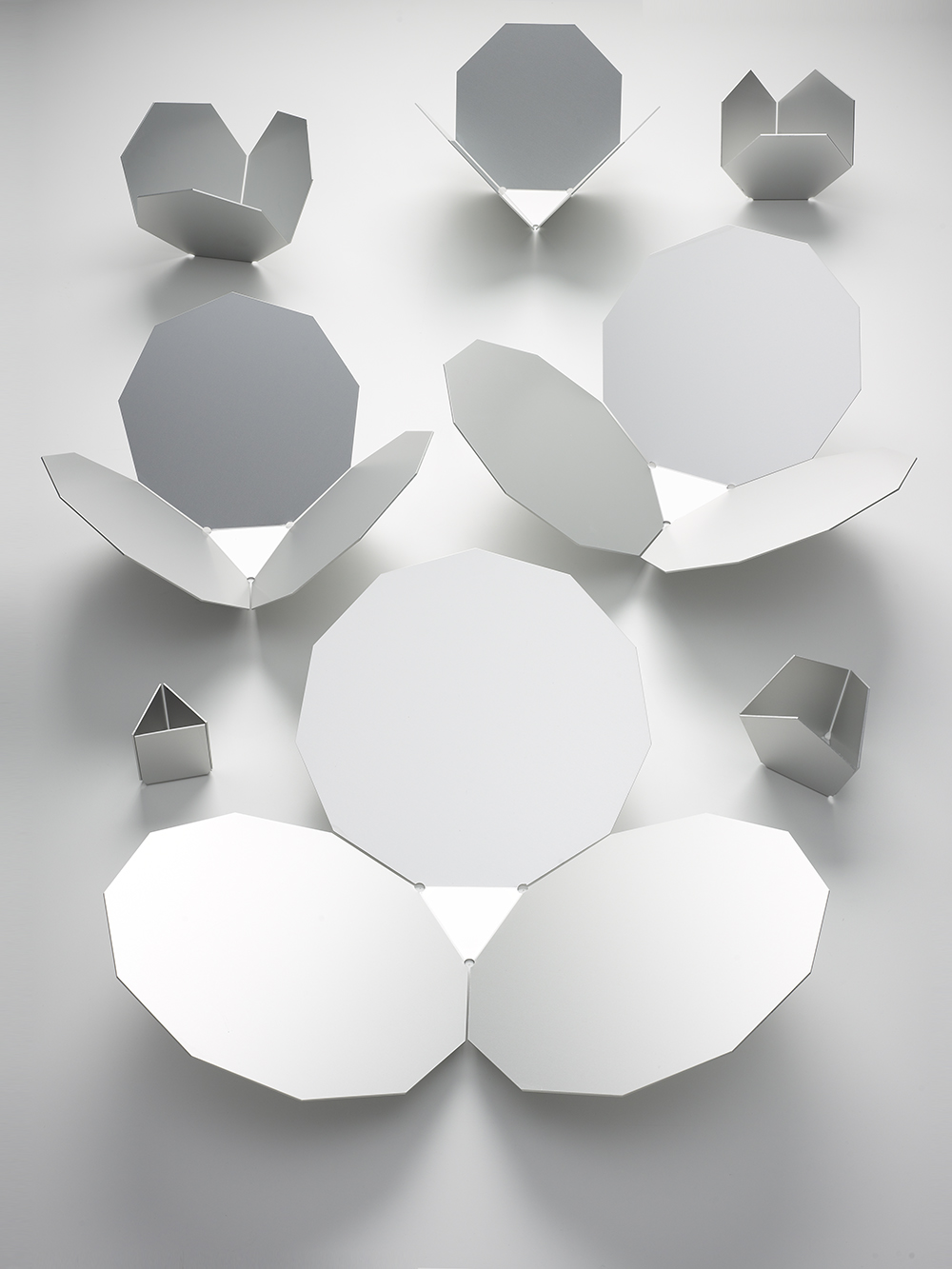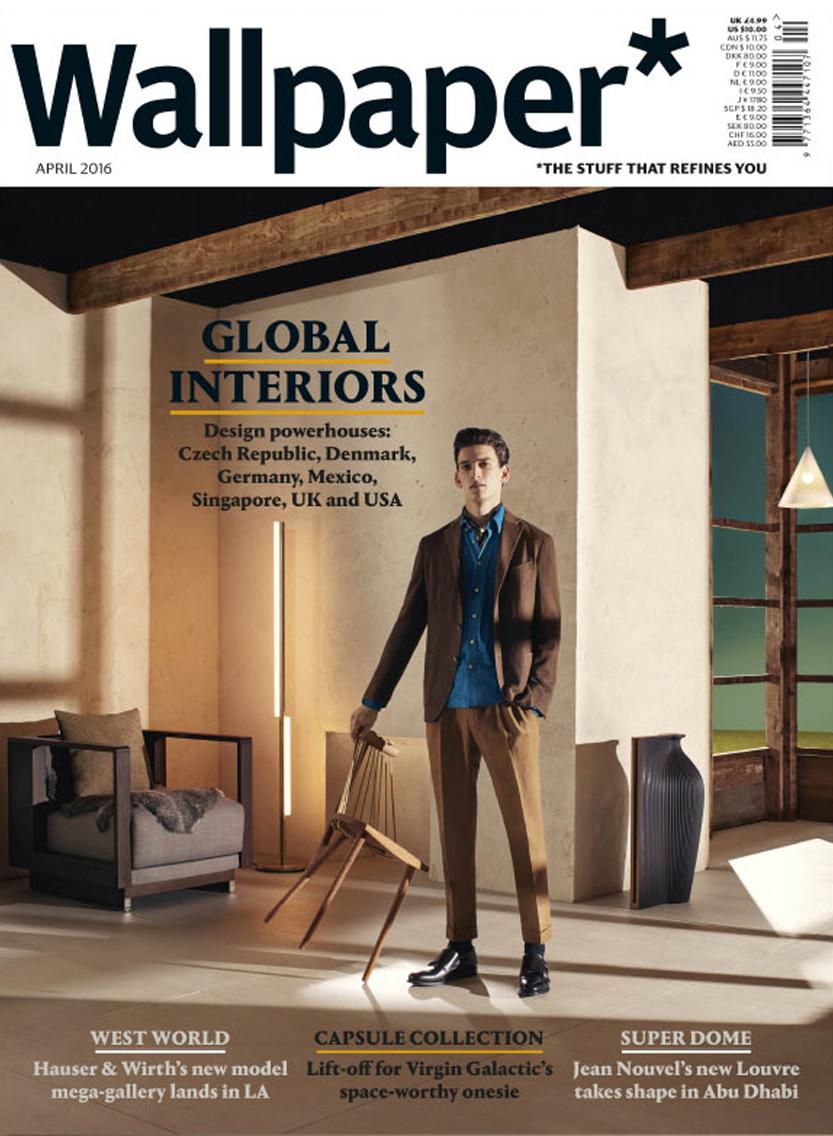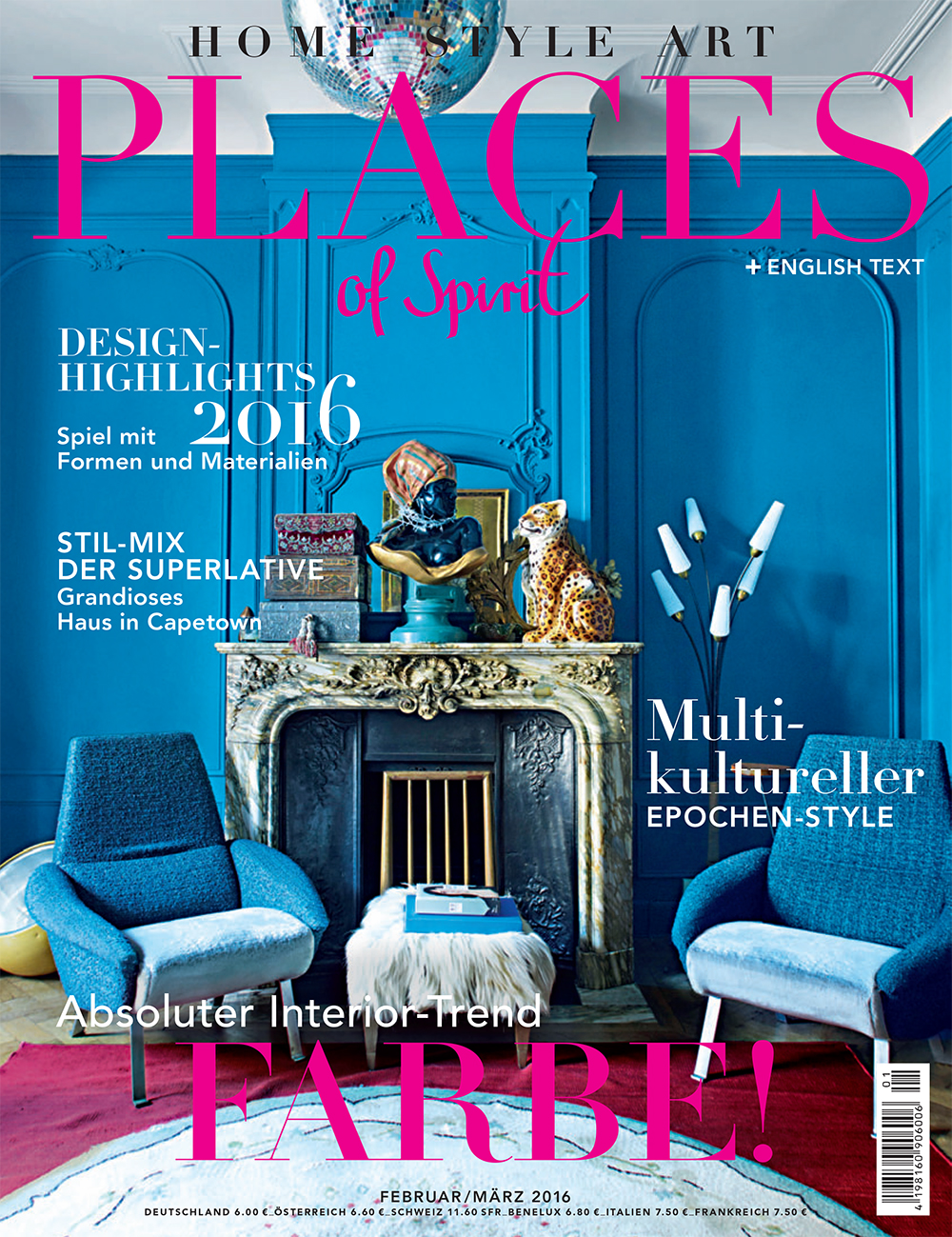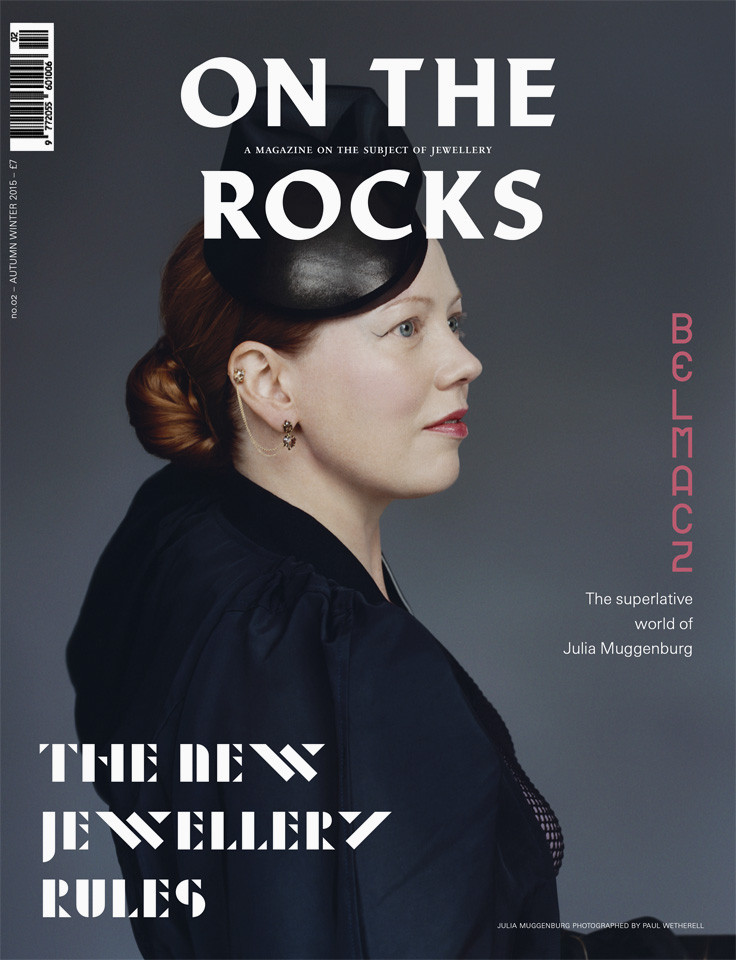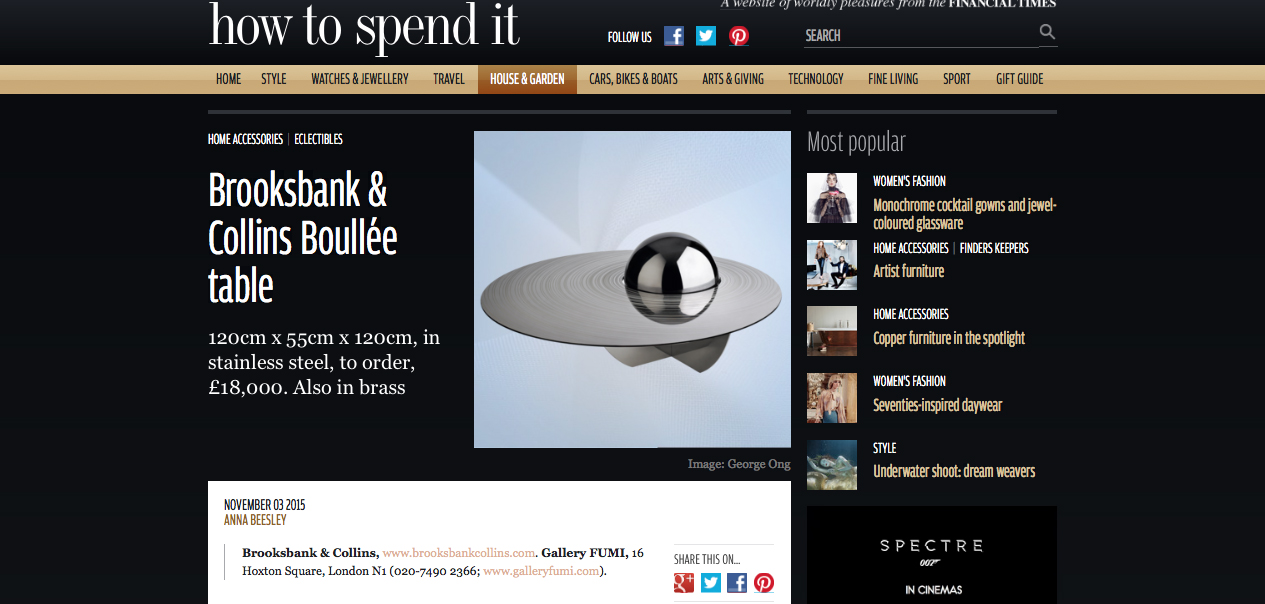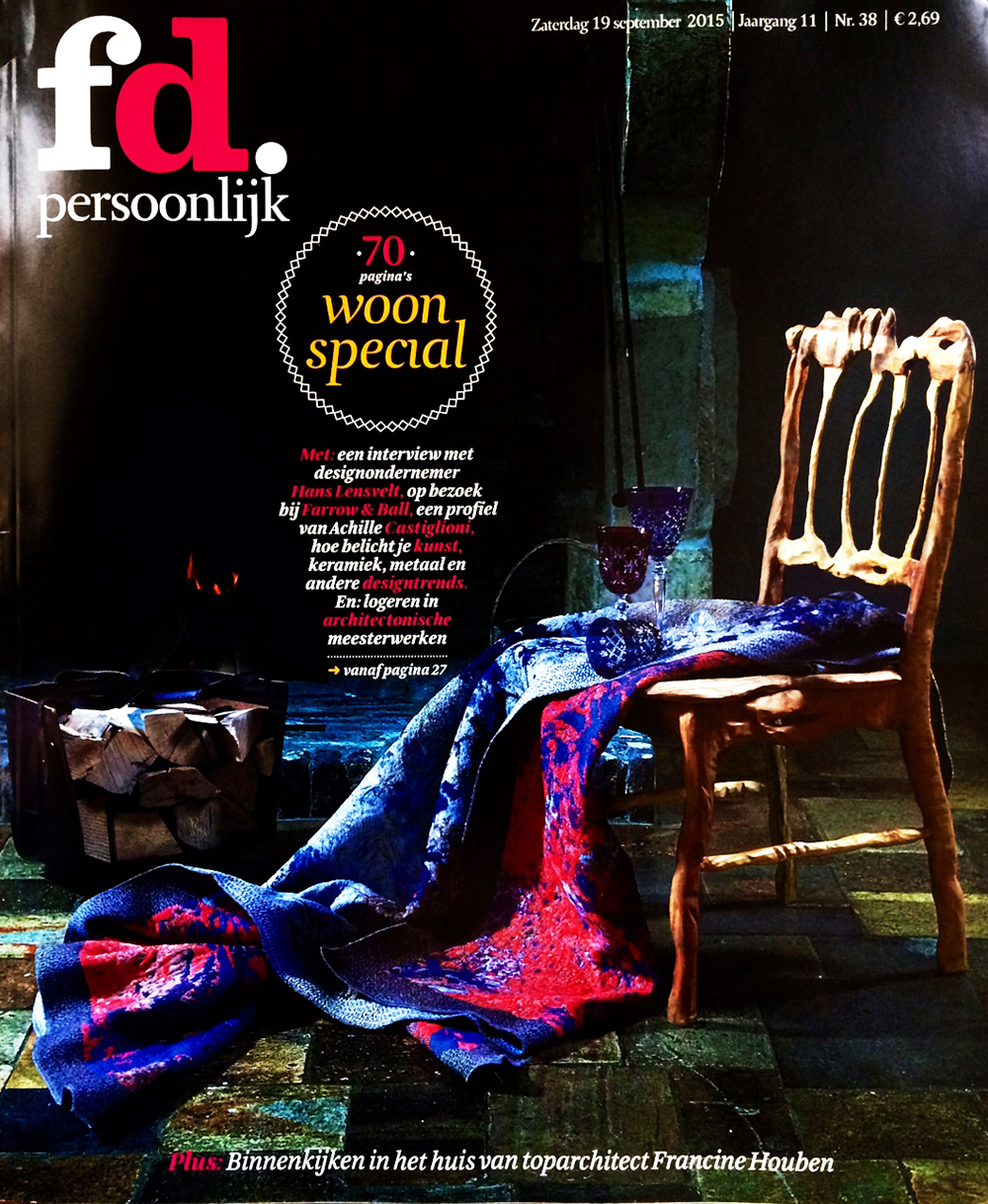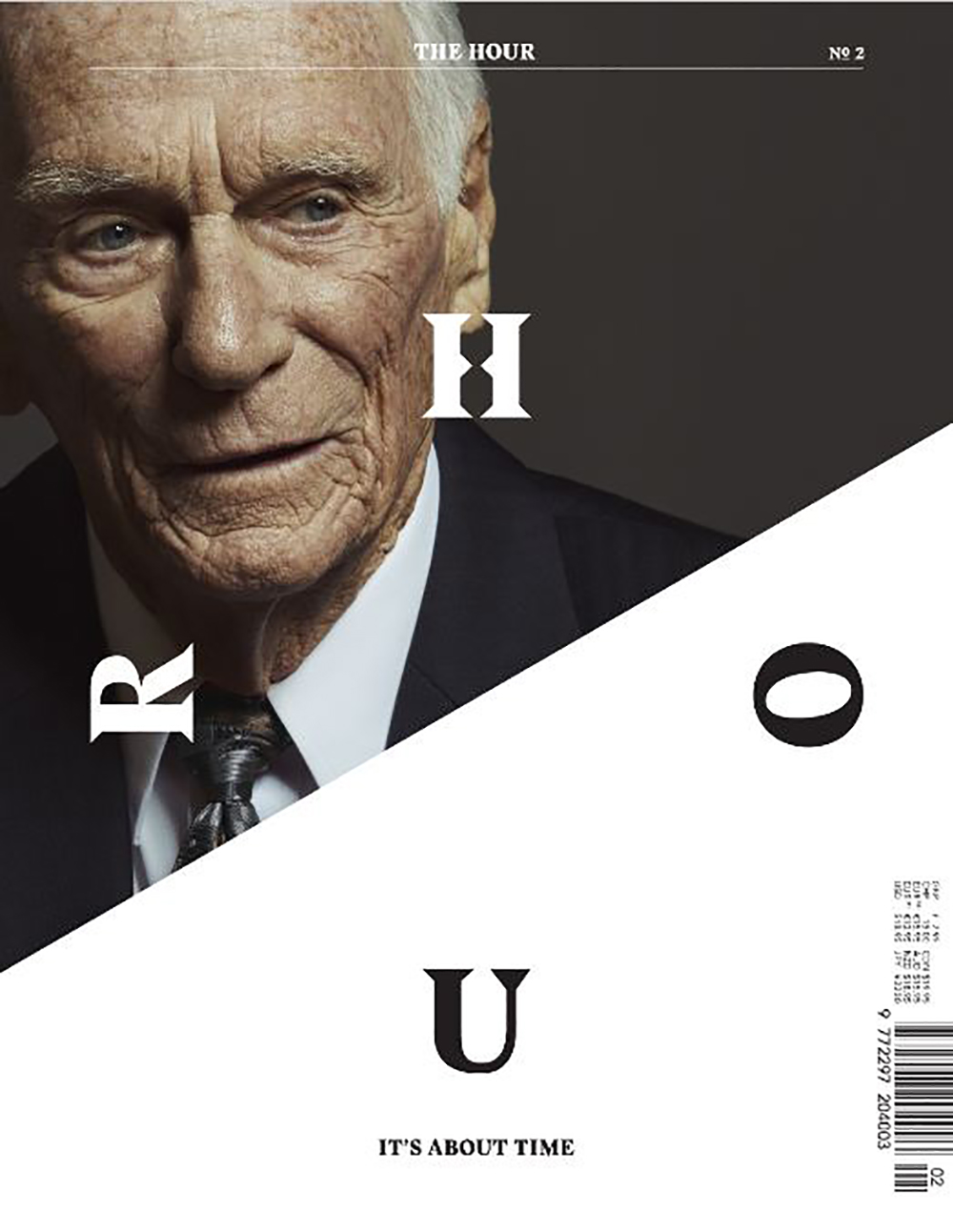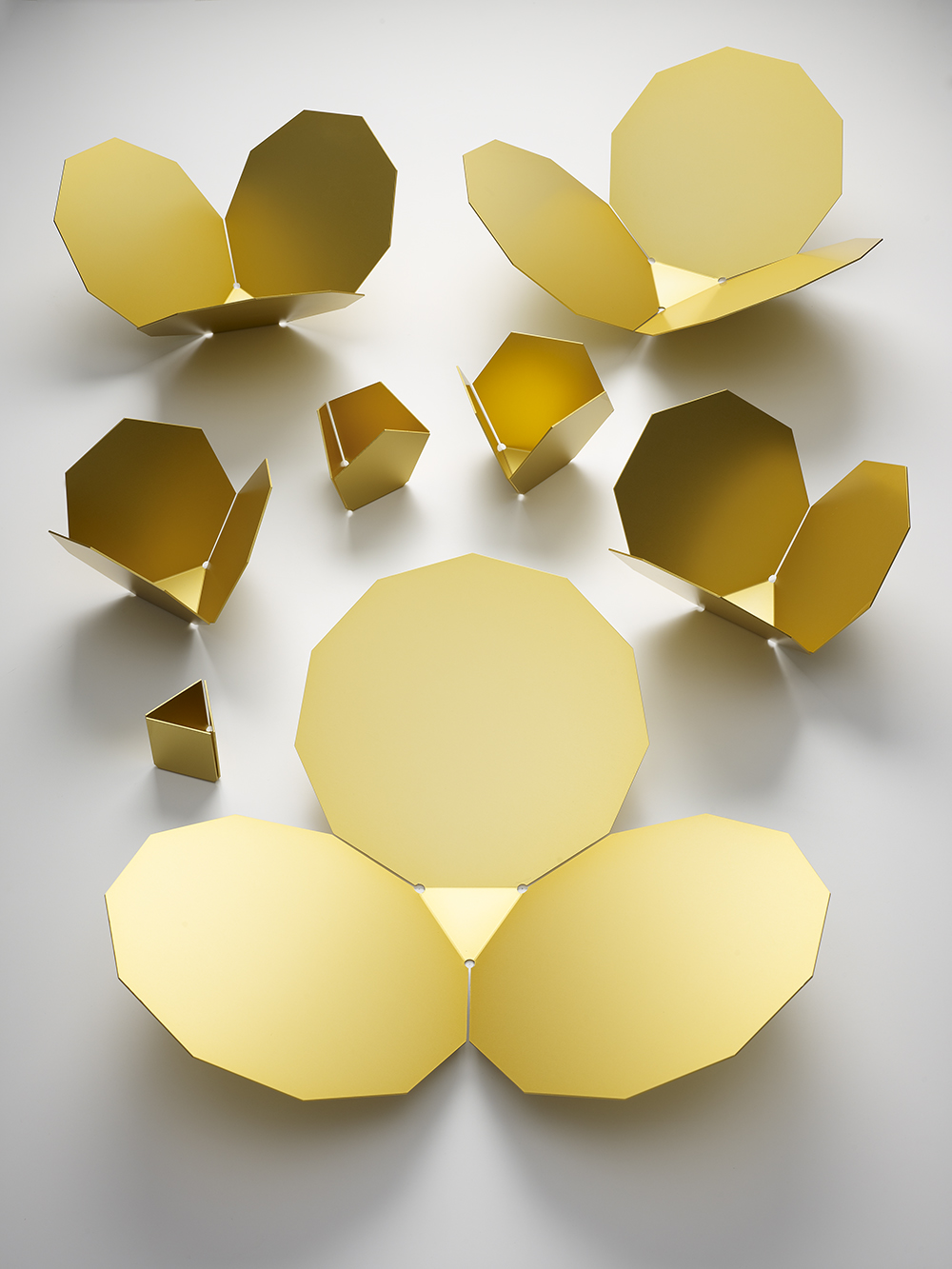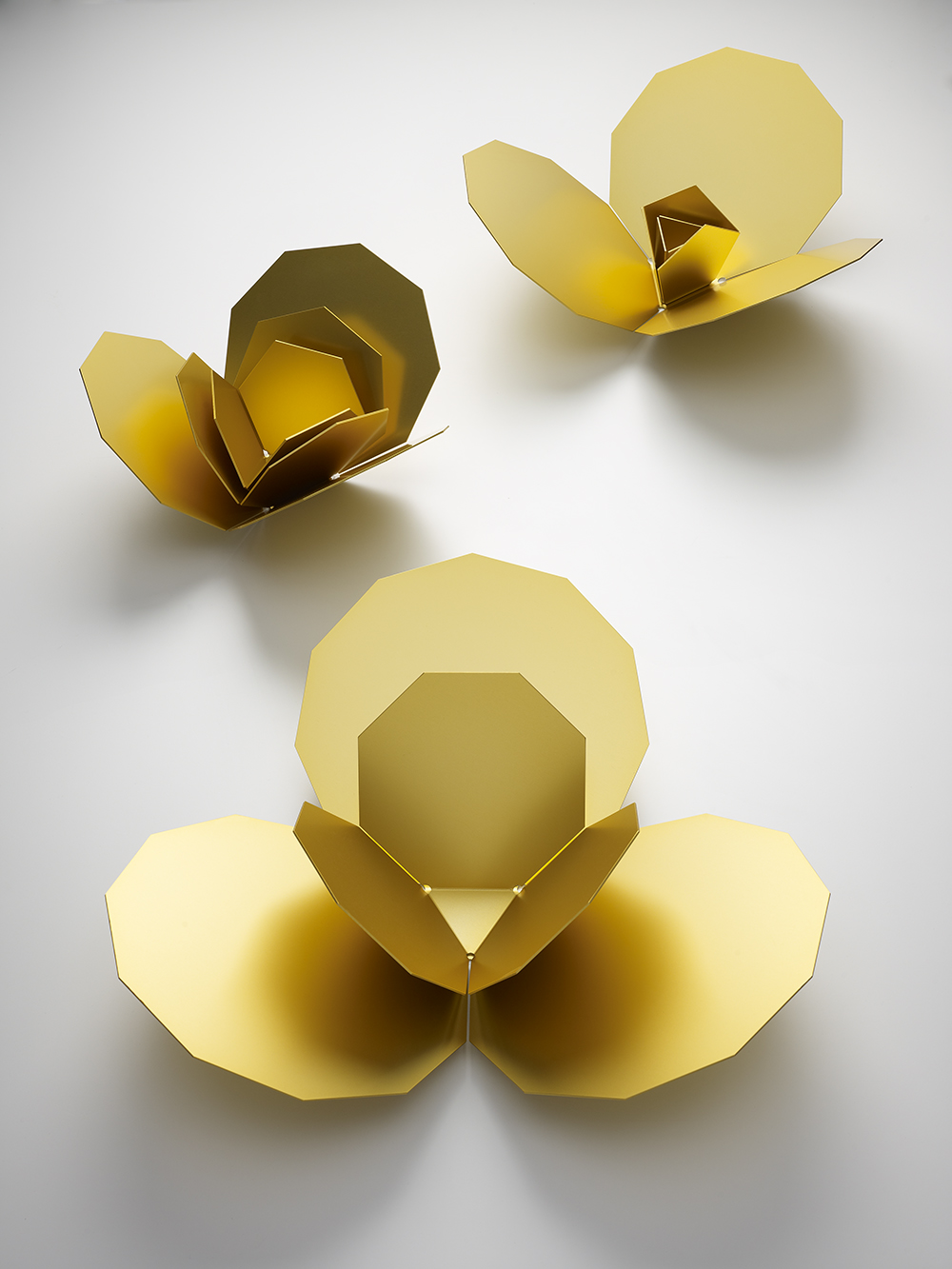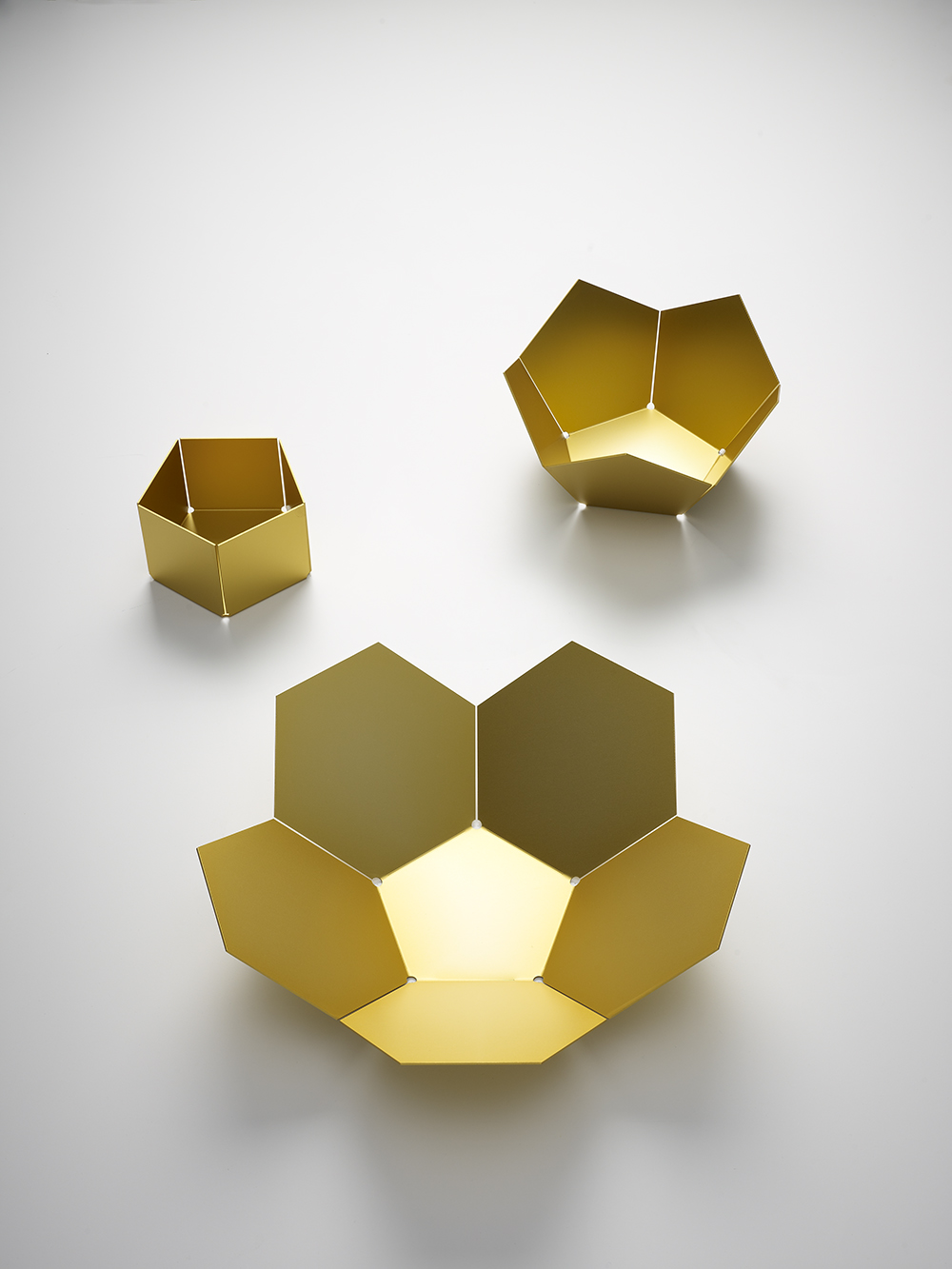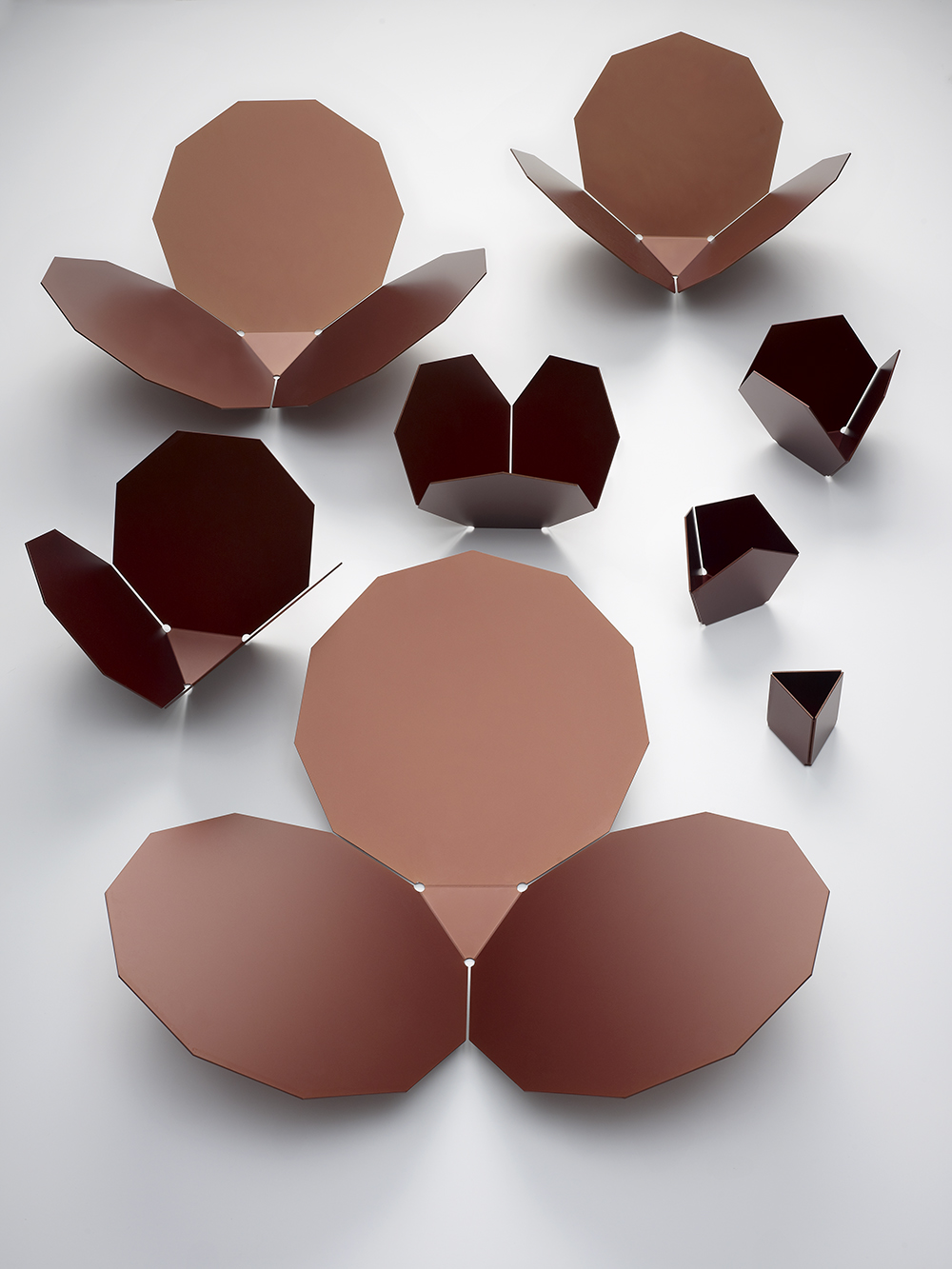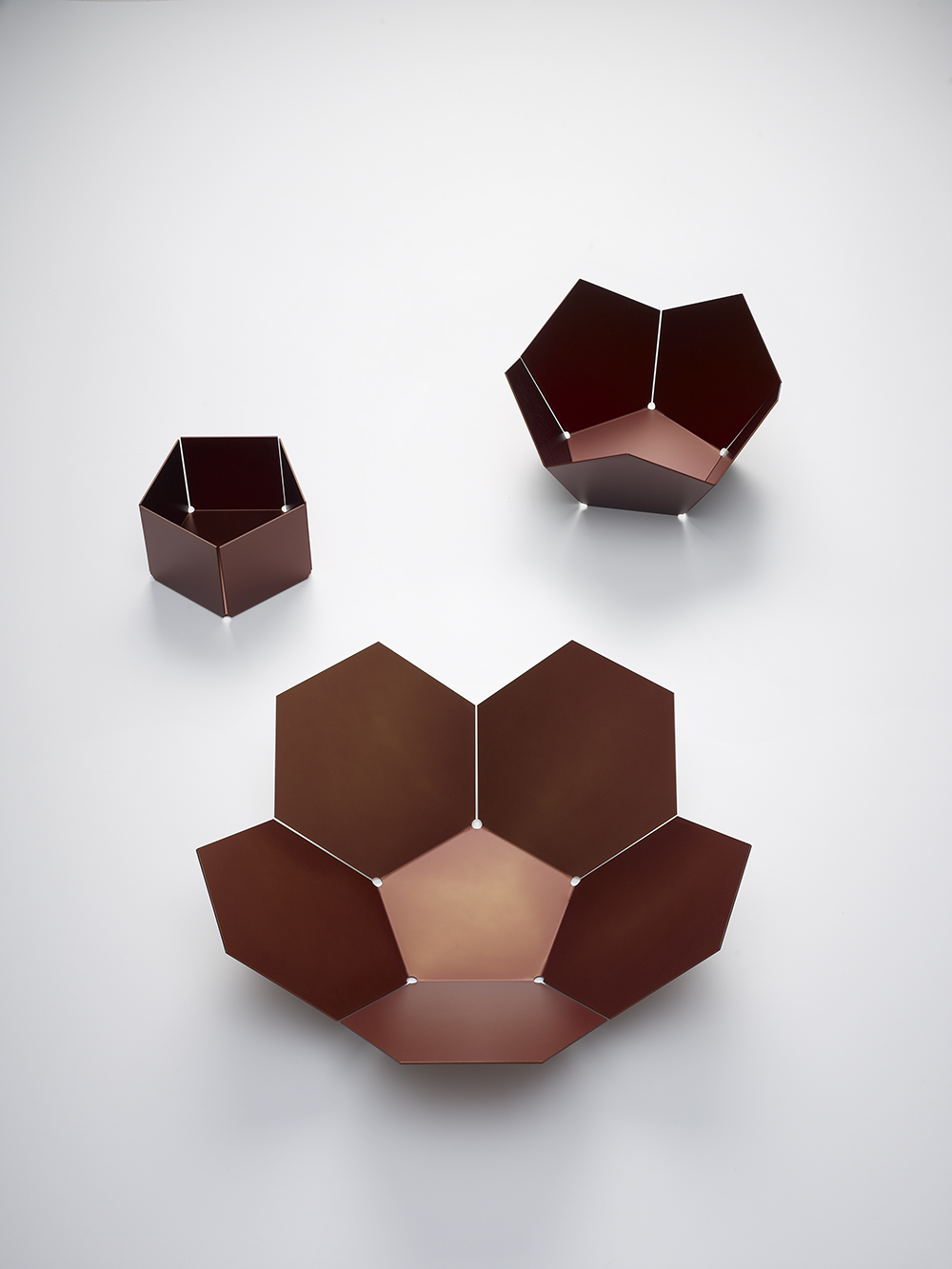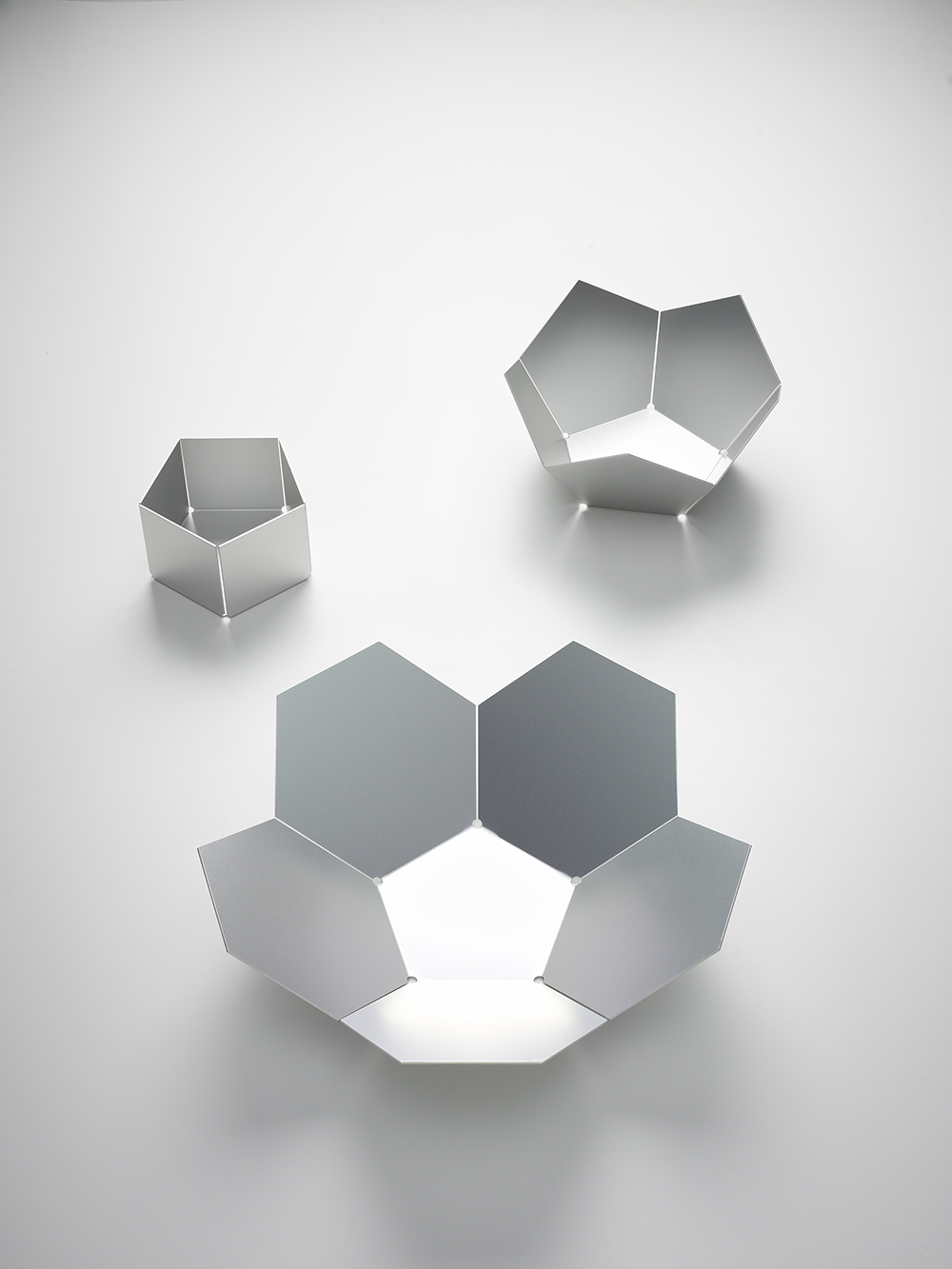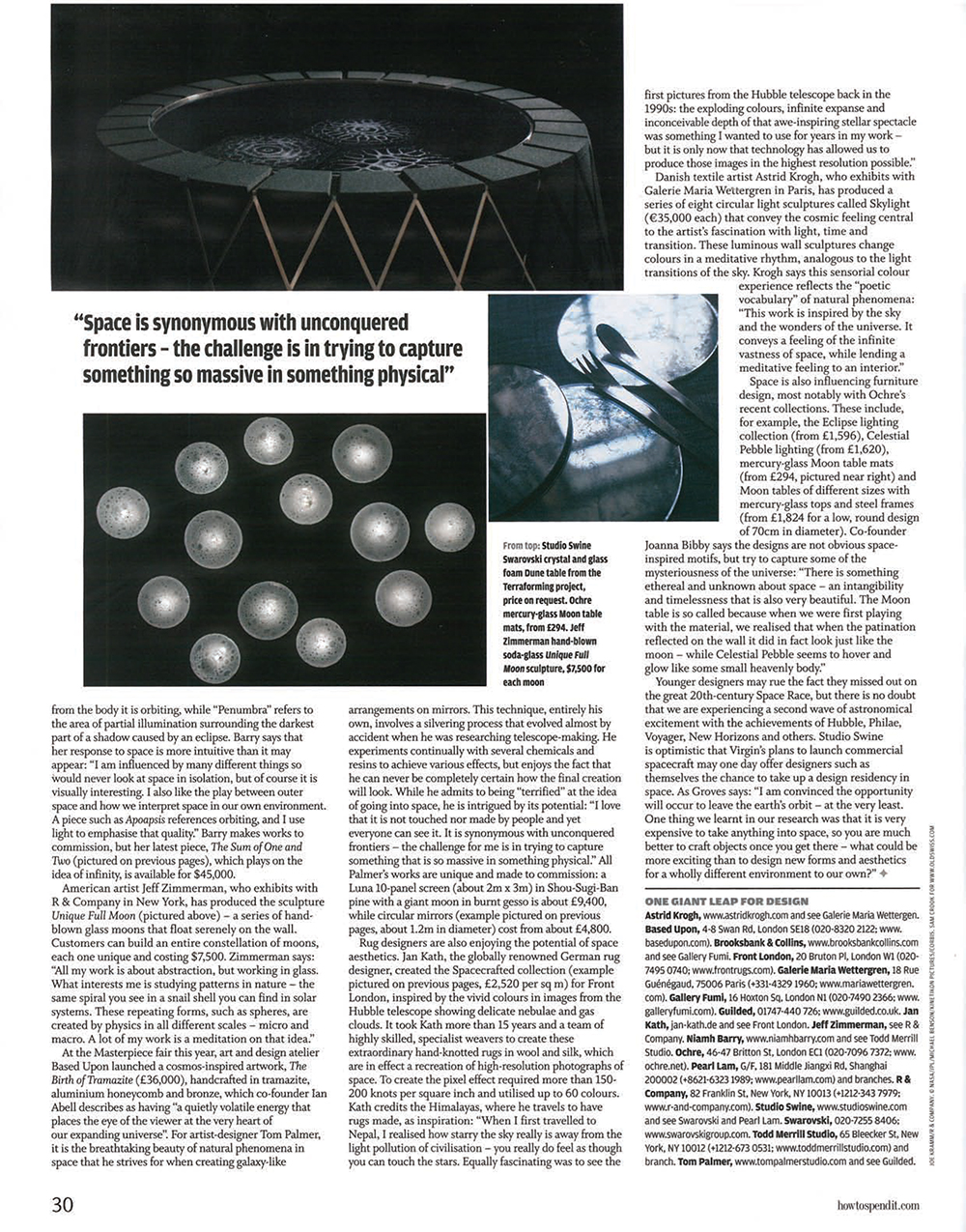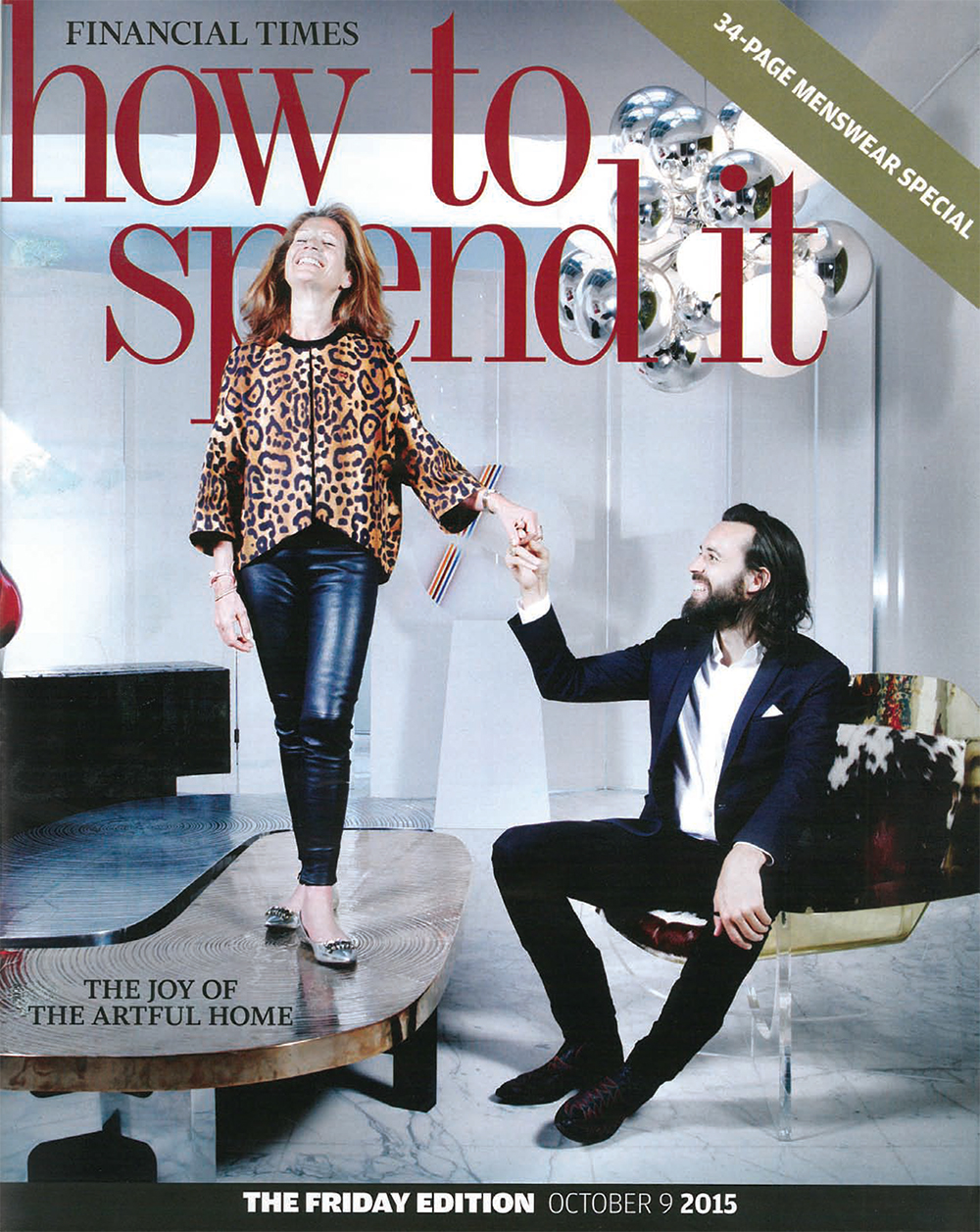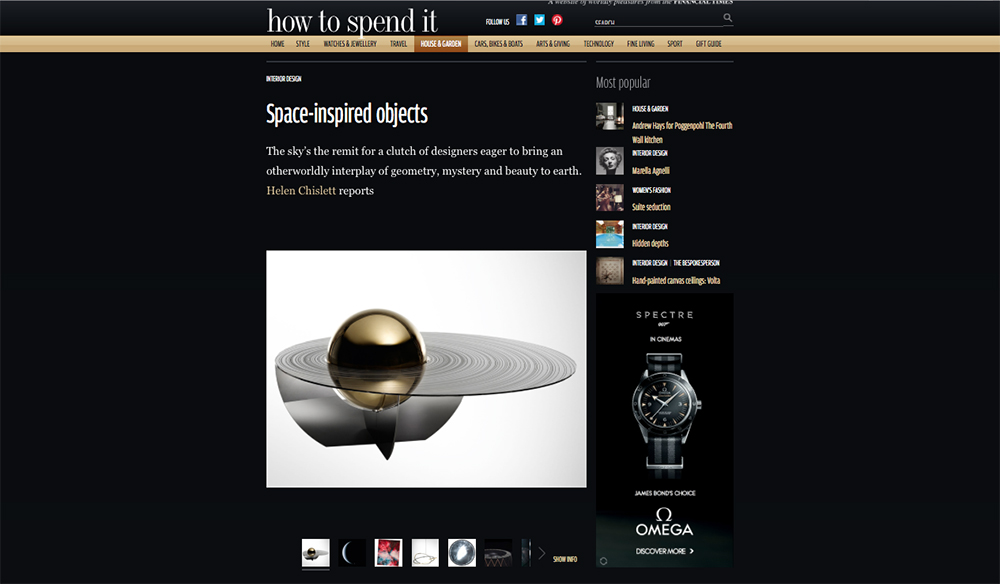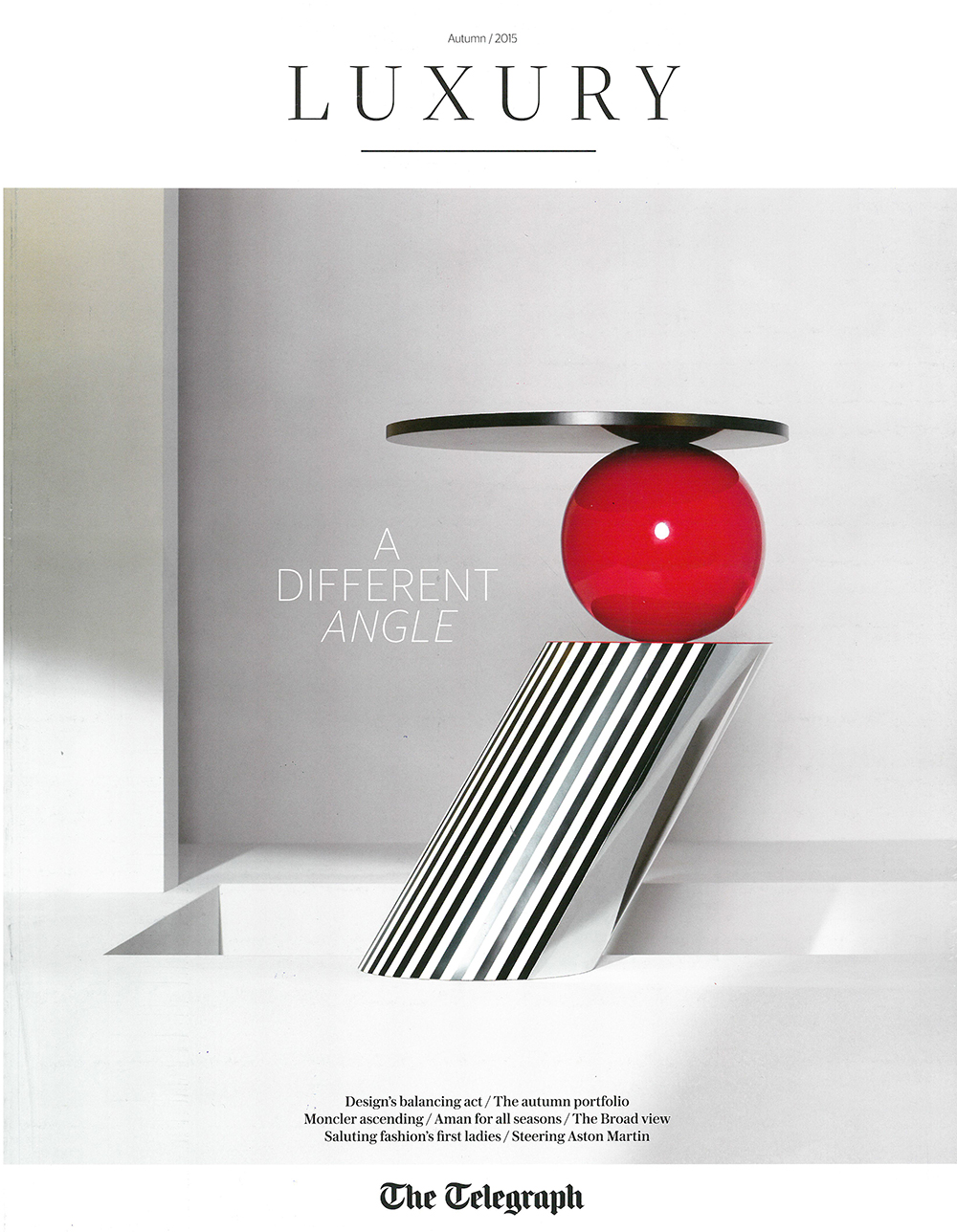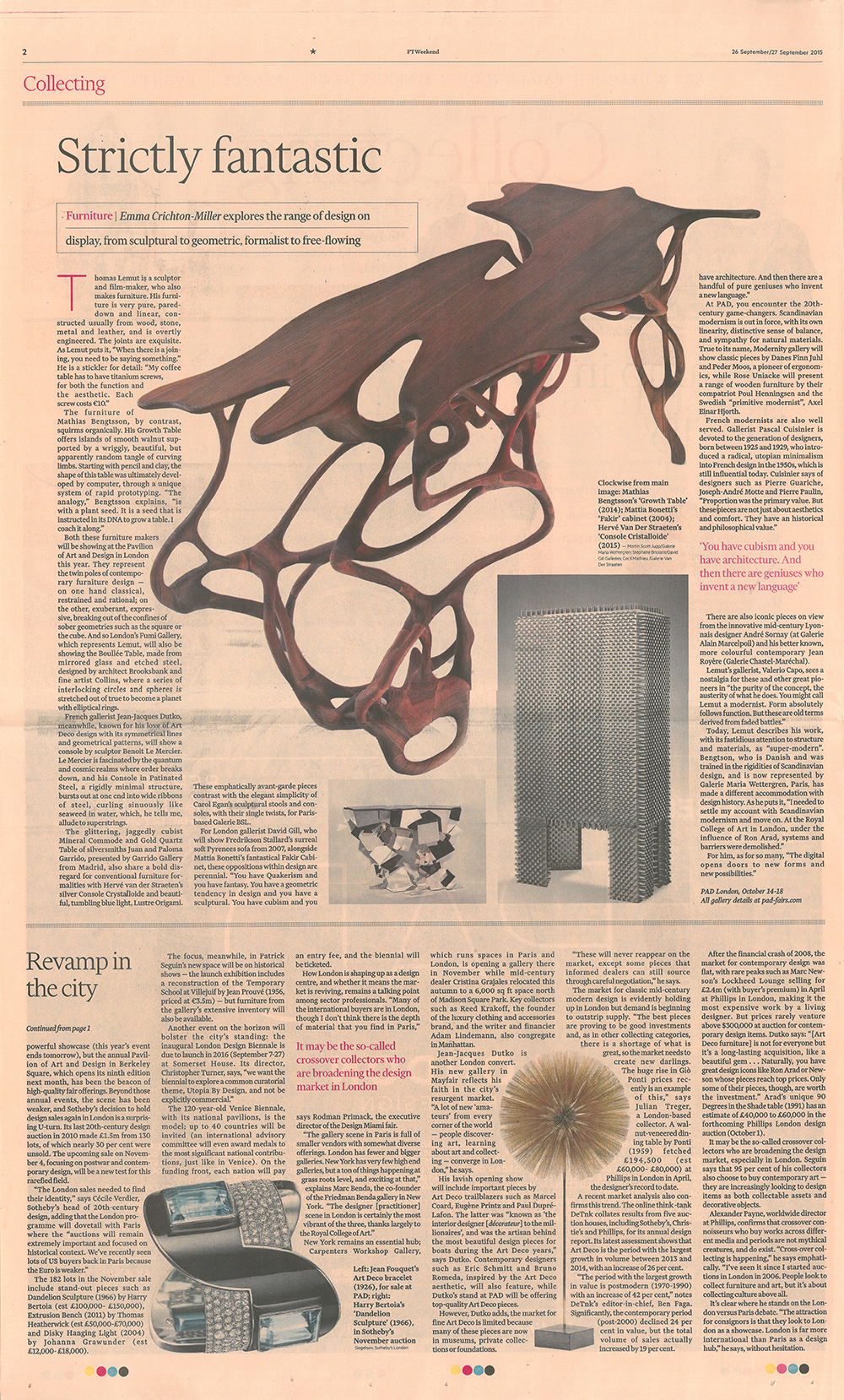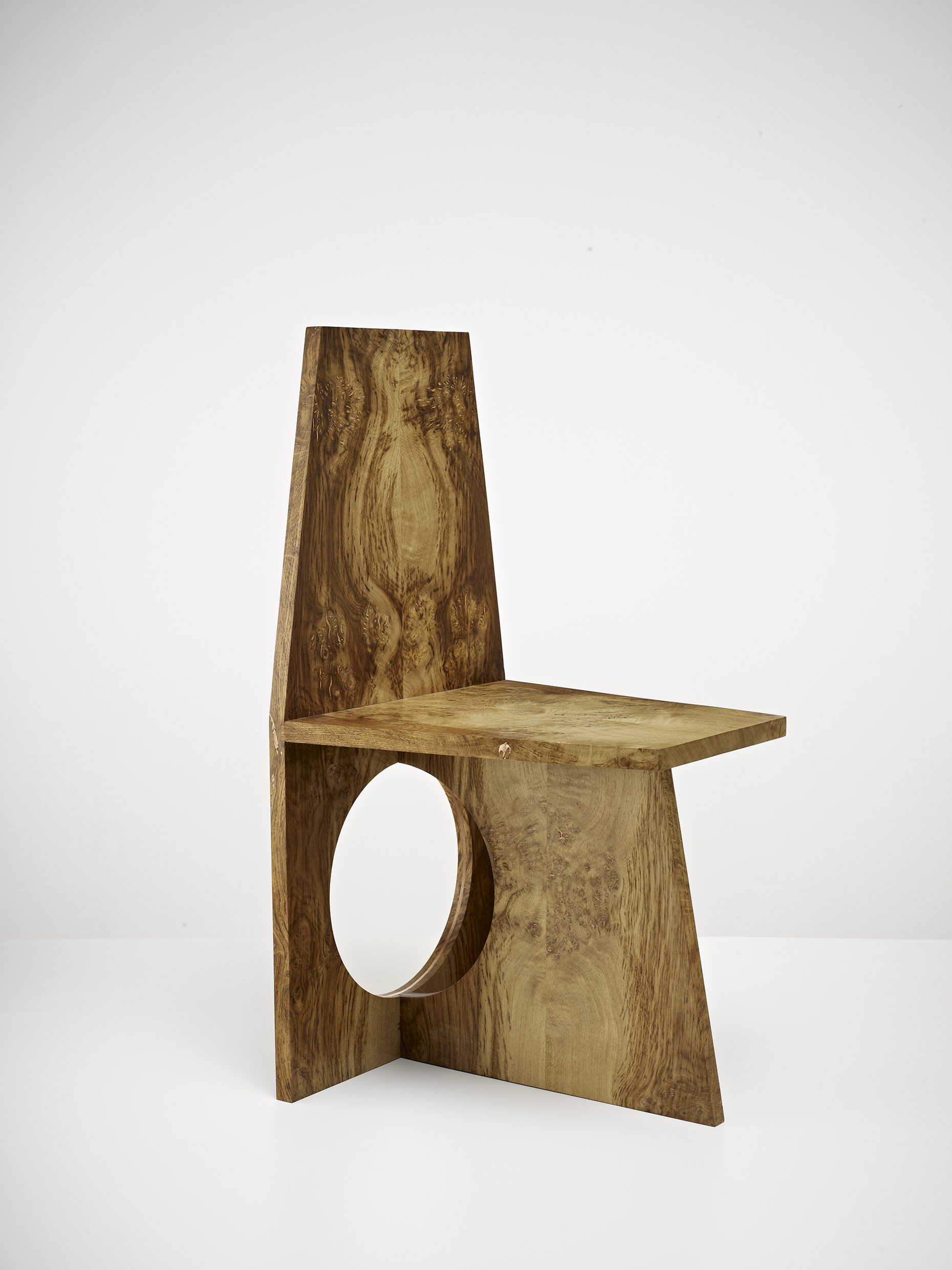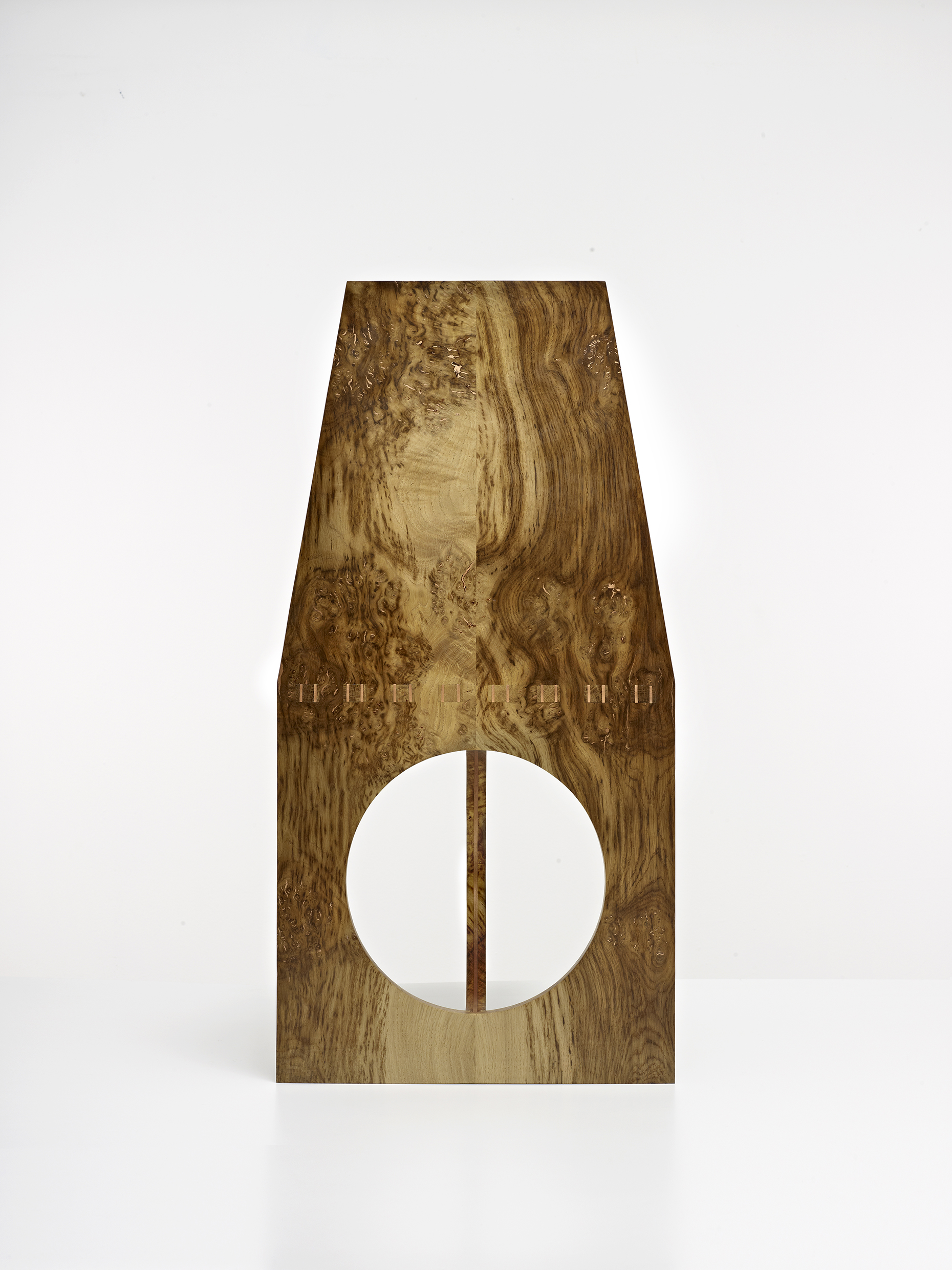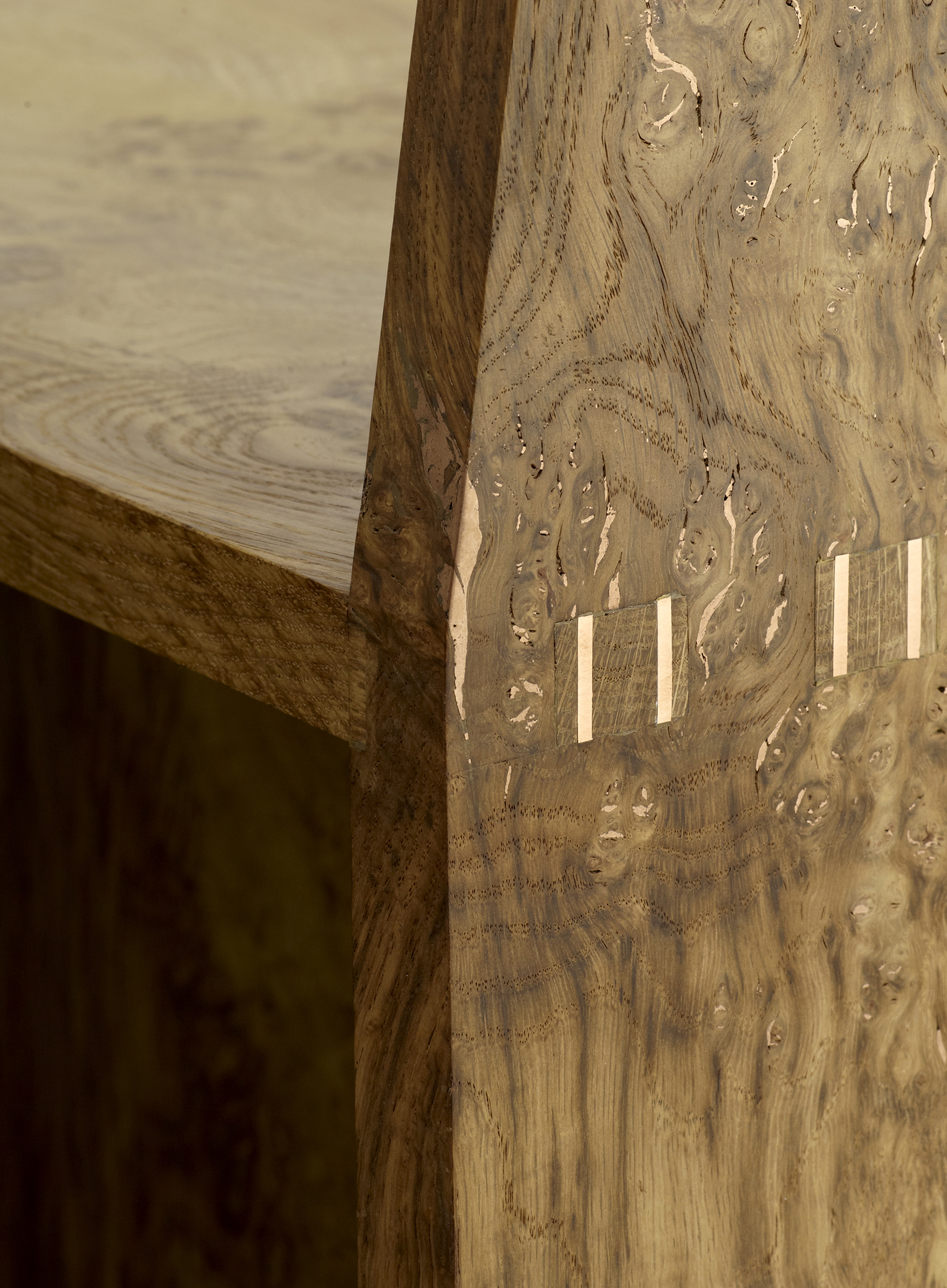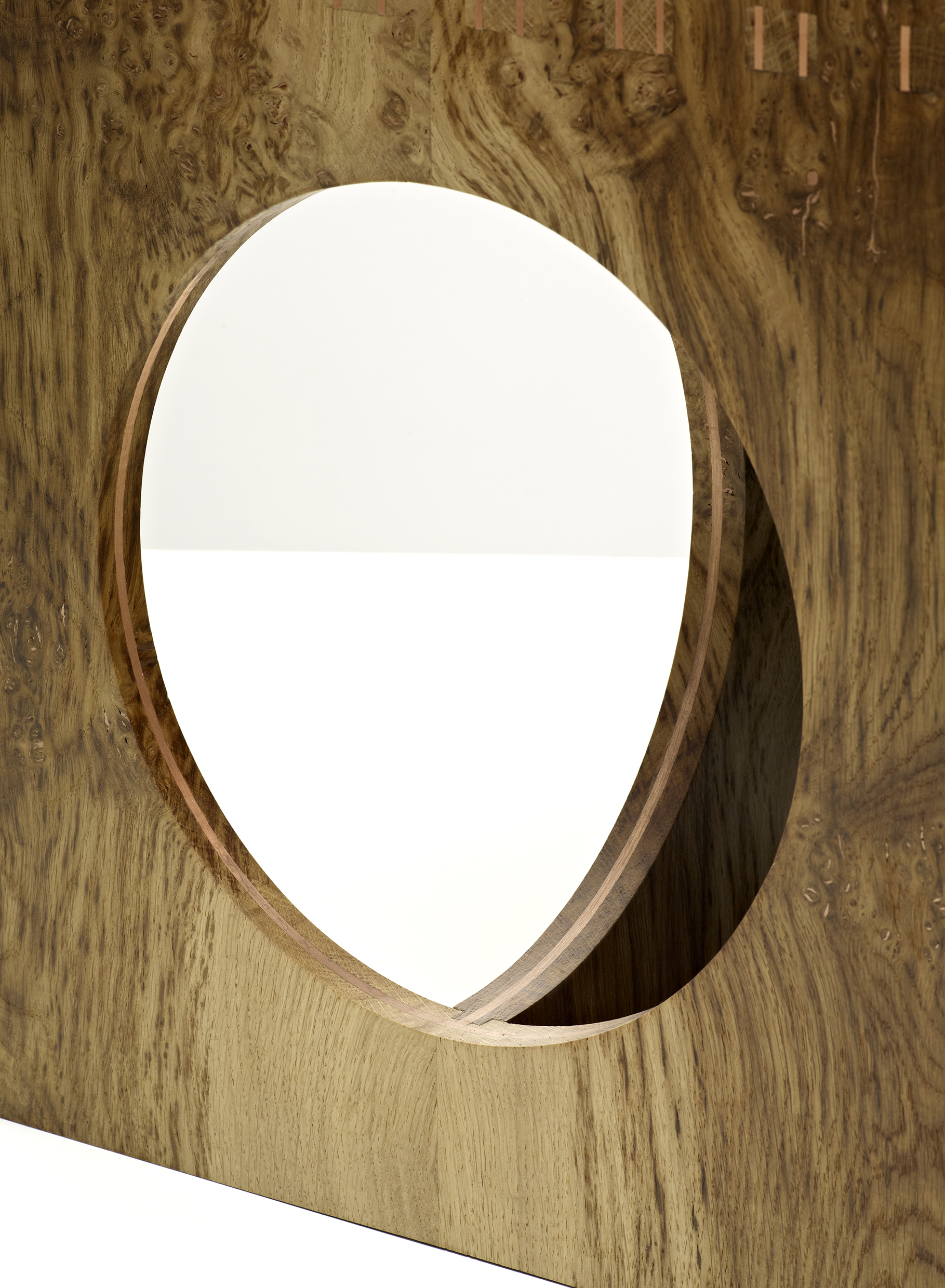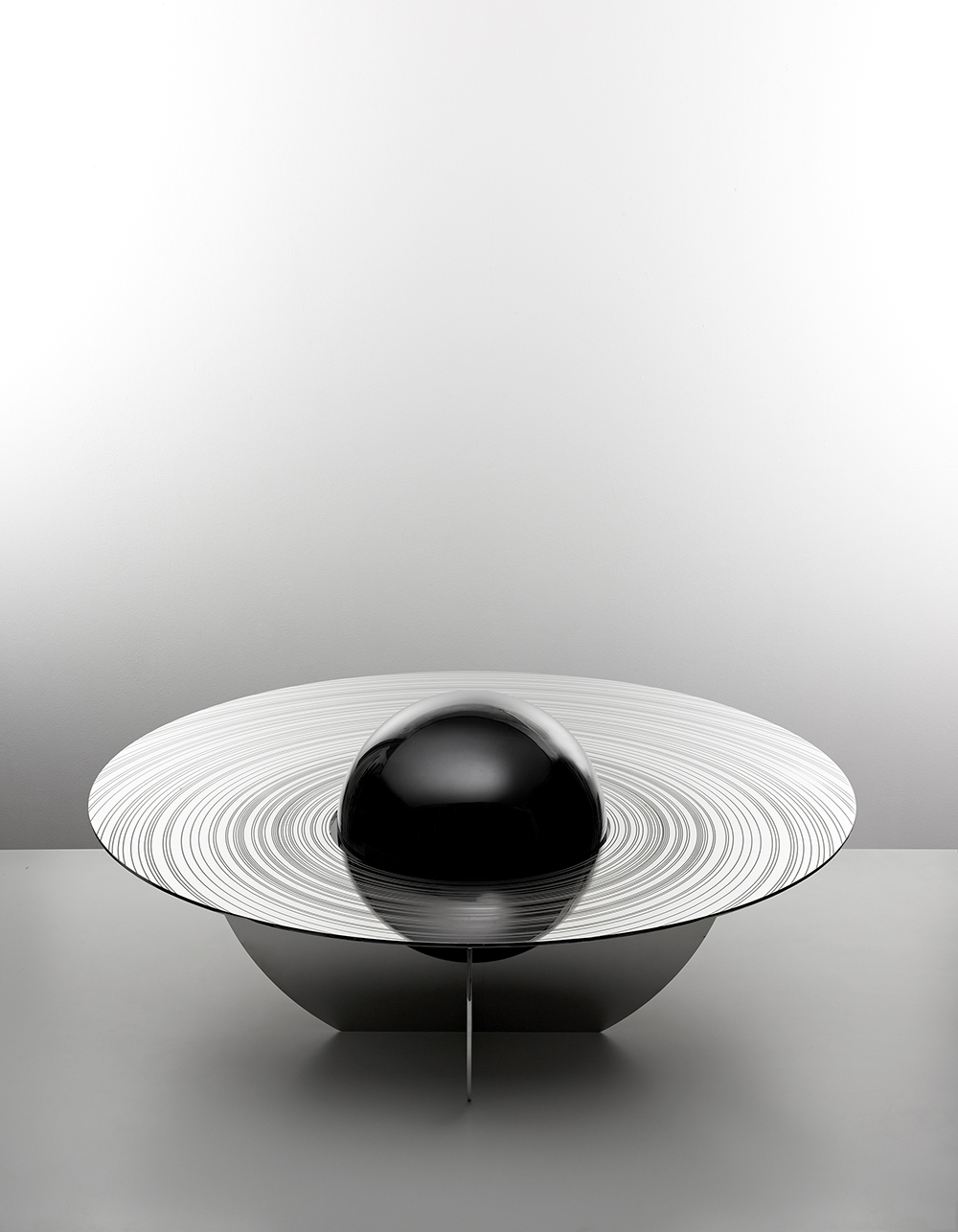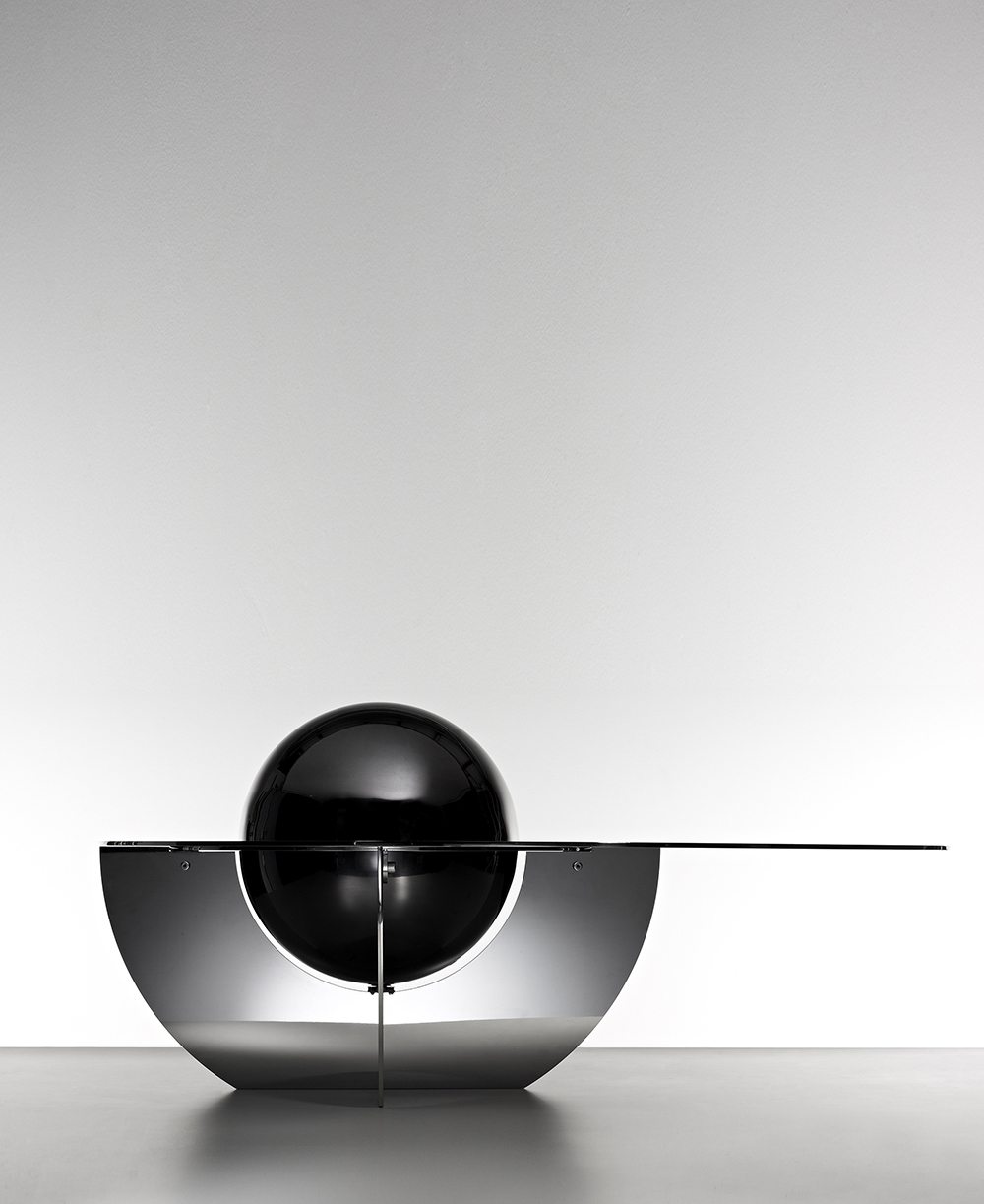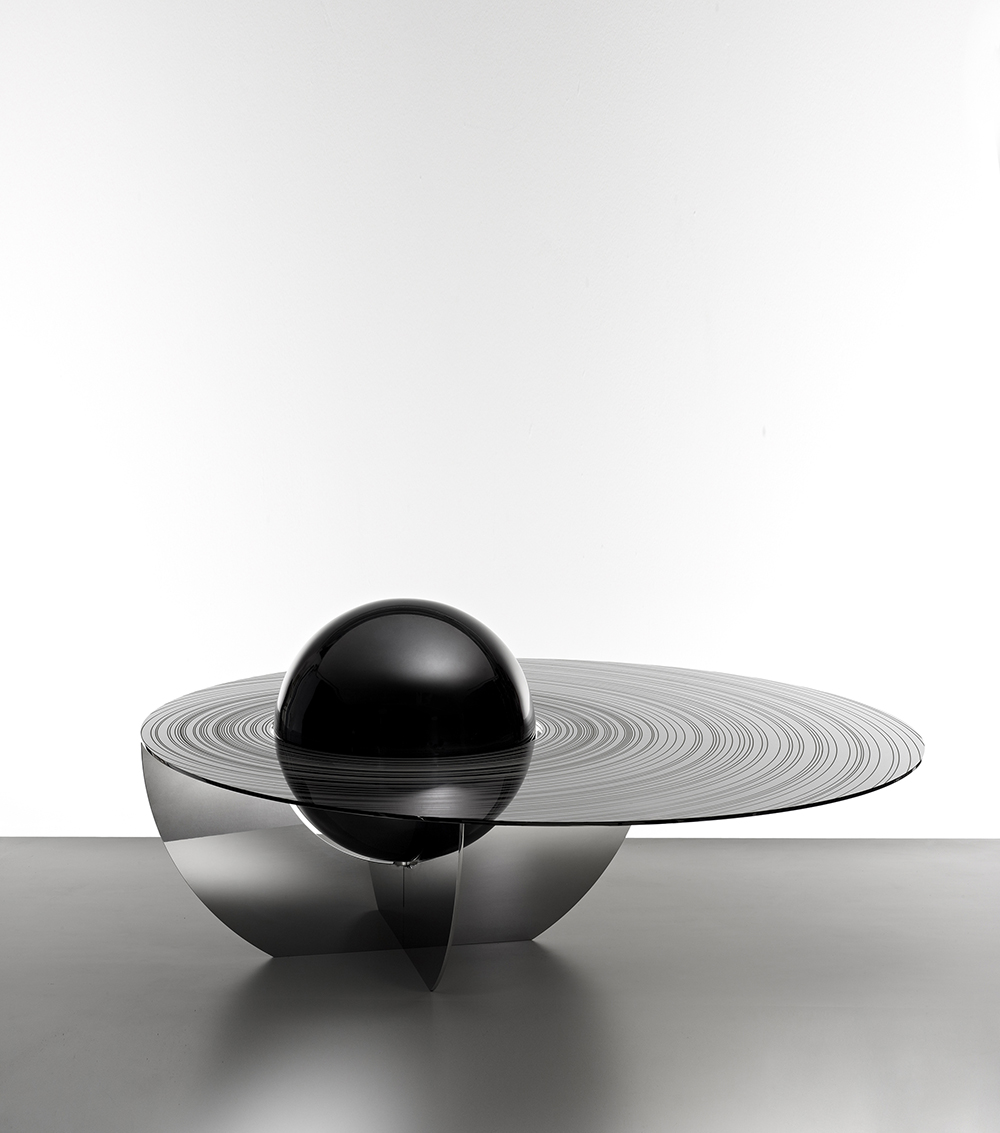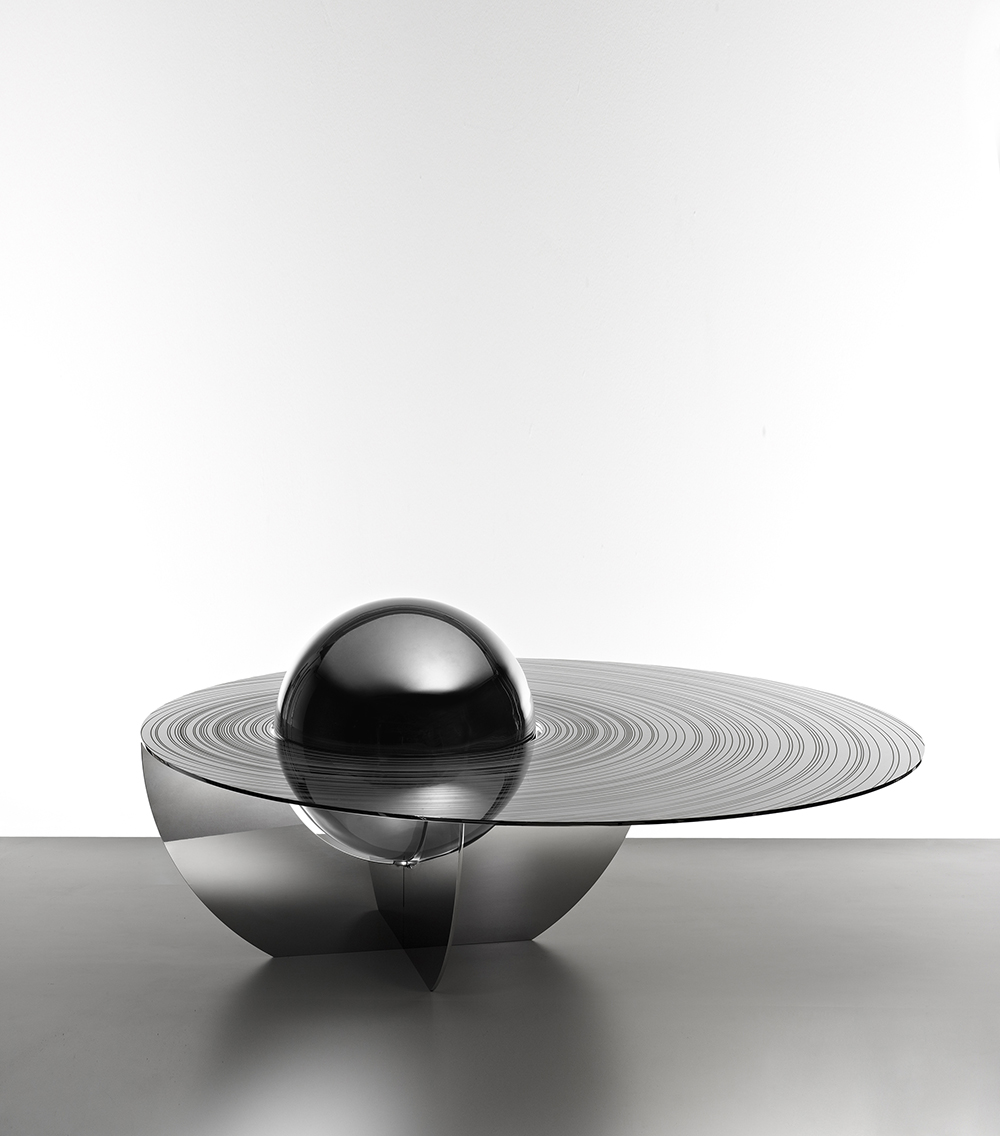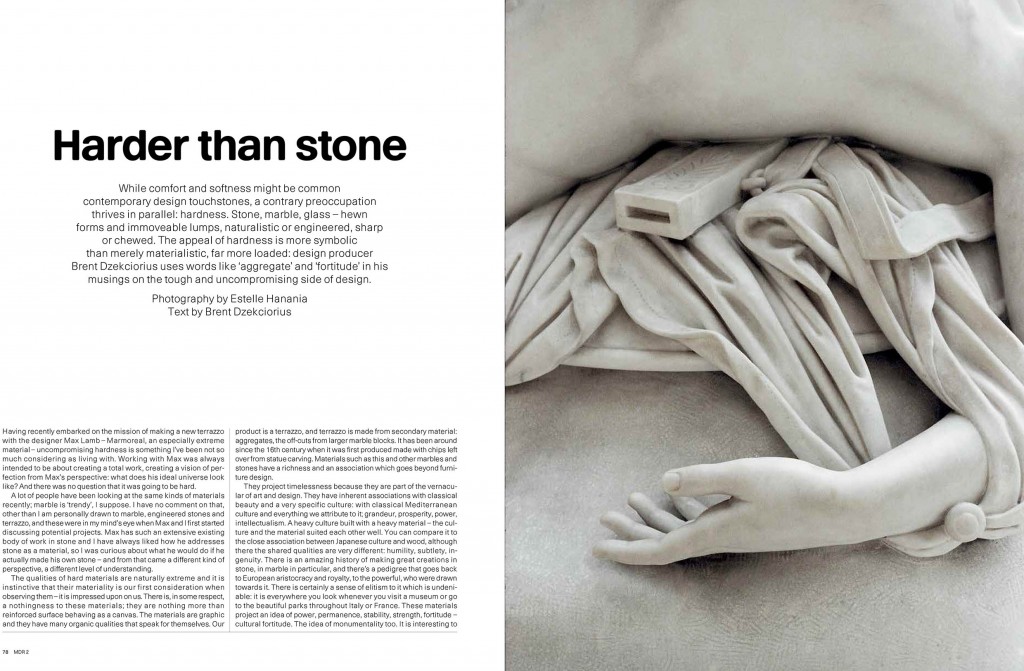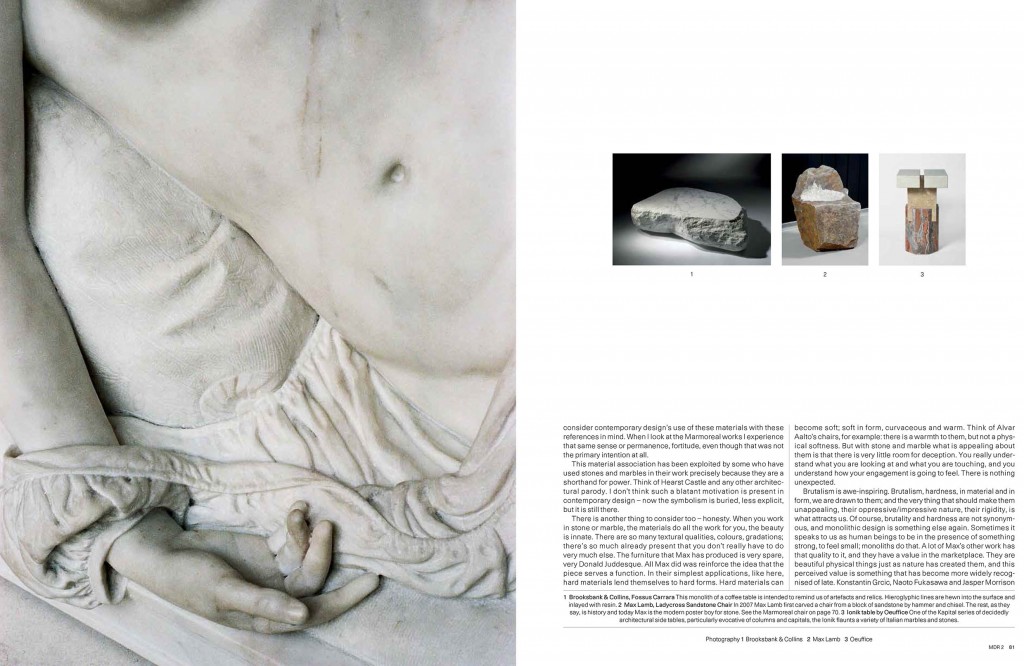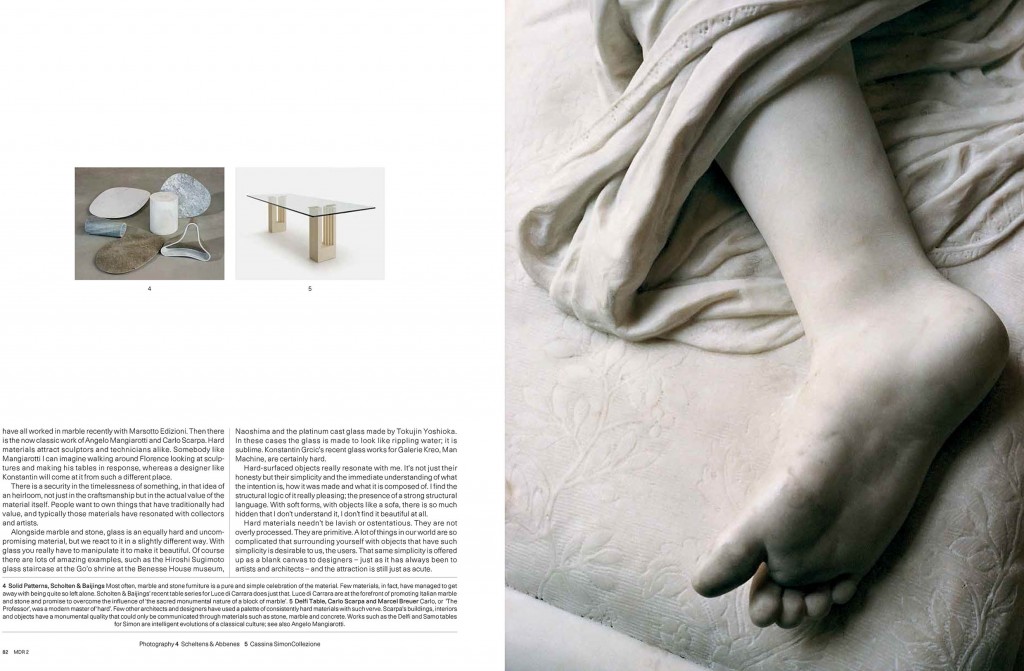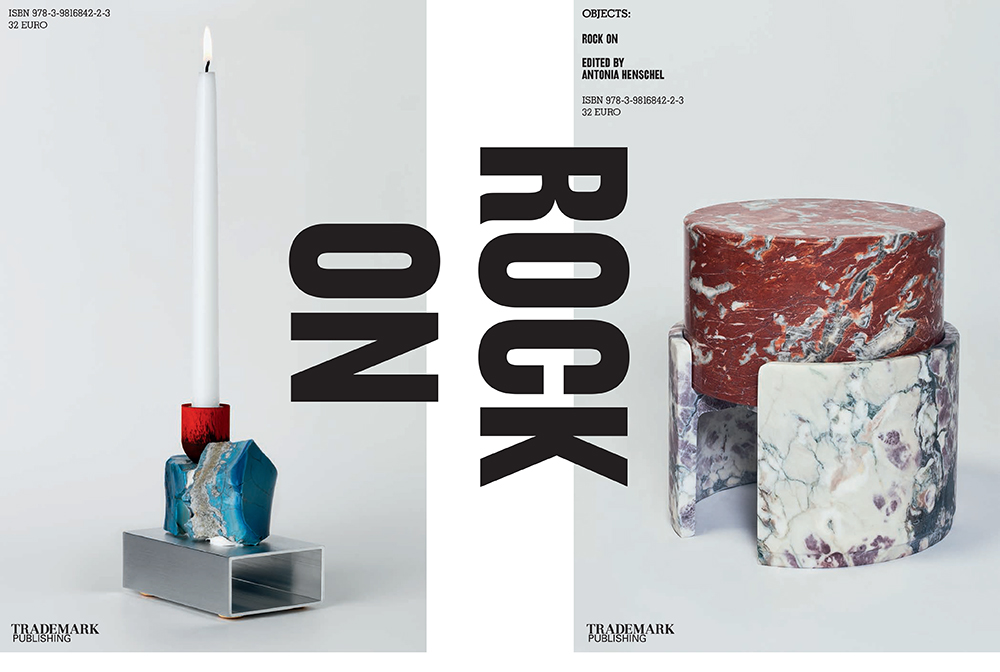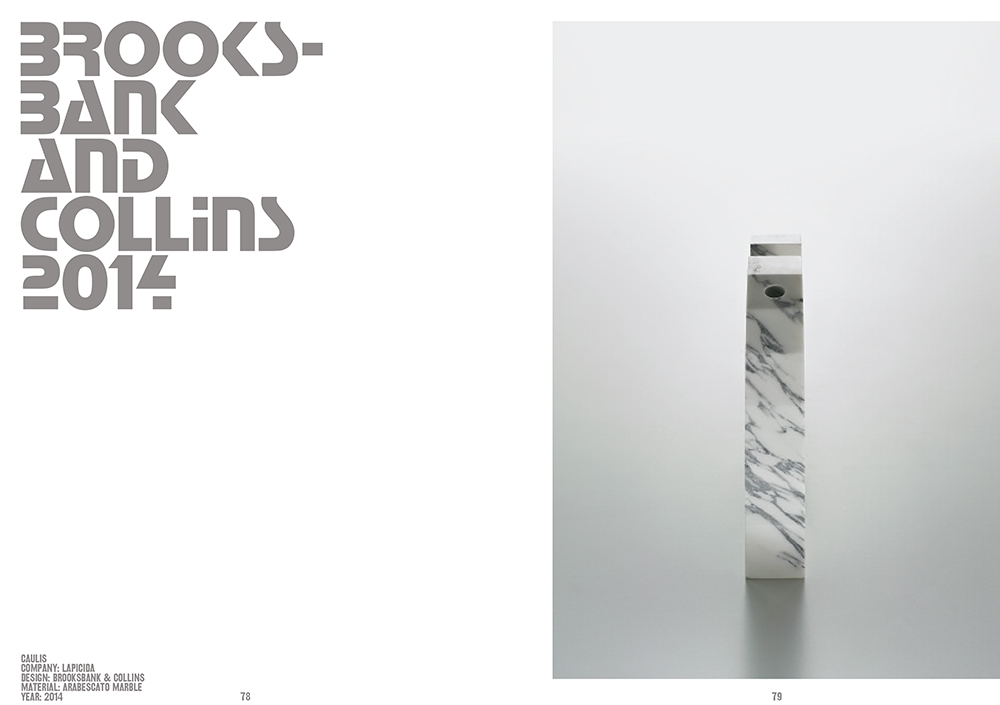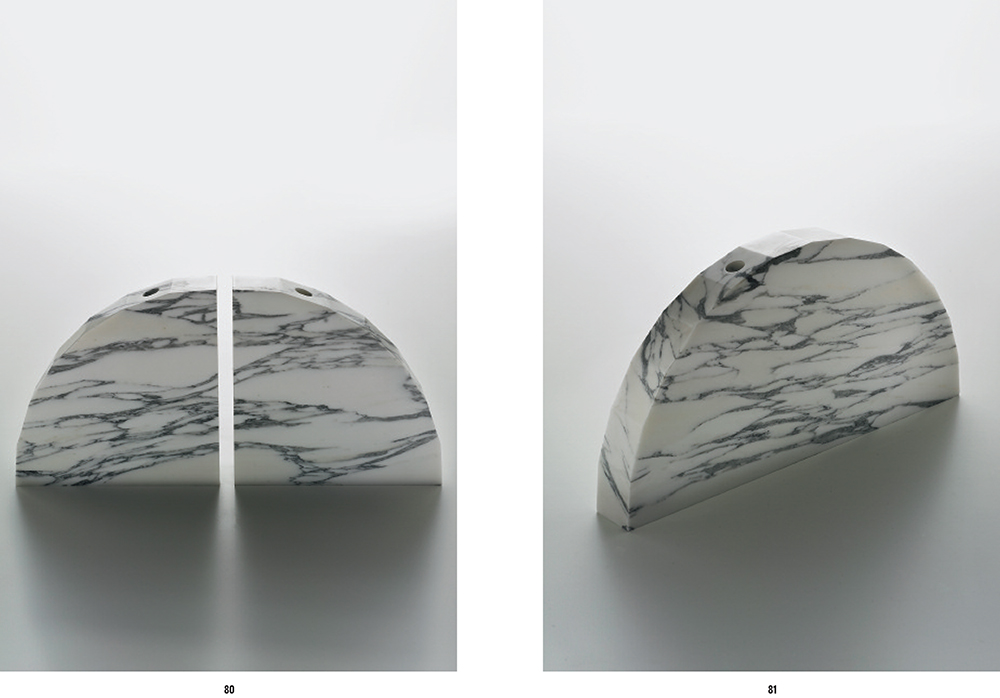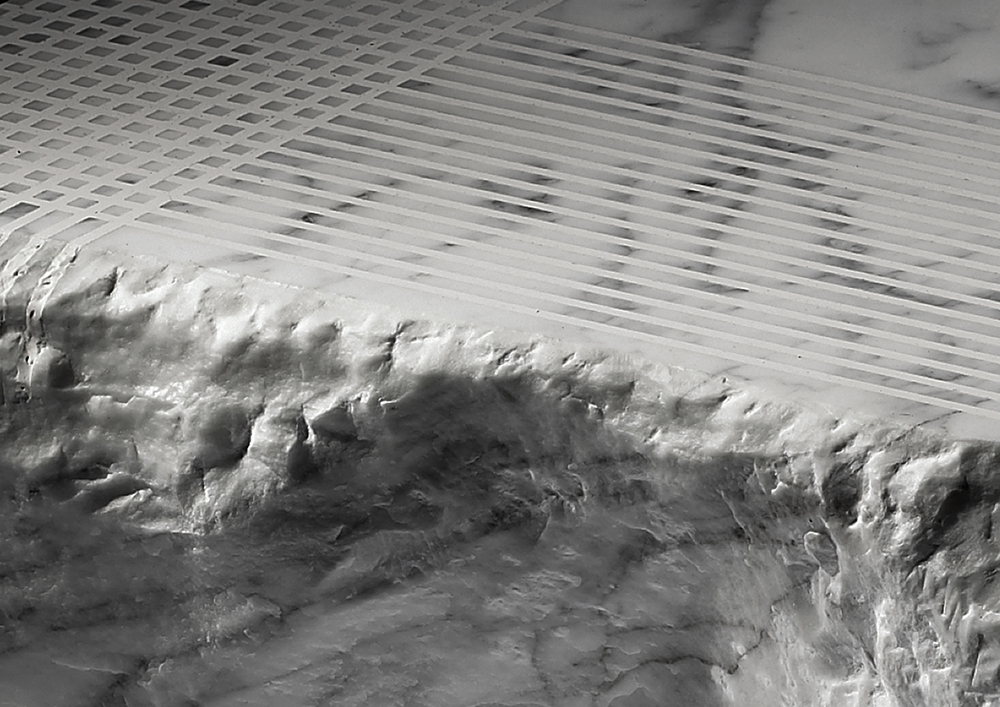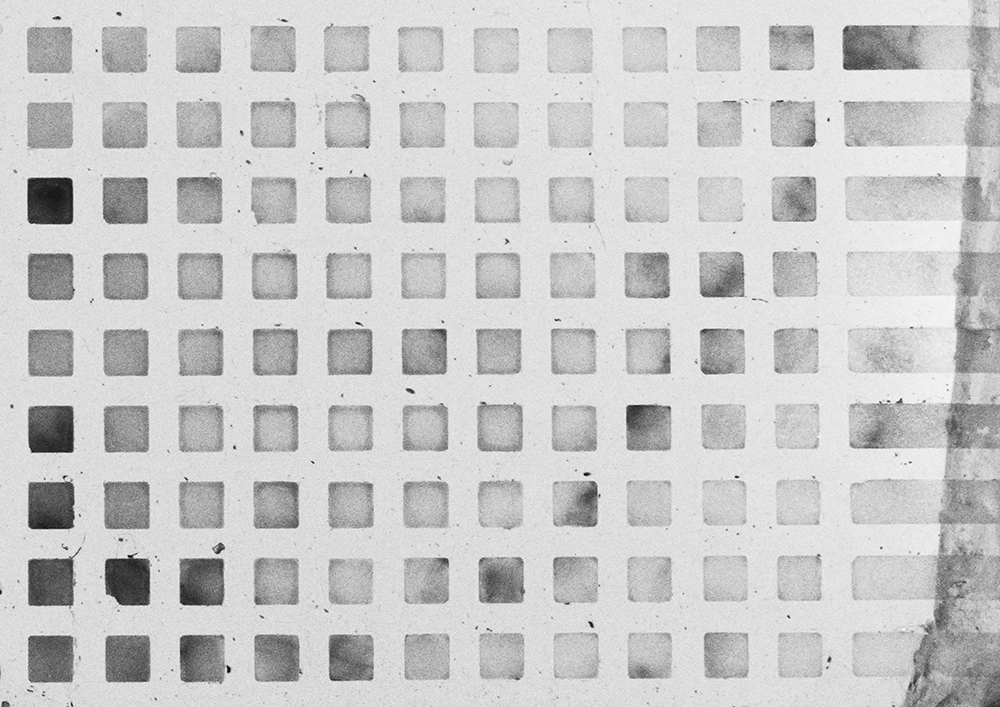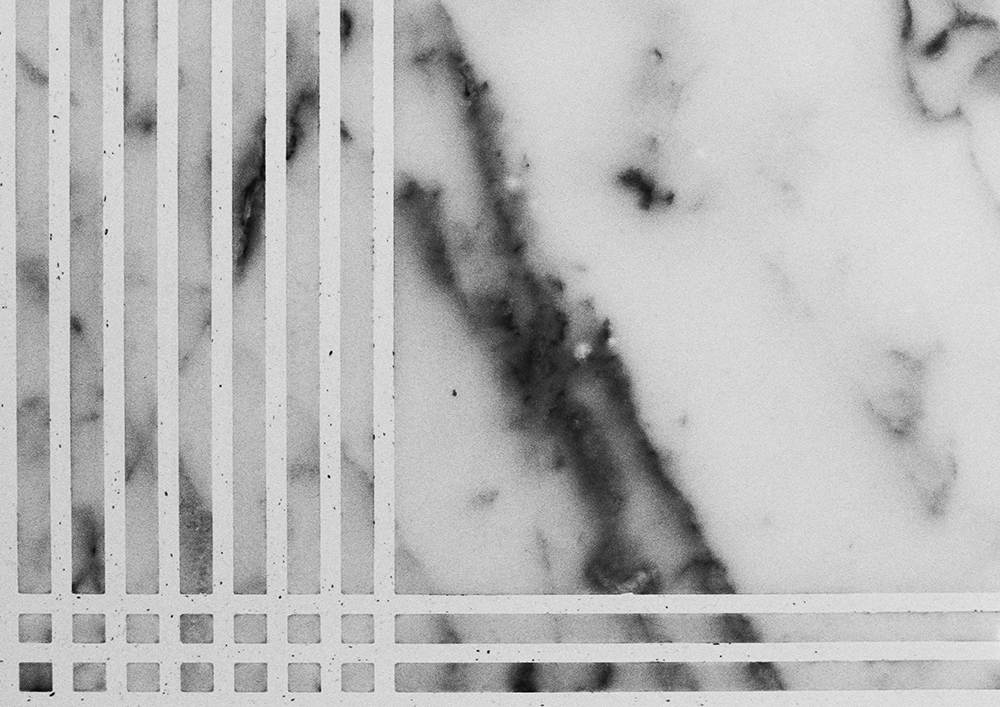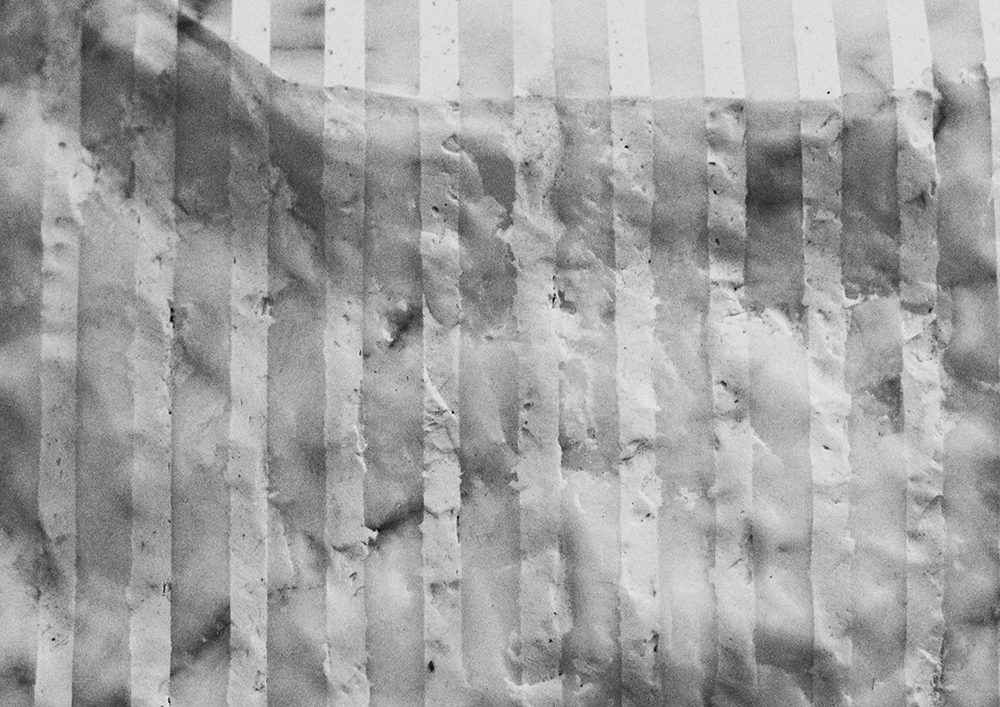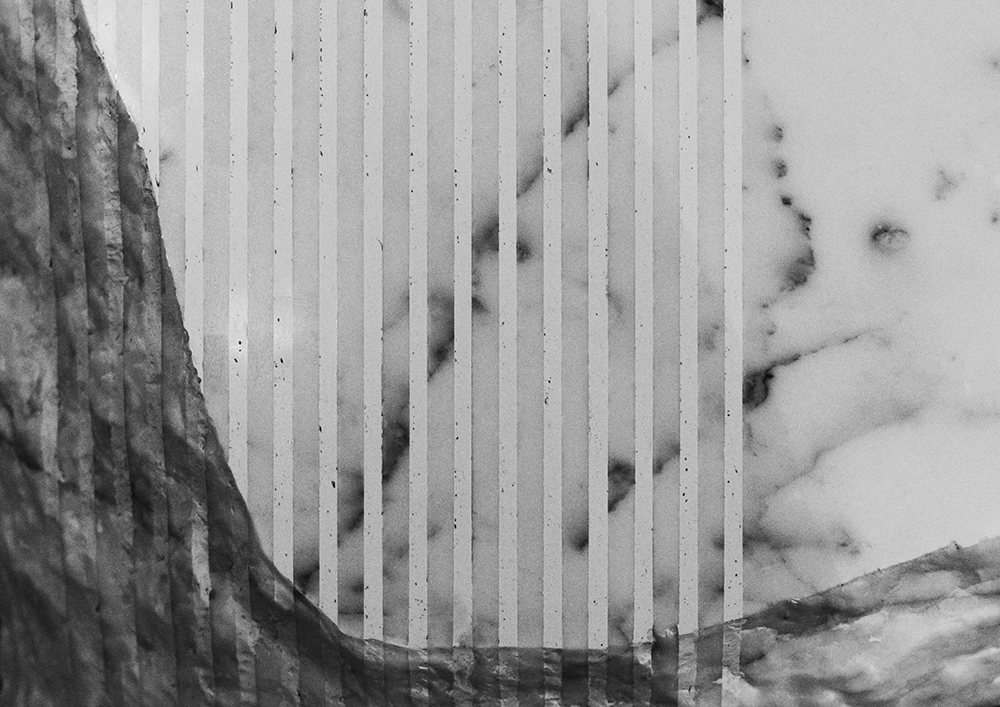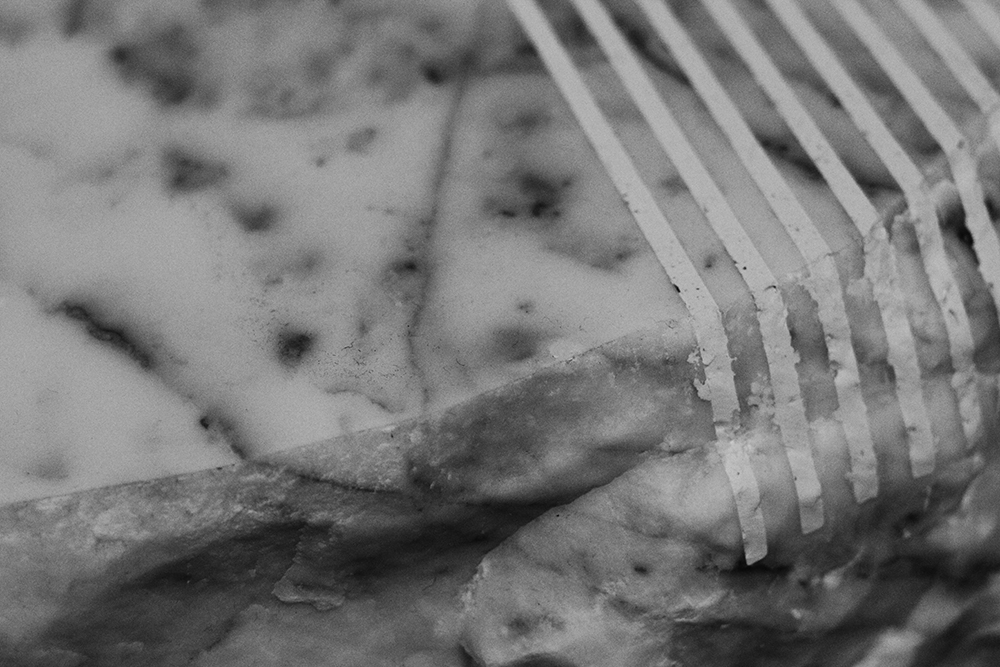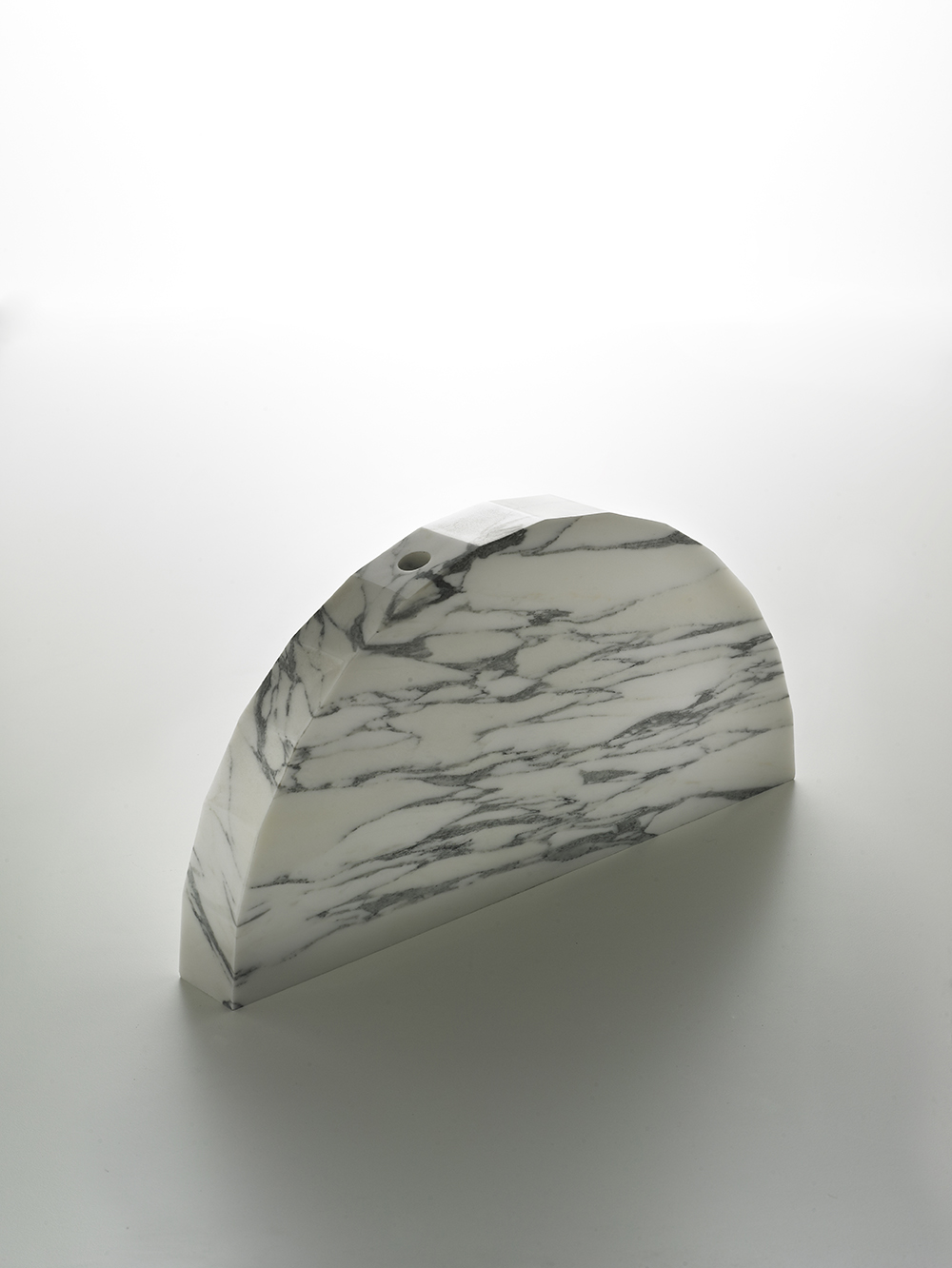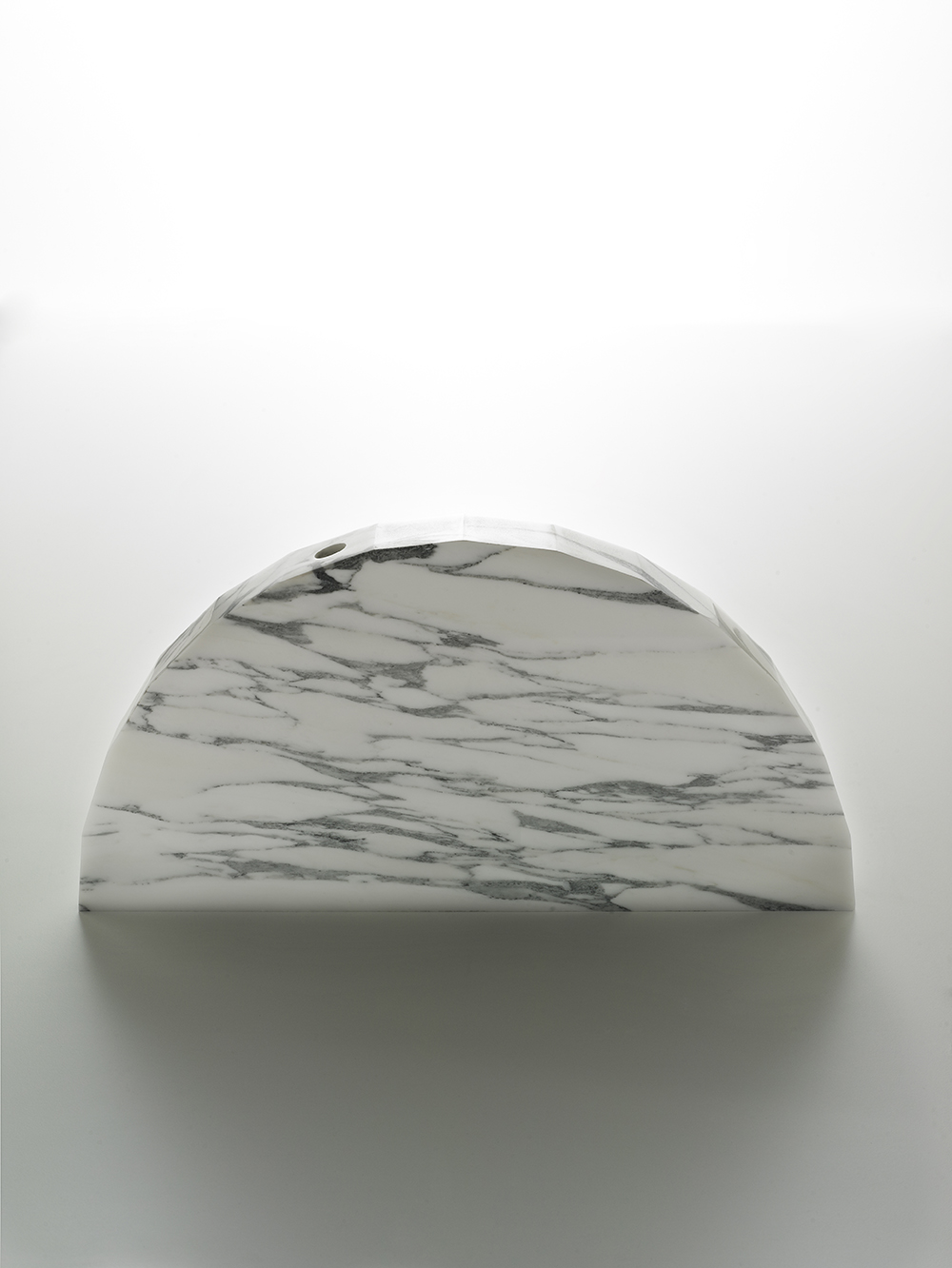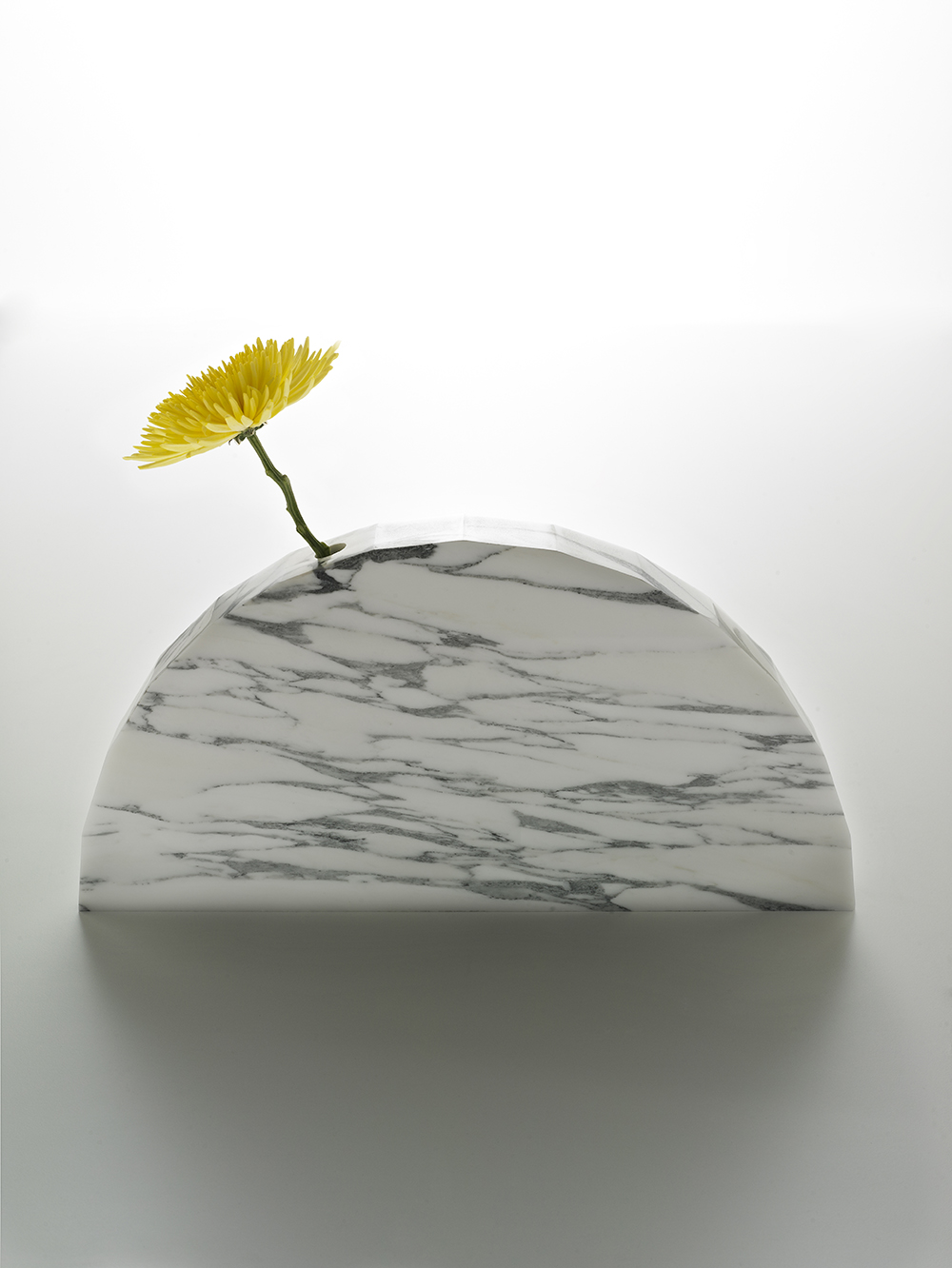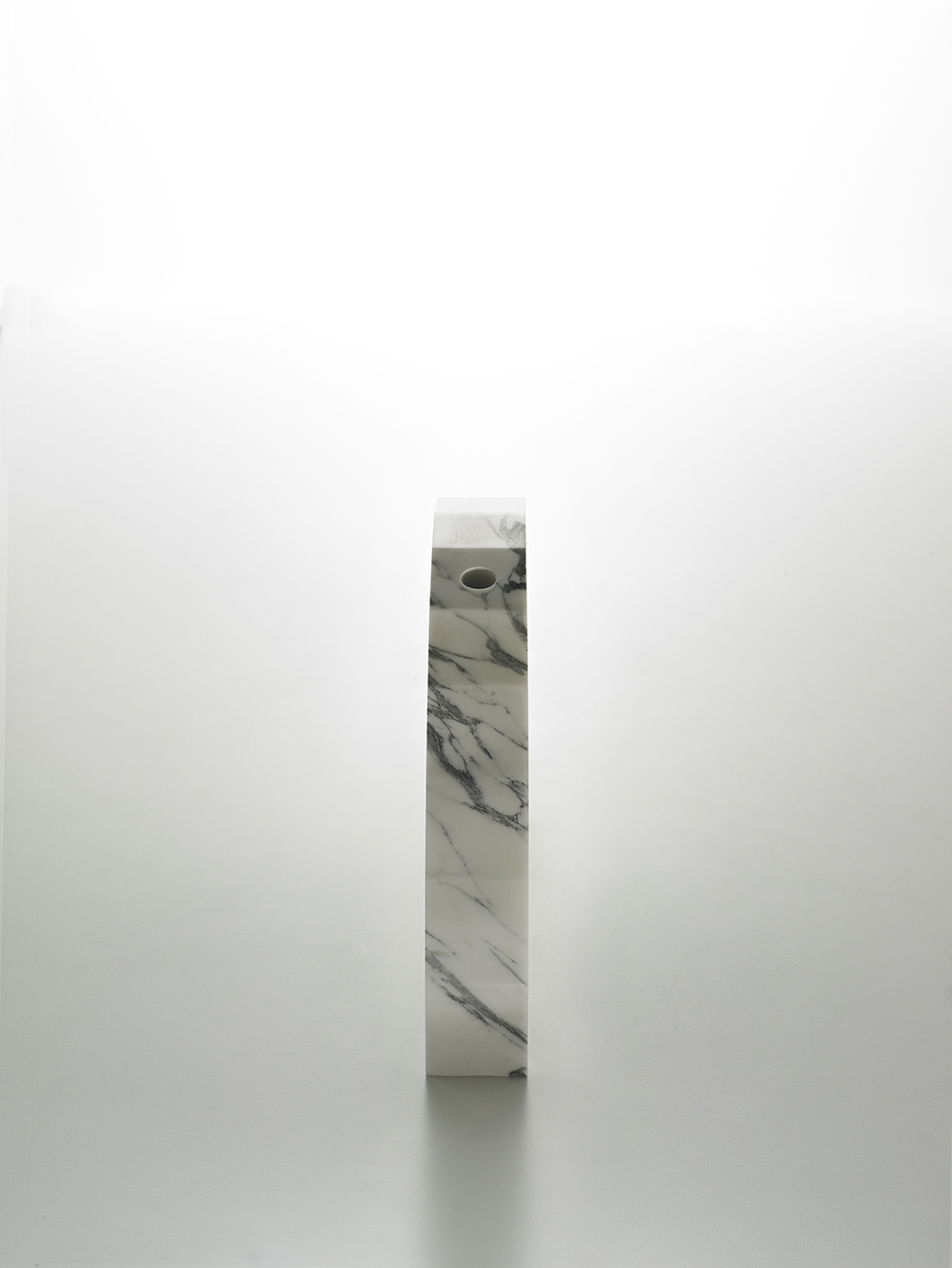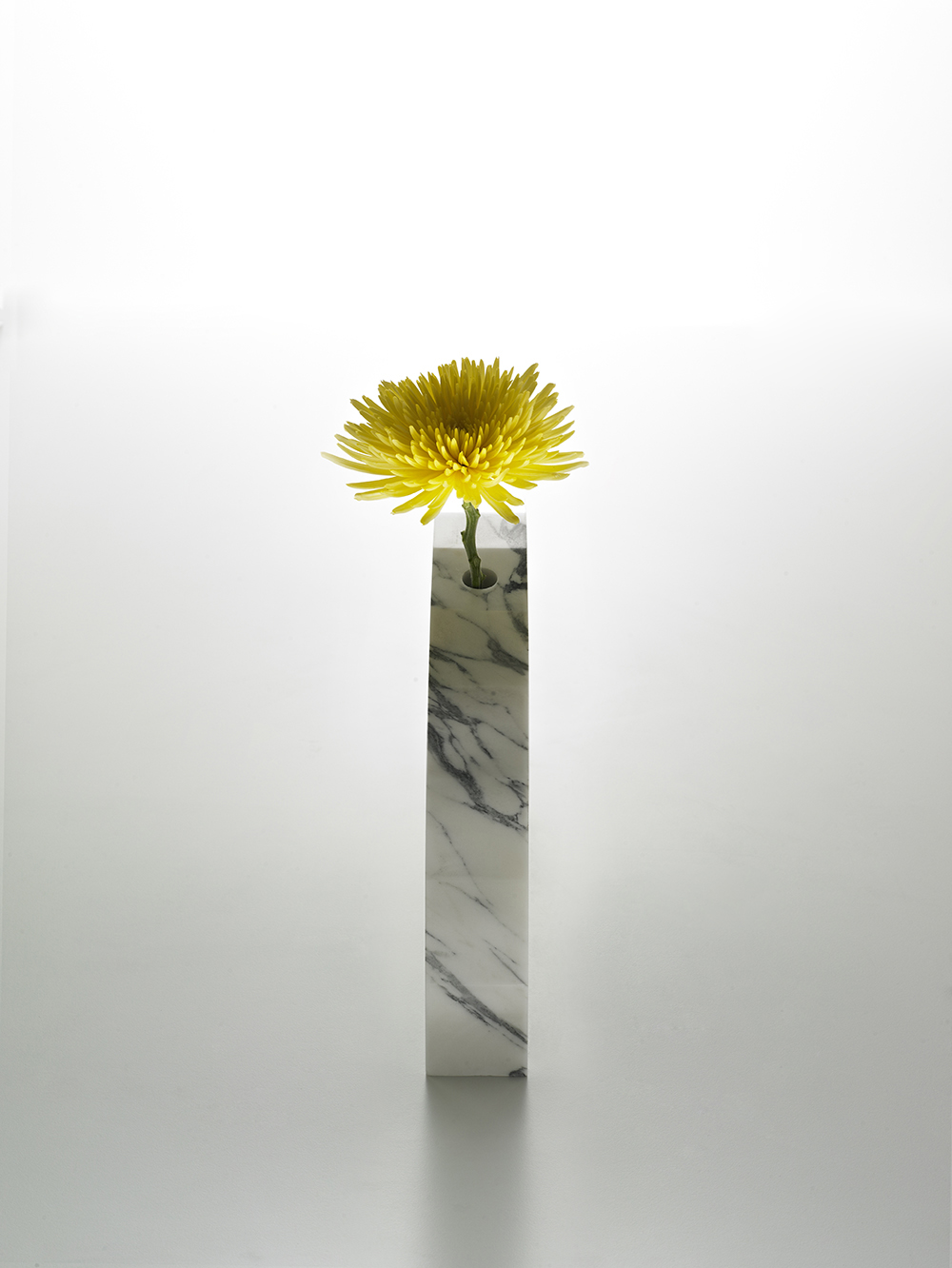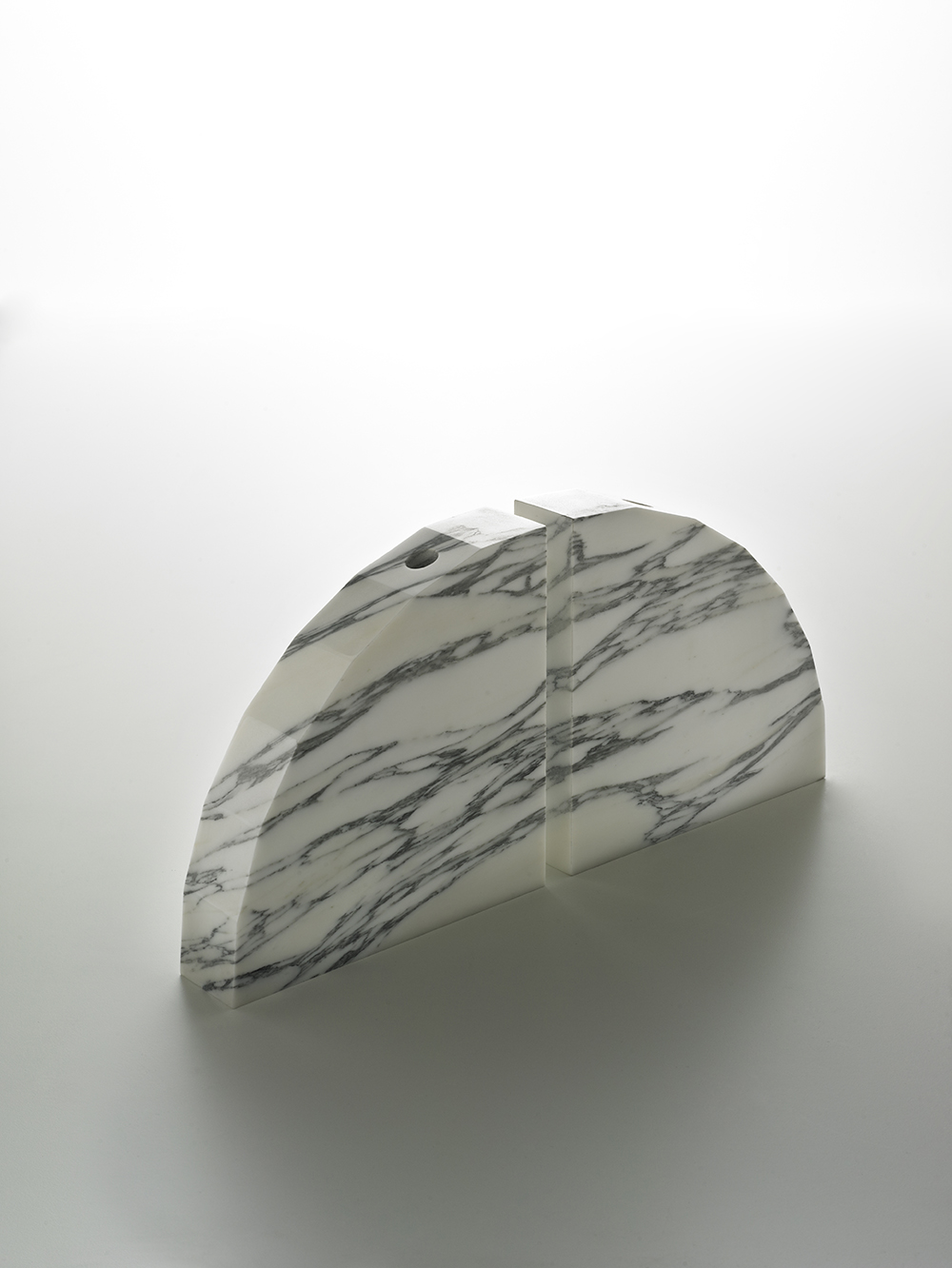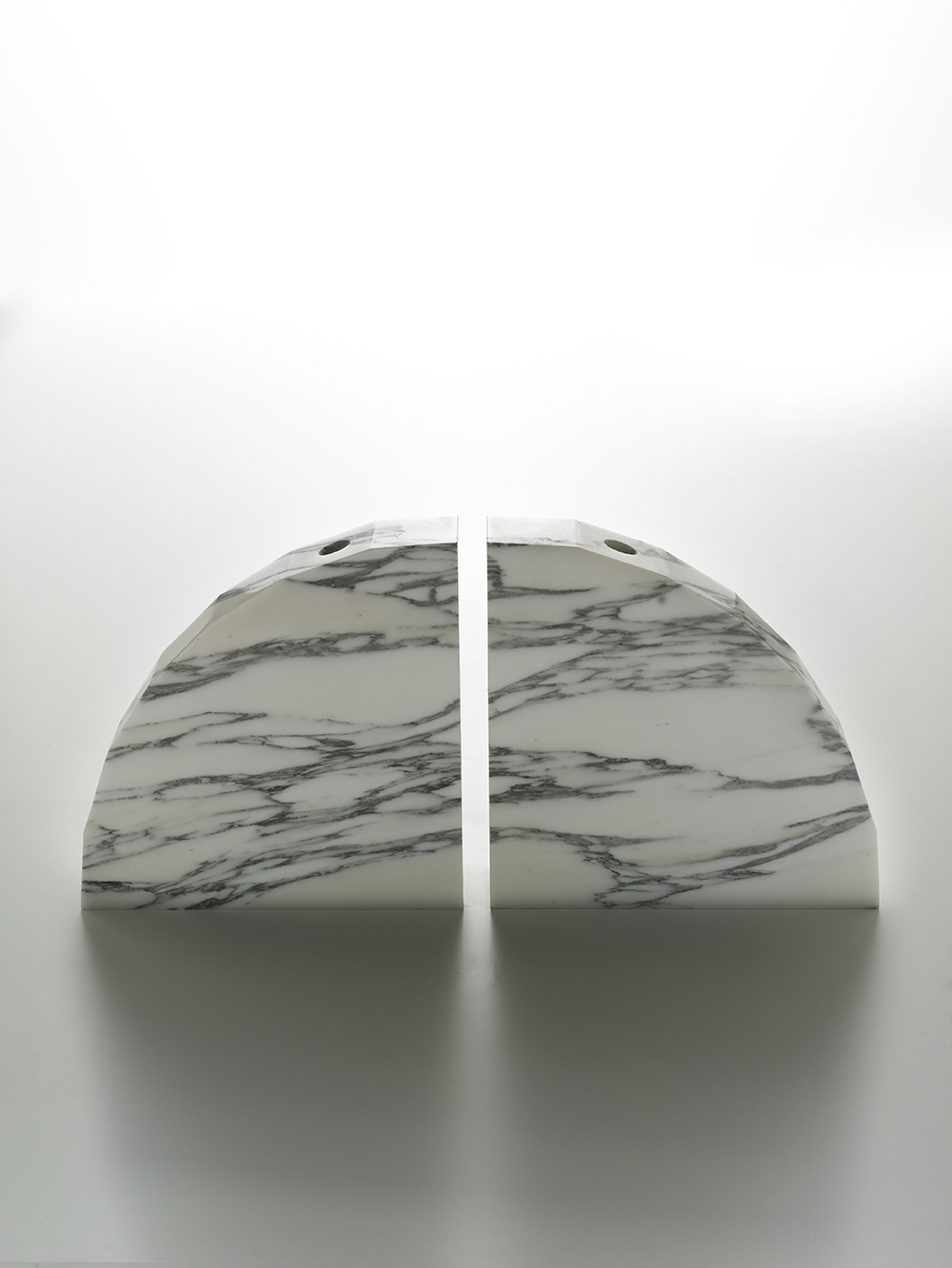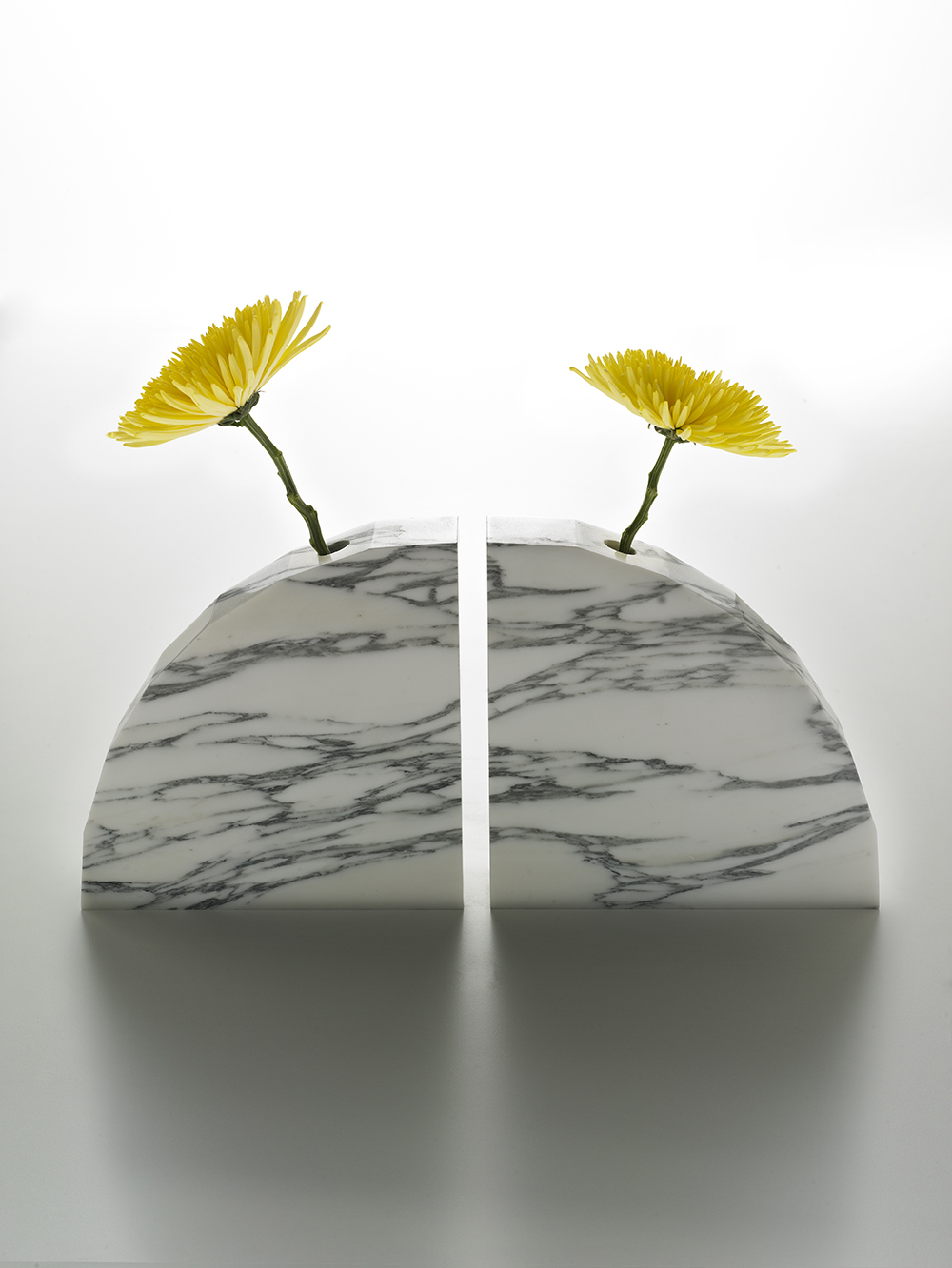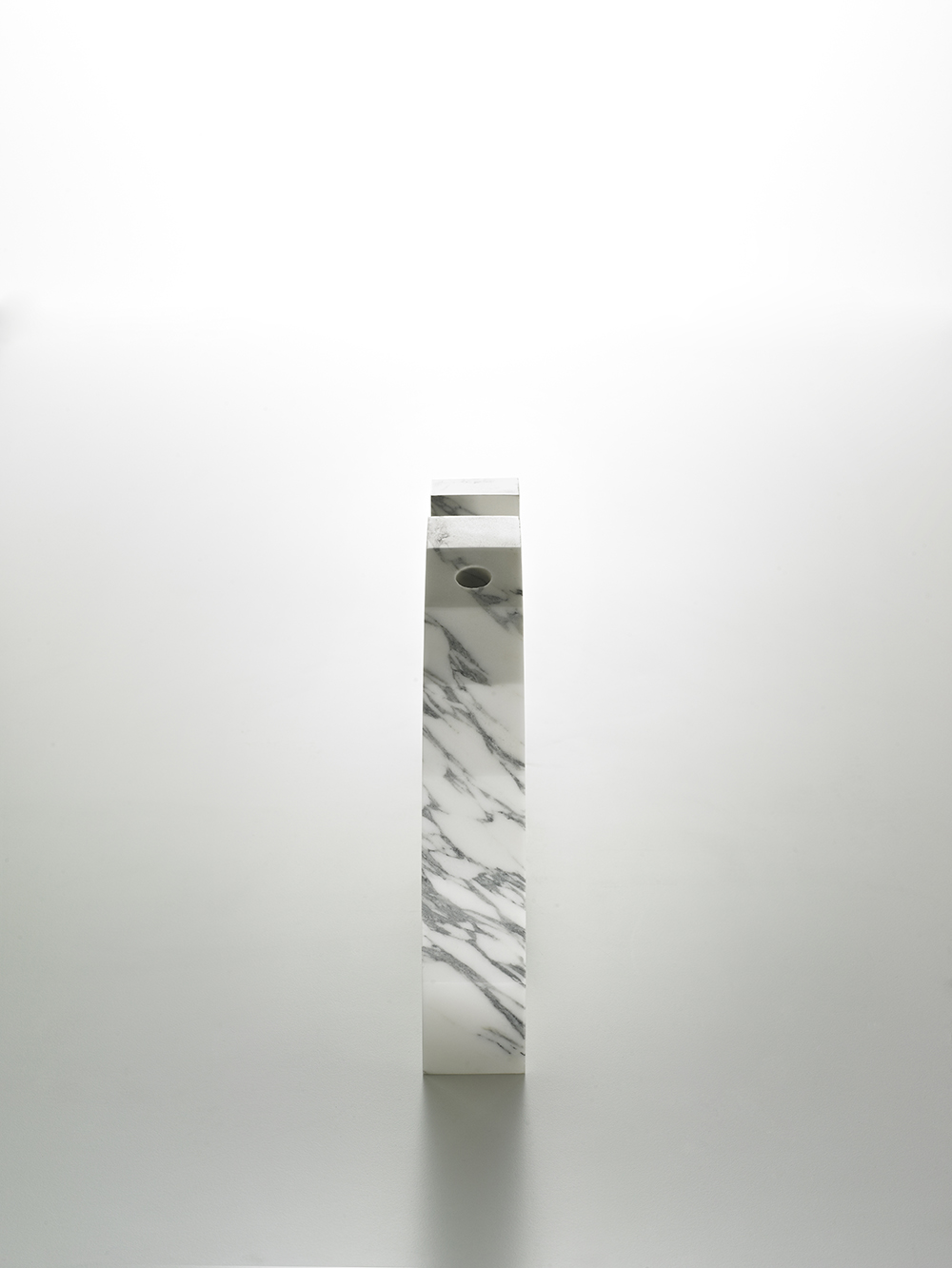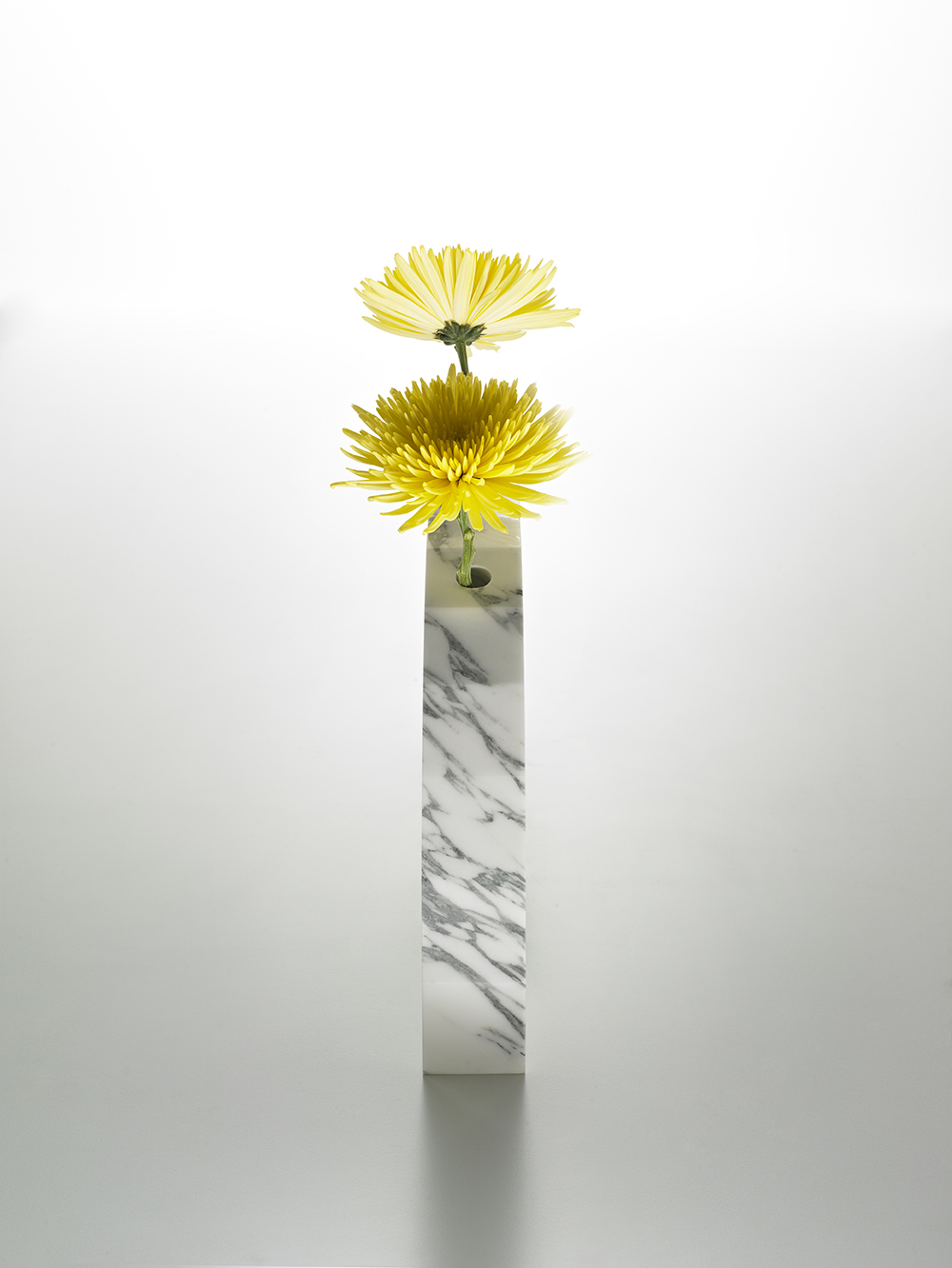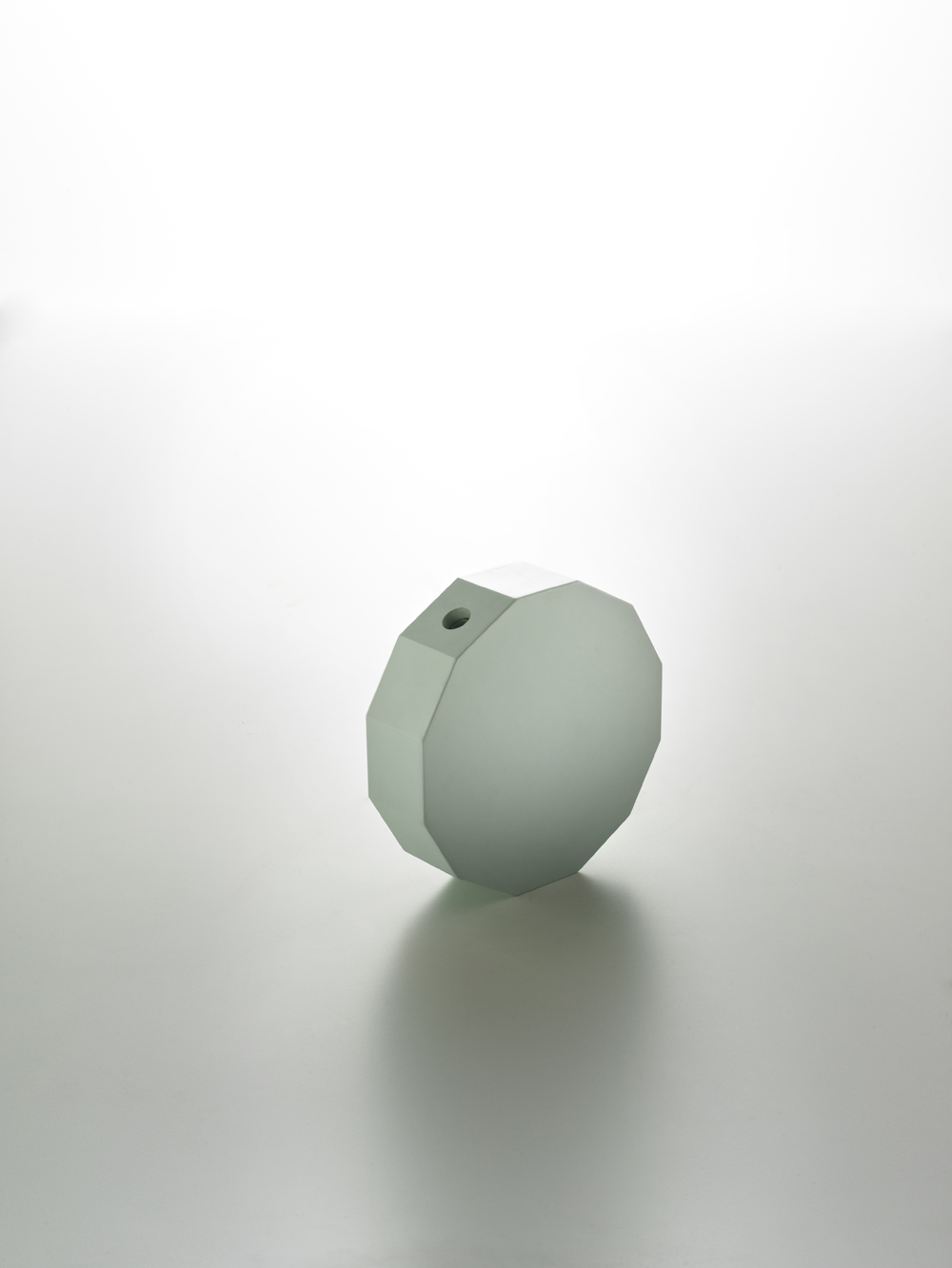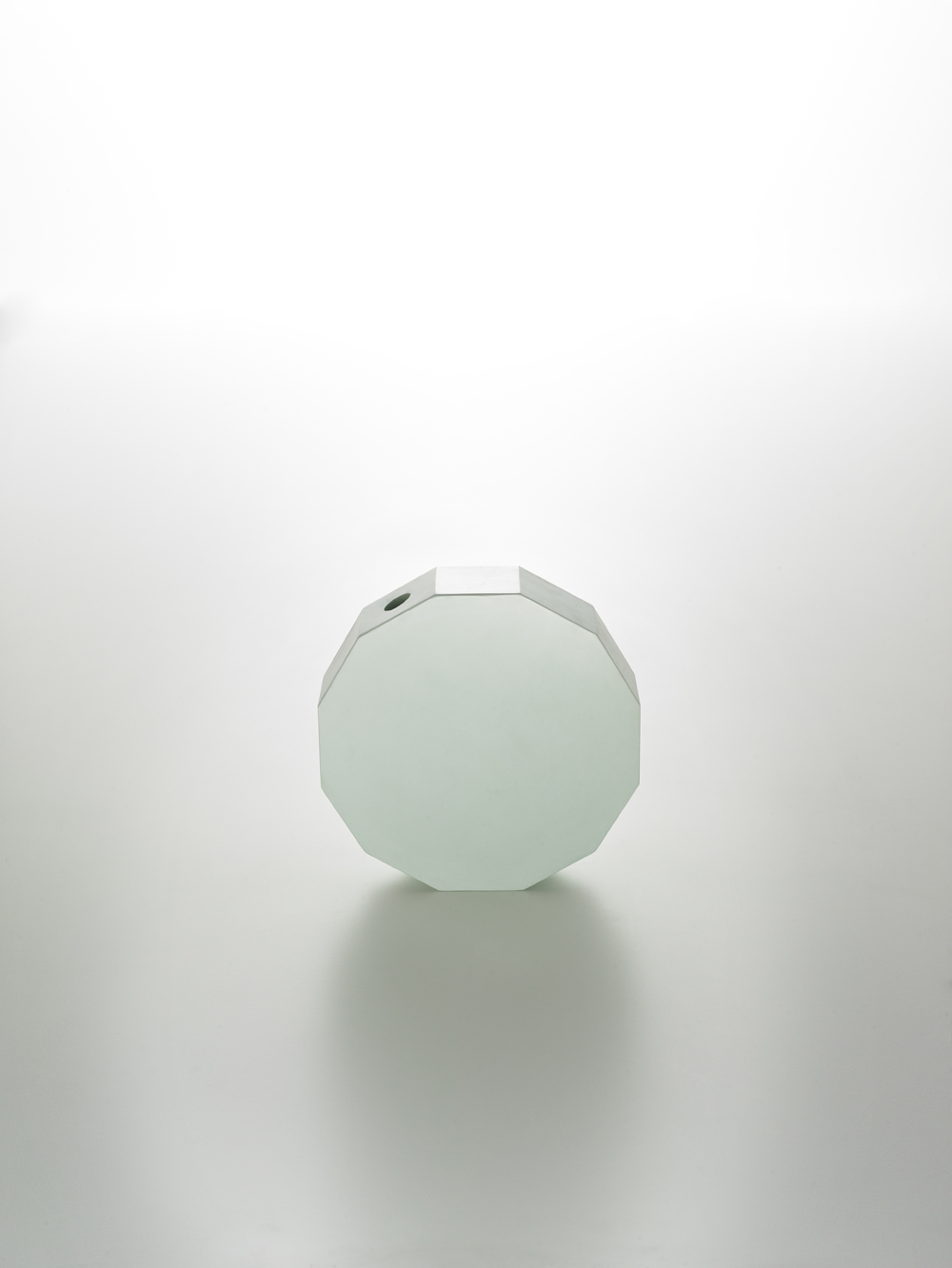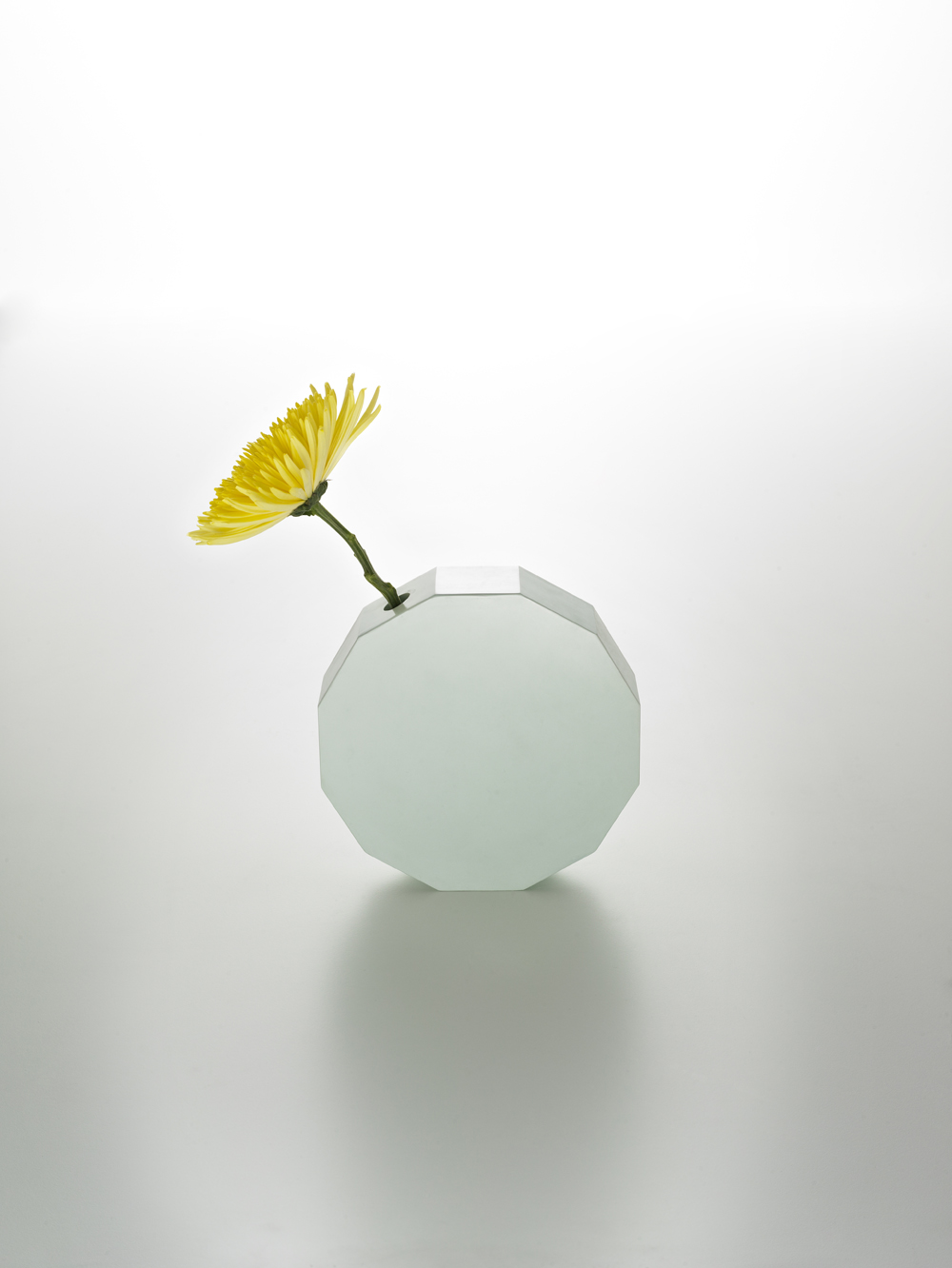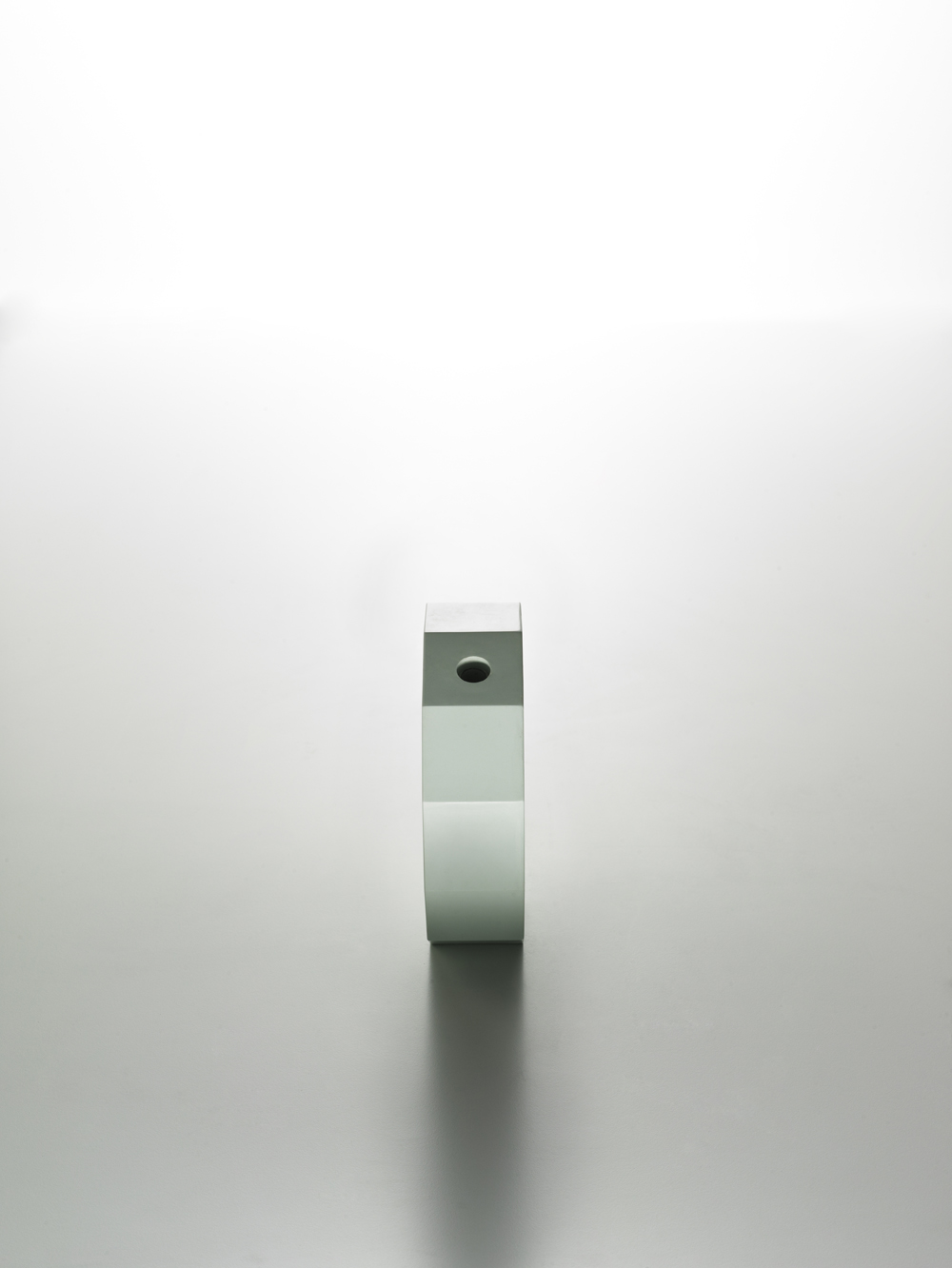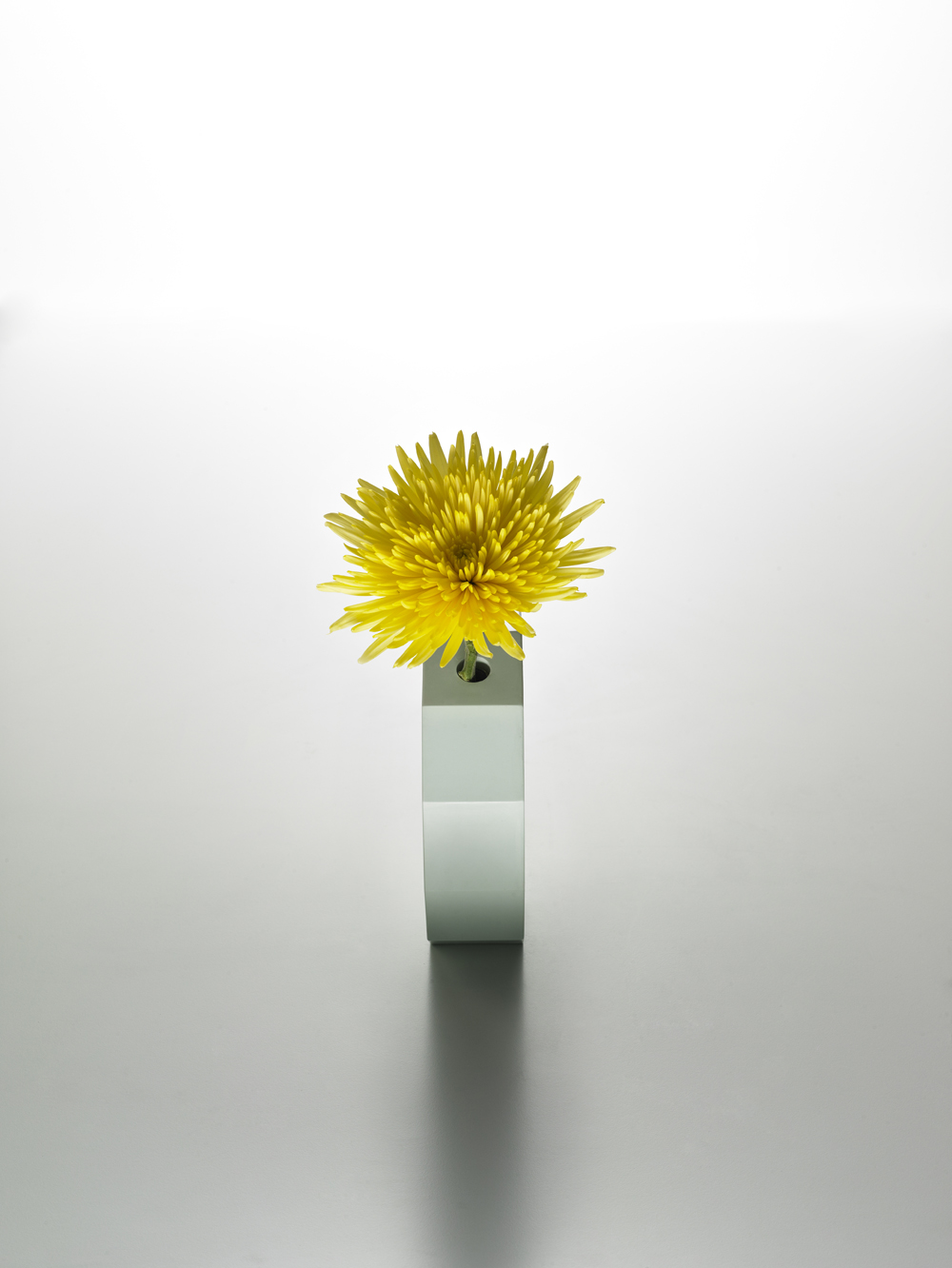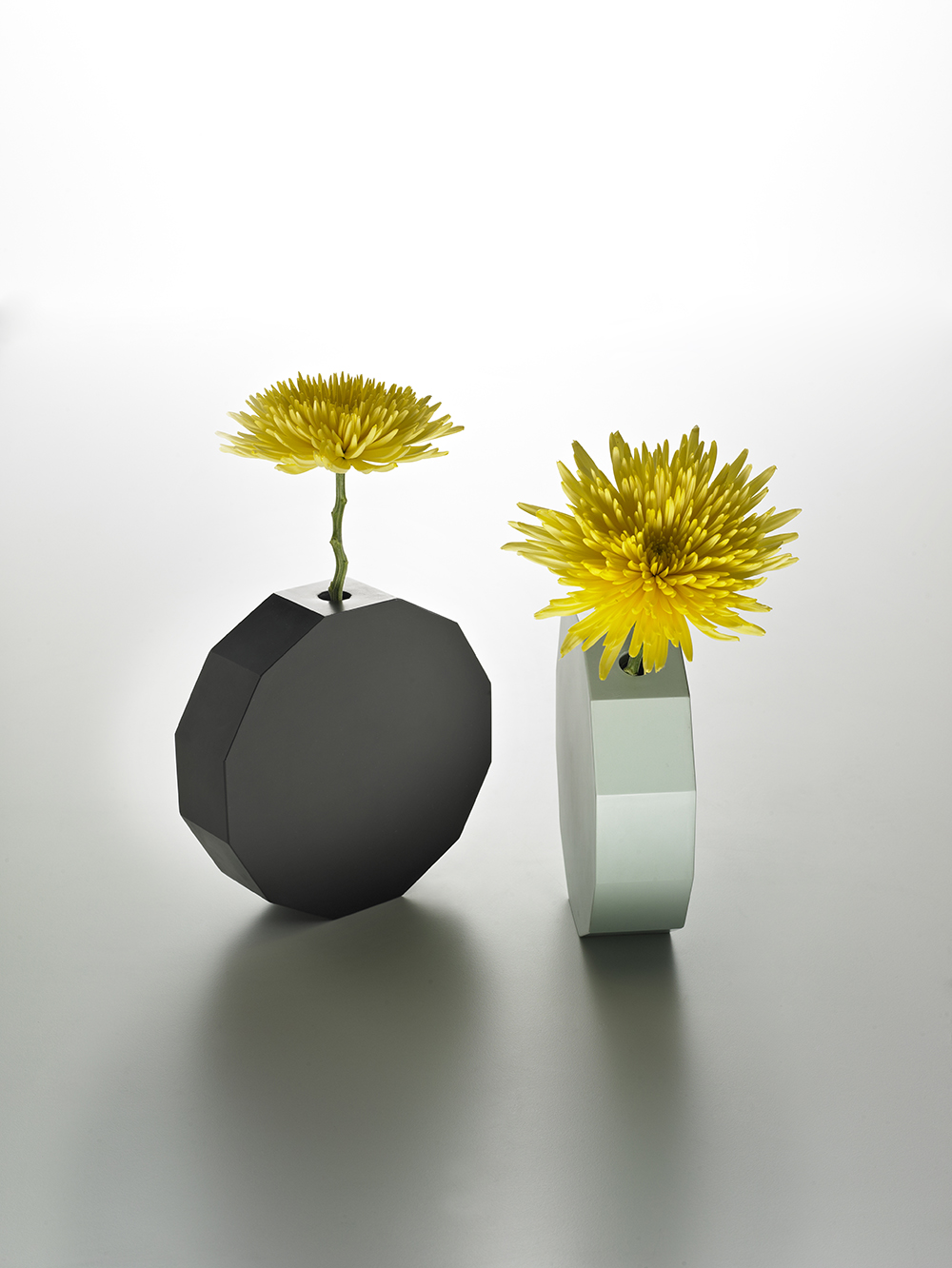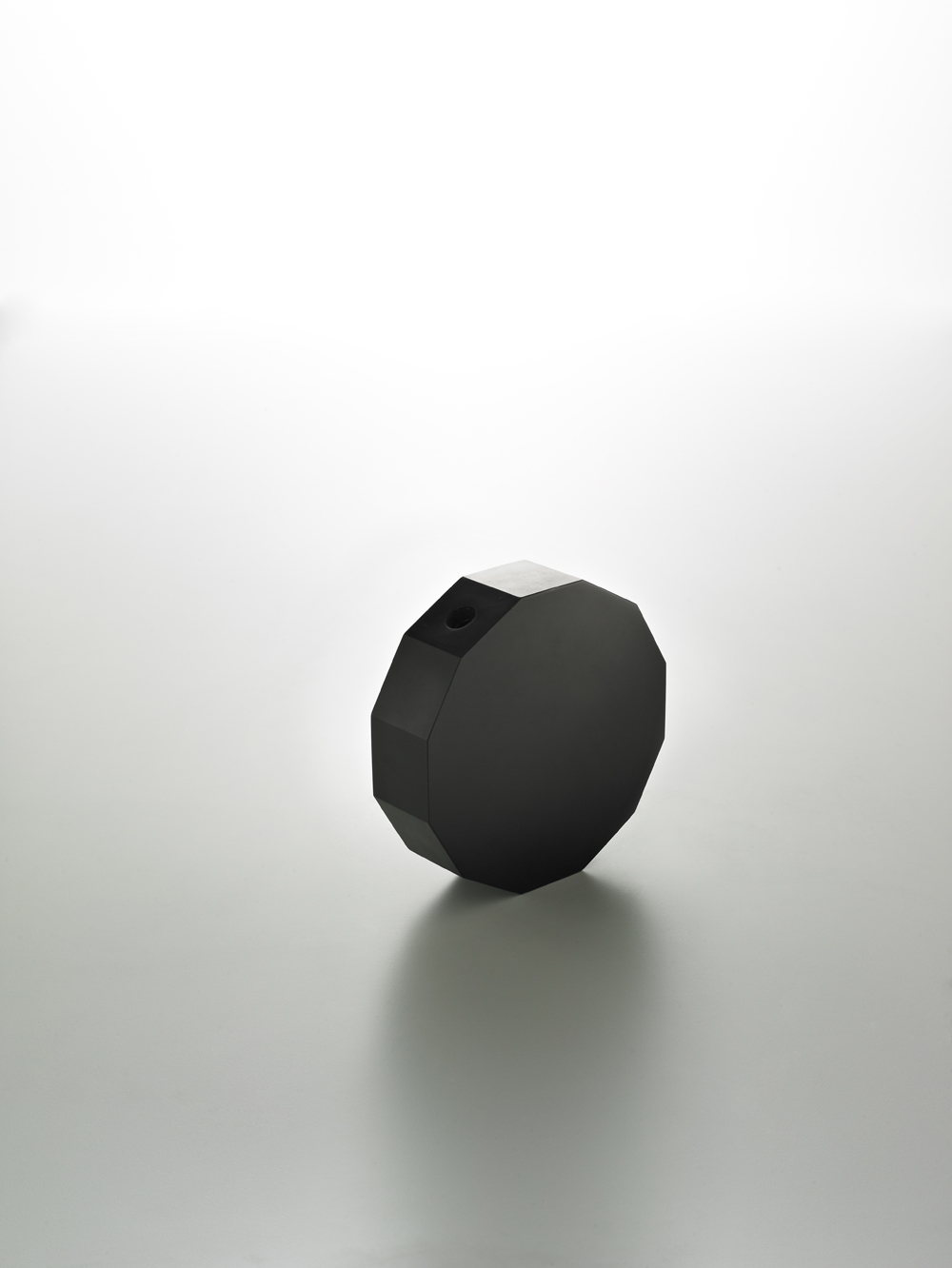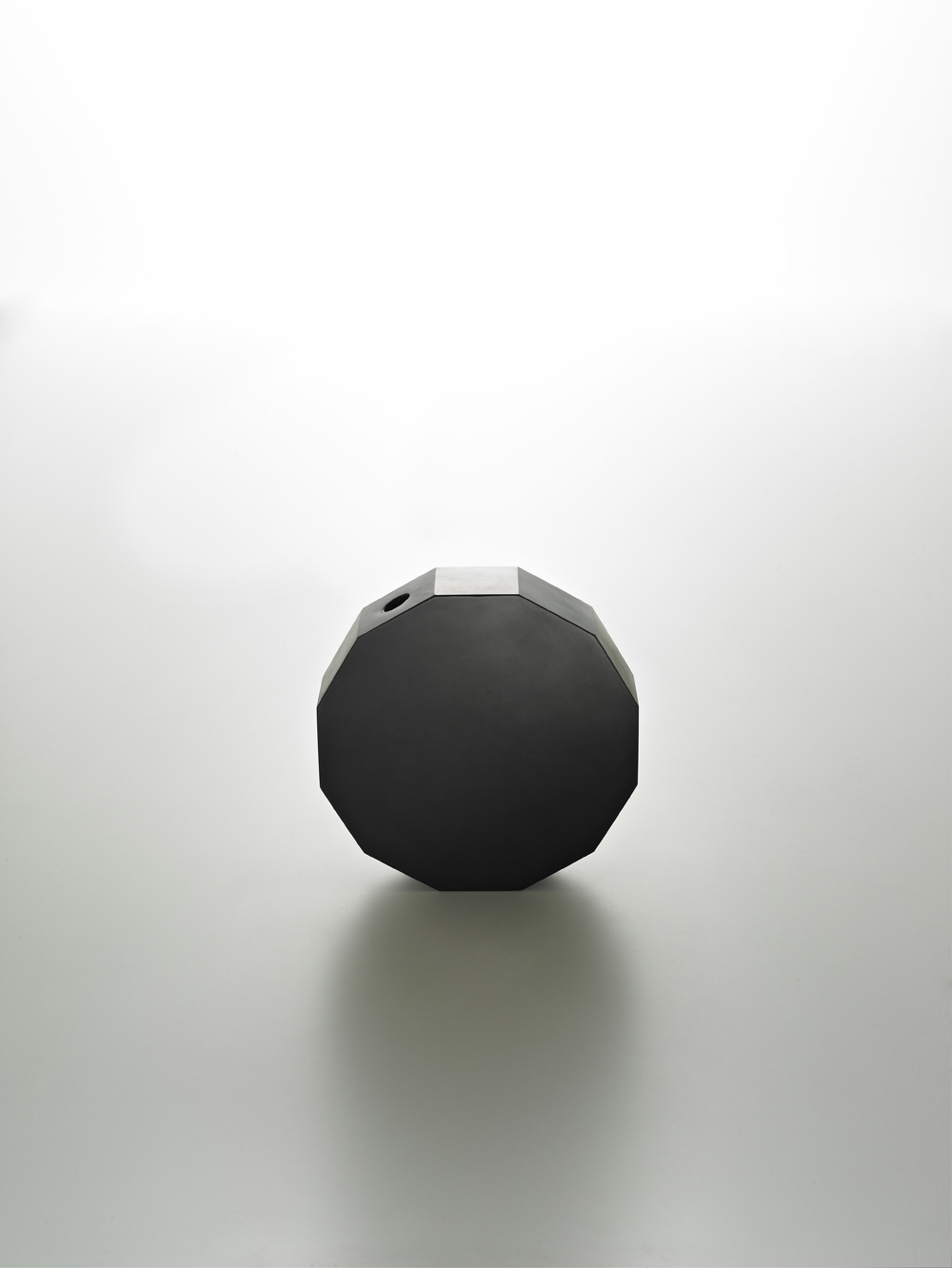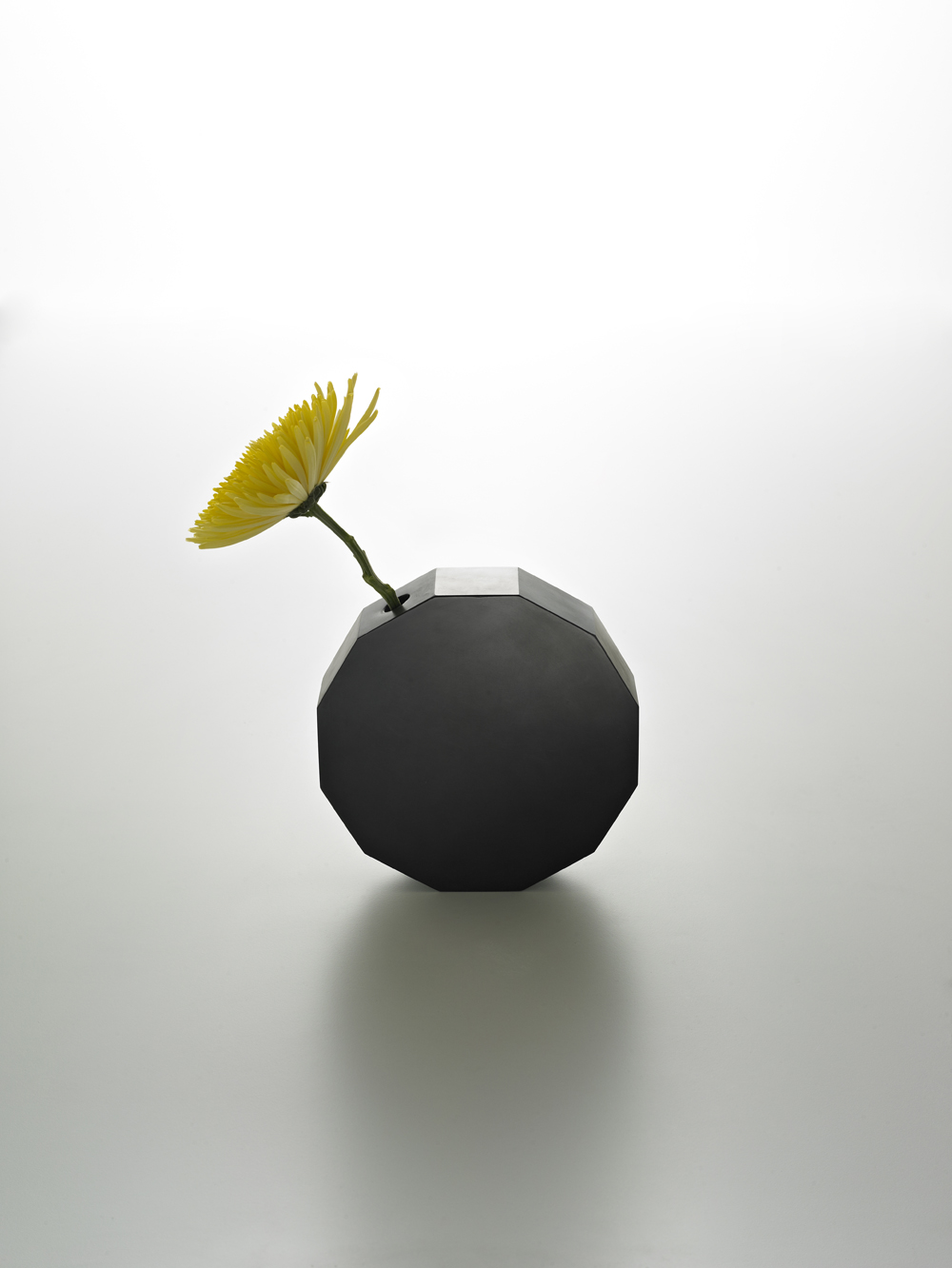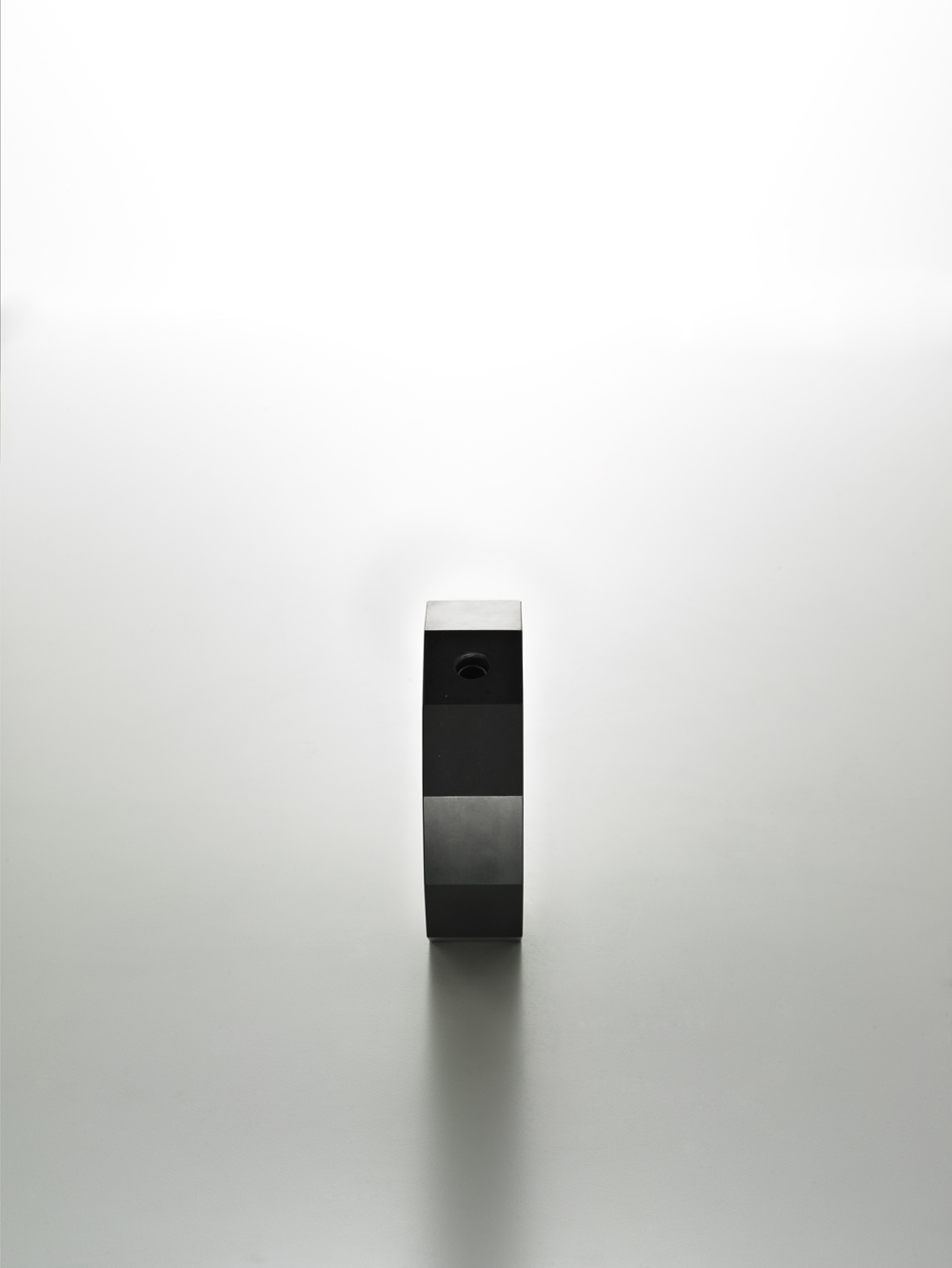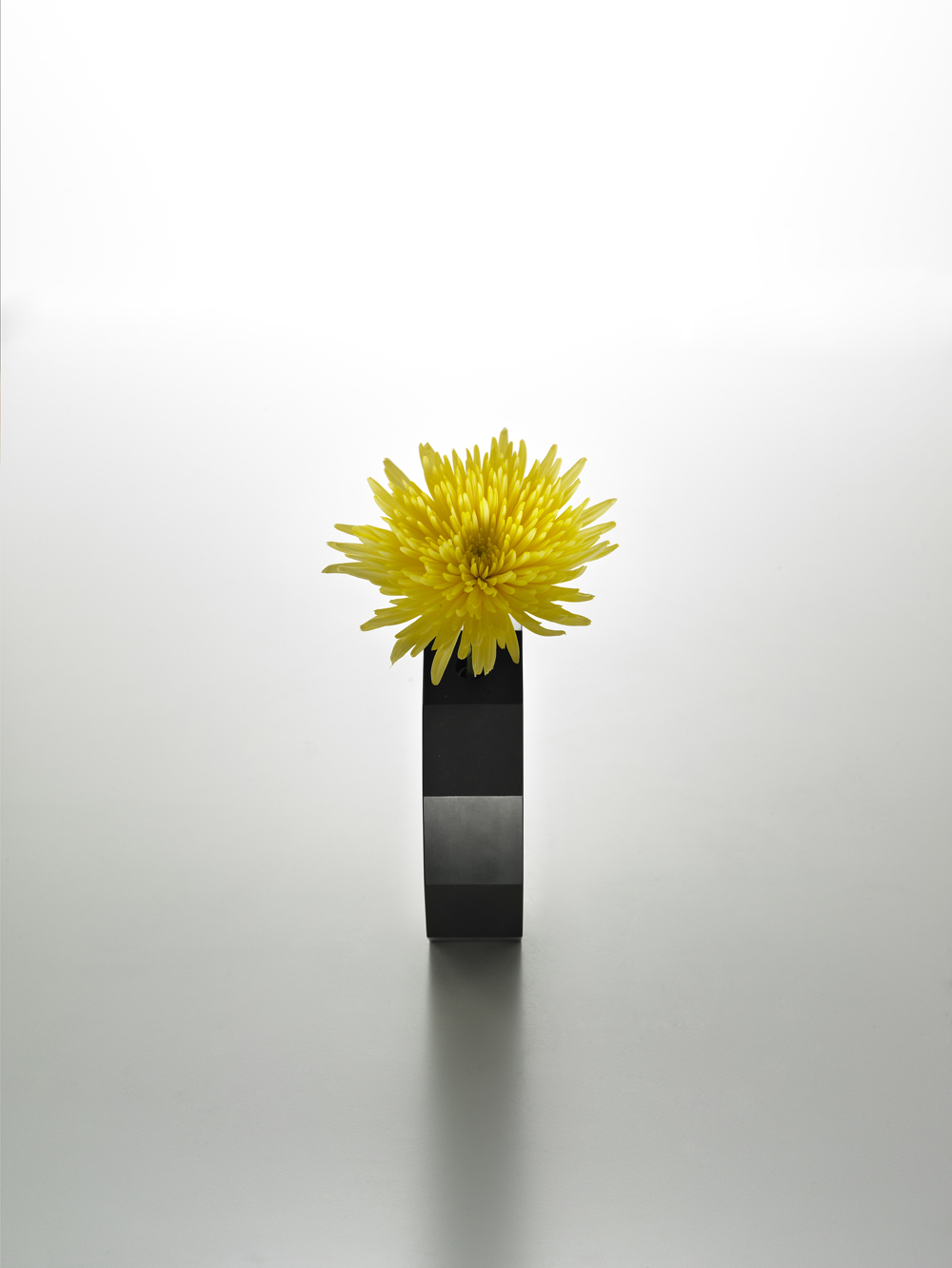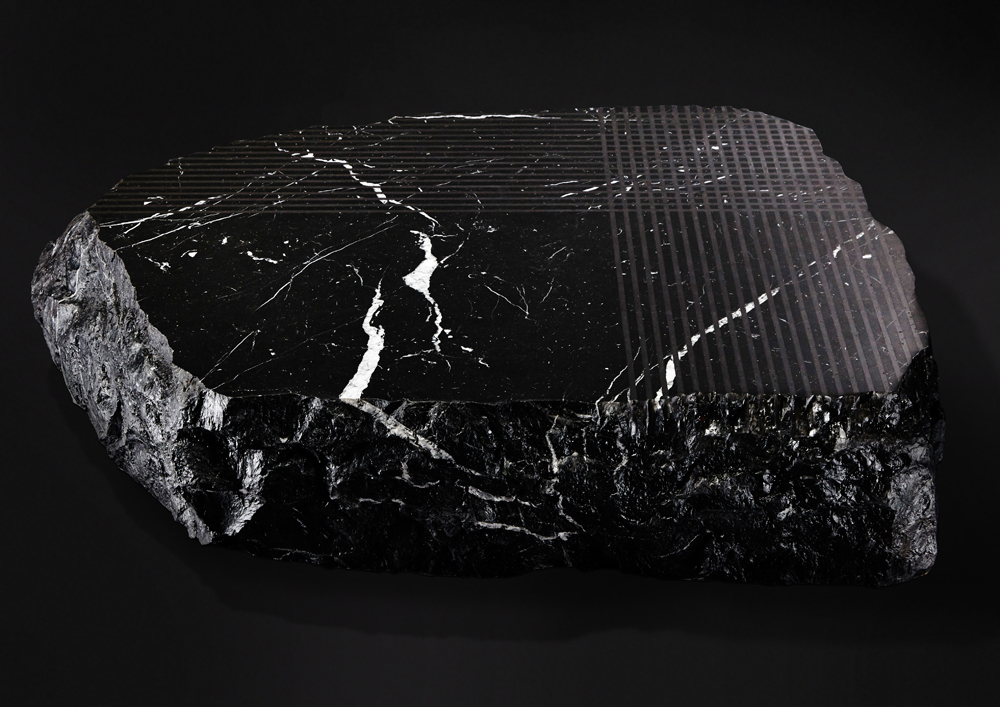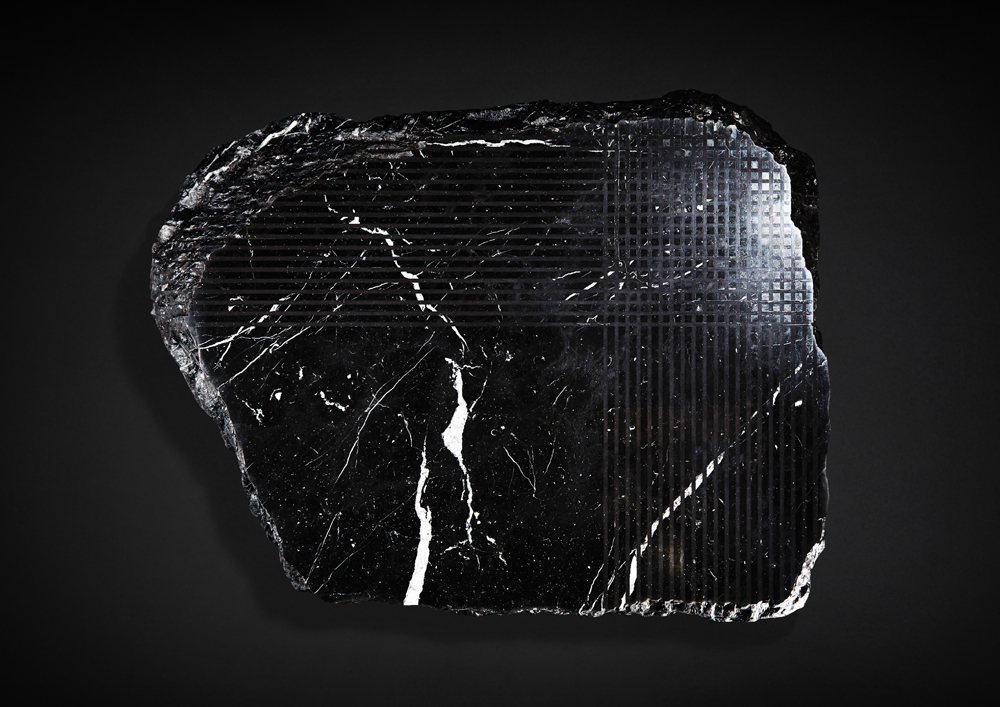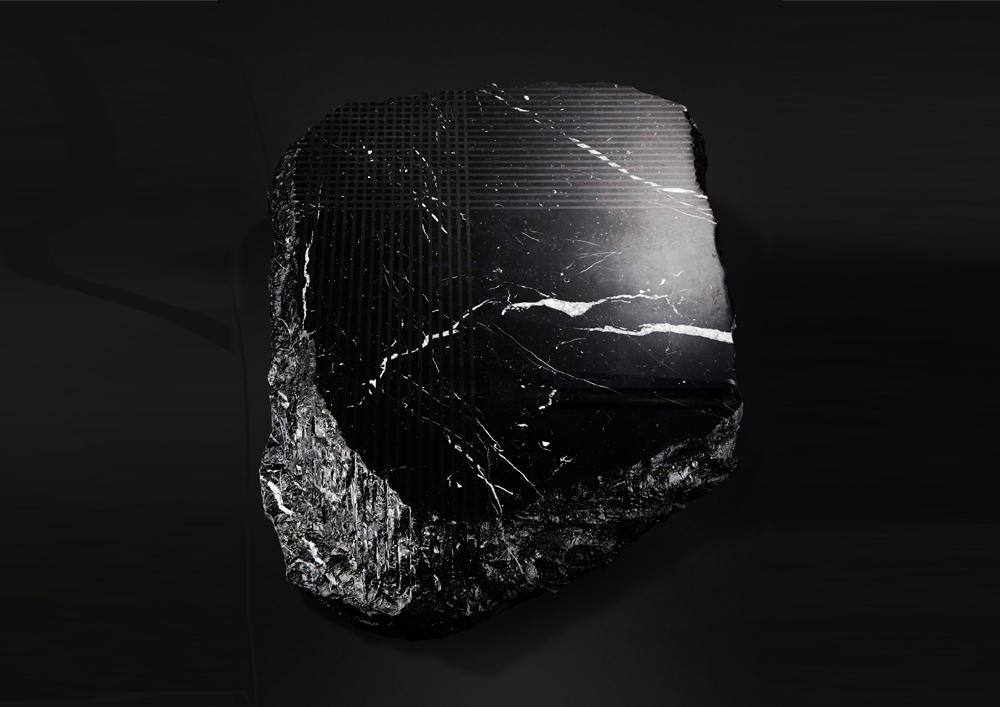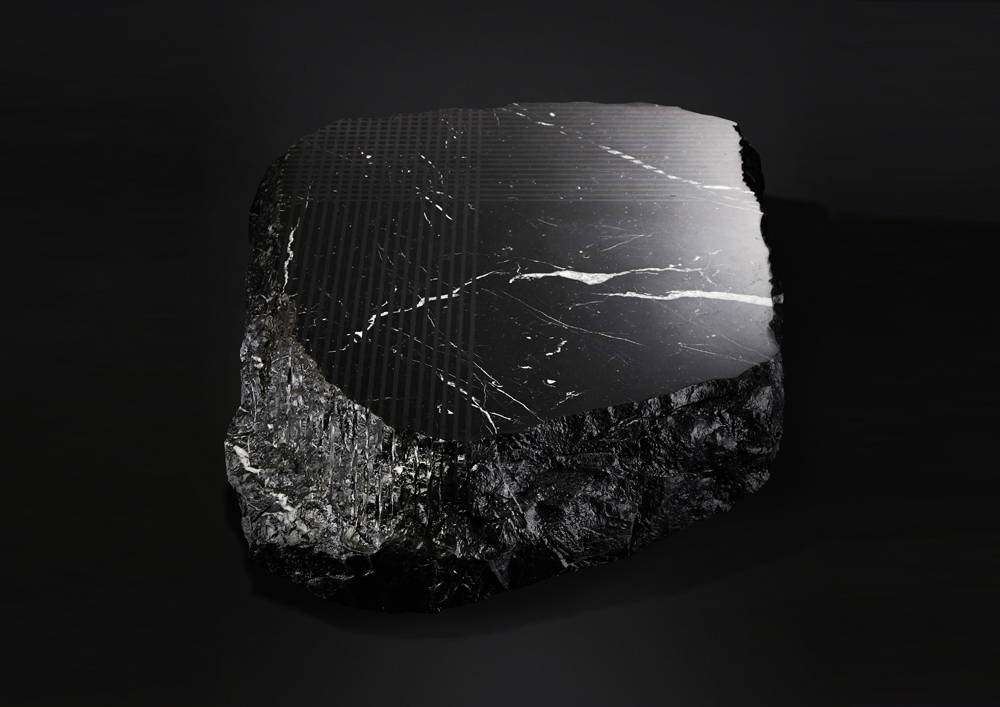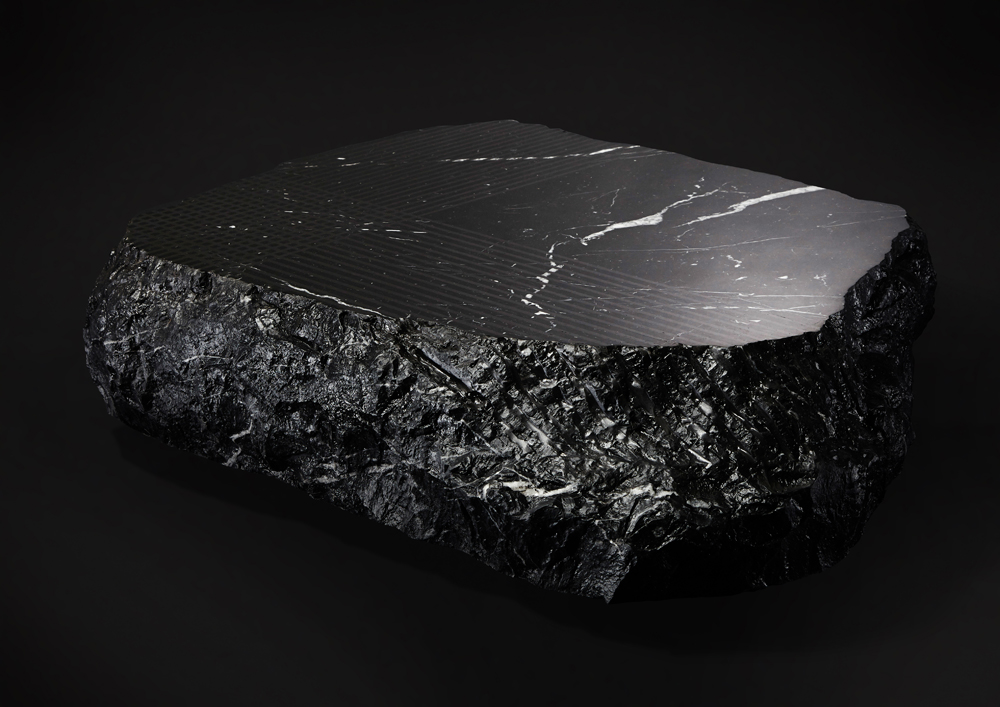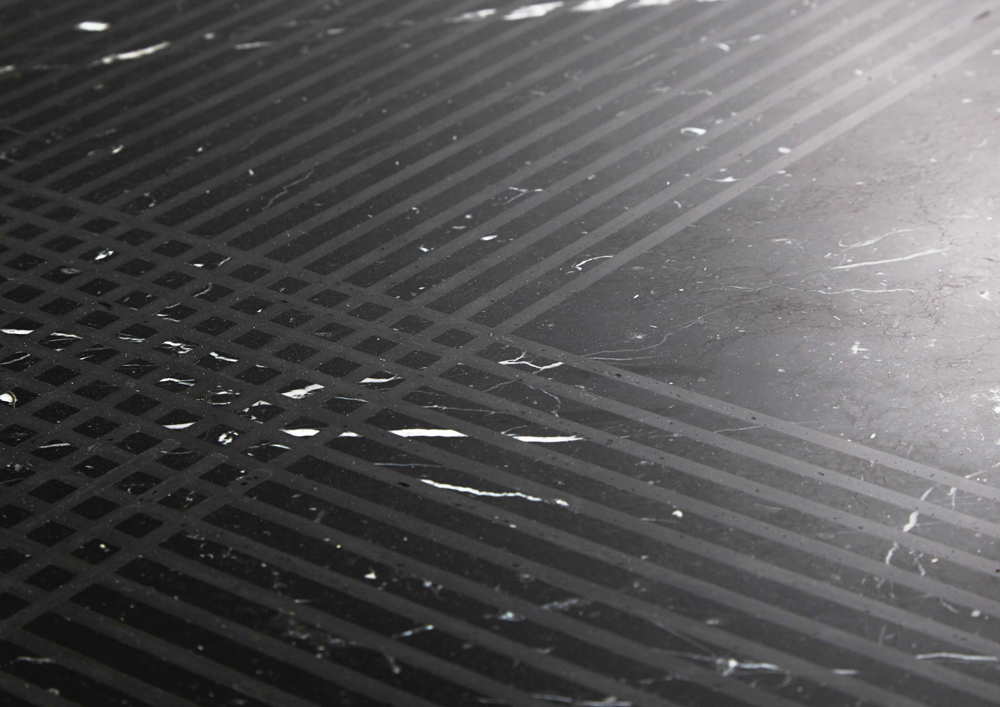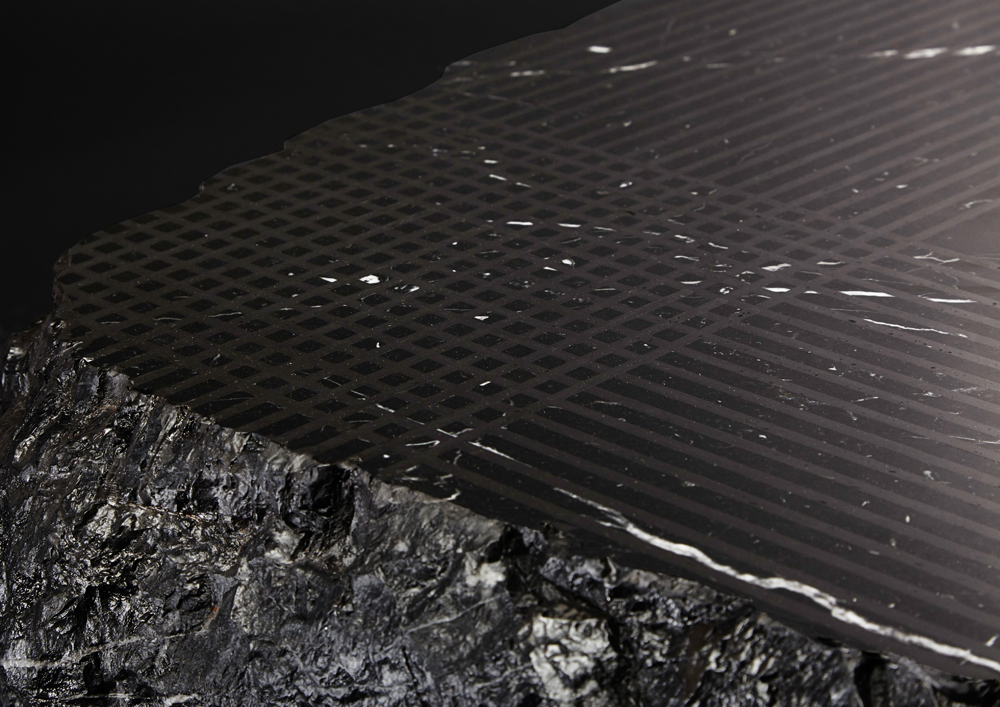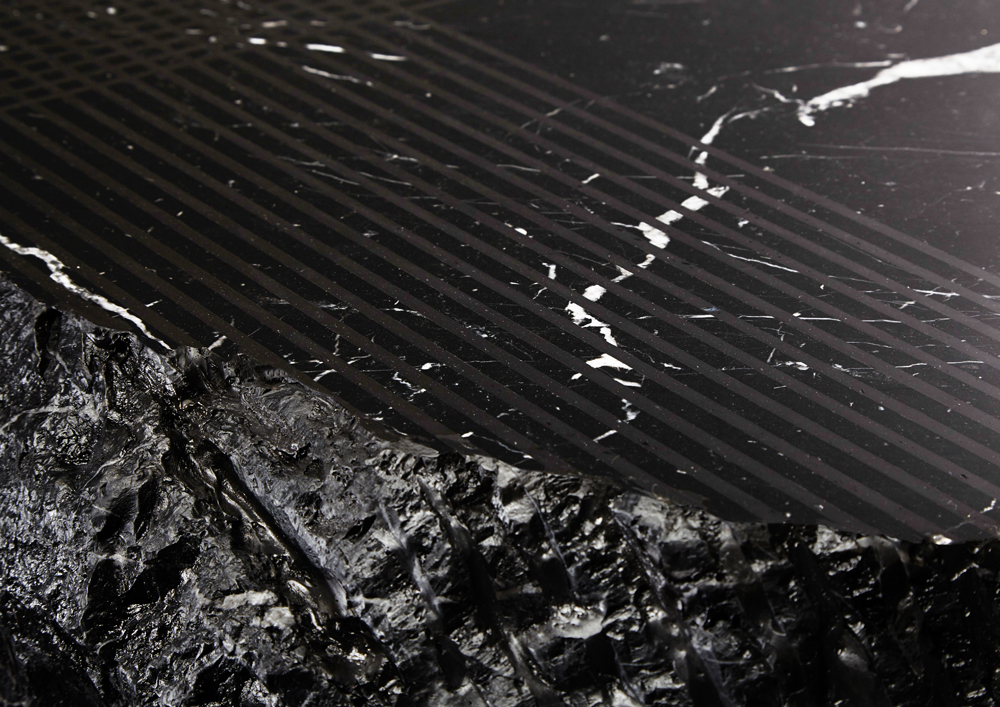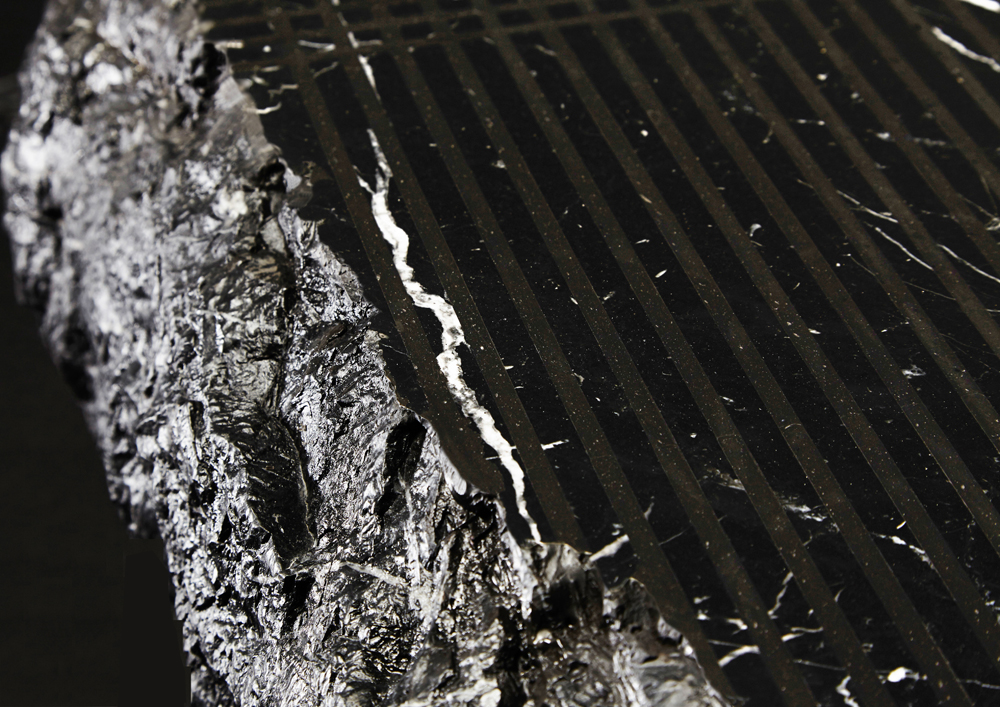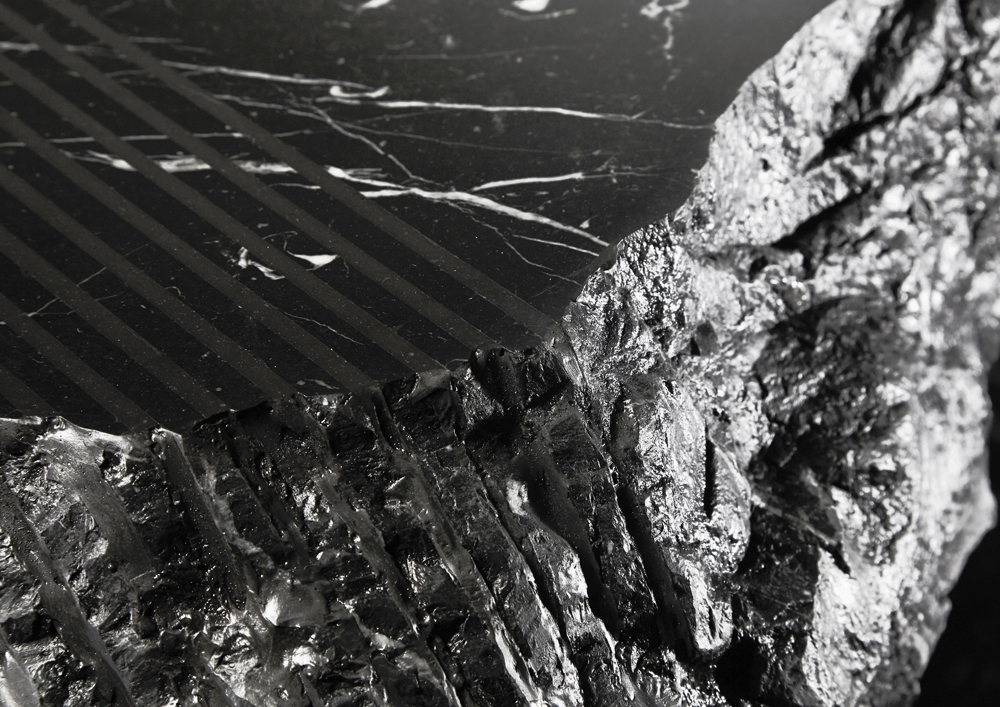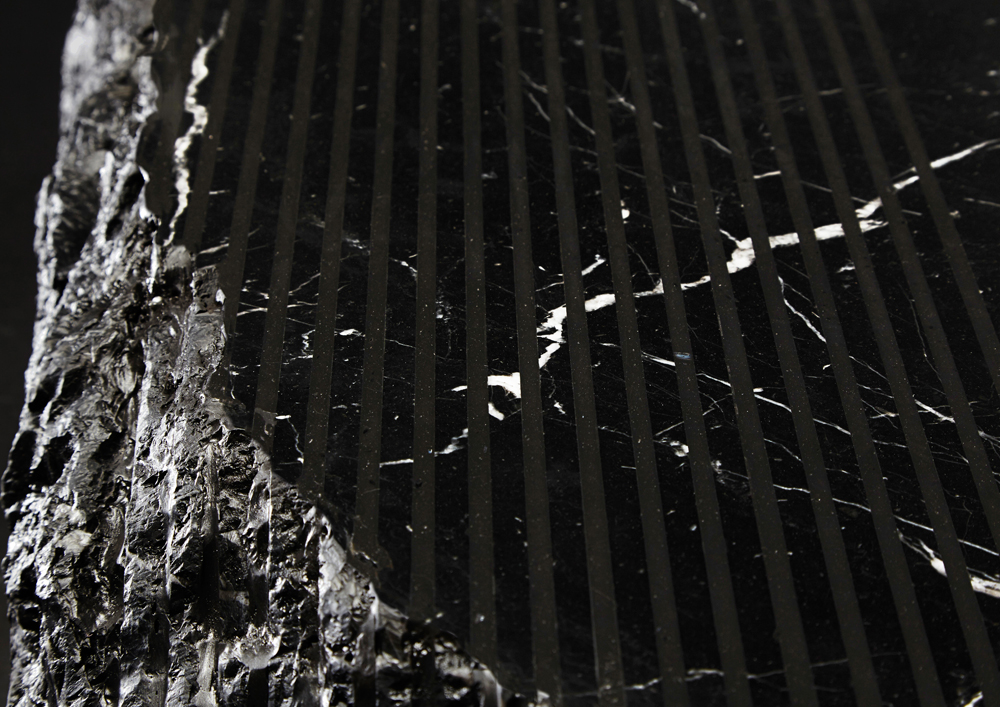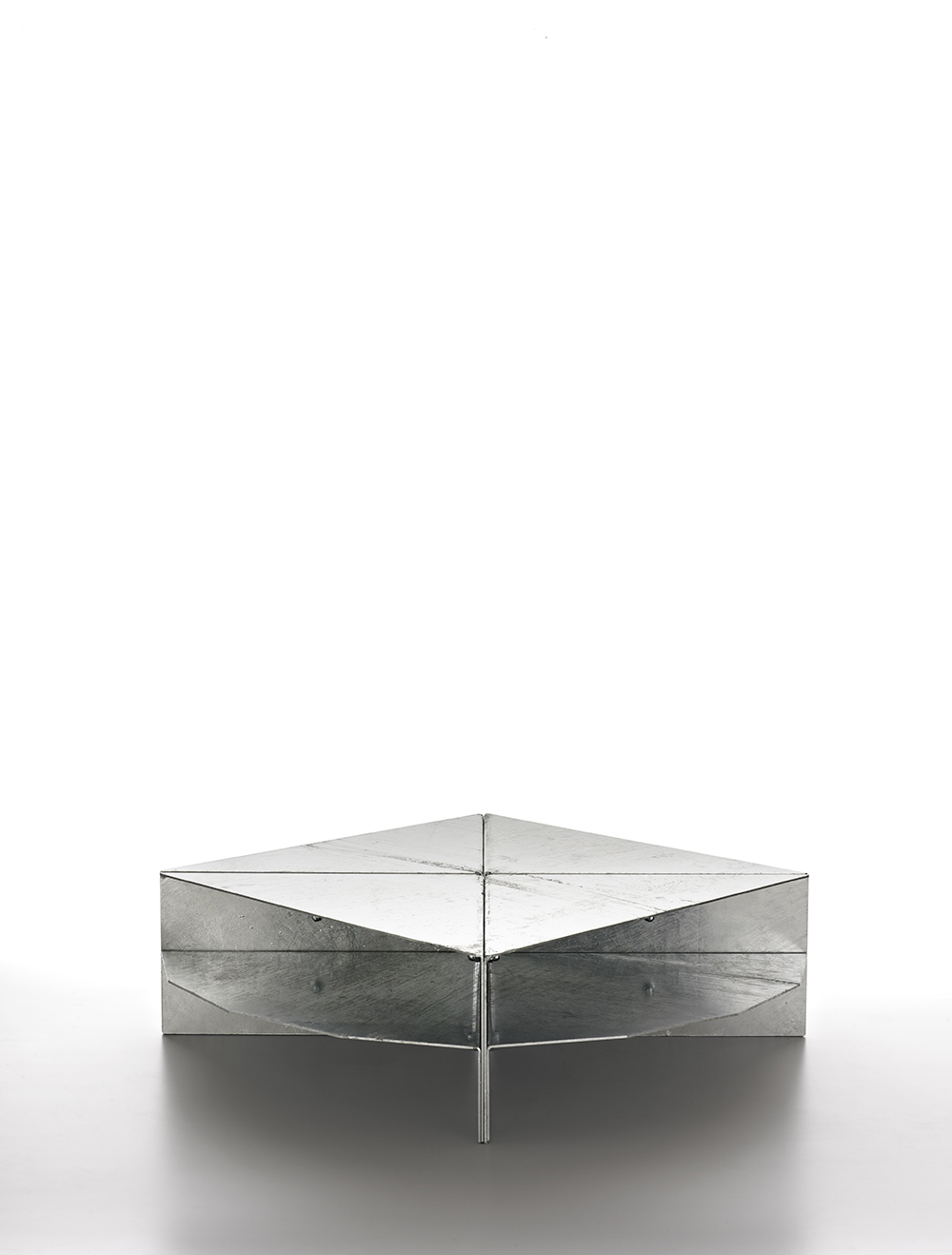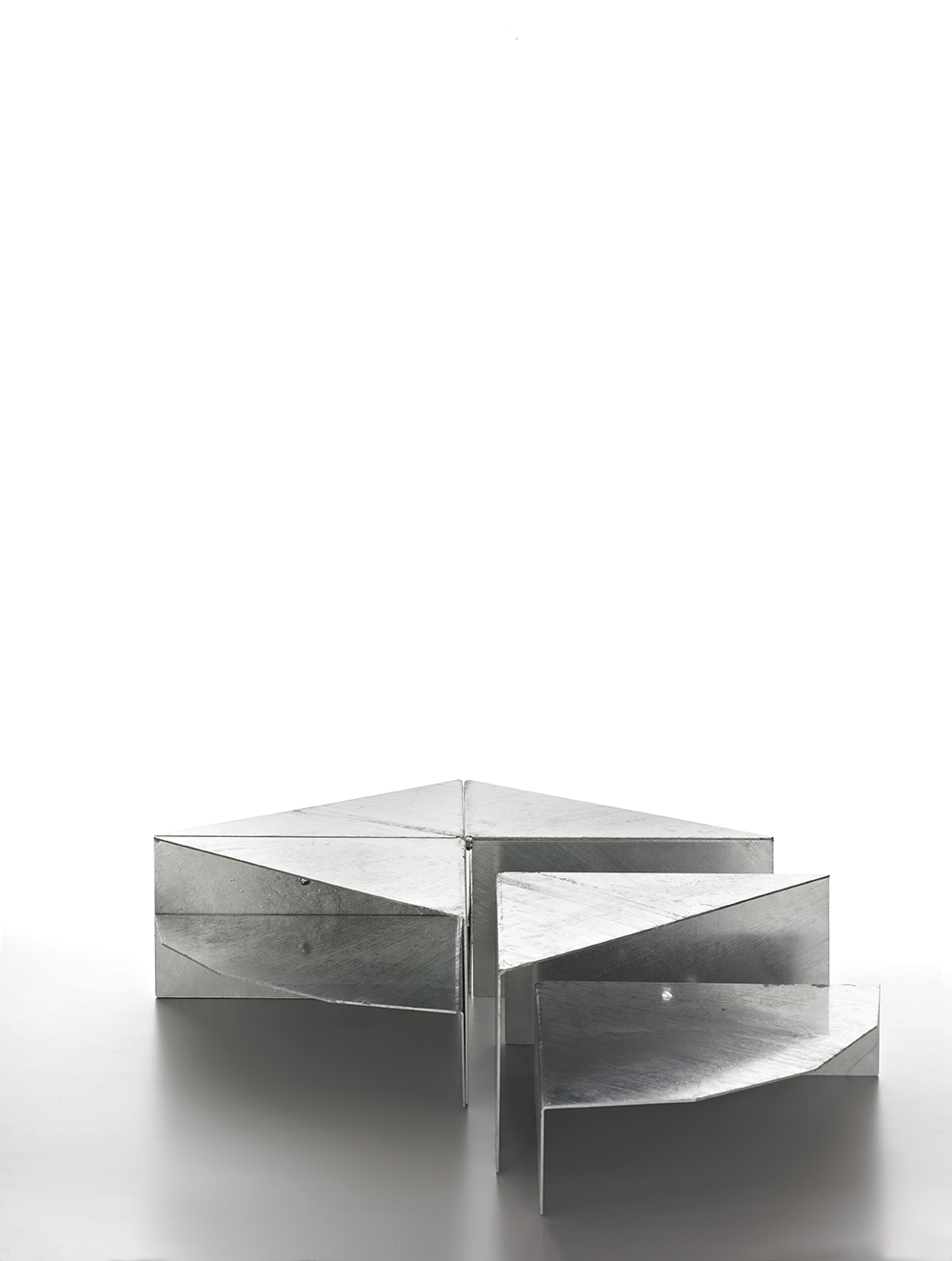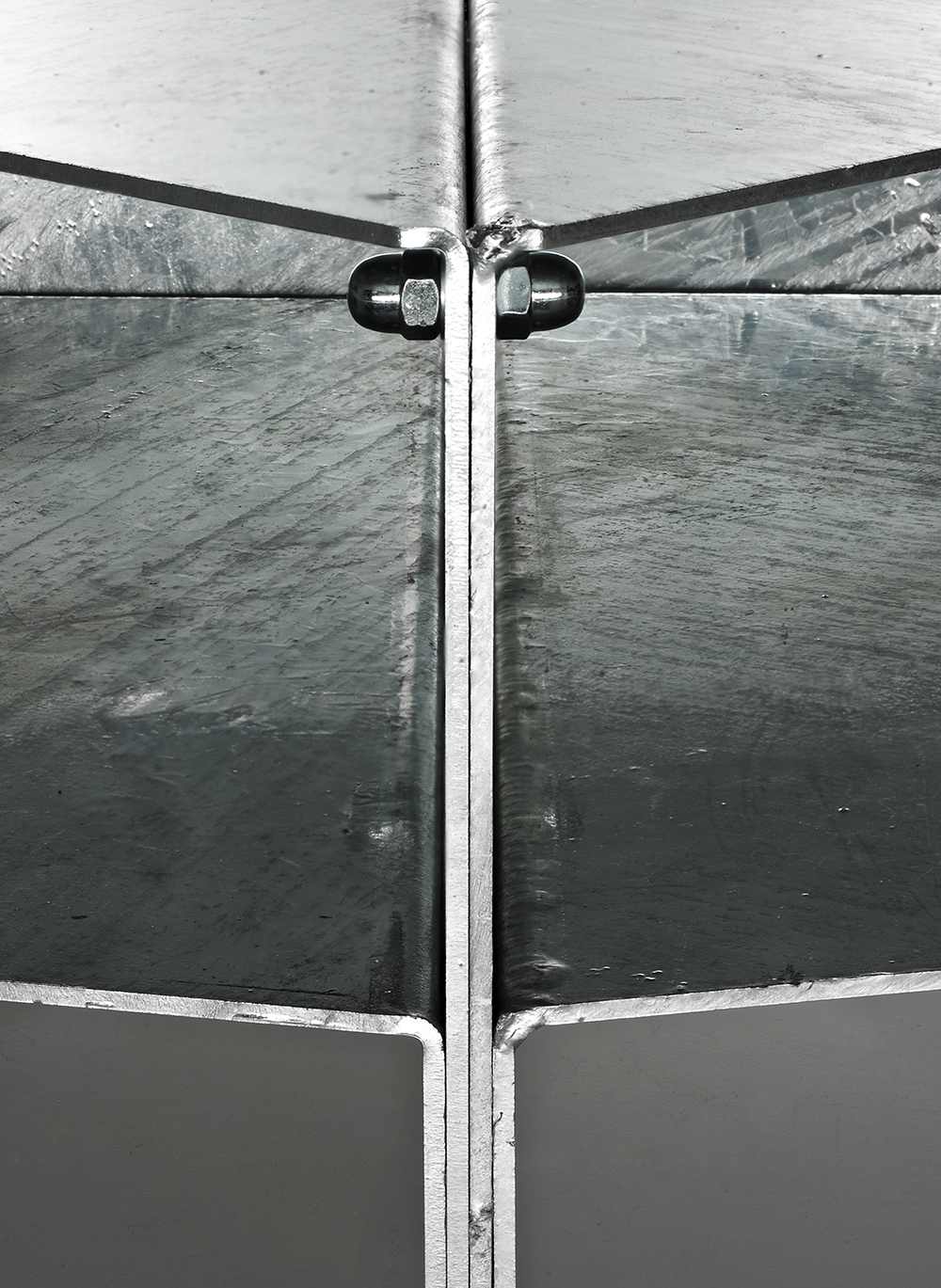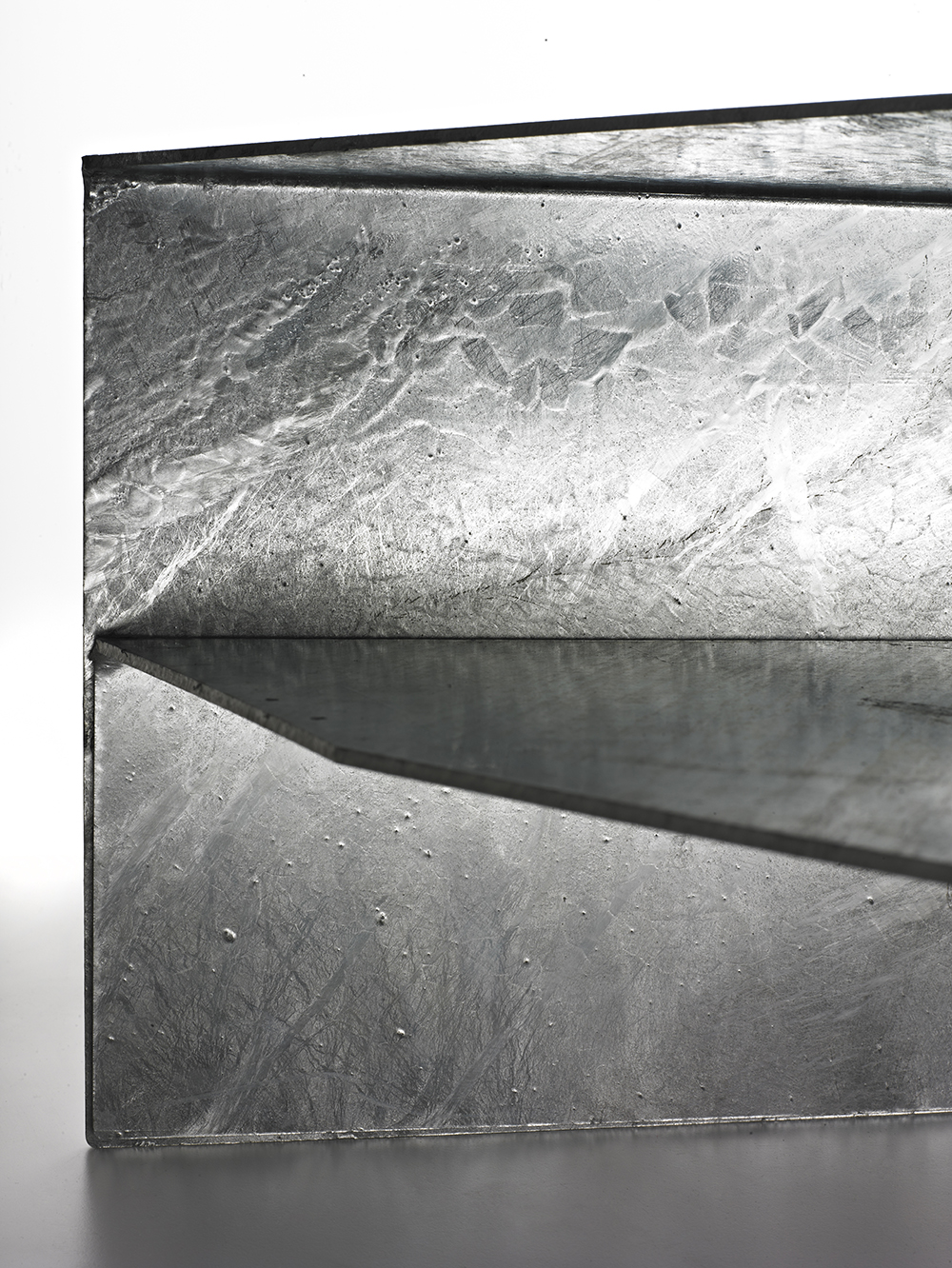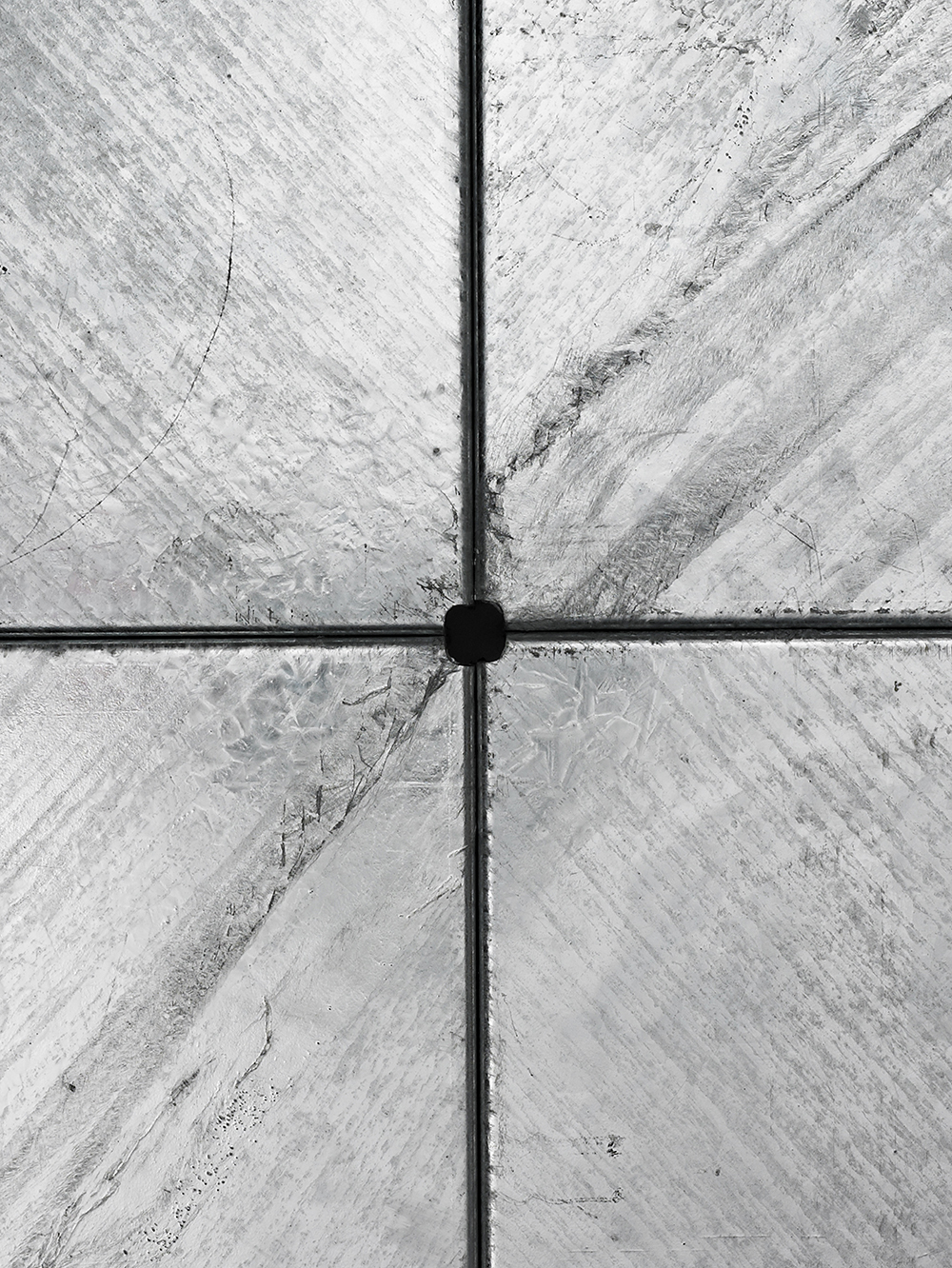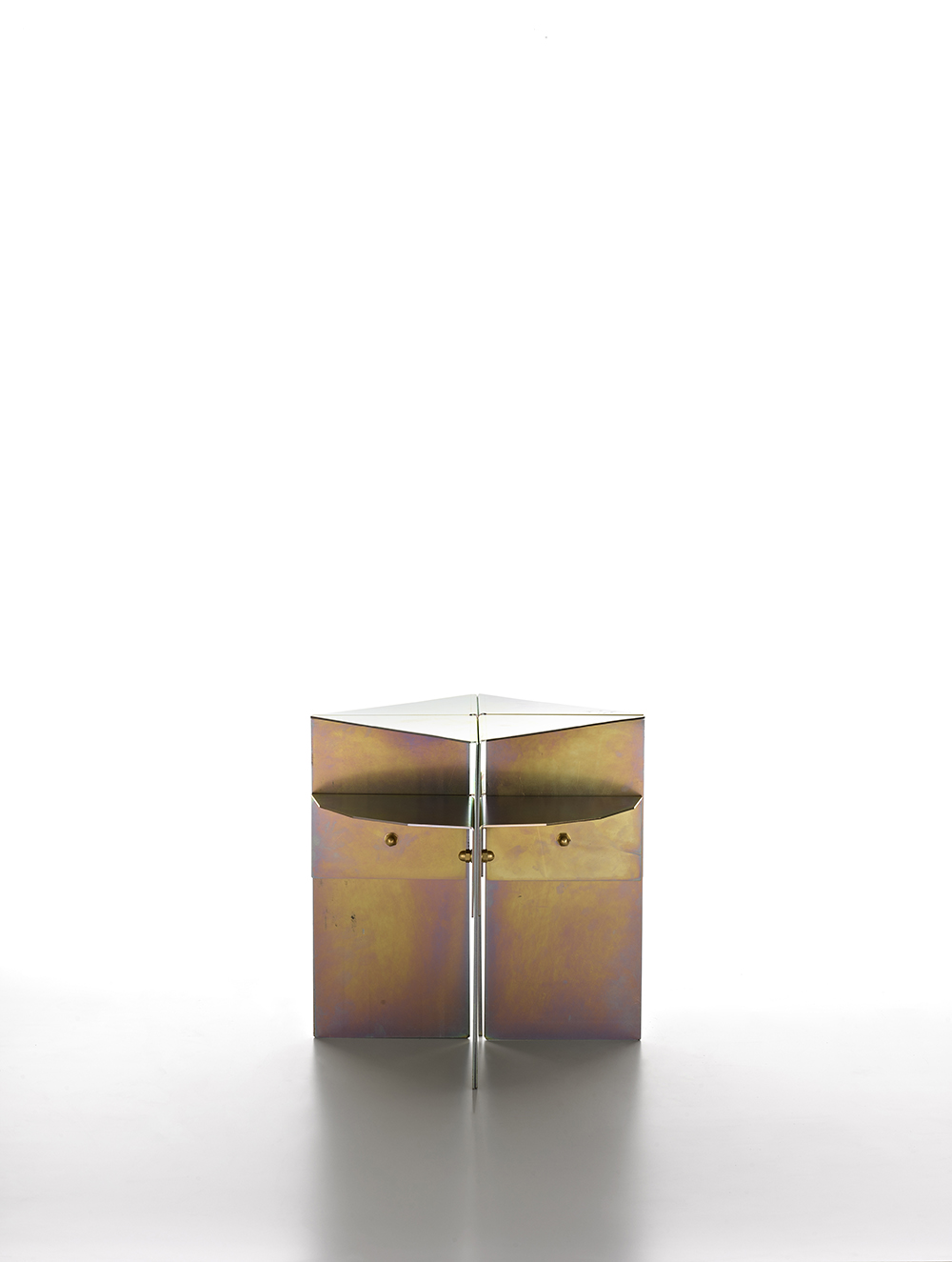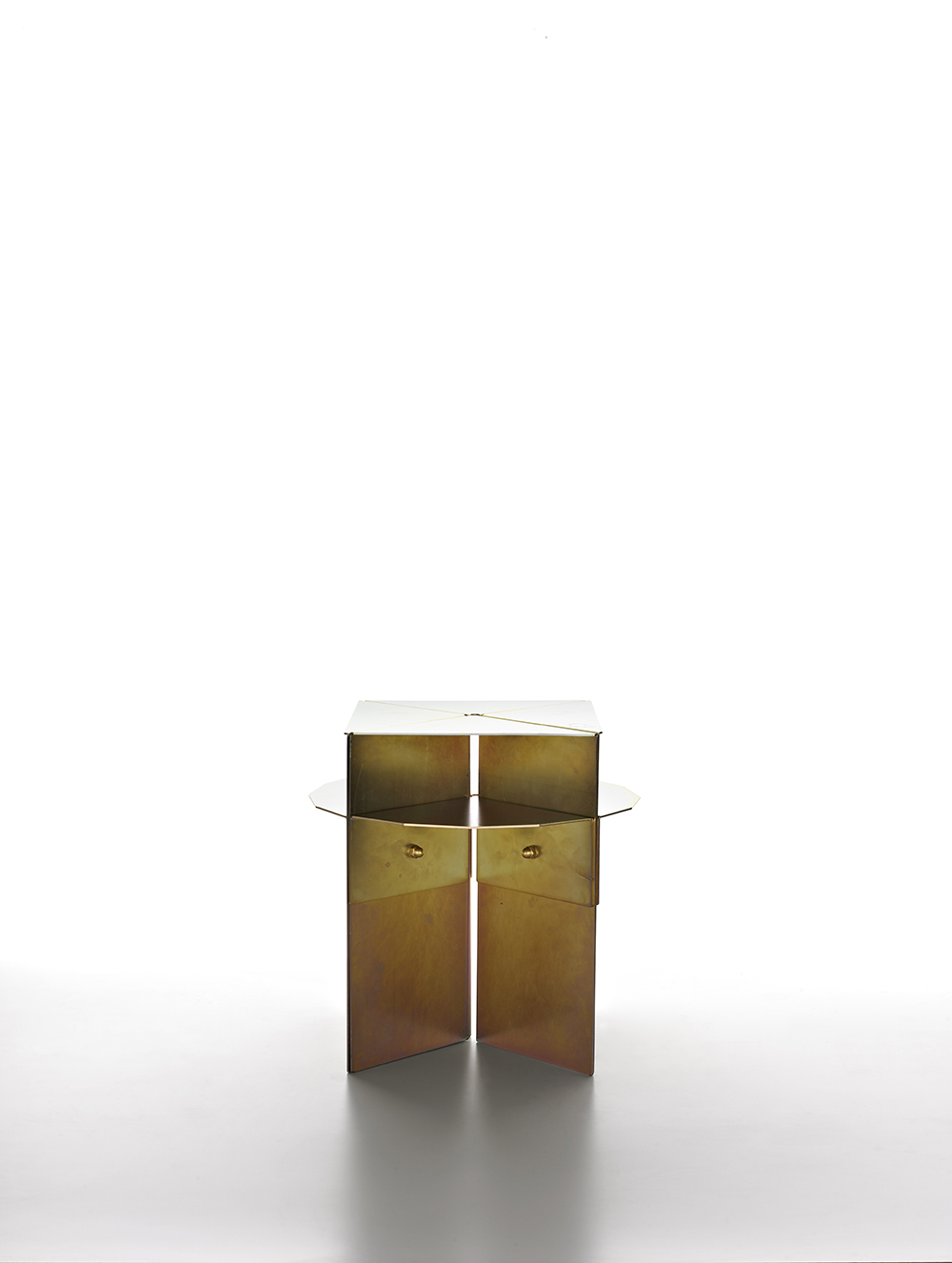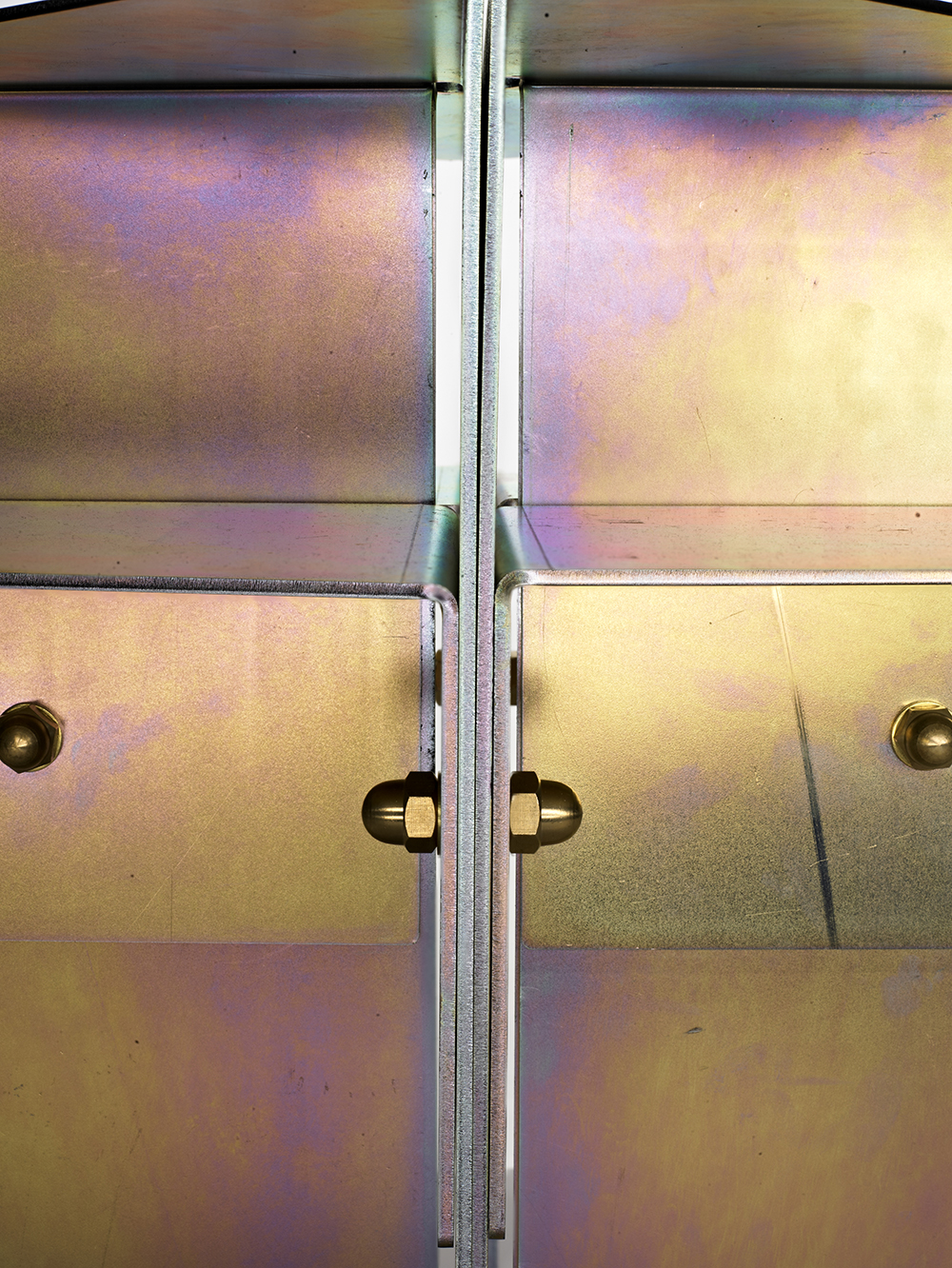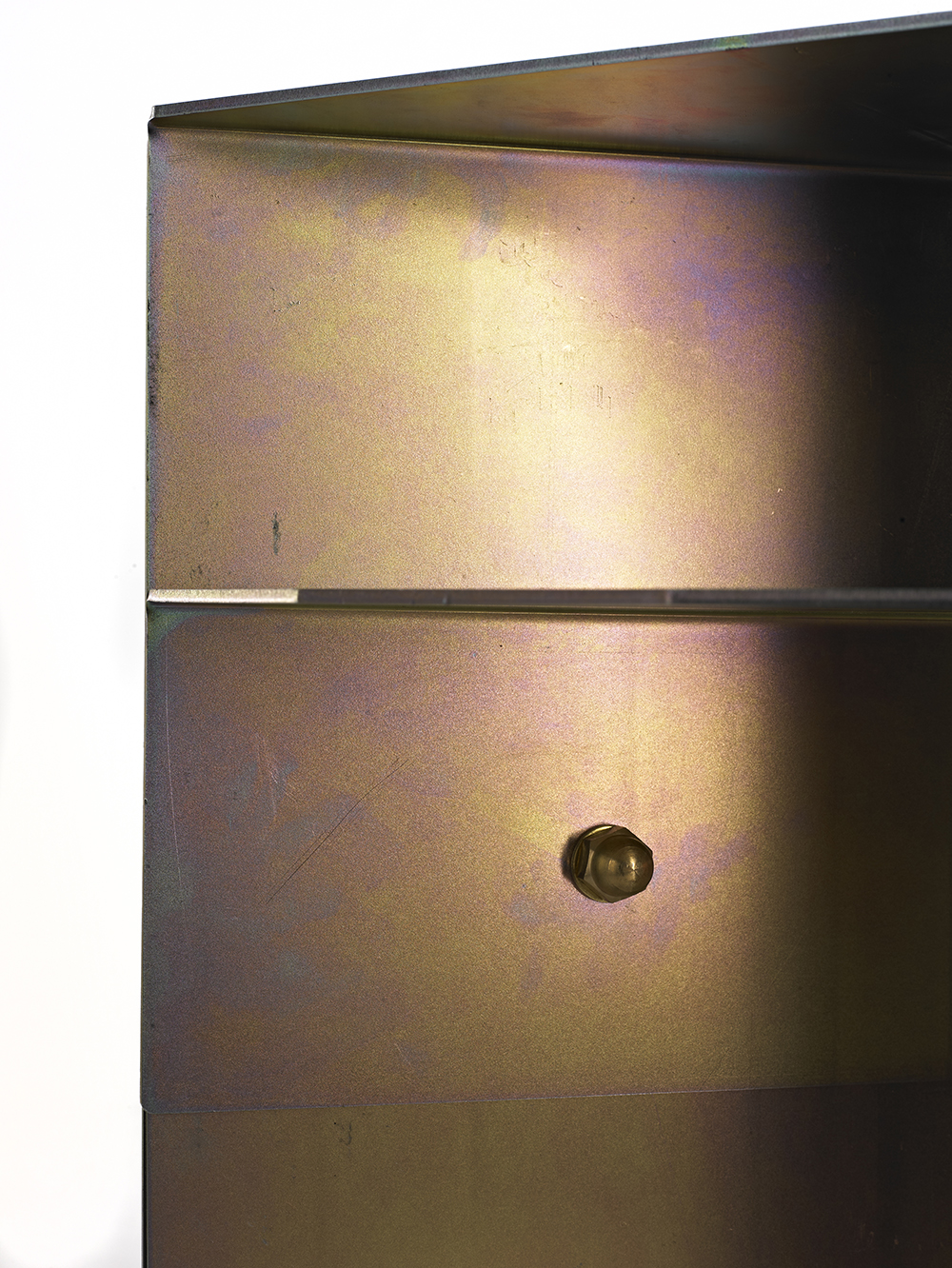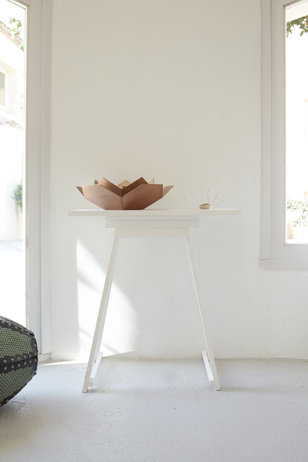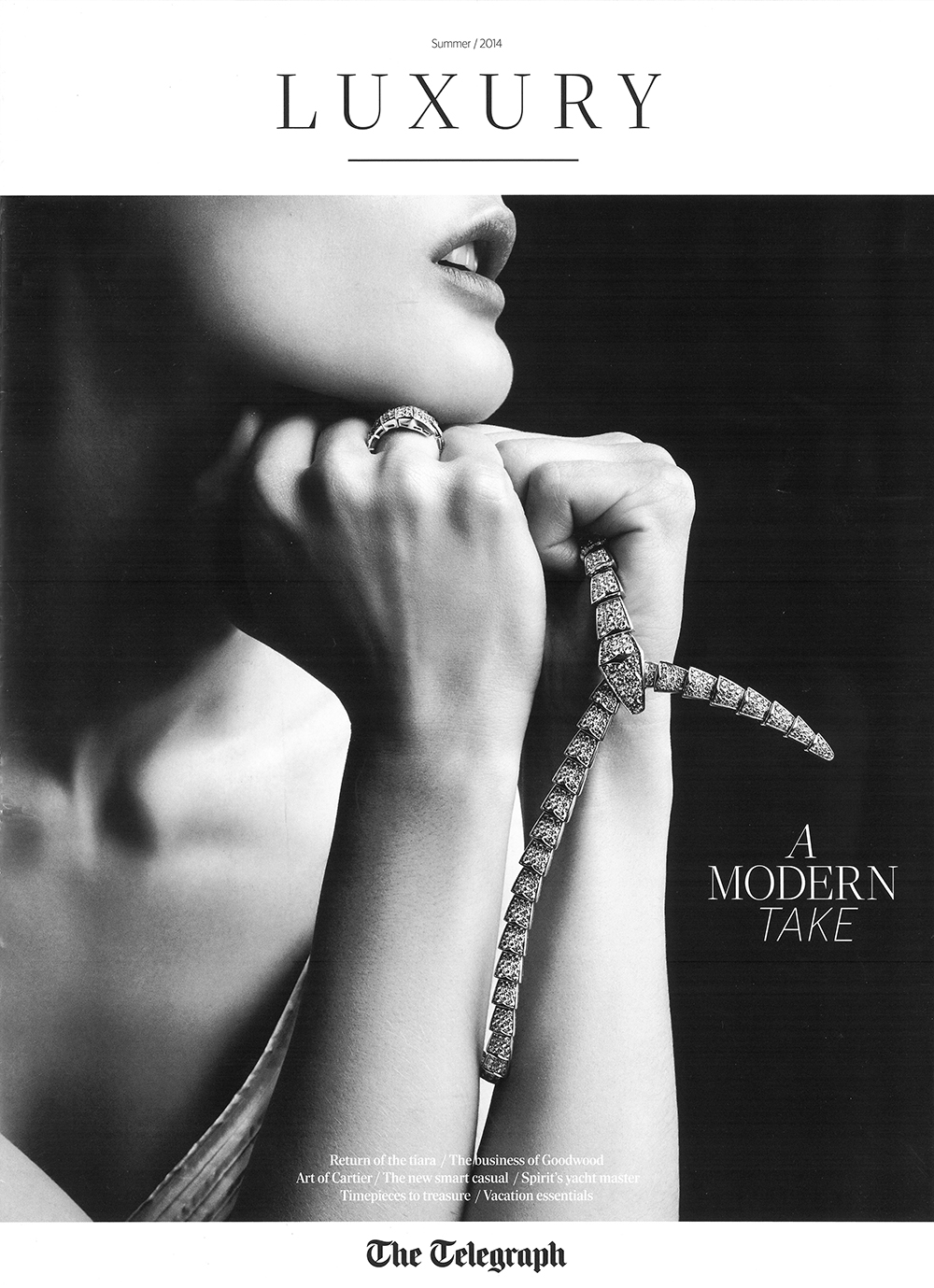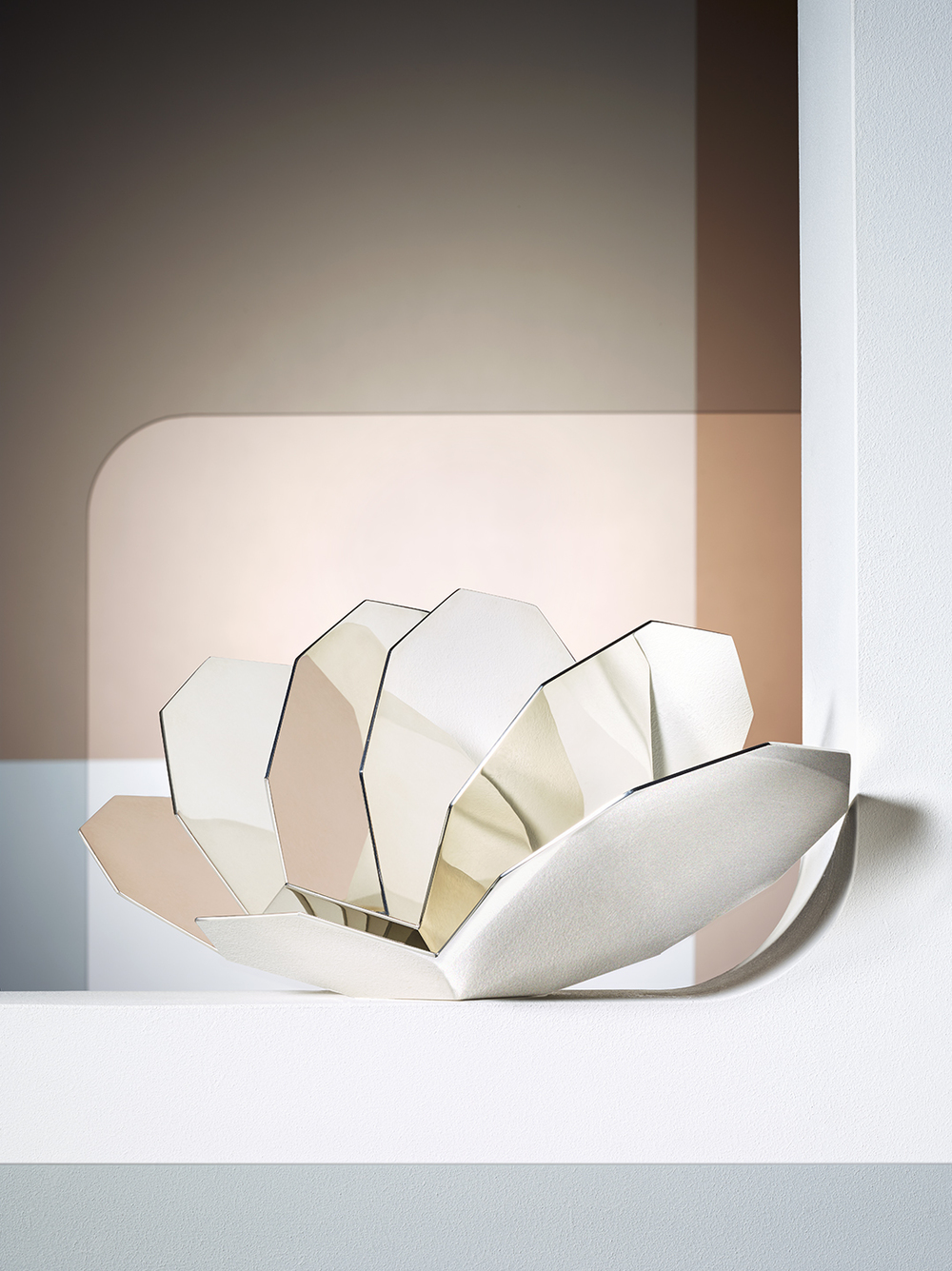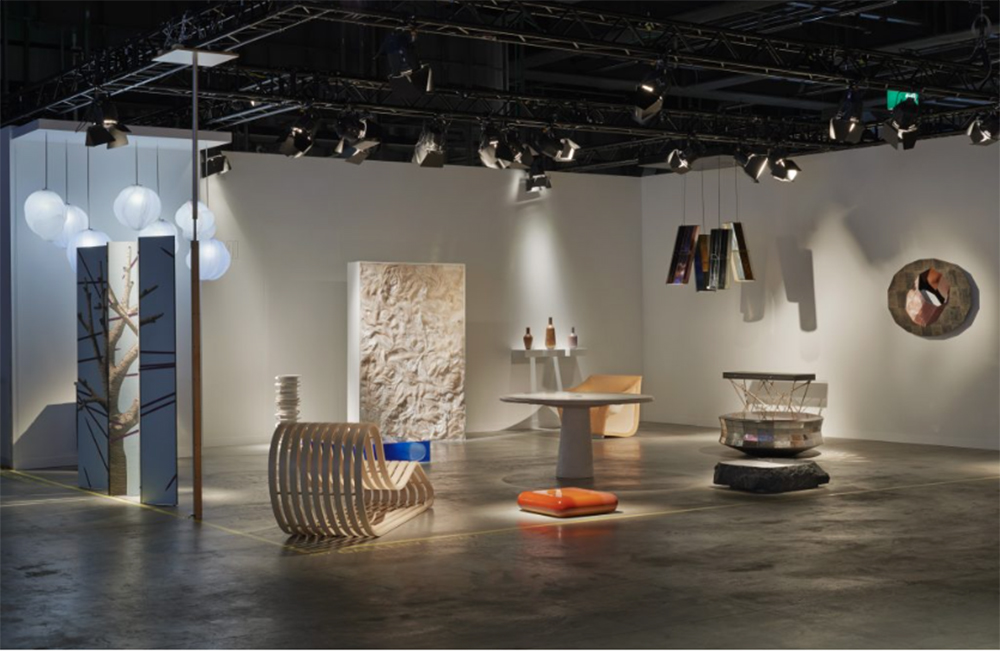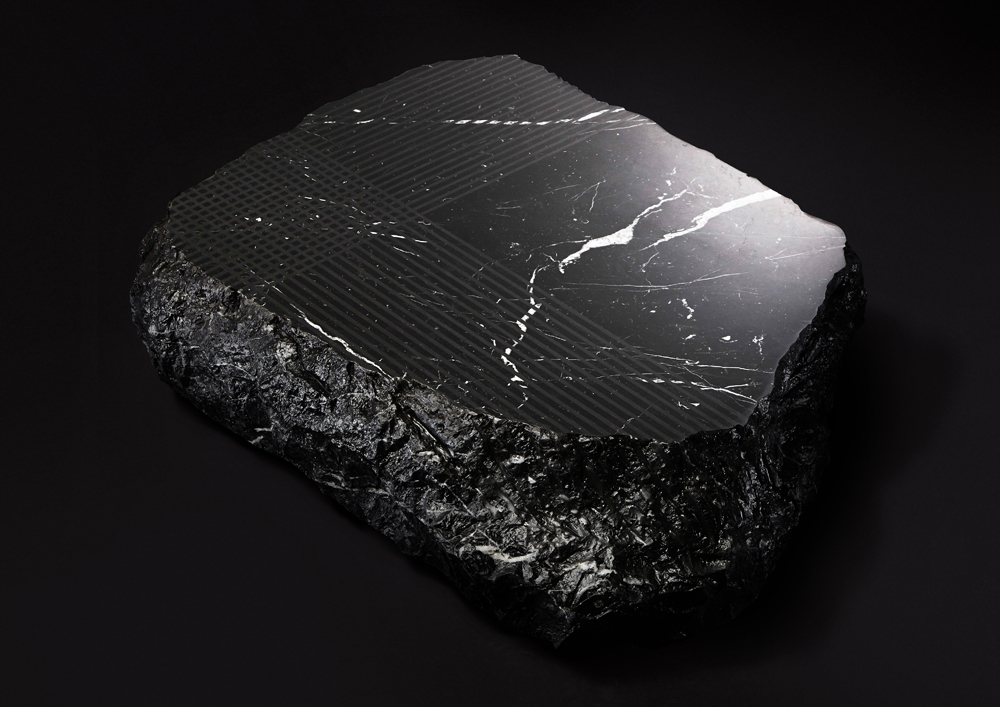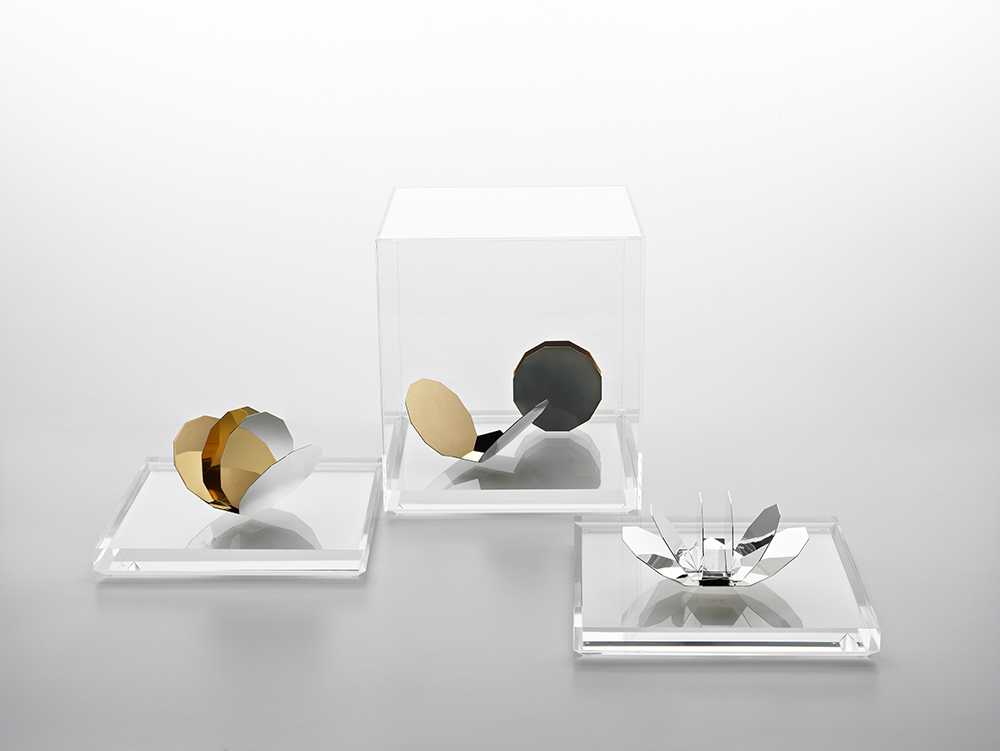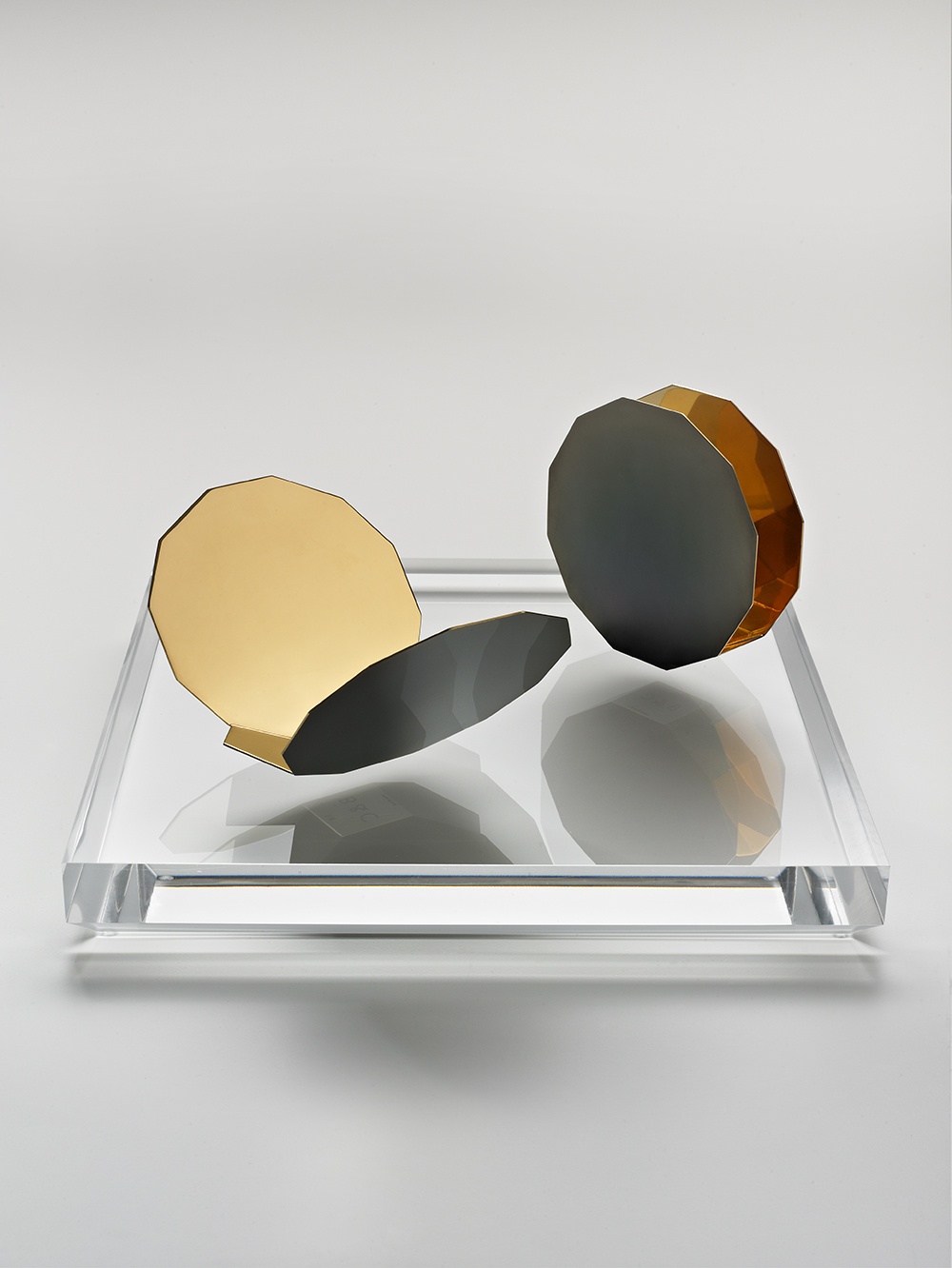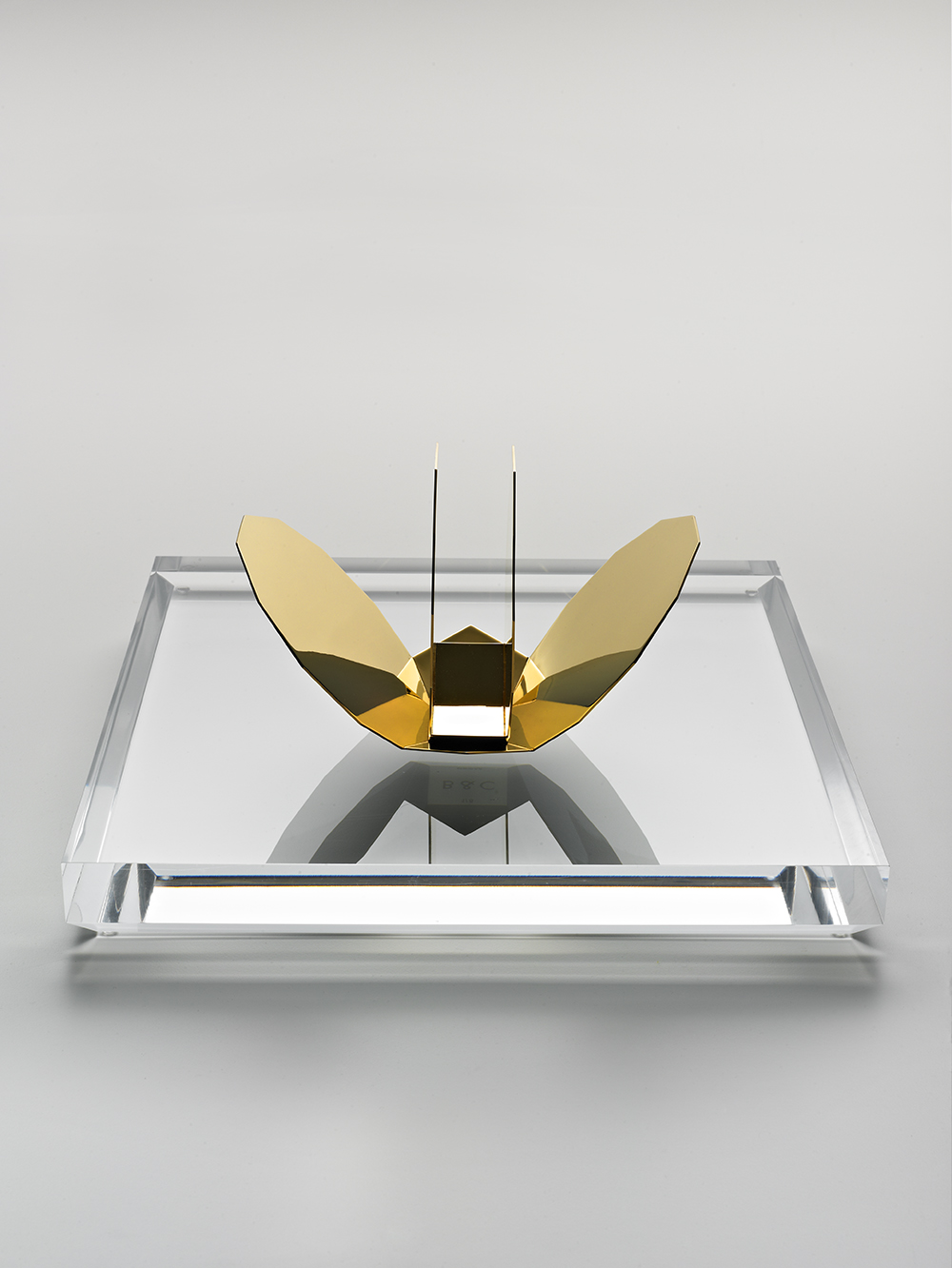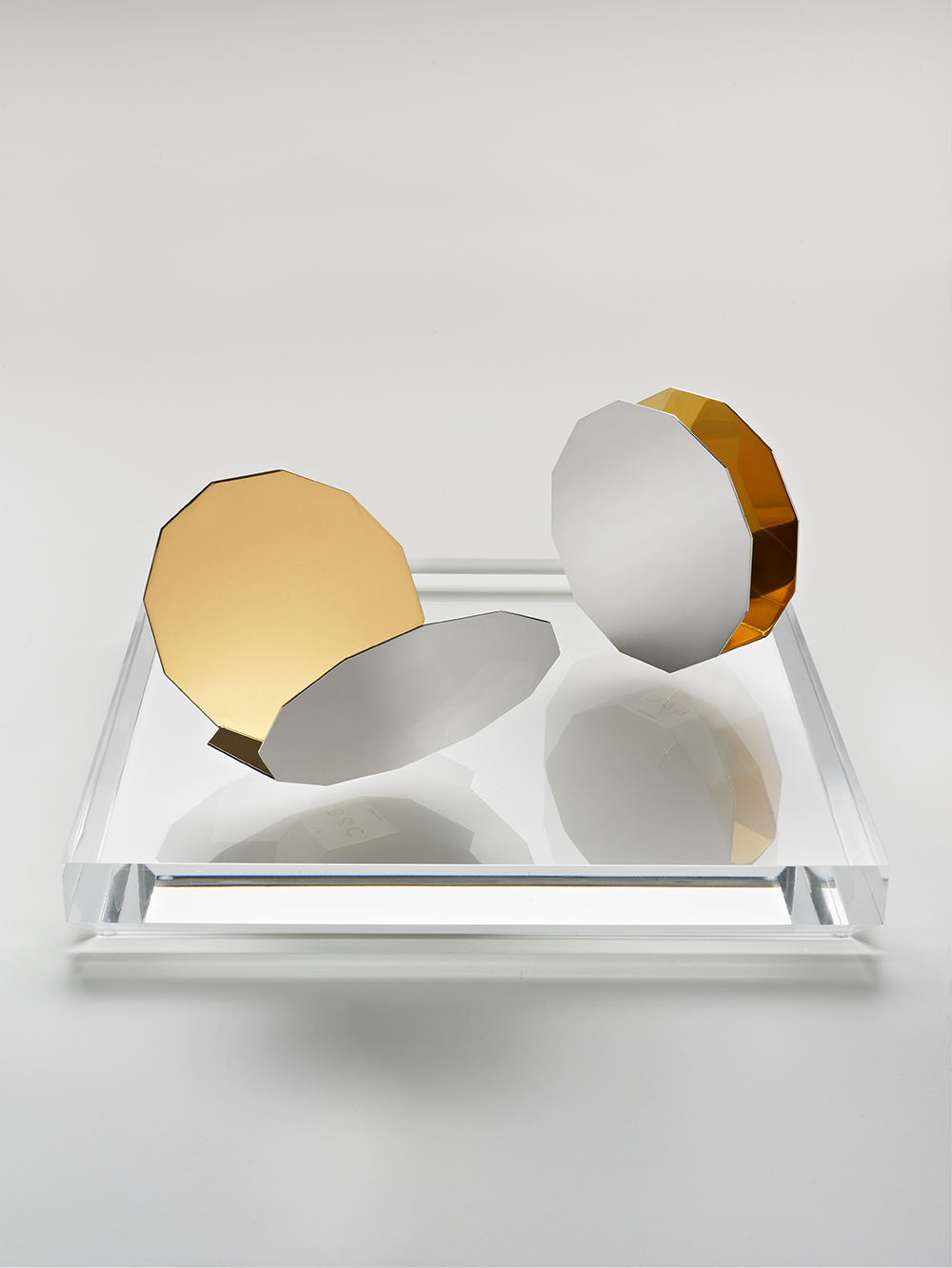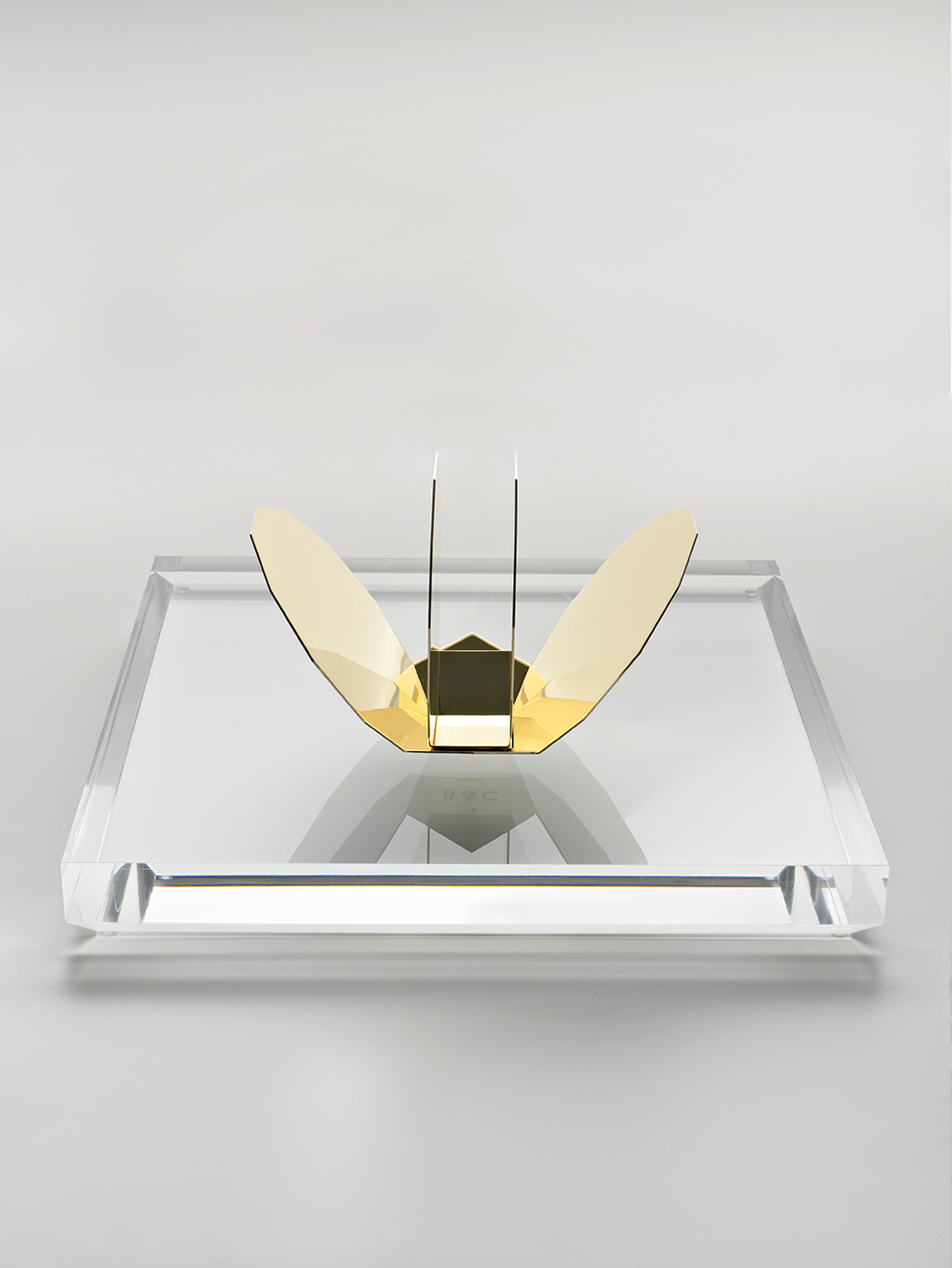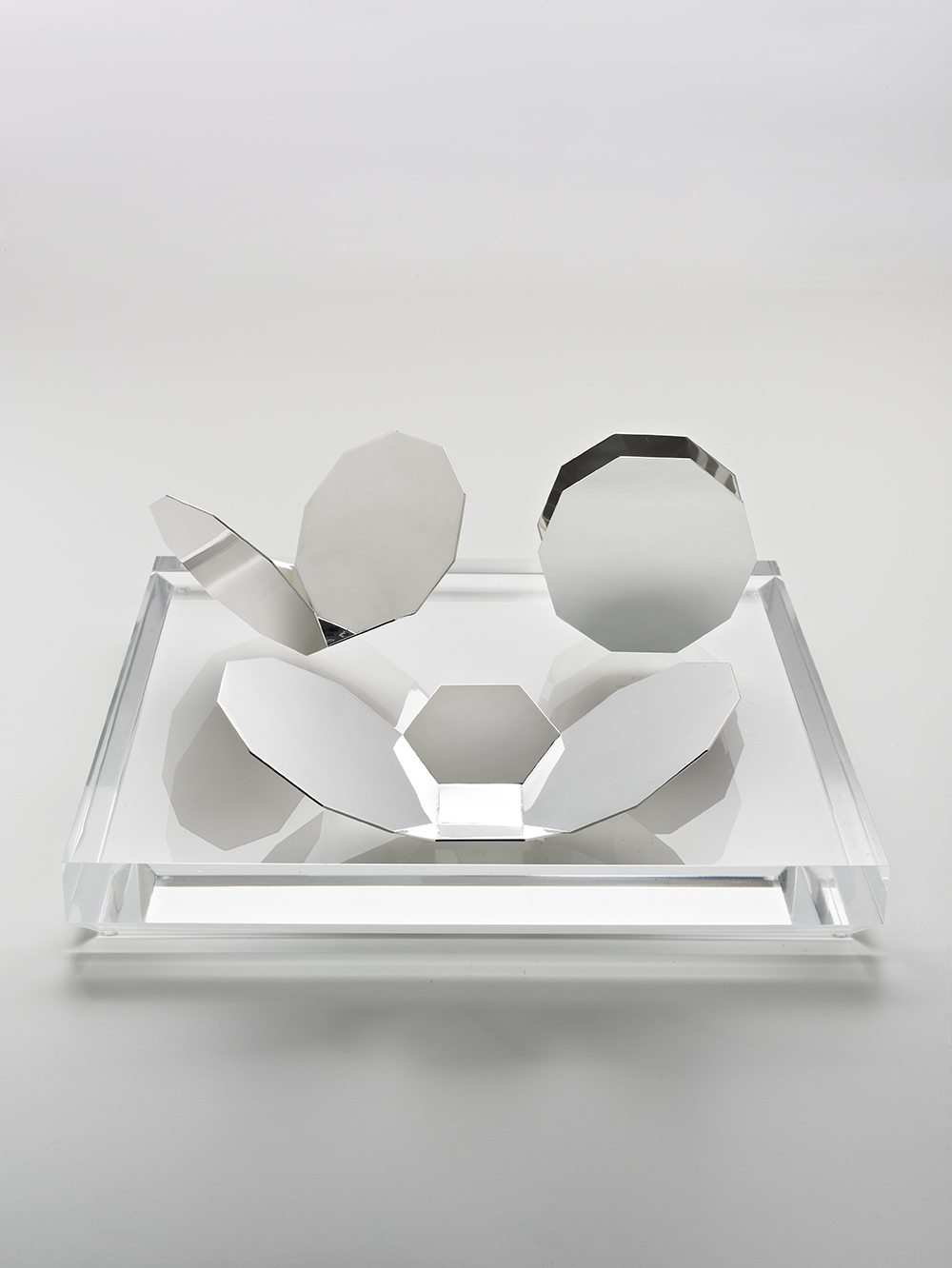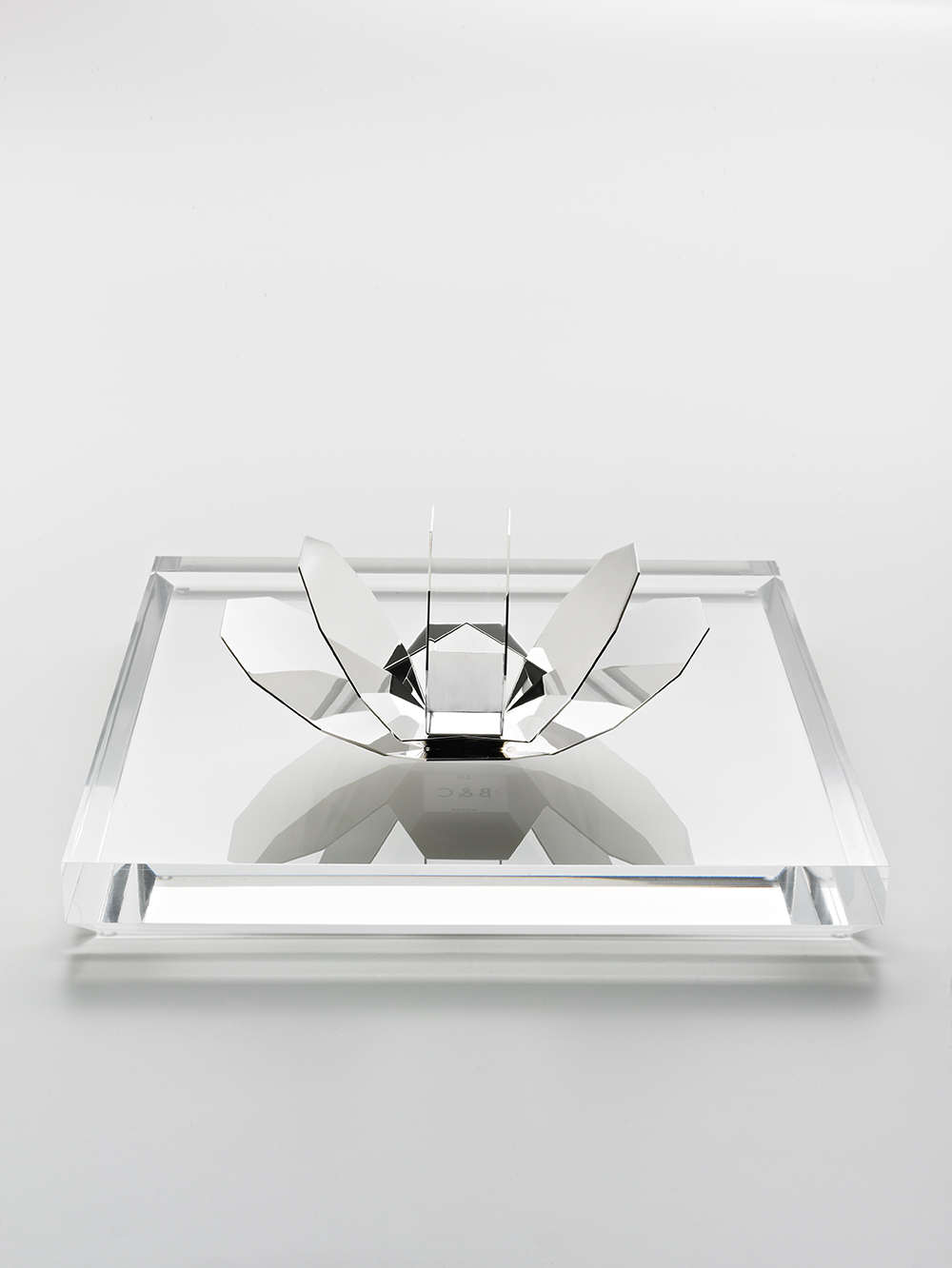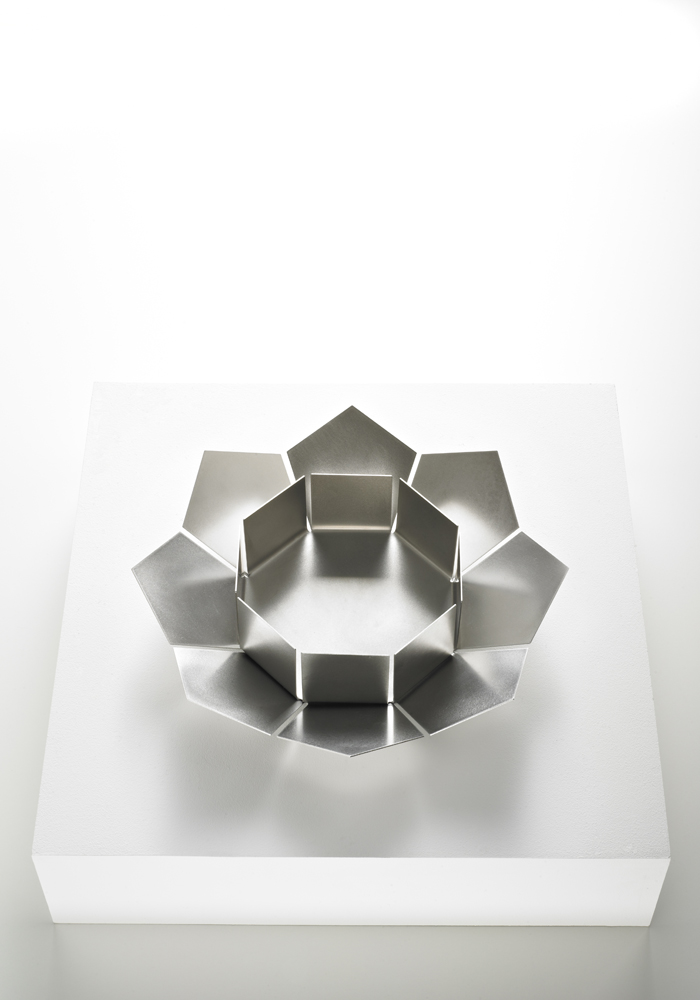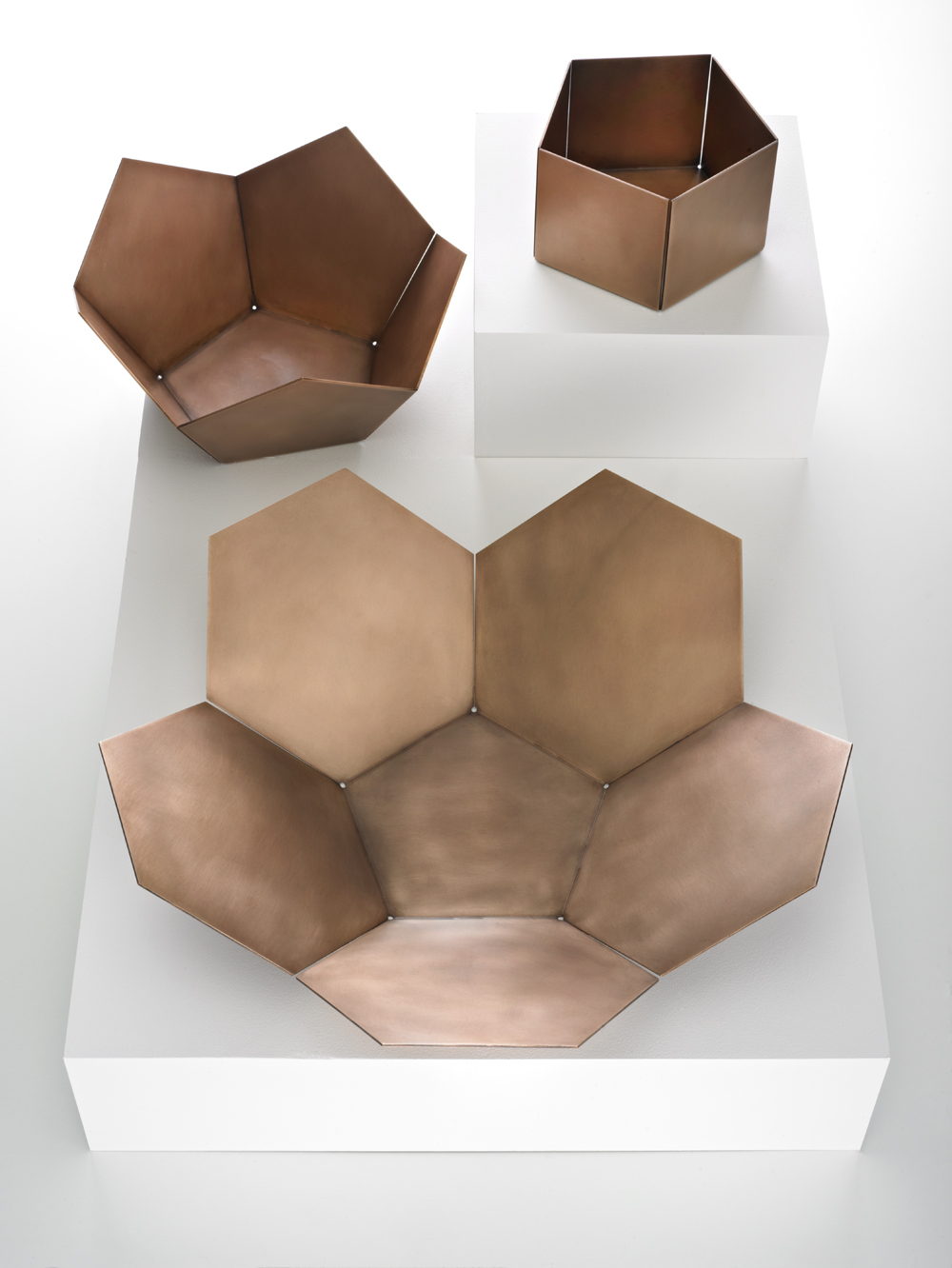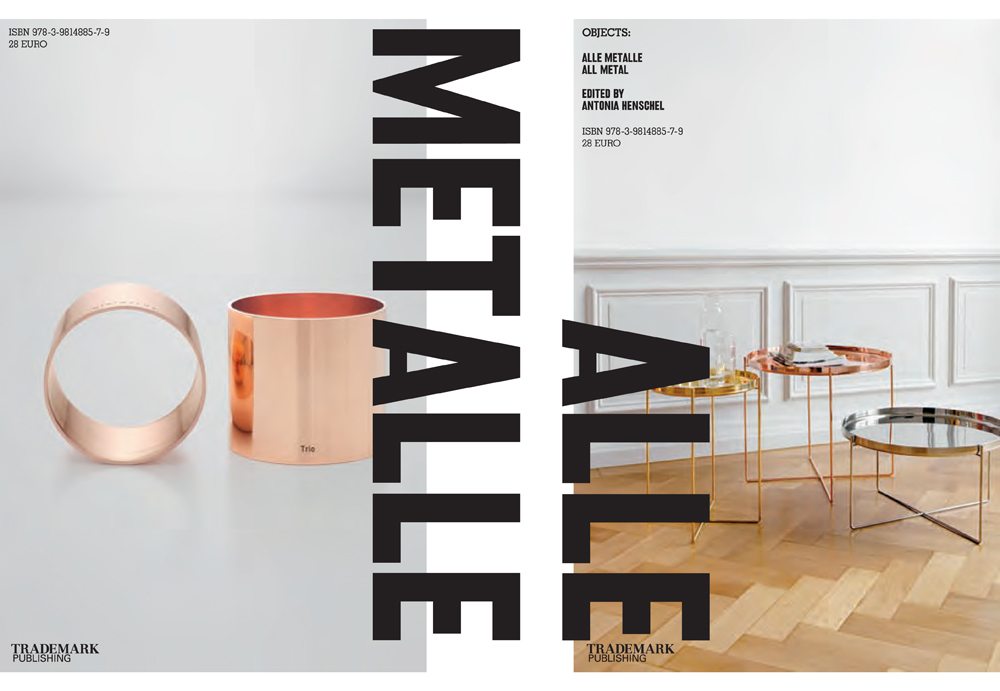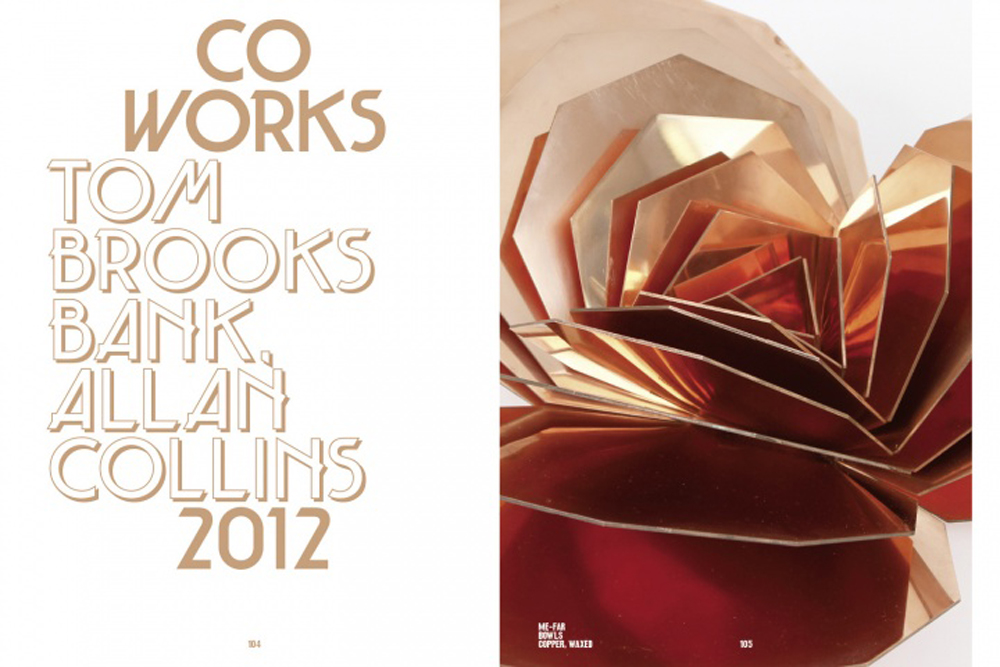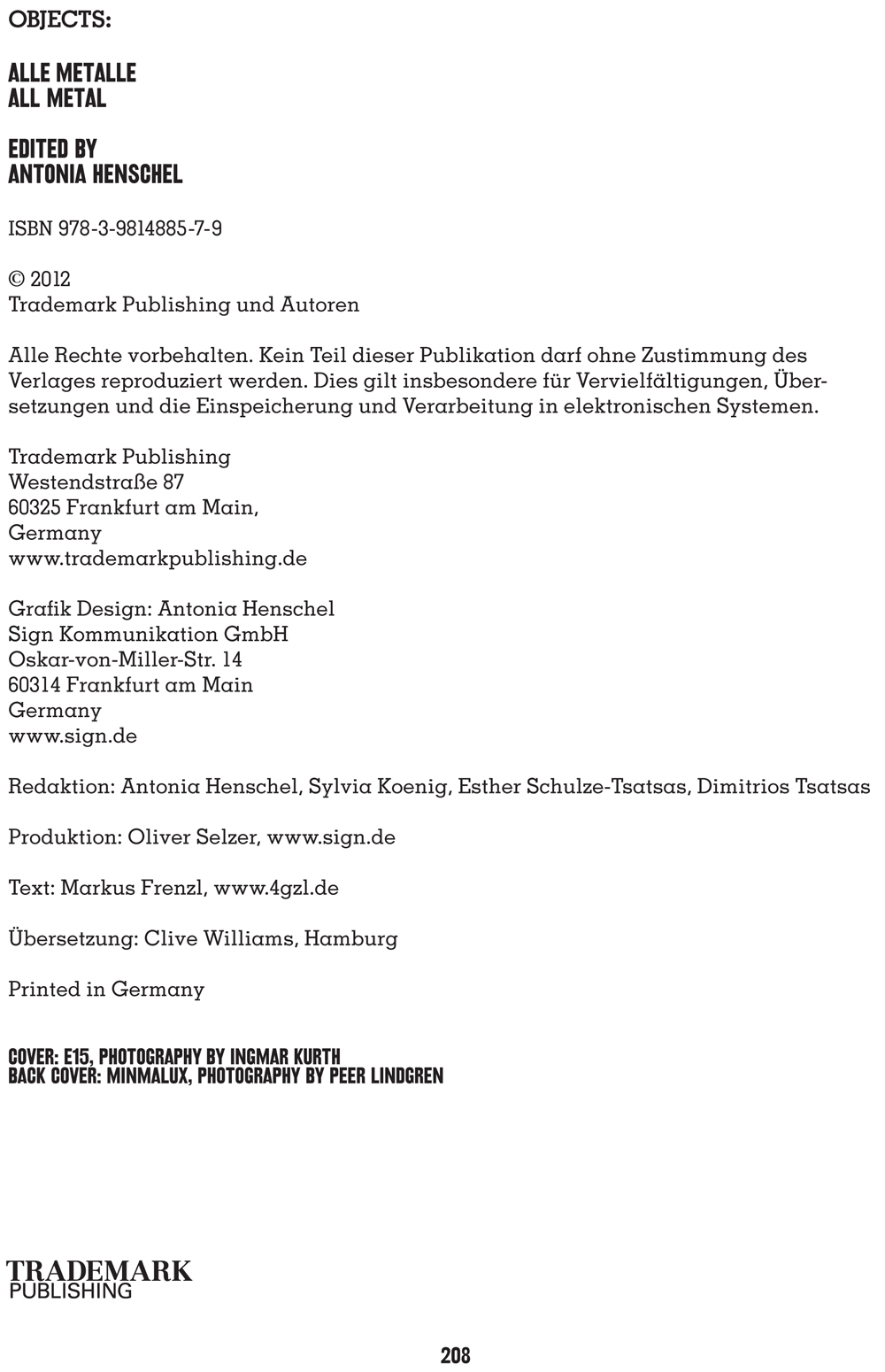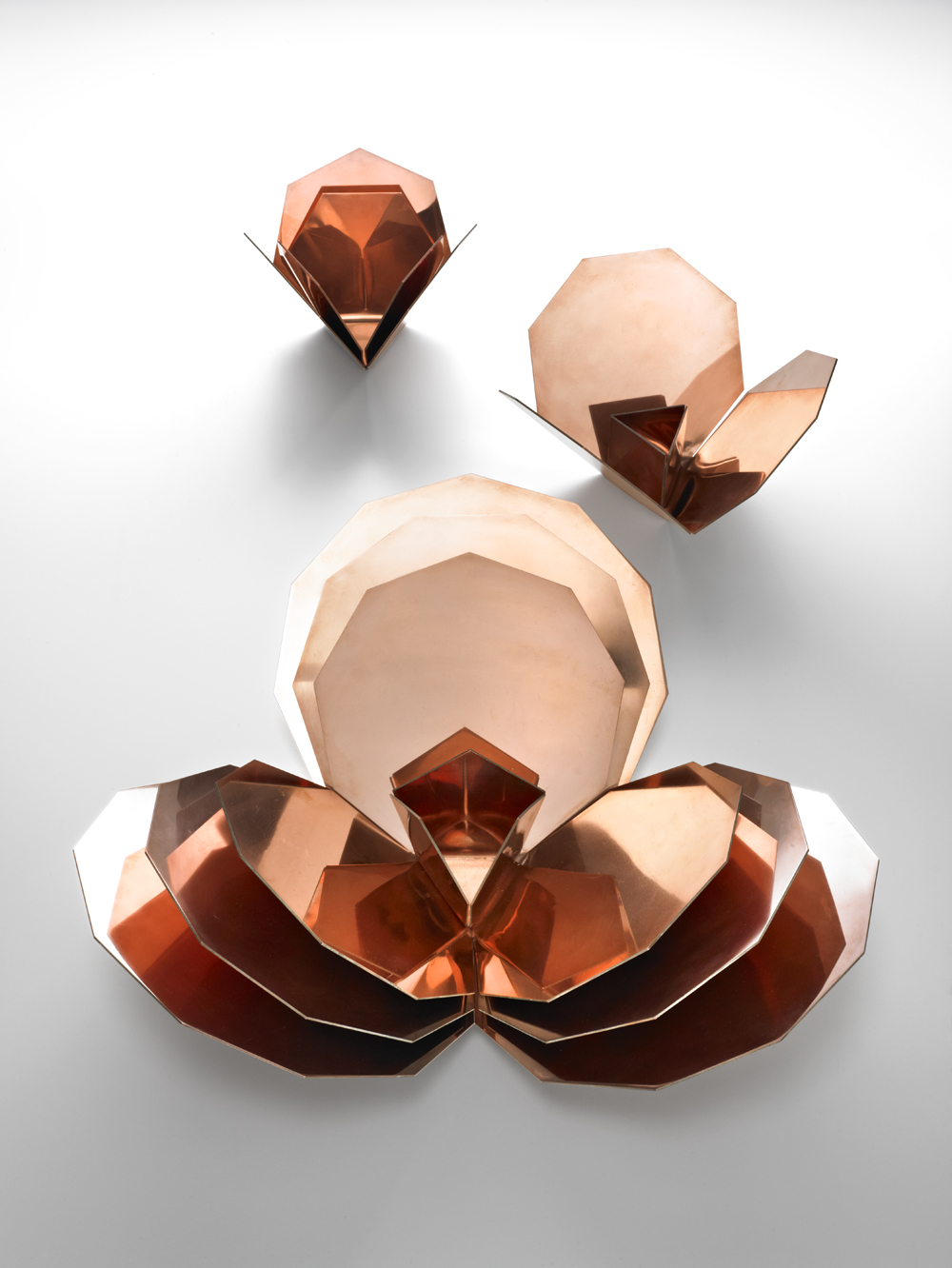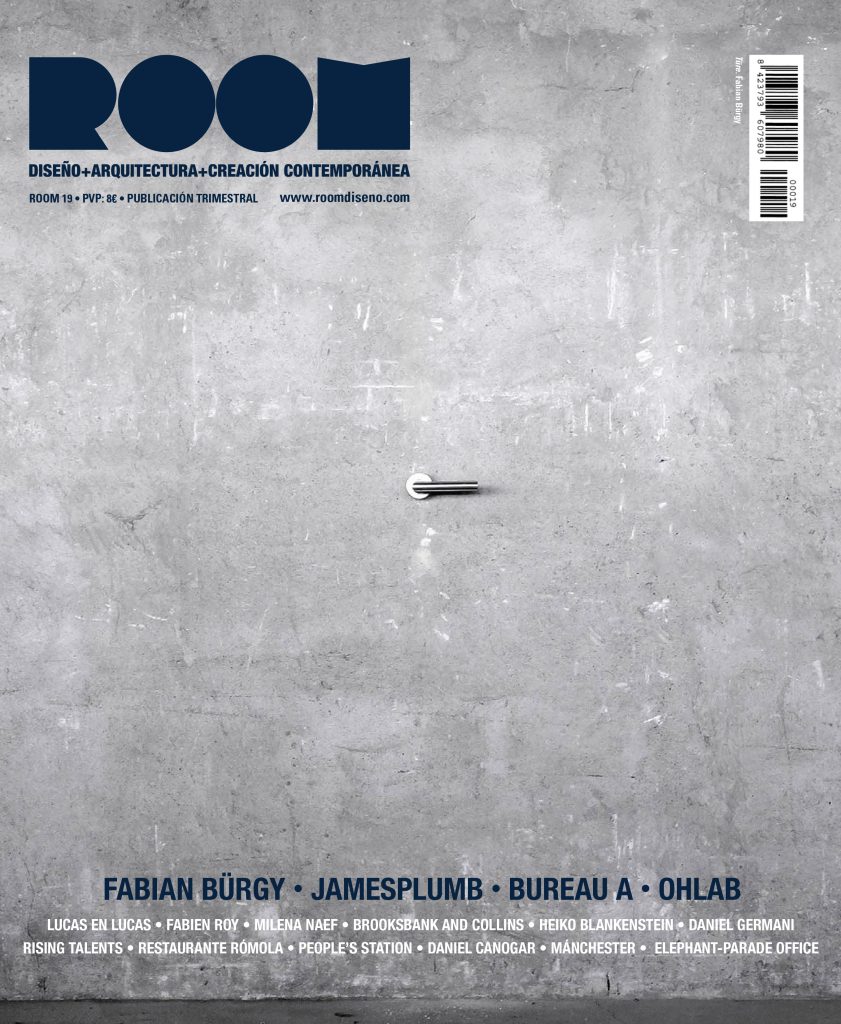
Blog Archives
Room Diseno Magazine
April 24, 2018
Financial Times How To Spend It / 21/04/2018
April 24, 2018
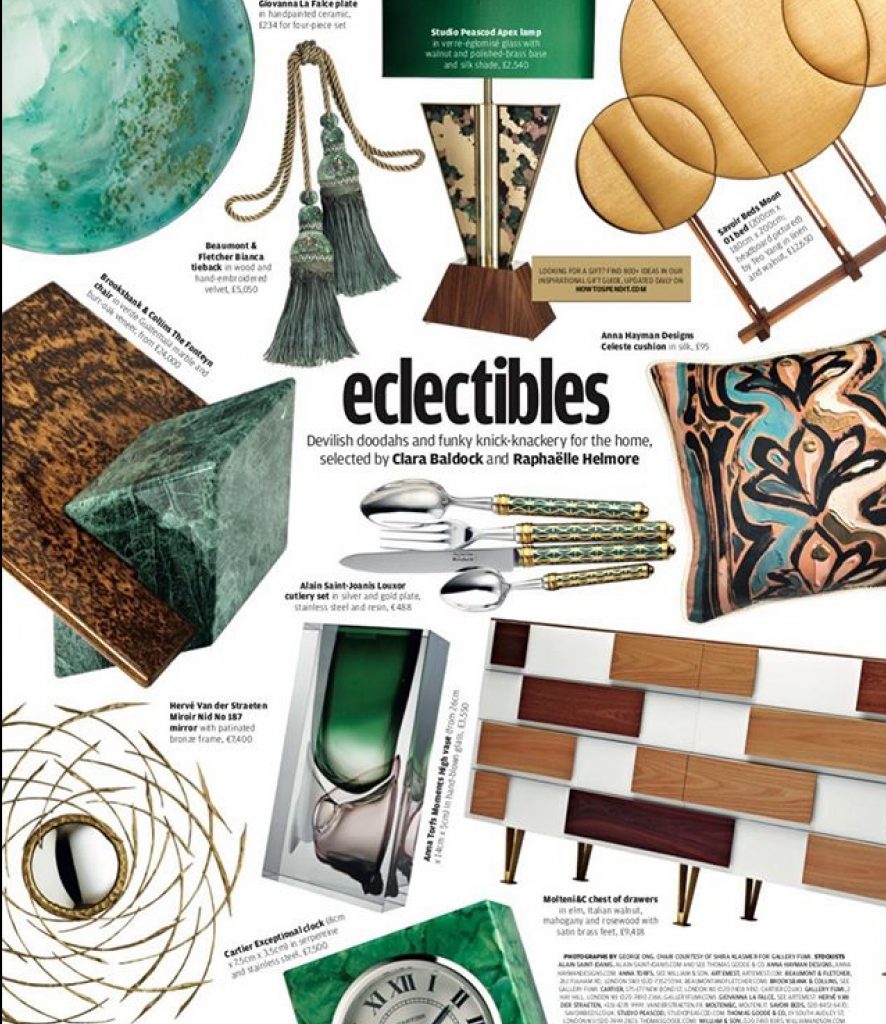
Wallpaper Magazine / March 2018
April 24, 2018
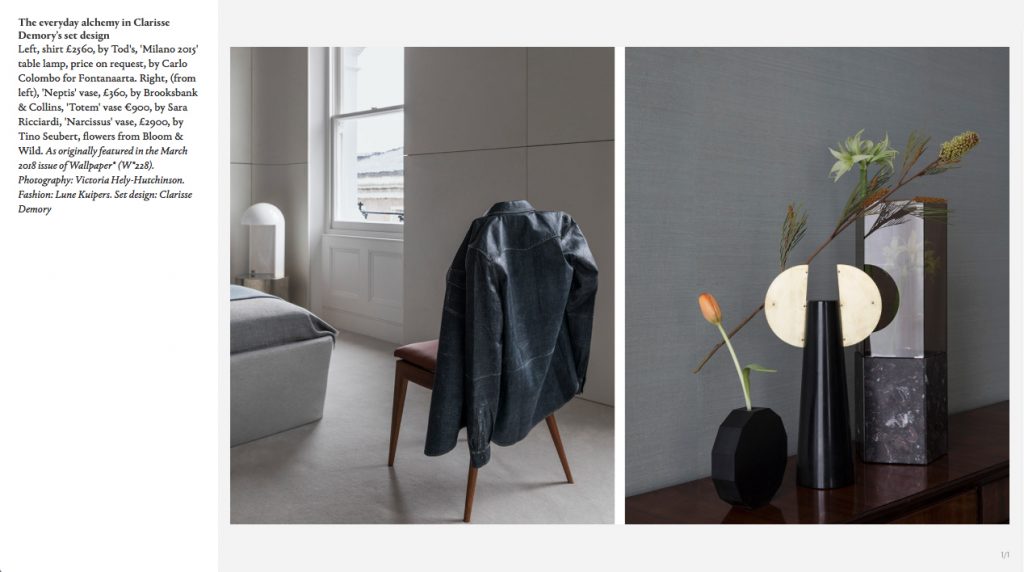
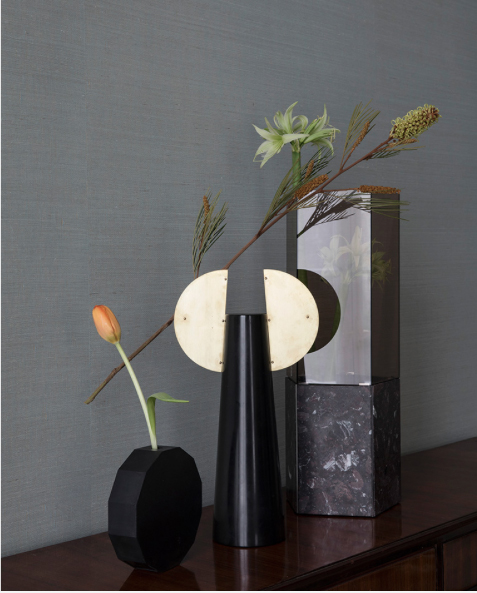
House & Garden / November 2017
November 6, 2017
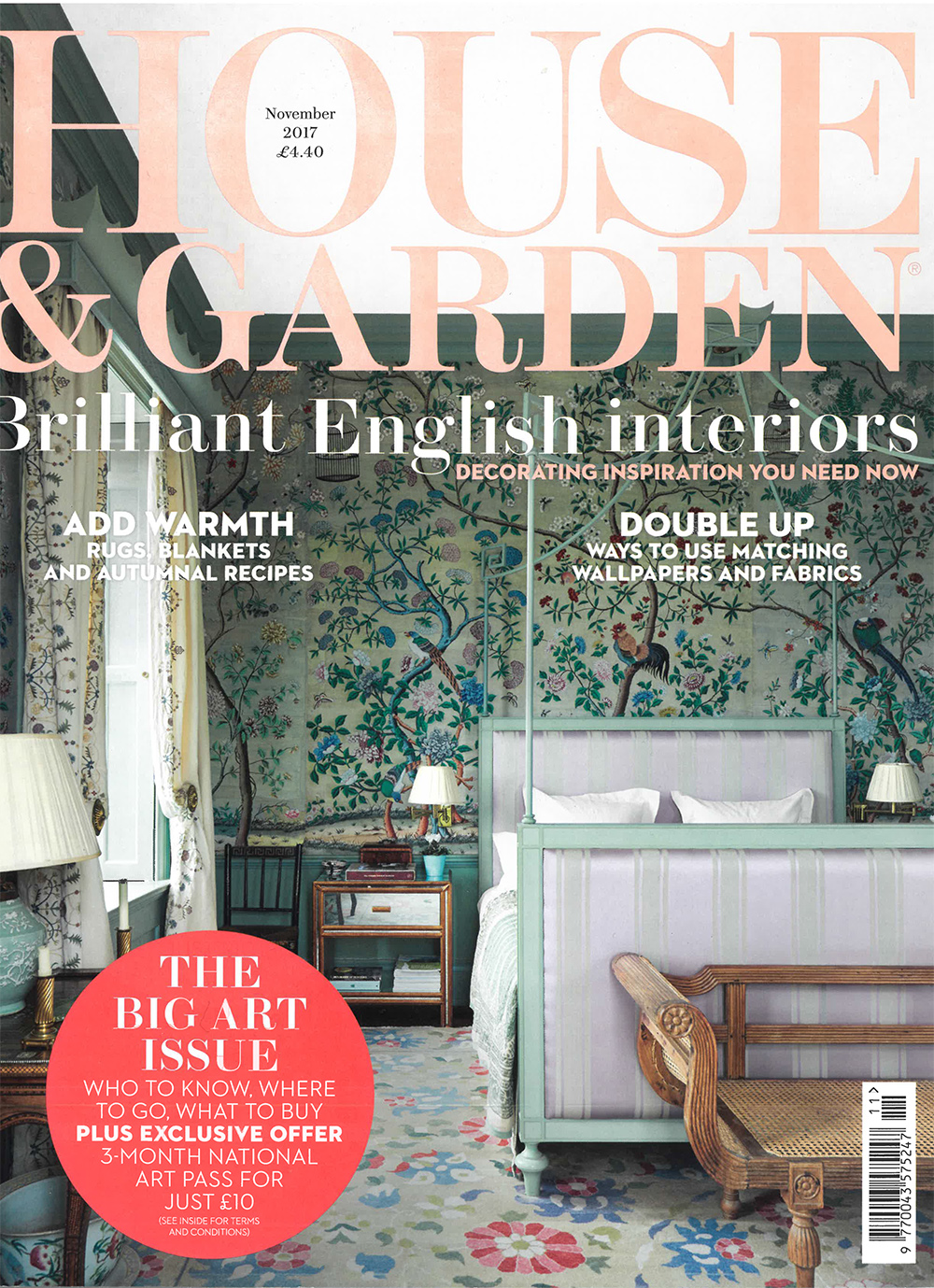
London Evening Standard / October 2017
November 6, 2017

AD France / October 2017
October 6, 2017
Gallery Fumi / PAD London / 2017
October 2, 2017
Telegraph Luxury / September 2017
October 2, 2017
Gallery FUMI / Summer Group Show / 2017
July 7, 2017
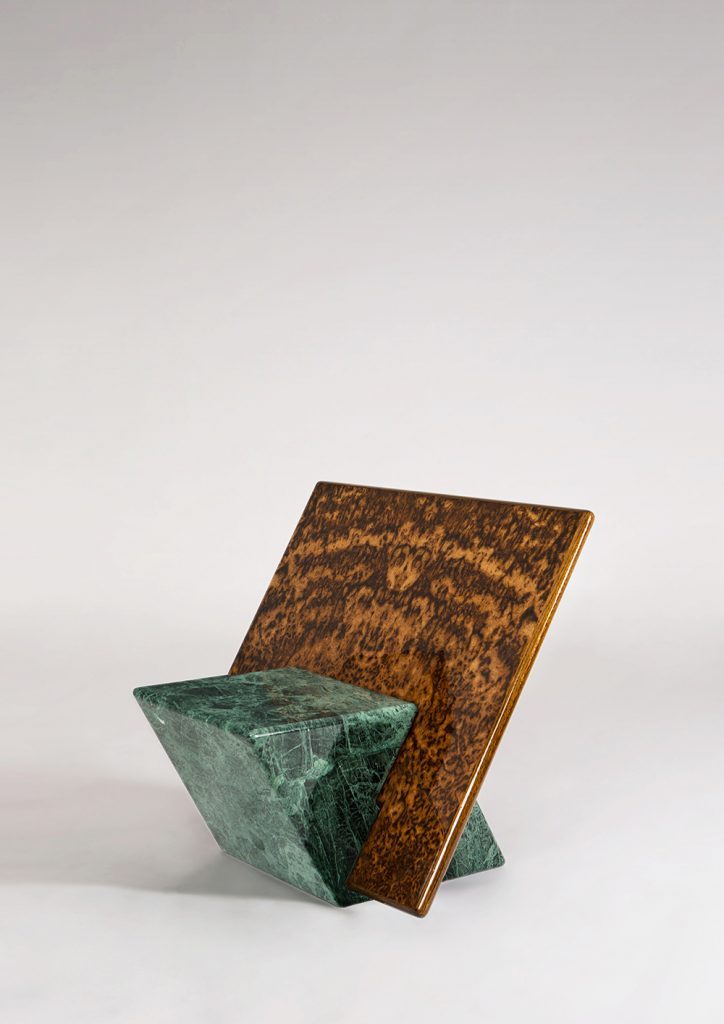


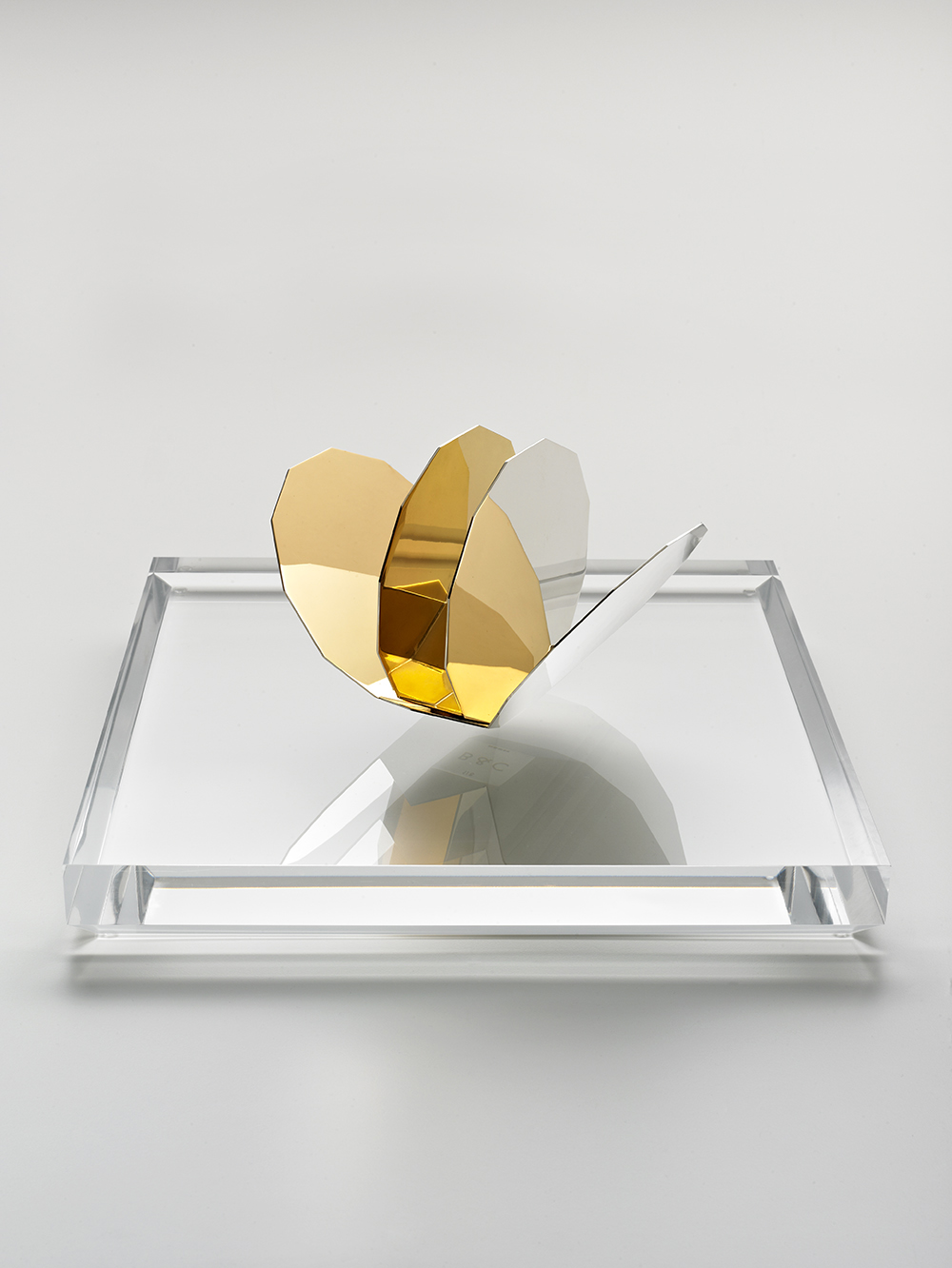
The Fonteyn Chair
June 19, 2017
The Fonteyn Chair
Edition of 8 + 2 AP
Material: Verde Guatemala Marble and Burr Oak Veneer
Size: L60cm x W80cm x H70cm
Brooksbank & Collins’ Fonteyn Chair is named in honour of the celebrated ballet dancer Dame Margot Fonteyn 1919-1991, who together with her dance partner Rudolf Khametovich Nureyev 1938-1993 mesmerized audiences around the world with their performances of extraordinary grace and athleticism.
The Fonteyn Chair explores the relationship between two separate but interdependent bodies, the seat of the Fonteyn Chair is resolutely athletic, it’s weight shifted and in motion, it holds its back panel partner in a daring but perfect lift, the two bodies dancing in dynamic equilibrium. The athleticism of the seat is achieved through the use of a single block of Verde Guatemala marble giving it weight and strength. Book-matched Burr Oak veneer is used to construct the back panel, the flamboyant display of burring completes the performance.
The two bodies of The Fonteyn Chair cover very different but equally great epochs in time. The Verde Guatemala Marble quarried in India formed millions of years ago. The Oak Tree from which the veneer originates grew in a cattle pasture on a large English Estate in the Cotswold Hills. The tree lived for at least 825 years, growing as a sapling around the year 1250. Combined, the two materials span geological time and great changes in our civilization.
For all sales and press enquires please contact Gallery Fumi
Gallery FUMI / Nomad Monaco / 2017
April 30, 2017

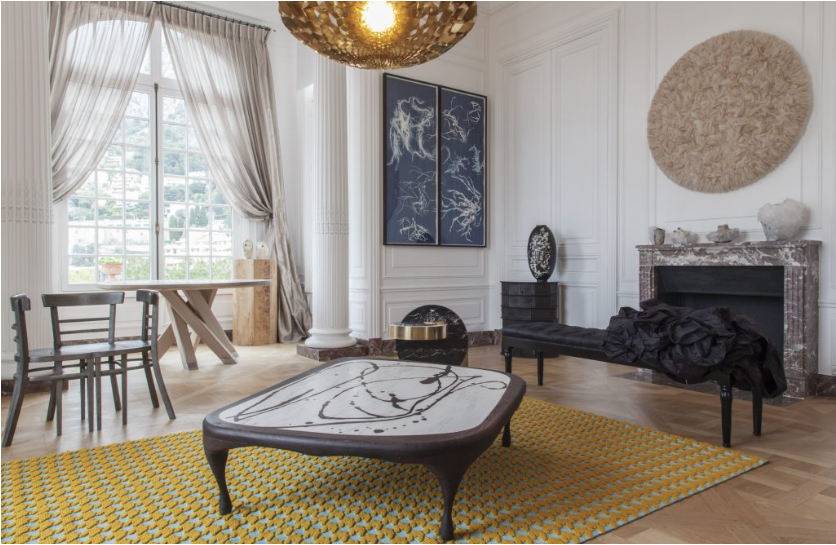
Gallery Fumi / PAD Paris / 2017
April 26, 2017
The Do-Rey Unit
April 21, 2017
The Do-Rey Unit
Material: Silicon Rubber
Size:
Unit 1: L10.1 x W5.6 x H0.2cm
Unit 2: L29.5 x W28.5 x H0.2cm
Unit 3: L49.1 x W45.4 x H0.2cm
Brooksbank & Collins’ Do-Rey is an exercise exploring growth and self-similarity, inspired by the work of Benoit B. Mandelbrot 1924 – 2010, a Polish-born mathematician. Within the overall shape of Do-Rey there lies a repetitive pattern that can be divided down into smaller and smaller sections.
Do-Rey is a universal form found in nature and is also a form used for human’s most advanced technology. The hexagonal pattern is used for the mirror for the James Webb Space Telescope: a Space Observatory due to launch in 2018 which will expand our knowledge and understanding of the universe.
Do-Rey is a universe within itself, it can grow in a regular pattern or it can grow chaotically dependent on conditions.
Do-Rey can be used practically as tableware; coaster, placemat, centerpiece and combinations of units can be used to fill the plane of a tabletop.
Photographs by Stephen Lenthall
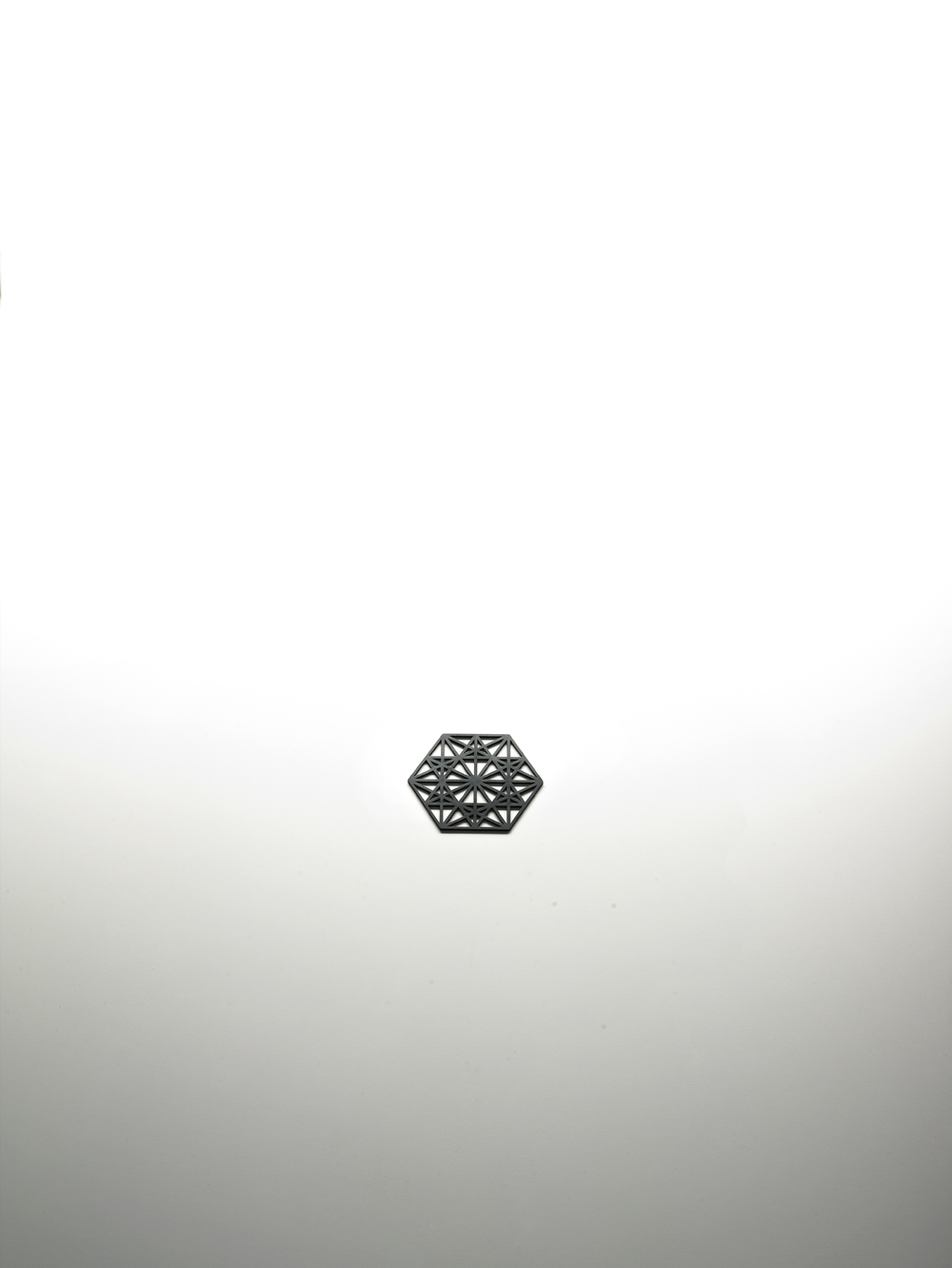
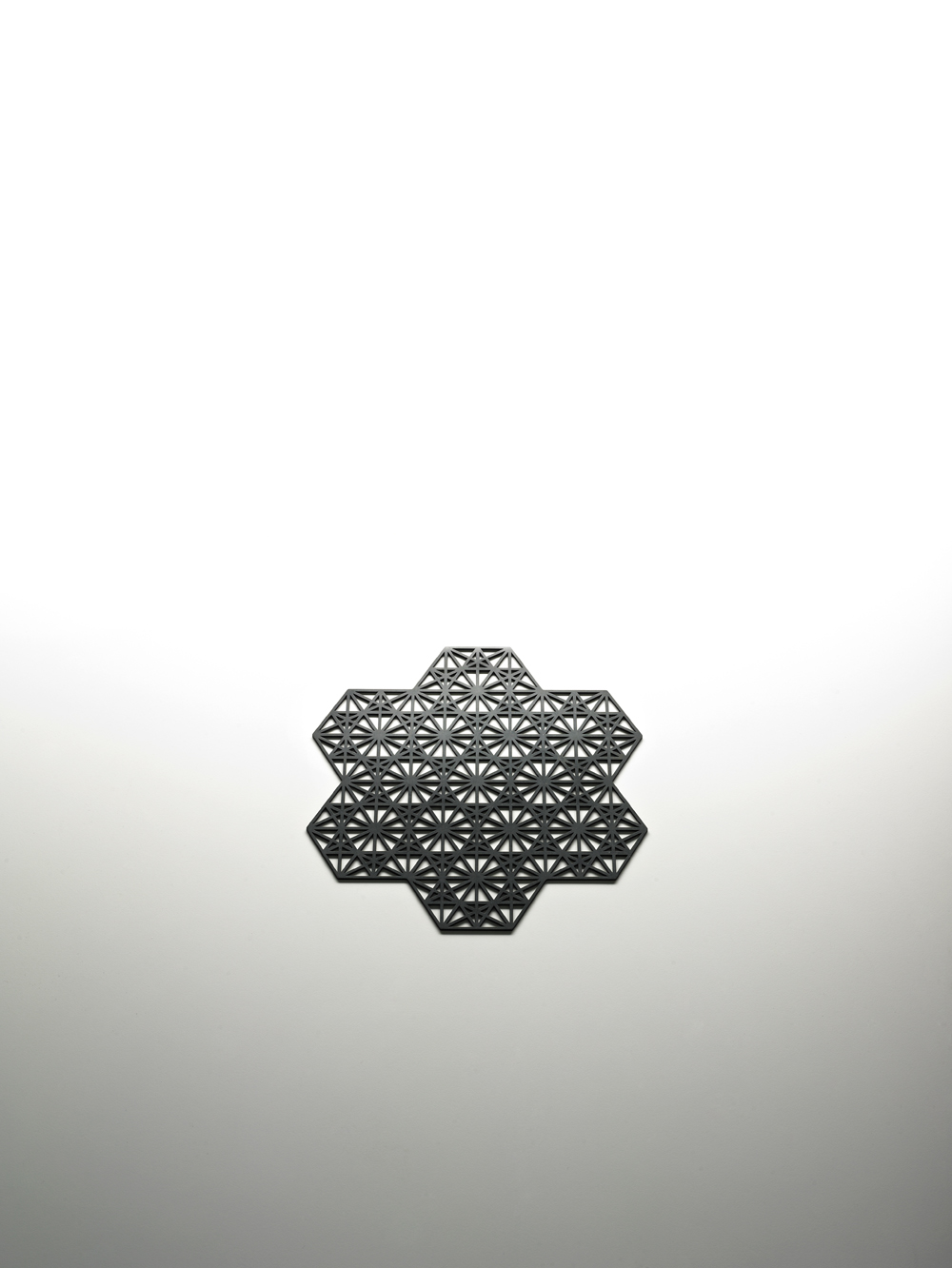
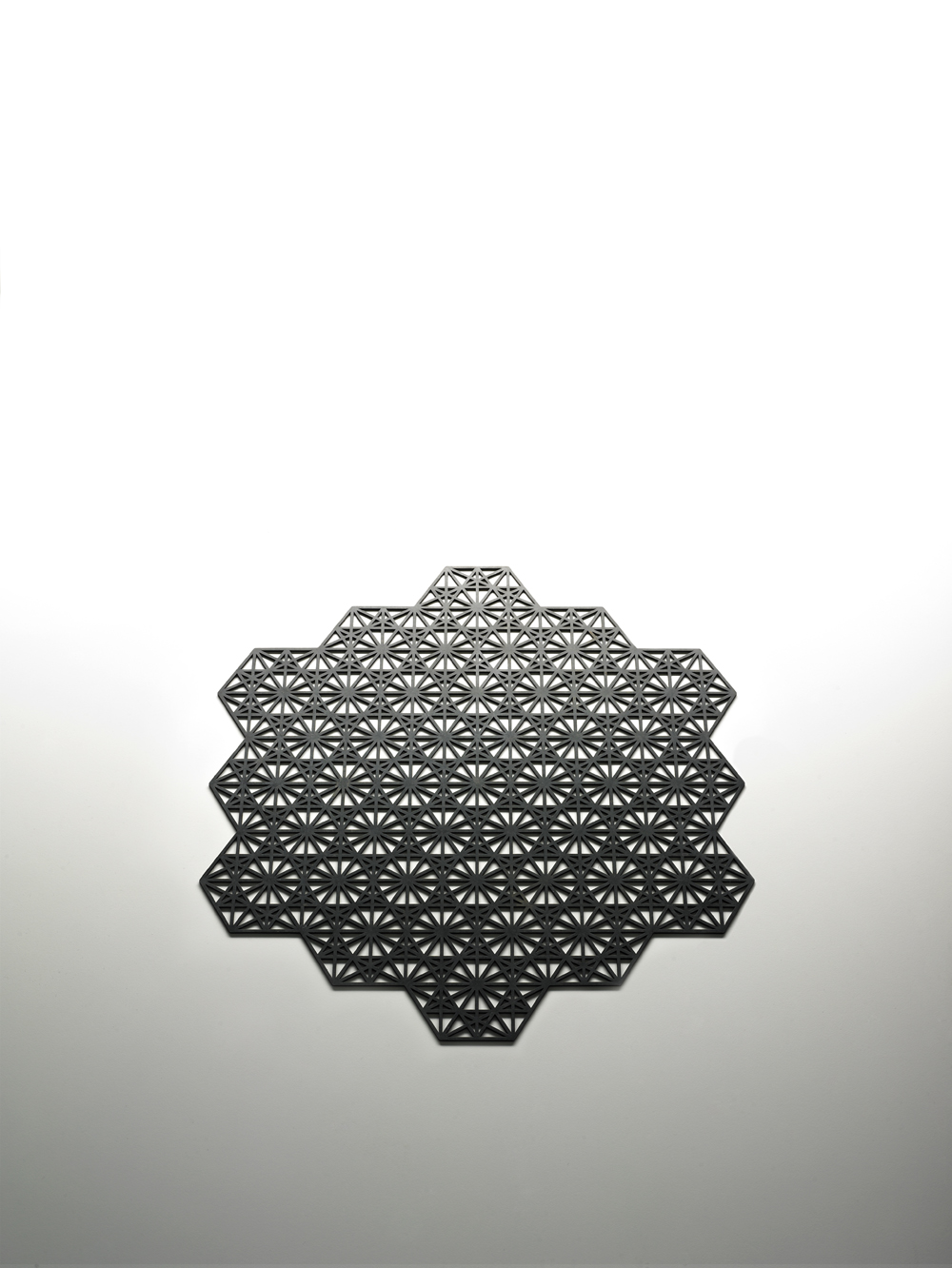
Gallery FUMI / Mayfair
April 21, 2017
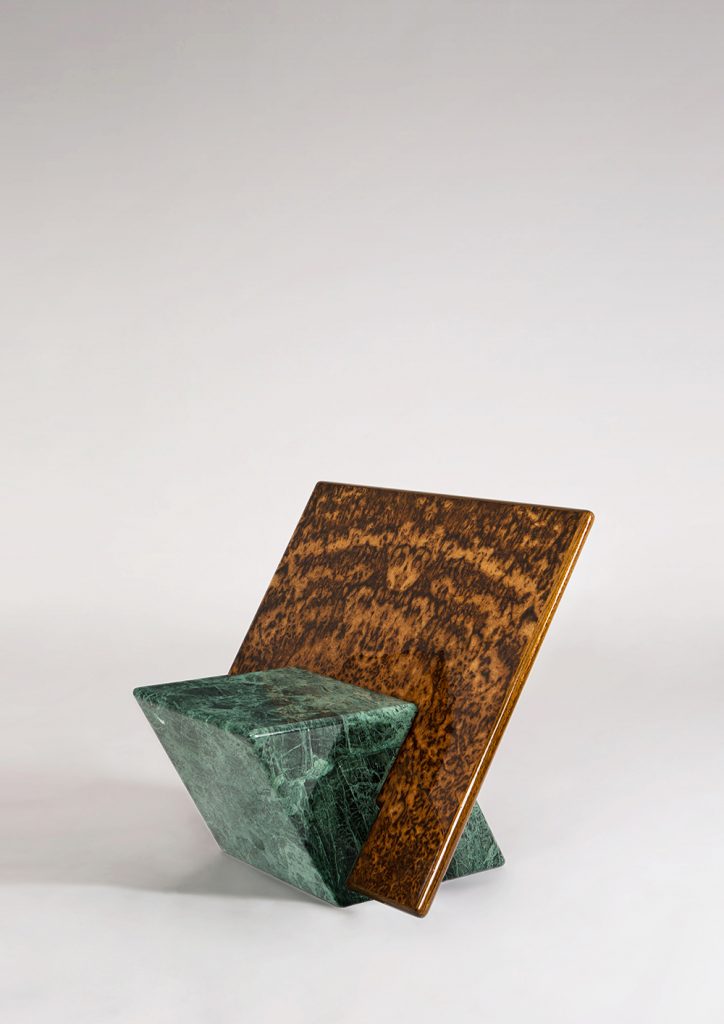

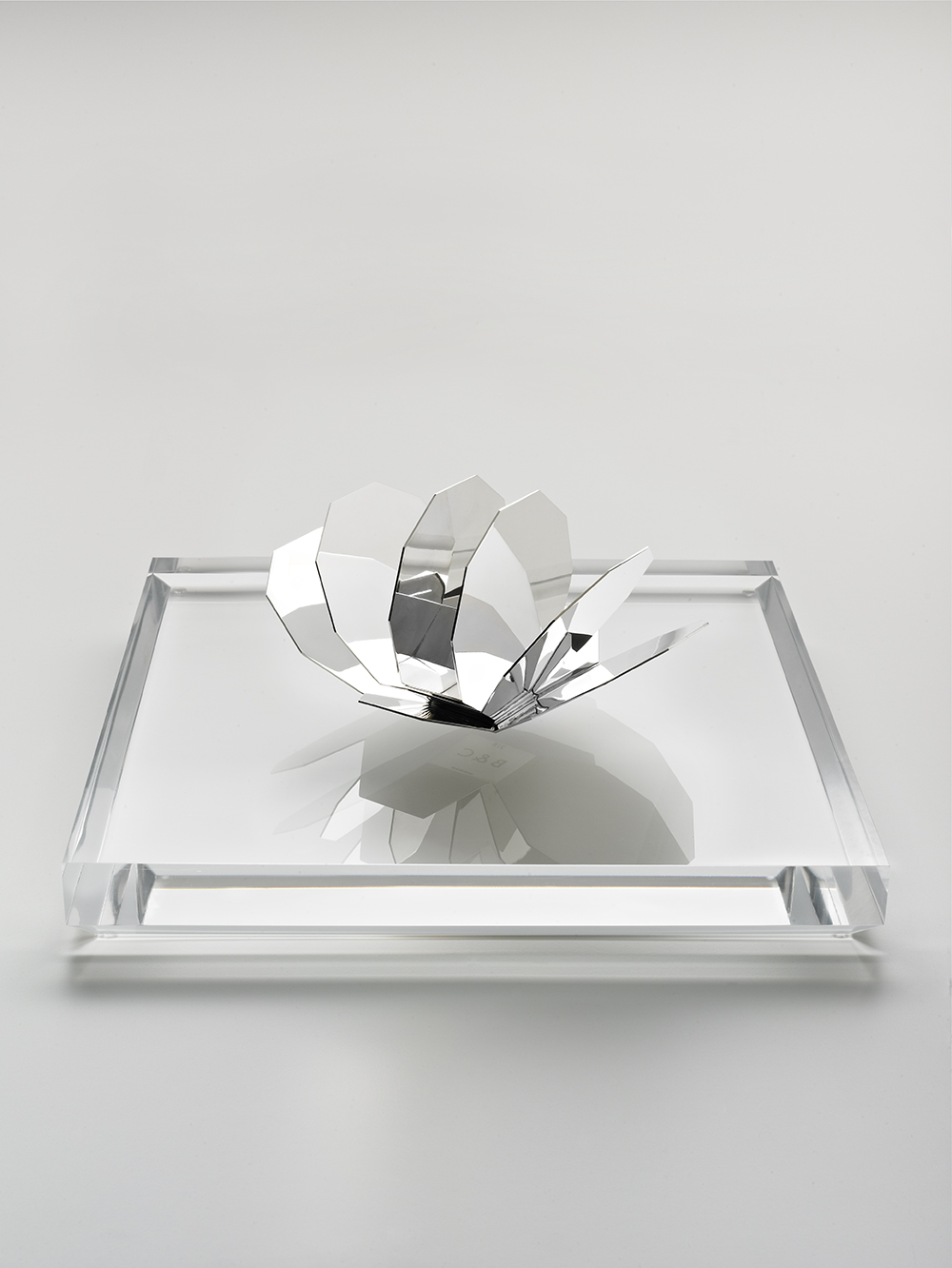


The Venus Lights
September 5, 2016
The Venus Lights
Material: Anodised Aluminium (Gold Colour) with Handmade Glass Screen
Dimensions: L25 x W5 x H25cm
Brooksbank & Collins’ Venus lights are named in honour of Sandro Botticelli’s painting, The Birth of Venus, 1486. Venus emerging from the shell echoes the light emerging from the body of the wall sconce.
Using the same outer geometry the concealed light source can open up in a series like the sun giving birth to a new day.
Venus contains a concealed light source which gently casts light outwards through radiating lines as well as upwards onto the wall above, creating a kaleidoscopic array. When the lights are arranged in sequence the overlapping array of lines is mesmerizing.
The Kubrick Table
June 14, 2016
The Kubrick Table
Edition of 8 + 2 AP
Material: Honed Thassos Marble
Size: L140 x W140 x H30cm (Tabletop)
Brooksbank & Collins’ Kubrick Table is named in honour of legendary film director Stanley Kubrick, 1928 – 1999, whose visionary oeuvre includes the science fiction classic 2001: A Space Odyssey.
In their design for the Kubrick Table Tom and Allan have explored their fascination with the visual language of science fiction and in particular Kubrick’s 2001: A Space Odyssey. The Kubrick table is composed of four individual egg-like spheres intersecting a circular disc. Each of these geometric elements is carved from pure white Thassos marble and, as a whole, the Kubrick table possesses an ethereal glow redolent of a serene white space craft traversing the vastness of space.
Thassos marble is quarried in the beautiful island of Thassos, located in the Northeastern part of Greece. The island derives its name from Thasus, brother of Europa and King of Phoenicians, who settled in the island after Zeus kidnapped his sister, to find solace in the natural beauty of the setting.
For all sales and press enquires please contact Gallery Fumi
Photographs by Stephen Lenthall
Gallery Fumi / Design Miami/Basel 2016
June 13, 2016

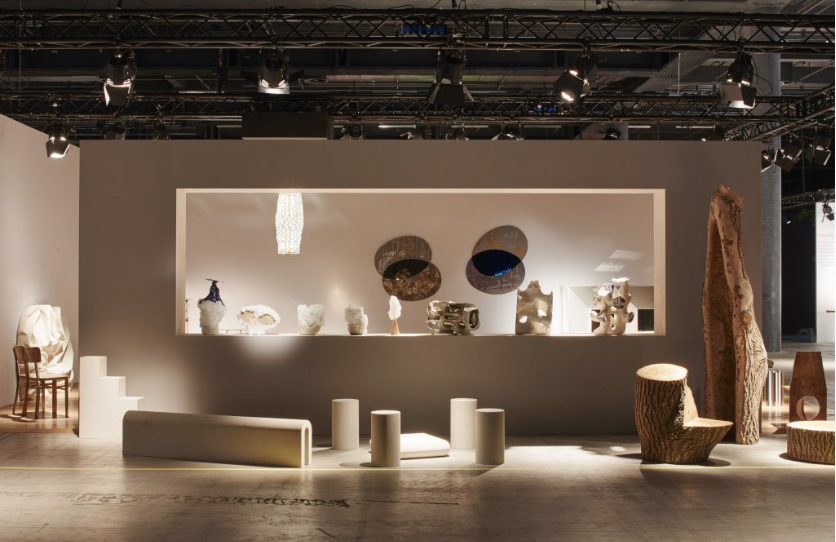

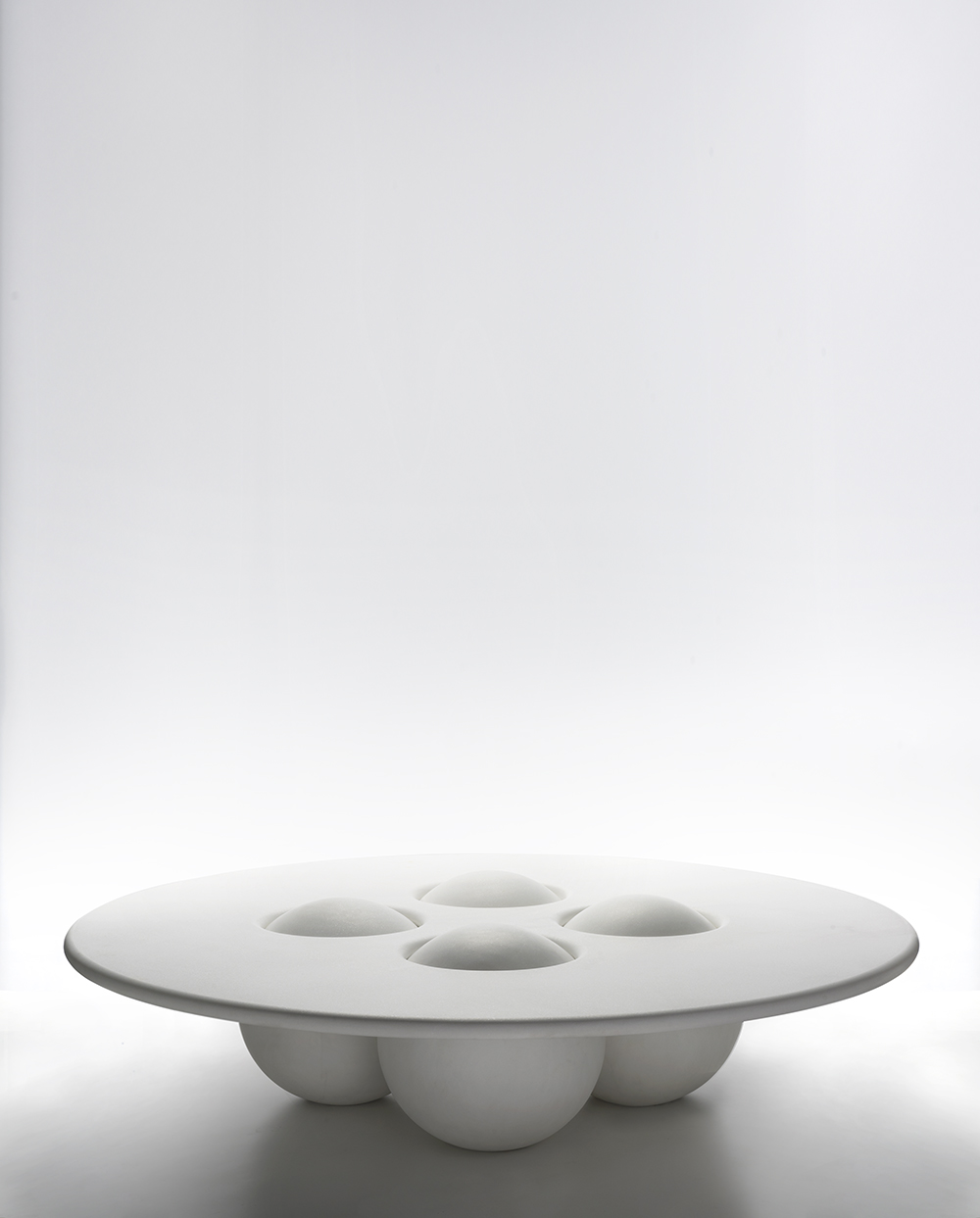
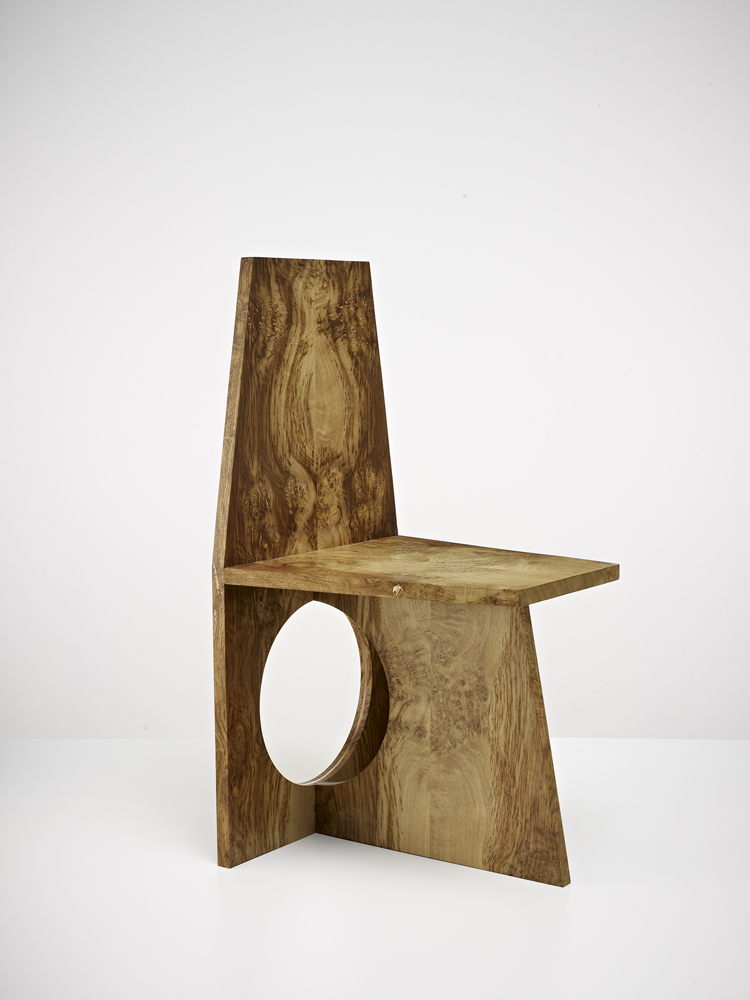
Gallery Fumi / Porto Cervo 2016
May 31, 2016
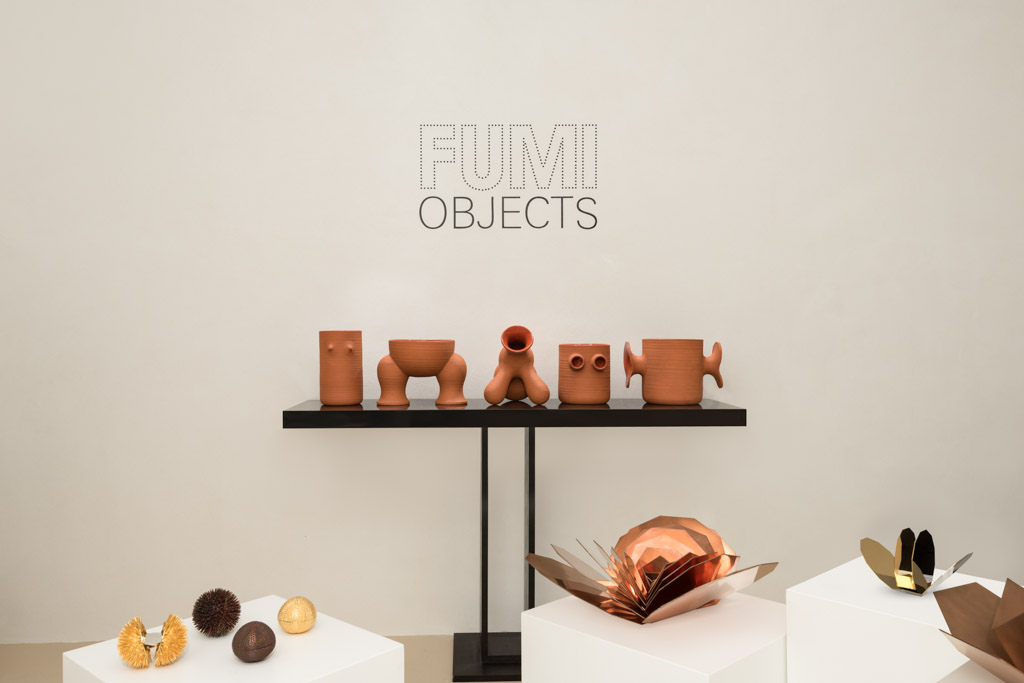

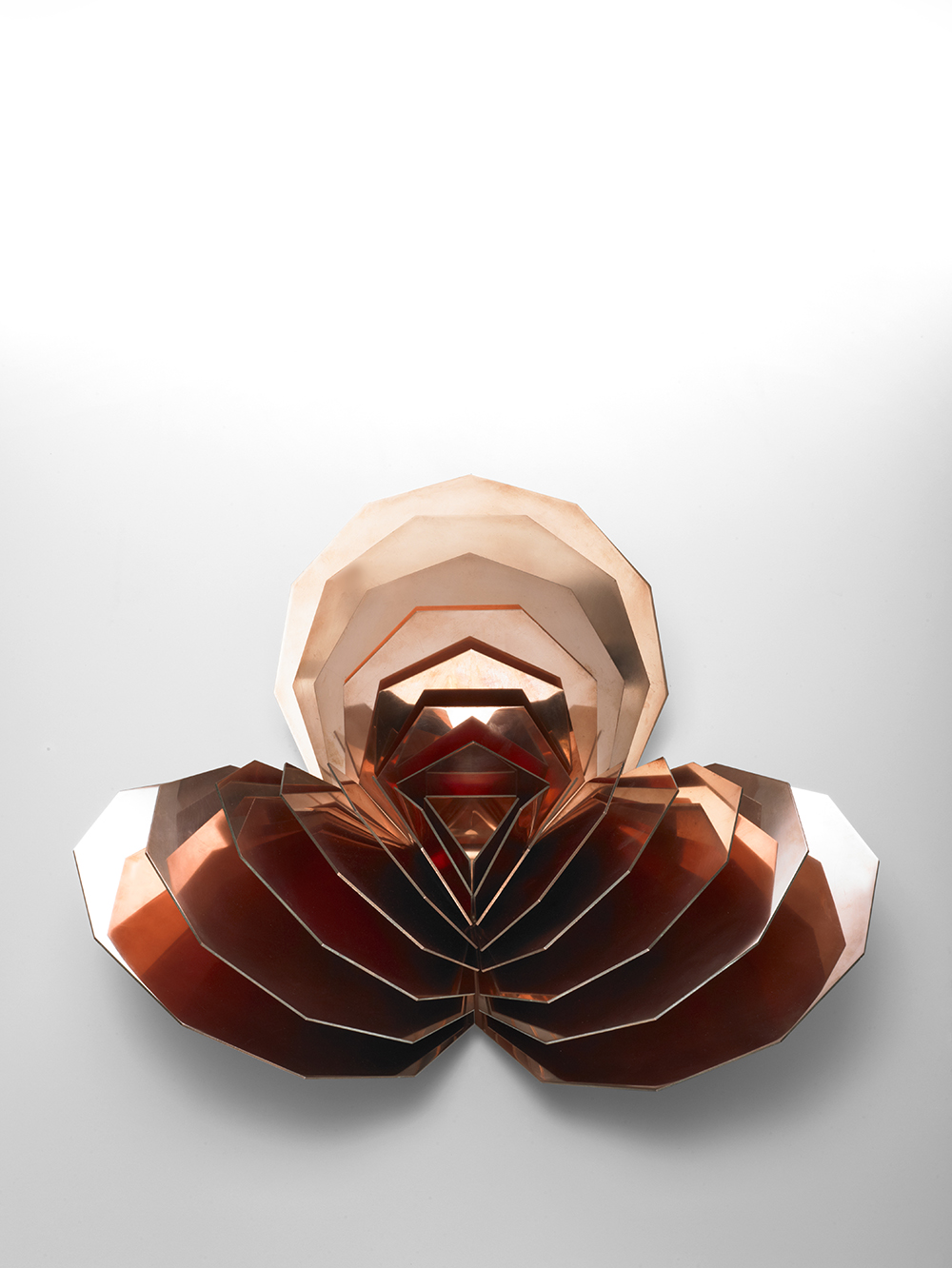




“Sempering” / MUDEC / XXI Triennale di Milano / 2016
April 11, 2016
As part of the of the XXI Triennale di Milano International Exposition, Brooksbank & Collins have been invited to exhibit our Me-Far Octo Bowl as part of an exhibition named “Sempering – Process and pattern in architecture and design”. The exhibition takes place at MUDEC – Museum of Cultures in Milan. The exhibition is curated by Luisa Collina and Cino Zucchi
The exhibition runs from 2 APR – 12 SEP 2016
Mudec – Museo delle Culture
via Tortona 56, Milano
Luisa Collina, Cino Zucchi with Valentina Auricchio, Simona Galateo
XXI International Exhibition, Triennale di Milano 2016
XXI Century. Design after Design
Sempering
(zʼɛmpərɪŋ); Engl. present continuous voice of the verb “to semper”. In architecture and design, a constructive action on a material or a compo-nent which leaves a meaningful formal trace in the final product. Neolo-gism from the surname of the German Architect Gottfried Semper, 1803- 1879, author of Der Stil in den technischen und tektonischen Künsten, 1860- 63; see Luisa Collina, Cino Zucchi, Sempering: Tectonics and texture in con-temporary architecture and design practice, XXI Triennale di Milano Interna-tional Exhibition, Catalogue, Milano 2016
Prologue
“Tectonics is an art which finds its model in nature, not in its concrete mani-festations, but in conformity with its laws (…). The field in which this art fulfils itself is the sensible world; its works exist in space and manifest themselves to our eyes as bodies, through form and color. Tectonics is therefore the real cosmic art; the Greek word cosmos, which has no equivalent in our present languages, defines at the same time the universal order and ornament. Be-tween the creation of tectonic art and the universal laws of nature exists a harmony that represents also its ornament.”
Gottfried Semper, Theorie des Formell-Schönen
In 1851, year of the first Universal Exposition in London, the German archi-tect Gottfried Semper writes Die vier Elemente der Baukunst, where he lists the elements of an ideal original dwelling – perhaps suggested to him by the Caribbean hut exhibited in the Crystal Palace – which could be considered
as fundamentals of architectures in all times and places: the fireplace, the roof, the pedestal/platform, and the enclosure.
Several nineteenth-century treatises tried to found architectural discipline on constructive principles common to all civilizations. The originality of Semper is in the use of them to order the variety of the ‘industrial arts’: he relates ce-ramics and metallurgy to the fireplace; hydraulics and masonry to the pedes-tal; carpentry to the roof and its supports; weaving to its partitions. The delim-itation of domestic space by rugs or mattings – rather than by the erection of the masonry structure which sustains them – is conceived by Semper as the primeval action of architecture. To demonstrate this – and struck by the con-sonance between the German word ‘Wand’ (wall) and the verb ‘Gewand’(to weave)- he shows how many historical ornamental motifs cannot be inter-preted if not with a ‘textile’ legacy; while other ones are still divided between a ‘tectonic’ origin (in Semper’s mind, the frame of light bars) and a ‘stere-otomic’ one (the layering of heavy elements), in the long dispute between carpenters and masons, between frame construction (Fachwerk) and mass construction (Mauerwerk).
Contemporaneity and history melt together in his attempt to bring back to well-known categories the phantasmagoria of artifacts exhibited in the large Crystal Palace glasshouse, where Semper -escaped from Dresden after the failure of the uprising for which he designed the barricades – cured the Cana-dian, Danish, Swedish and Ottoman sections.
Update
A year after Milan’s 2015 EXPO, and more than one hundred and fifty years after the publication of his Der Stil in den technischen und tektonischen Kün-sten, what classification would Gottfried Semper put forward to interpret the number of artifacts that today shape our environment, and that cross the es-tablished borders of any possible ‘system of the arts’, of any separation in competences and sectors in the design of objects, architectures, land-scapes?
In the wider context of the events produced by the XXI Triennale di Milano 2016 International Exposition, the exhibition Sempering, realized in the spac-es of the MUDEC in porta Genova, would like to focus the attention on sev-eral ‘ways of doing’ of contemporary design, without pretending to formalize a complete geography of them and without separating them into disciplinary typologies. A simple concept is at the base of its choices and its arrange-ment: the one of a continuous evolution and revision in time of the relation-ship between means and ends, between ‘methods’ and ‘forms’.
Engineers? Bricoleurs?
The first Modern, in its reformatory zeal, tried to wipe out every formal para-digm inherited from the past and to set forth the pretended universality of a ‘method’ capable of transforming the gathered data into a design outcome.
The designer dreamt by Modernism strongly resembles the ideal figure of the ‘engineer’ described by Claude Lévi-Strauss in La pensée sauvage (The Savage Mind, 1966): the one who has ‘method’ and not ‘form’, who creates “events through structures”; while his ‘bricoleur’ uses the forms and scraps
he has at hand to solve contingent problems, thus generating “structures through events”.
But Sempering does not employ any ideal figure, any abstract model; it simp-ly distances itself for a moment from the scientific and ‘universalist’ obses-sions of modern design, and brings back the attention on techniques, on practices rooted in concrete history; it tries to survey a contemporary design attitude which unites experimentation and research through the critical revi-sion of the customs, recipes, even of the technical and formal ‘prejudices’ that every shared culture inevitably reveals.
The research on new materials and on technical innovation put forward by modernism appears today to intertwine with the array of the practices that in history unites the natural elements – stone, wood, clay, iron, cotton – with the known and transmitted modes of their selection and employ in combinations that cannot be found in their original state.
Handicraft practices included in their own body fragments of the current artis-tic culture in the ancillary vest of ‘decoration’; but the denial of an imitative dimension leaves to the Modern no other figural device than the one of pat-tern and texture, of the evidence of the joints among the constitutive parts of an object.
Repetition and difference
Sempering conducts a synthetic rereading of techniques elaborated in specif-ic environments able of generating patterns and forms without suggesting a simple reprise of the ‘past’; rather observing them in their present manifesta-tion, where process and figure still interlace without copying existing formal motifs – a typical action of post-modern culture – from history and from the contexts that generated them.
If modern thought tried to overcome the concept of ‘applied arts’ substituting them with a new culture of industrial production in large series, today indus-trial procedures walk along with the return to handicrafts; the quality of an ob-ject or a building is not undermined by the peculiarities of the execution by hand, and the serial nature of the ‘standard’ product gives way to the adap-tive singularity of the element, be it realized by hand or by sophisticated pro-duction processes.
But it’s not only a matter of execution techniques; this shift implies also a strong revision of the concept of ‘universality’ and ‘mass production’, intend-ed as general principles, capable to found the quality of most design tasks; from this comes the renewed interest on the interrelations between design and process and the recognition in contemporary design culture of a number of recurring modes such as:
– ‘neo-handicraft’ attitudes, with the recovery of manual practices able to yield results which are impossible to achieve with current industrial procedures;
– forms of advanced manufacturing, where sophisticated technologies (including parametric ones) permit to realize unique pieces, once un-reachable;
– new balances between these two opposite modes, in which production in series and handicraft, design and praxis combine in original ways.
4+4=8
The categories set forth by Gottfried Semper – which did not refer so much to the material itself, but rather to some of its physical properties in their con-frontation with a series of possible manufacturing and assembling it to form complex structures – can today be used as a sort of ‘mnemonic guide’ of compositional modes often born out a specific art or technique and then broadened to respond to diverse situations. The natural material, the tech-niques of its extraction and finishing, and the modalities of its assembly to form bigger wholes form thus a complex triad, a never completely static one. The processes identified by the exhibition Sempering are seen as techniques of assembly and metamorphosis of the elements which compose architecture and design works, but at the same time as archetypes of different patterns which found altogether a sort of contemporary ‘abstract decoration’.
The exhibition lists eight of them, represented by an equivalent number of ac-tions that the mind, the hand or the machine can operate on matter:
_piling up, or the action of the mason;
_weaving, or the action of the basket maker;
_molding, or the action of the founder or of the sculptor;
_connecting, or the action of the carpenter in wood or metal;
_folding, or the action of the tinsmith;
_tiling, or the action of the layer and the assembler of elements;
_stamping /engraving, or the action of the decorator and the carver;
_blowing, or the action of the glassmaker.
Each one of these actions, and its new or well-established formal potentials, will be represented in the exposition through small narrations: different con-tributions (such as historical collections, study prototypes, molds, drawings and actual objects) able to trace their roots and the forms and languages they assumed in contemporary architecture and design.
In its synthetic character, the exposition Sempering would like to show how the most interesting explorations in the fields of architecture, design, land-scape design, public art, can show the forms of a new work attitude able to deal with the environmental challenge with consciousness, empiricism and rigor, recombining known forms and events to form original new works, and revising established behaviors through innovative technologies and process-es; observing the concept of ‘technique’ not any more as a neutral and objec-tive process, but rather as a lively and continuously changing material cul-ture, connected to the larger sphere of human thought and behavior.
Gallery Fumi / Group Show / 2015
November 15, 2015
Gallery Fumi / PAD London 2015
October 19, 2015
The Me-Far Tribus Vessels (Gold)
October 13, 2015
Material: Aluminium; Anodised Finish, Gold Colour
Size: L52 x W49.1 x H16cm (all 8 vessels nesting)
An ancient text which observed the Kimonos worn by the Japanese Samurai captures the spirit of Brooksbank & Collins’ Me-Far Vessels;
“His kimono was restrained in colour – according to the solemnity of his office – but in fine and abundant silk in accordance with his rank and wealth. As he knelt on the tatami mat, the stiff fabric of his sleeves and shoulder garments fell in geometric layers at his sides. The lines enveloping him were poised, considered and restrained, giving a formality and ceremony to his form like a dragon fly resting on a leaf, or a piece of origami.”
The Me-Far series is an analysis of geometry and the sequential numbering of polygons, each set of vessels is one result of that analysis. A great variety of forms emerge from the analysis but there are geometrical limitations leading to a finite series of Me-Far Vessels.
Each set of the vessels can be nested together into a single decorative piece. Alternatively they can be playfully combined in a variety of different ways, each of which creates different geometrical patterns and reflections. Made from Precious and semi-precious metals, Sterling Silver, Gold and Rhodium, Copper and Bronze, the series of Me-Far Vessels uses the most exquisite materials to highlight their forms and the materials surfaces reflect each other in bewildering complexity.
Stockist: FBC London
Photographs by Stephen Lenthall
The Me-Far Quinque Vessels (Gold)
October 13, 2015
Material: Aluminium, Anodised Finish, Gold Colour
Size: L43 x W43 x H14.4cm (all 3 vessels nesting)
An ancient text which observed the Kimonos worn by the Japanese Samurai captures the spirit of Brooksbank & Collins’ Me-Far Vessels;
“His kimono was restrained in colour – according to the solemnity of his office – but in fine and abundant silk in accordance with his rank and wealth. As he knelt on the tatami mat, the stiff fabric of his sleeves and shoulder garments fell in geometric layers at his sides. The lines enveloping him were poised, considered and restrained, giving a formality and ceremony to his form like a dragon fly resting on a leaf, or a piece of origami.”
The Me-Far series is an analysis of geometry and the sequential numbering of polygons, each set of vessels is one result of that analysis. A great variety of forms emerge from the analysis but there are geometrical limitations leading to a finite series of Me-Far Vessels.
Each set of the vessels can be nested together into a single decorative piece. Alternatively they can be playfully combined in a variety of different ways, each of which creates different geometrical patterns and reflections. Made from Precious and semi-precious metals, Sterling Silver, Gold and Rhodium, Copper and Bronze, the series of Me-Far Vessels uses the most exquisite materials to highlight their forms and the materials surfaces reflect each other in bewildering complexity.
Stockist: FBC London
Photographs by Stephen Lenthall
The Me-Far Tribus Vessels (Warm Rust)
October 13, 2015
The Me-Far Tribus Vessels
Material: Aluminium; Anodised Finish, Warm Rust Colour
Size: L52 x W49.1 x H16cm (all 8 vessels nesting)
An ancient text which observed the Kimonos worn by the Japanese Samurai captures the spirit of Brooksbank & Collins’ Me-Far Vessels;
“His kimono was restrained in colour – according to the solemnity of his office – but in fine and abundant silk in accordance with his rank and wealth. As he knelt on the tatami mat, the stiff fabric of his sleeves and shoulder garments fell in geometric layers at his sides. The lines enveloping him were poised, considered and restrained, giving a formality and ceremony to his form like a dragon fly resting on a leaf, or a piece of origami.”
The Me-Far series is an analysis of geometry and the sequential numbering of polygons, each set of vessels is one result of that analysis. A great variety of forms emerge from the analysis but there are geometrical limitations leading to a finite series of Me-Far Vessels.
Each set of the vessels can be nested together into a single decorative piece. Alternatively they can be playfully combined in a variety of different ways, each of which creates different geometrical patterns and reflections. Made from Precious and semi-precious metals, Sterling Silver, Gold and Rhodium, Copper and Bronze, the series of Me-Far Vessels uses the most exquisite materials to highlight their forms and the materials surfaces reflect each other in bewildering complexity.
Stockist: FBC London
Photographs by Stephen Lenthall
The Me-Far Quinque Vessels (Warm Rust)
October 13, 2015
Material: Aluminium, Anodised Finish, Warm Rust Colour
Size: L43 x W43 x H14.4cm (all 3 vessels nesting)
An ancient text which observed the Kimonos worn by the Japanese Samurai captures the spirit of Brooksbank & Collins’ Me-Far Vessels;
“His kimono was restrained in colour – according to the solemnity of his office – but in fine and abundant silk in accordance with his rank and wealth. As he knelt on the tatami mat, the stiff fabric of his sleeves and shoulder garments fell in geometric layers at his sides. The lines enveloping him were poised, considered and restrained, giving a formality and ceremony to his form like a dragon fly resting on a leaf, or a piece of origami.”
The Me-Far series is an analysis of geometry and the sequential numbering of polygons, each set of vessels is one result of that analysis. A great variety of forms emerge from the analysis but there are geometrical limitations leading to a finite series of Me-Far Vessels.
Each set of the vessels can be nested together into a single decorative piece. Alternatively they can be playfully combined in a variety of different ways, each of which creates different geometrical patterns and reflections. Made from Precious and semi-precious metals, Sterling Silver, Gold and Rhodium, Copper and Bronze, the series of Me-Far Vessels uses the most exquisite materials to highlight their forms and the materials surfaces reflect each other in bewildering complexity.
Stockist: FBC London
Photographs by Stephen Lenthall
The Me-Far Tribus Vessels (Clear)
October 13, 2015
The Me-Far Tribus Vessels
Material: Aluminium; Anodised Finish, Clear Colour
Size: L52 x W49.1 x H16cm (all 8 vessels nesting)
An ancient text which observed the Kimonos worn by the Japanese Samurai captures the spirit of Brooksbank & Collins’ Me-Far Vessels;
“His kimono was restrained in colour – according to the solemnity of his office – but in fine and abundant silk in accordance with his rank and wealth. As he knelt on the tatami mat, the stiff fabric of his sleeves and shoulder garments fell in geometric layers at his sides. The lines enveloping him were poised, considered and restrained, giving a formality and ceremony to his form like a dragon fly resting on a leaf, or a piece of origami.”
The Me-Far series is an analysis of geometry and the sequential numbering of polygons, each set of vessels is one result of that analysis. A great variety of forms emerge from the analysis but there are geometrical limitations leading to a finite series of Me-Far Vessels.
Each set of the vessels can be nested together into a single decorative piece. Alternatively they can be playfully combined in a variety of different ways, each of which creates different geometrical patterns and reflections. Made from Precious and semi-precious metals, Sterling Silver, Gold and Rhodium, Copper and Bronze, the series of Me-Far Vessels uses the most exquisite materials to highlight their forms and the materials surfaces reflect each other in bewildering complexity.
Stockist: FBC London
Photographs by Stephen Lenthall
The Me-Far Quinque Vessels (Clear)
October 13, 2015
Material: Aluminium, Anodised Finish, Clear Colour
Size: L43 x W43 x H14.4cm (all 3 vessels nesting)
An ancient text which observed the Kimonos worn by the Japanese Samurai captures the spirit of Brooksbank & Collins’ Me-Far Vessels;
“His kimono was restrained in colour – according to the solemnity of his office – but in fine and abundant silk in accordance with his rank and wealth. As he knelt on the tatami mat, the stiff fabric of his sleeves and shoulder garments fell in geometric layers at his sides. The lines enveloping him were poised, considered and restrained, giving a formality and ceremony to his form like a dragon fly resting on a leaf, or a piece of origami.”
The Me-Far series is an analysis of geometry and the sequential numbering of polygons, each set of vessels is one result of that analysis. A great variety of forms emerge from the analysis but there are geometrical limitations leading to a finite series of Me-Far Vessels.
Each set of the vessels can be nested together into a single decorative piece. Alternatively they can be playfully combined in a variety of different ways, each of which creates different geometrical patterns and reflections. Made from Precious and semi-precious metals, Sterling Silver, Gold and Rhodium, Copper and Bronze, the series of Me-Far Vessels uses the most exquisite materials to highlight their forms and the materials surfaces reflect each other in bewildering complexity.
Stockist: FBC London
Photographs by Stephen Lenthall
The World Of Interiors / September 2015
August 20, 2015
The Triton Chair
July 30, 2015
The Triton Chair
Each piece is unique
Material: English Bur Oak with Copper inserts
Size: L40 x W40 x H80cm
Brooksbank & Collins’ Triton chair is named in honor of the planet Neptune’s Moon, Triton. Inspired by the dramatic view of the crescents of Neptune and Triton, acquired by NASA’s Voyager 2 in 1989, the chair’s geometry reflects the relationship of the two stellar bodies.
“The Cosmos is all that is or was or ever will be. Our feeblest contemplations of the Cosmos stir us — there is a tingling in the spine, a catch in the voice, a faint sensation, as if a distant memory, of falling from a height. We know we are approaching the greatest of mysteries.”
Carl Edward Sagan, American astronomer, 1934 – 1996
The Triton Chair is composed of 3 panels of naturally fallen book matched English burr Oak; Latin name Quercus macrocarpa is a large deciduous tree and one of the slowest-growing oaks; the tree is a microcosm of the life of the universe.
For all sales & press enquiries please contact Gallery FUMI
Photographs by Stephen Lenthall
Gallery Fumi / Porto Cervo 2015
July 2, 2015
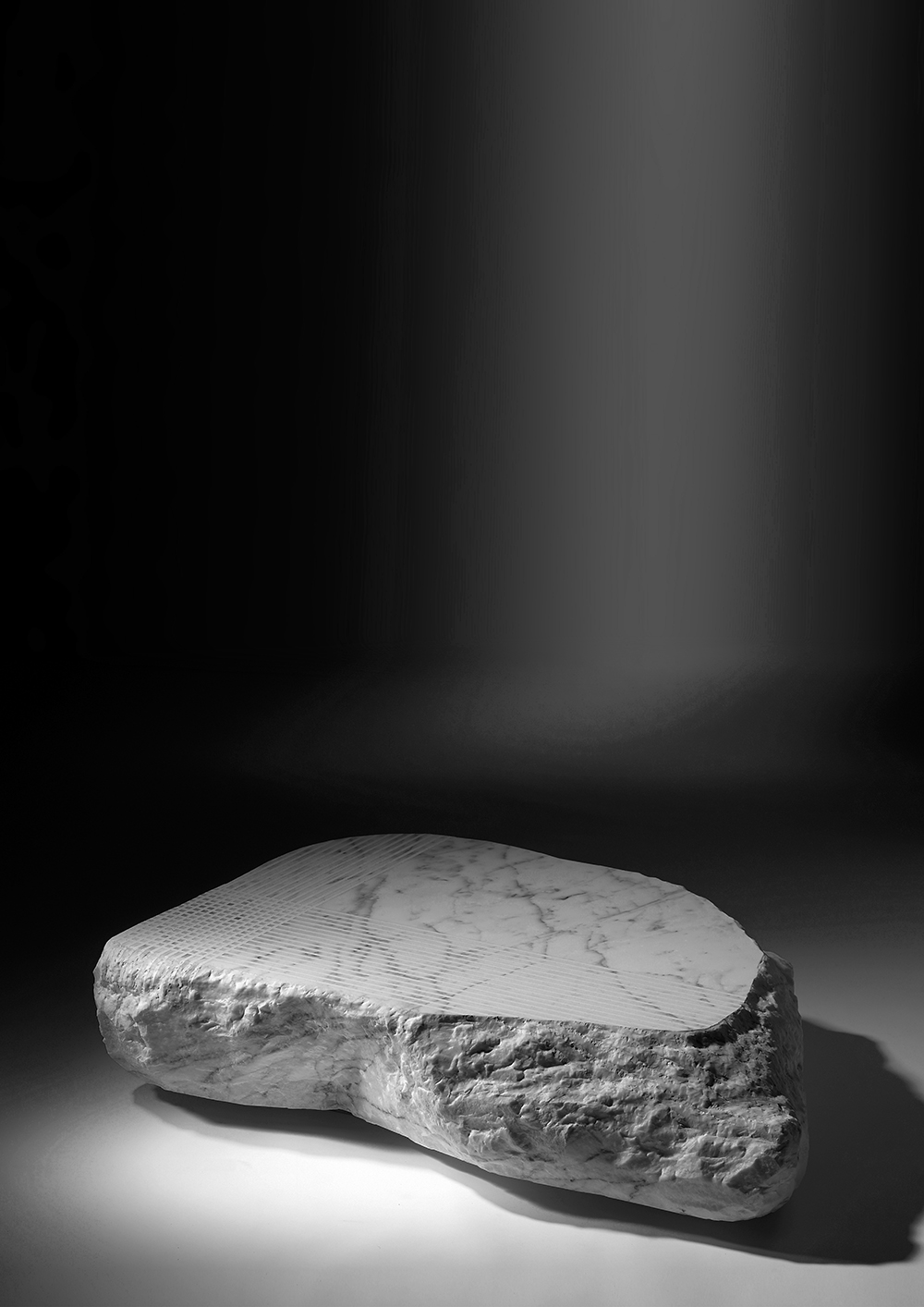

Telegraph Luxury / Design Miami/Basel 2015
June 18, 2015
http://www.telegraph.co.uk/luxury/design/74788/design-miamibasel-preview.html
Gallery FUMI
London-based Gallery FUMI is among several that will present new pieces commissioned specifically for the fair. Max Lamb’s Metalware takes the lead from the Woodware collection made for FUMI in 2011, and Sam Orlando Miller extends his sculptural mirrors into new dimensions with two new works too. Glithero, Study O Portable, and Lukas Wegwerth have all evolved popular current projects and new duo-on-the-block Brooksbank & Collins will be debuting their Boullee Table – a piece that, in mirror-polished and acid-etched stainless steel, promises to present “a glimpse of interstellar horizons, the monumental shadows of the planets and the glittering light of a thousand distant suns” – worth having a look by the sounds of it.
Gallery Fumi / Design Miami/Basel 2015
June 15, 2015
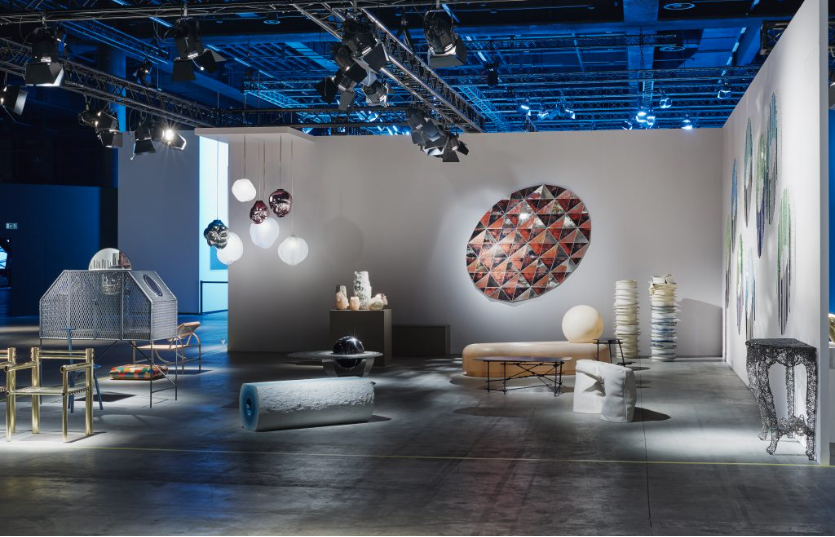
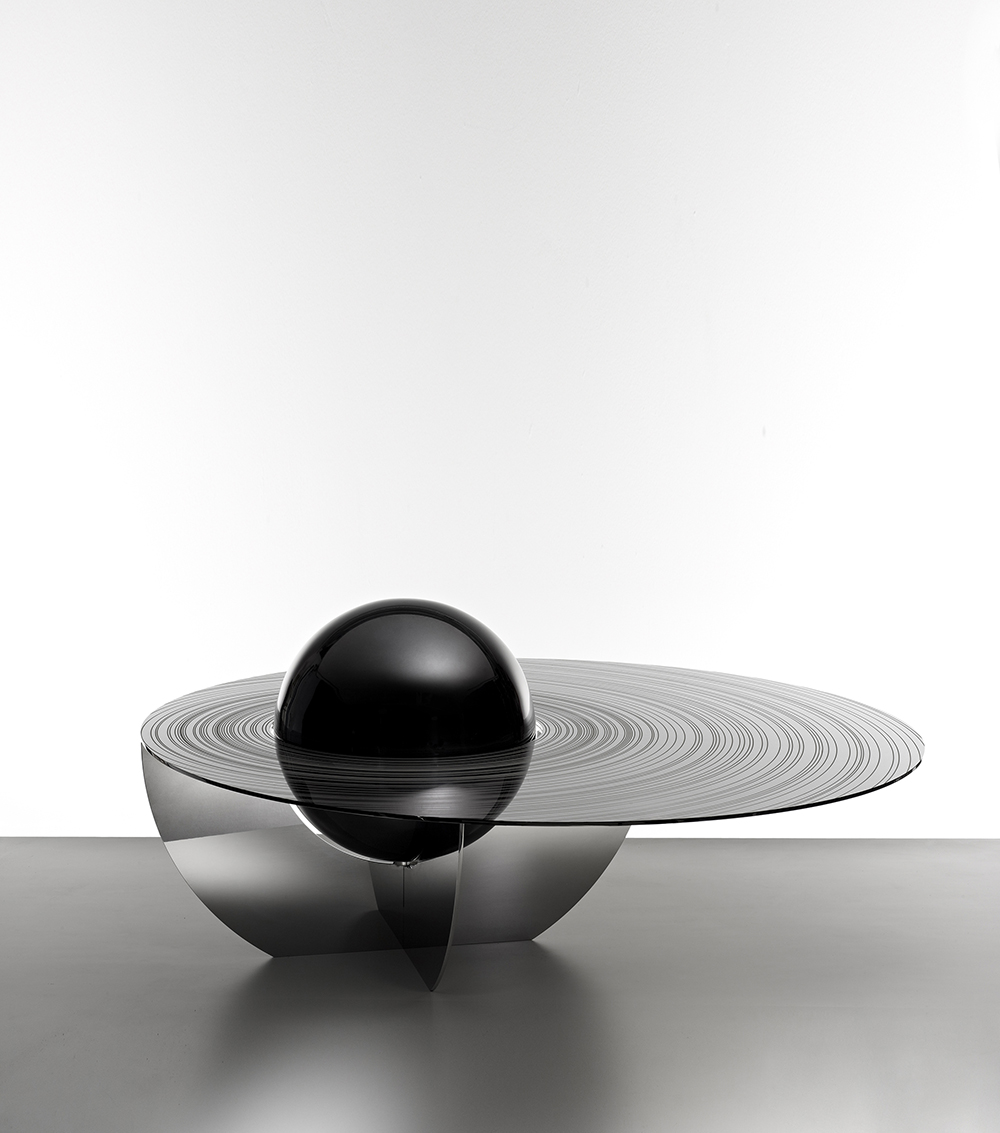
The Boullee Table
June 15, 2015
Edition of 8 + 2 AP
Material: Mirror polished & etched stainless steel
Sphere available in Black, Brass or Mirror Polished Finish
Size: L120 x W120 x H35cm (Tabletop)
Brooksbank & Collins’ Boullee Table is named in honour of Etienne Louis Boullee, 1728 – 1799, a neo-classical architect whose visionary design for Newton’s Cenotaph interprets his subject’s ground breaking conceptions of time and space via a monumental language of form and light.
The Boullee table is a distillation of pure form rendered in mirror polished and acid etched stainless steel. It is constructed from three structural elements – sphere, disc and axial base – which interlock in accordance with the movement of the heavens. The piece presents a glimpse of interstellar horizons, the monumental shadows of the planets and the glittering light of a thousand distant suns.
For all sales & press enquiries please contact Gallery FUMI
Photographs by Stephen Lenthall
Boullee with Black Sphere:
Boullee with Brass Sphere:
Boullee with Mirror Polished Sphere:
Homes & Gardens / April 2015
March 3, 2015
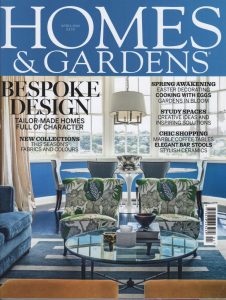
AD Germany / March 2015
March 3, 2015
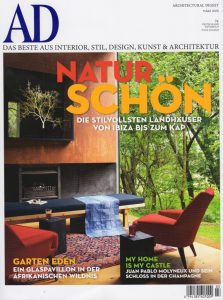
The Fossus Carrara Table
October 14, 2014
The Fossus Carrara Table
Each piece is unique
Material: Carrara Marble and White Resin
Size: L71 x W50 x H22.2cm
Brooksbank & Collins’ Fossus Table is named from the Latin ‘Fossus’, translated as ‘chiseled’ or ‘dug up’. Imagined as an artefact unearthed, Fossus is both ancient and futuristic. When you get really close to Fossus it transforms from a piece of furniture to resembling a landscape of plateaus raised above jagged cliffs in miniature. You can imagine that the surface of the plateau is inscribed with mysterious intersecting hieroglyphs like the ancient Nazca land lines in Peru (500 B.C. – A.D. 500).
The Fossus table is a monolith of solid marble, pieces of marble are removed from the edge of the monolith to achieve a weathered form; by contrast, the top surface is polished to an exquisite mirror sheen and inlaid with a hieroglyphic notation of abstract lines. The lines give the intriguing impression of having been delicately overlaid into the table surface – in fact they have been carved deep into the body of rock with visceral linear cuts inlaid with specialist resin.
For all sales & press enquiries please contact Gallery FUMI
Gallery Fumi / PAD London 2014
October 13, 2014
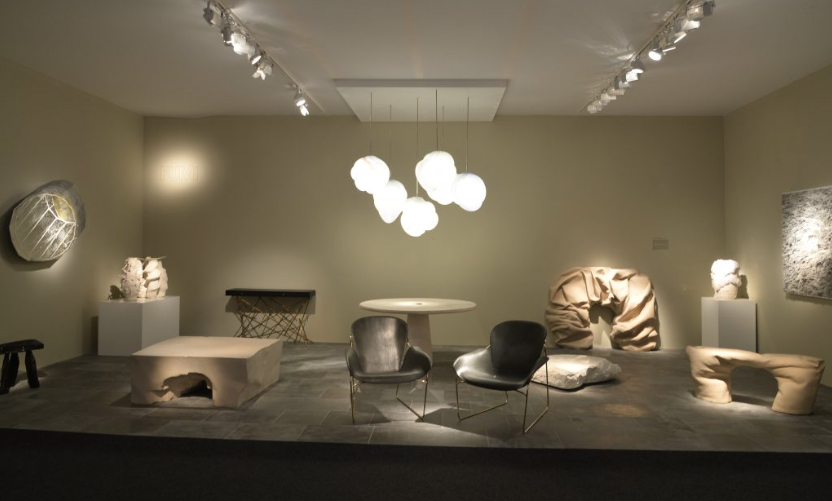
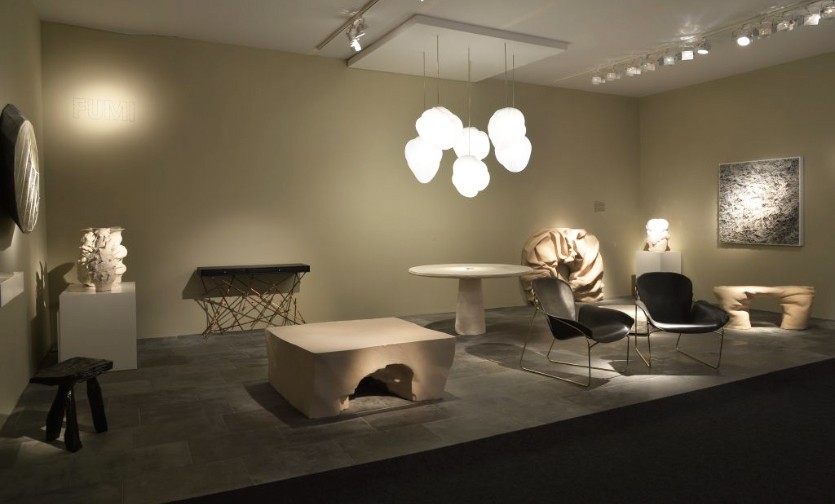

Telegraph Luxury / Top 5 Must Sees LDF 2014
September 16, 2014
London Design Festival / Lapicida / Table Talk / 2014
September 12, 2014
The Caulis 180 Vase
September 4, 2014
The Caulis 180 Vase
Edition of 50
Material: Arabascato Marble
Size: L44.7 x W5 x H22.3cm
Brooksbank & Collins’ Caulis vases are named from the Latin Caulis, translated as “Stem”. Held at an oblique angle, the flower and stem extends from the vase like the stroke of a calligrapher’s pen.
Tom Brooksbank comments: “When I was a child, my mother read me The Little Prince by Antoine de Saint-Exupéry, 1900 -1944. Allan and I thought of the book’s miniature planet whilst designing Caulis – the planet with the single flower growing on it. When you put a Chrysanthemum in the Caulis, the marble striations resemble the landscape of the planet with a single outsize flower – it’s a very playful piece.”
The following plan is employed to create the Caulis vases; a regular polygon is drawn, it is then cut in half and then in half again. The system works for all even numbered polygon. The products of the plan are vases that do the minimum required to support their function, the material is left to be the main actor.
For all sales & press enquiries please contact Gallery FUMI
Photographs by Stephen Lenthall
The Caulis 90 Vase
September 4, 2014
The Caulis 90 Vase
Edition of 50
Material: Arabascato Marble
Size: L22.3 x W5 x H22.3cm
Brooksbank & Collins’ Caulis vases are named from the Latin Caulis, translated as “Stem”. Held at an oblique angle, the flower and stem extends from the vase like the stroke of a calligrapher’s pen.
Tom Brooksbank comments: “When I was a child, my mother read me The Little Prince by Antoine de Saint-Exupéry, 1900 -1944. Allan and I thought of the book’s miniature planet whilst designing Caulis – the planet with the single flower growing on it. When you put a Chrysanthemum in the Caulis, the marble striations resemble the landscape of the planet with a single outsize flower – it’s a very playful piece.”
The following plan is employed to create the Caulis vases; a regular polygon is drawn, it is then cut in half and then in half again. The system works for all even numbered polygon. The products of the plan are vases that do the minimum required to support their function, the material is left to be the main actor.
For all sales & press enquiries please contact Gallery FUMI
Photographs by Stephen Lenthall
The Neptis Vase Green
September 2, 2014
The Neptis Vase
Edition: Limited to 150 of each colour
Material: Cast from Jesmonite, Green, Satin Finish
Size: L18.5 x W5 x H18.5cm
Brooksbank & Collins’ Neptis vases are named from the Latin Neptis translated as “granddaughter”. Neptis is the direct descendent of the family of Caulis Vases and demonstrates Tom and Allan’s continual research and development of families of objects.
“We want to offer the audience a point of view, or rather a grammar, to understand and compare the different structures. Through photography, we try to arrange these shapes and render them comparable. To do so, the objects must be isolated from their context and freed from all association.” Bernd Becher (1931 – 2007) & Hilla Becher (1934 – 2015), German Conceptual Artists.
Inspired by the artists and photographers associated with the New Objective movement which began in Germany in the 1920’s, the family of Neptis Vases are grouped together as general types. Hereditary characteristics are passed on from each parent within the Neptis family, each new offspring adds one extra facet to its face, growing proportionally larger. Each Vase is a perfect Polygon and each facet of that polygon is a perfect square; by using this plan the Vases are thus objective and can be compared as per scientific specimens.
Photographs by Stephen Lenthall
The Neptis Vase Black
September 2, 2014
The Neptis Vase
Edition: Limited to 150 of each colour
Material: Cast from Jesmonite, Black, Satin Finish
Size: L18.5 x W5 x H18.5cm
Brooksbank & Collins’ Neptis vases are named from the Latin Neptis translated as “granddaughter”. Neptis is the direct descendent of the family of Caulis Vases and demonstrates Tom and Allan’s continual research and development of families of objects.
“We want to offer the audience a point of view, or rather a grammar, to understand and compare the different structures. Through photography, we try to arrange these shapes and render them comparable. To do so, the objects must be isolated from their context and freed from all association.” Bernd Becher (1931 – 2007) & Hilla Becher (1934 – 2015), German Conceptual Artists.
Inspired by the artists and photographers associated with the New Objective movement which began in Germany in the 1920’s, the family of Neptis Vases are grouped together as general types. Hereditary characteristics are passed on from each parent within the Neptis family, each new offspring adds one extra facet to its face, growing proportionally larger. Each Vase is a perfect Polygon and each facet of that polygon is a perfect square; by using this plan the Vases are thus objective and can be compared as per scientific specimens.
Photographs by Stephen Lenthall
The Fossus Nero Marquina Table
August 21, 2014
The Fossus Nero Marquina Table
Each piece is unique
Material: Nero Marquina Marble and Black Resin
Size: L71 x W50 x H22.2cm
Brooksbank & Collins’ Fossus Table is named from the Latin ‘Fossus’, translated as ‘chiseled’ or ‘dug up’. Imagined as an artefact unearthed, Fossus is both ancient and futuristic. When you get really close to Fossus it transforms from a piece of furniture to resembling a landscape of plateaus raised above jagged cliffs in miniature. You can imagine that the surface of the plateau is inscribed with mysterious intersecting hieroglyphs like the ancient Nazca land lines in Peru (500 B.C. – A.D. 500).
The Fossus table is a monolith of solid marble, pieces of marble are removed from the edge of the monolith to achieve a weathered form; by contrast, the top surface is polished to an exquisite mirror sheen and inlaid with a hieroglyphic notation of abstract lines. The lines give the intriguing impression of having been delicately overlaid into the table surface – in fact they have been carved deep into the body of rock with visceral linear cuts inlaid with specialist resin.
For all sales & press enquiries please contact Gallery FUMI
Photographs by Guy Farrow
The Carbo Asper Table
August 2, 2014
The Carbo Asper Table
Edition: 20 + 2 AP
Material: Mild steel – hot-dip spun galvanised
Size: L96 x W96 x H24cm
Brooksbank & Collins’ Carbo tables can be understood as pure concept and take their cue from the System based American Conceptual artists of the 1960/70’s.
“The system is the work of art; the visual work of art is the proof of the System. The visual aspect can’t be understood without understanding the system. It isn’t what it looks like but what it is that is of basic importance”.
Sol LeWitt, 1928 – 2007, American Conceptual Artist.
The Carbo tables are a pure mathematic representation; with components combining to create two horizontal surfaces, the lower horizontal surface’s shape is always an integer of the upper horizontal shape. The Coffee table is double the length, double the width and half the height of its numerically similar Side table.
The Carbo tables are ordered according to the taxonomic ranks employed by biologists, relationships are indexed at the same rank and new Carbos are created by moving up and down the ranks.
The product of the system are currently Coffee and Side Tables but could expand to incorporate different typologies.
Photographs by Stephen Lenthall
The Carbo Flavus Table
August 2, 2014
The Carbo Flavus Table
Edition: 20 + 2 AP
Material: Mild steel – zinc plated and yellow passivated
Size: L48 x W48 x H48cm
Brooksbank & Collins’ Carbo tables can be understood as pure concept and take their cue from the System based American Conceptual artists of the 1960/70’s.
“The system is the work of art; the visual work of art is the proof of the System. The visual aspect can’t be understood without understanding the system. It isn’t what it looks like but what it is that is of basic importance”.
Sol LeWitt, 1928 – 2007, American Conceptual Artist.
The Carbo tables are a pure mathematic representation; with components combining to create two horizontal surfaces, the lower horizontal surface’s shape is always an integer of the upper horizontal shape. The Coffee table is double the length, double the width and half the height of its numerically similar Side table.
The Carbo tables are ordered according to the taxonomic ranks employed by biologists, relationships are indexed at the same rank and new Carbos are created by moving up and down the ranks.
The product of the system are currently Coffee and Side Tables but could expand to incorporate different typologies.
Photographs by Stephen Lenthall
Stilwerk Design Gallery / Heavy Metal / 2014
July 24, 2014
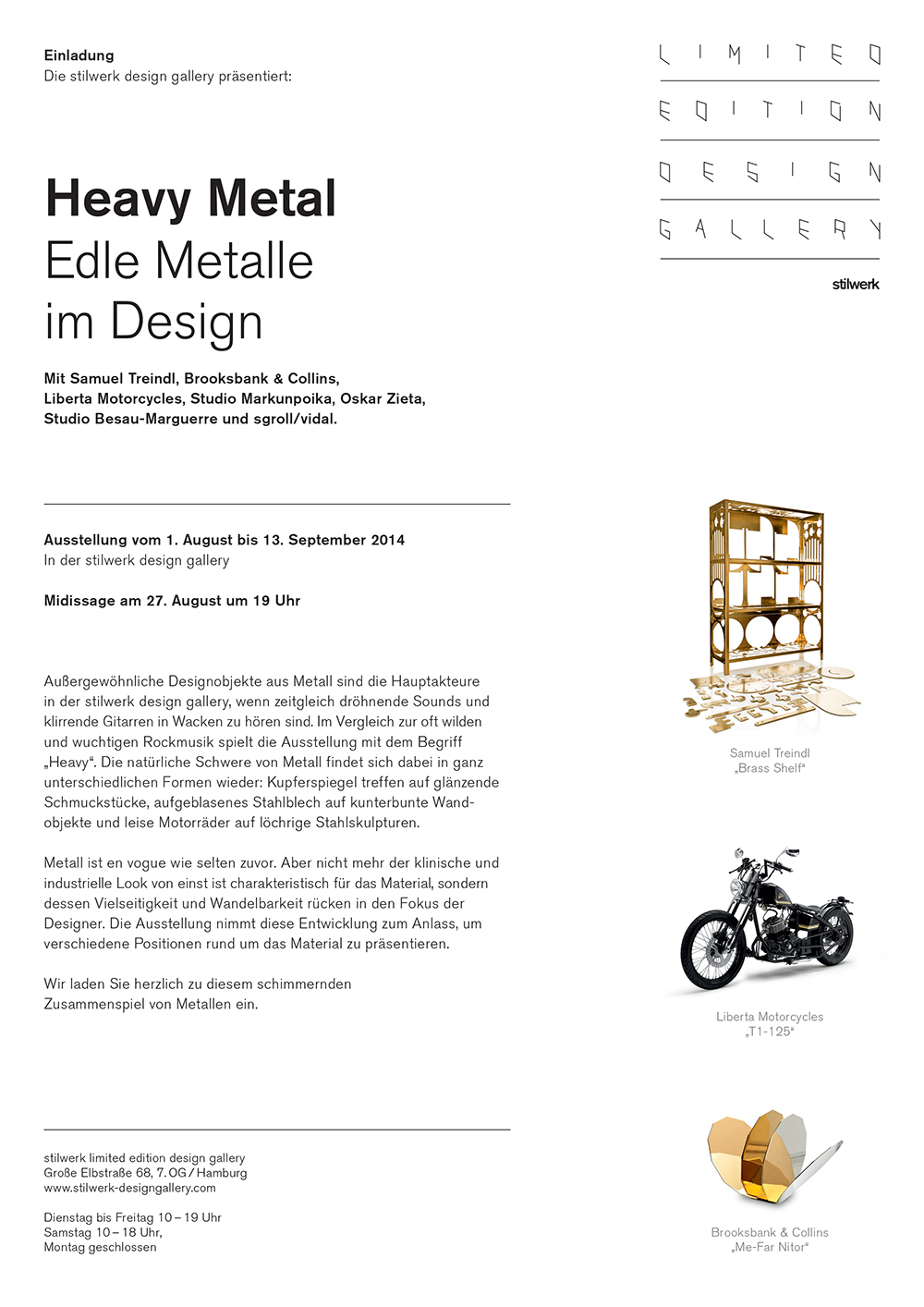
Wallpaper Magazine / May 2014
June 24, 2014
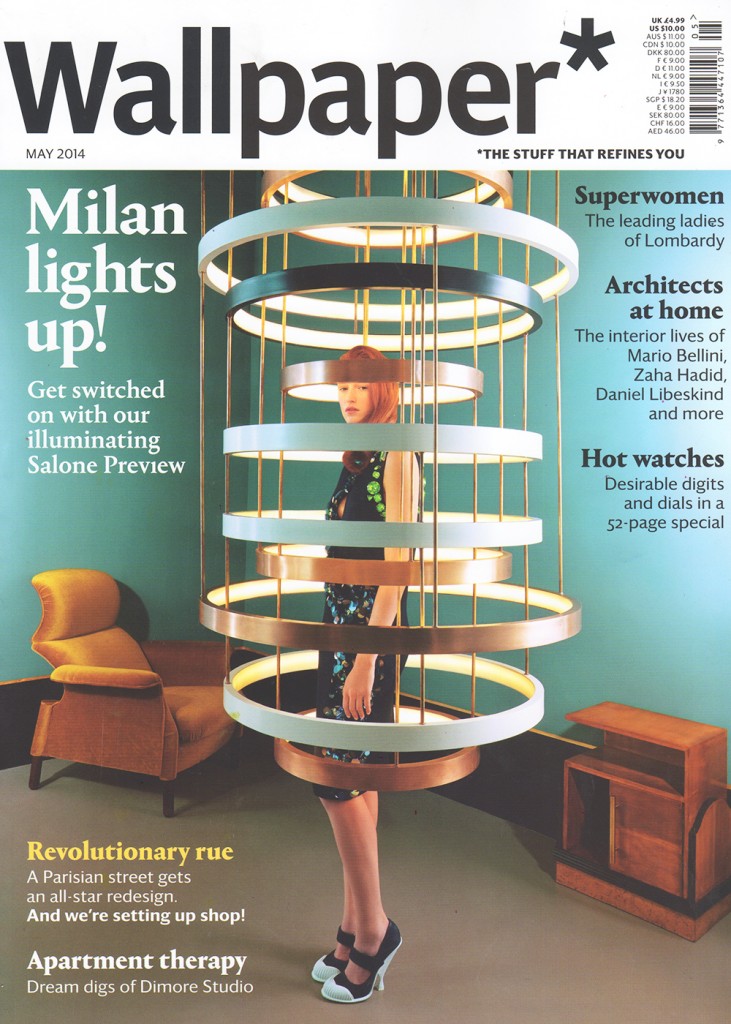
Clerkenwell Design Week / The Makings of Luxury 2014
June 23, 2014
The first edition of The Makings of Luxury launches this May at Clerkenwell Design Week 2014 (CDW). The micro-exhibition will present an edit of five UK makers, each demonstrating a contemporary interpretation of a timeless skill.
Short curated videos will describe the process, studio, tools and materials that have made each exhibit. Confirmed exhibitors include refined concrete forms by Katharina Eisenkoeck, polished brass vessels by Brooksbank & Collins, hand-thrown ceramics by Nigel Matthews, silversmith Juliette Bigley, and hand-woven textiles by Bristol-based studio, Dash & Miller.
The exhibition is located in the ADDITIONS hall, which presents smaller design pieces to gallery owners, interior designers and retail buyers, the micro-exhibition. Supported by CRAFTS magazine, makers have been carefully selected from across the UK.
Organiser Nick Wiltshire comments: “The antithesis of mass production, the maker is both the architect and the artisan, producing limited quantities with a very pure expression of concept. For the collector, these makers offer original aesthetics and highly skilled execution, but also the opportunity to commission bespoke works and explore precious materials that you rarely see in large-scale manufacture.”

The Me-Far Uelox Vessels
January 28, 2014
Edition of 8 + 2 AP
Material: Silver & 18ct Gold & Rhodium; Hallmarked
Size: L21 x W13.5 x H13cm (both vessels nesting)
An ancient text which observed the Kimonos worn by the Japanese Samurai captures the spirit of Brooksbank & Collins’ Me-Far Vessels;
“His kimono was restrained in colour – according to the solemnity of his office – but in fine and abundant silk in accordance with his rank and wealth. As he knelt on the tatami mat, the stiff fabric of his sleeves and shoulder garments fell in geometric layers at his sides. The lines enveloping him were poised, considered and restrained, giving a formality and ceremony to his form like a dragon fly resting on a leaf, or a piece of origami.”
The Me-Far series is an analysis of geometry and the sequential numbering of polygons, each set of vessels is one result of that analysis. A great variety of forms emerge from the analysis but there are geometrical limitations leading to a finite series of Me-Far Vessels.
Each set of the vessels can be nested together into a single decorative piece. Alternatively they can be playfully combined in a variety of different ways, each of which creates different geometrical patterns and reflections. Made from Precious and semi-precious metals, Sterling Silver, Gold and Rhodium, Copper and Bronze, the series of Me-Far Vessels uses the most exquisite materials to highlight their forms and the materials surfaces reflect each other in bewildering complexity.
For all sales & press enquiries please contact Gallery FUMI
Photographs by Stephen Lenthall
The Me-Far Nitor Vessels
January 28, 2014
Edition of 8 + 2 AP
Material: Silver & 18ct Gold; Hallmarked
Size: L21 x W13.5 x H13cm (both vessels nesting)
An ancient text which observed the Kimonos worn by the Japanese Samurai captures the spirit of Brooksbank & Collins’ Me-Far Vessels;
“His kimono was restrained in colour – according to the solemnity of his office – but in fine and abundant silk in accordance with his rank and wealth. As he knelt on the tatami mat, the stiff fabric of his sleeves and shoulder garments fell in geometric layers at his sides. The lines enveloping him were poised, considered and restrained, giving a formality and ceremony to his form like a dragon fly resting on a leaf, or a piece of origami.”
The Me-Far series is an analysis of geometry and the sequential numbering of polygons, each set of vessels is one result of that analysis. A great variety of forms emerge from the analysis but there are geometrical limitations leading to a finite series of Me-Far Vessels.
Each set of the vessels can be nested together into a single decorative piece. Alternatively they can be playfully combined in a variety of different ways, each of which creates different geometrical patterns and reflections. Made from Precious and semi-precious metals, Sterling Silver, Gold and Rhodium, Copper and Bronze, the series of Me-Far Vessels uses the most exquisite materials to highlight their forms and the materials surfaces reflect each other in bewildering complexity.
For all sales & press enquiries please contact Gallery FUMI
Photographs by Stephen Lenthall
The Me-Far Altus Vessels
January 27, 2014
Edition of 8 + 2 AP
Material: Silver; Hallmarked
Size: L25 x W15.6 x H11cm (all 3 vessels nesting)
An ancient text which observed the Kimonos worn by the Japanese Samurai captures the spirit of Brooksbank & Collins’ Me-Far Vessels;
“His kimono was restrained in colour – according to the solemnity of his office – but in fine and abundant silk in accordance with his rank and wealth. As he knelt on the tatami mat, the stiff fabric of his sleeves and shoulder garments fell in geometric layers at his sides. The lines enveloping him were poised, considered and restrained, giving a formality and ceremony to his form like a dragon fly resting on a leaf, or a piece of origami.”
The Me-Far series is an analysis of geometry and the sequential numbering of polygons, each set of vessels is one result of that analysis. A great variety of forms emerge from the analysis but there are geometrical limitations leading to a finite series of Me-Far Vessels.
Each set of the vessels can be nested together into a single decorative piece. Alternatively they can be playfully combined in a variety of different ways, each of which creates different geometrical patterns and reflections. Made from Precious and semi-precious metals, Sterling Silver, Gold and Rhodium, Copper and Bronze, the series of Me-Far Vessels uses the most exquisite materials to highlight their forms and the materials surfaces reflect each other in bewildering complexity.
For all sales & press enquiries please contact Gallery FUMI
Alle Metalle / imm Cologne / 2014
January 9, 2014
Brooksbank and Collins are proud to launch the MeFar Solum bowls during Passagen as part of imm Cologne 2014.
The exhibition Alle Metalle, edited by Antonia Henschel & Sebastian Herkner takes place from 13th – 19th January, 5th Floor, BayenStrasse 65, Cologne, Germany.
Alle Metalle / all metal, is an exhibition based on a book by Trademark Publishing. It shows classic products as well as contemporary design made of metal. Most products are made of copper or brass and have been manufactured in different techniques.
The book series ‘Objects’ is designed as a reverence to noteworthy phenomena in product design. The second book ‘All metal’ is dedicated to all things metal. Chairs, tables, trays, lights, mainly in copper or brass. In his essay Markus Frenzl writes: ‘This new enthusiasm for the old copper alloys is a material expression of a new design aesthetic: Unlike their predecessors, young designers are not keen to invent the future, but rather to save the culture of real-world products from the threat of digitalisation and virtualisation. They are not trying to distance themselves from previous generations of designers at all costs, and are happy to be inspired by the elegant Fifties designs of Gio Ponti, Finn Juhl and Charles and Ray Eames. As a part of this process, they have re-discovered the cultural treasure of the modern era and its materials for themselves. After all, even in 20th century modern design, which we long believed to have focused entirely on cold, chrome-plated objects, designs still appeared from time to time based on materials that had a hand-made feel: brass, copper and bronze.’
On the occasion of imm cologne 2014, in the off-programm Passagen, the editor of the book Antonia Henschel and the designer Sebastian Herkner have collaborated to transfer the book into an exhibition. Featured are products by Konstantin Grcic, Tomás Alonso, Mategot, Mark Holmes, Sebastian Herkner, Oskar Zieta, Stefan Diez, Kai Linke, Luigi Caccia Dominioni, Poul Henningsen amongst others. The exhibition was initiated in cooperation with TØNDEL Interior Design.
Exhibition photographs copyright Antonia Henschel
The Me-Far Quinque Vessels
October 15, 2013
Edition of 8 + 2 AP
Material: Bronze; Patinated finish
Size: L43 x W43 x H14.4cm (all 3 vessels nesting)
An ancient text which observed the Kimonos worn by the Japanese Samurai captures the spirit of Brooksbank & Collins’ Me-Far Vessels;
“His kimono was restrained in colour – according to the solemnity of his office – but in fine and abundant silk in accordance with his rank and wealth. As he knelt on the tatami mat, the stiff fabric of his sleeves and shoulder garments fell in geometric layers at his sides. The lines enveloping him were poised, considered and restrained, giving a formality and ceremony to his form like a dragon fly resting on a leaf, or a piece of origami.”
The Me-Far series is an analysis of geometry and the sequential numbering of polygons, each set of vessels is one result of that analysis. A great variety of forms emerge from the analysis but there are geometrical limitations leading to a finite series of Me-Far Vessels.
Each set of the vessels can be nested together into a single decorative piece. Alternatively they can be playfully combined in a variety of different ways, each of which creates different geometrical patterns and reflections. Made from Precious and semi-precious metals, Sterling Silver, Gold and Rhodium, Copper and Bronze, the series of Me-Far Vessels uses the most exquisite materials to highlight their forms and the materials surfaces reflect each other in bewildering complexity.
For all sales & press enquiries please contact Gallery FUMI
Gallery Fumi / Group Exhibition / New Works 2013
September 24, 2013
Alle Metalle
September 24, 2013
Brooksbank and Collins are delighted to announce that our Me-Far Copper bowls feature in the book “Alle Metalle” by Antonia Henschel from the German publisher Trademark Publishing.
“Alle Metalle” showcases classic products as well as contemporary design made of metal.
Copper in a Box / 100% Design / 2013
August 29, 2013
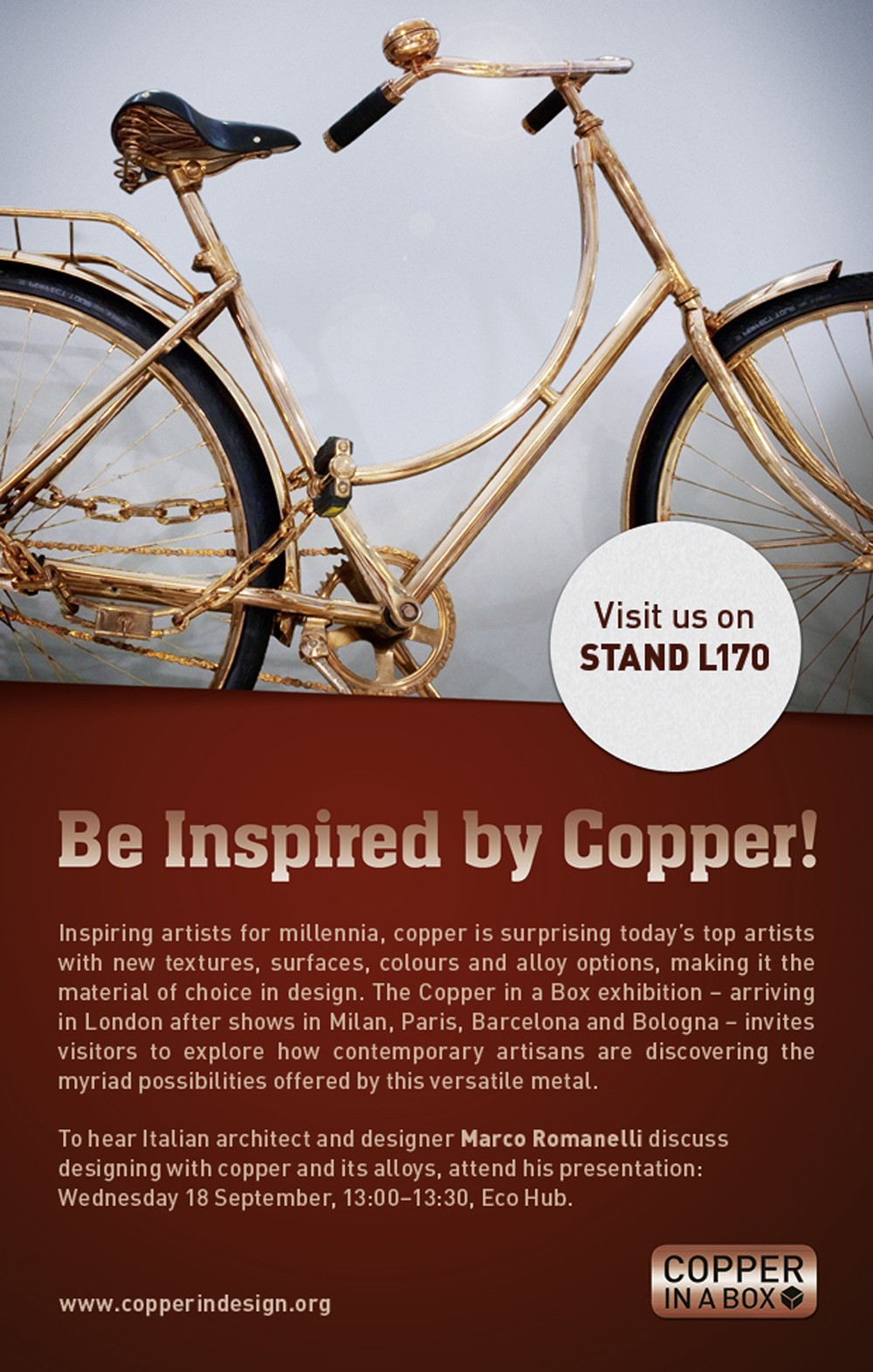
The Me-Far Tribus Vessels
August 22, 2013
Edition of 8 + 2 AP
Material: Copper; Waxed finish
Size: L52 x W49.1 x H16cm (all 8 vessels nesting)
An ancient text which observed the Kimonos worn by the Japanese Samurai captures the spirit of Brooksbank & Collins’ Me-Far Vessels;
“His kimono was restrained in colour – according to the solemnity of his office – but in fine and abundant silk in accordance with his rank and wealth. As he knelt on the tatami mat, the stiff fabric of his sleeves and shoulder garments fell in geometric layers at his sides. The lines enveloping him were poised, considered and restrained, giving a formality and ceremony to his form like a dragon fly resting on a leaf, or a piece of origami.”
The Me-Far series is an analysis of geometry and the sequential numbering of polygons, each set of vessels is one result of that analysis. A great variety of forms emerge from the analysis but there are geometrical limitations leading to a finite series of Me-Far Vessels.
Each set of the vessels can be nested together into a single decorative piece. Alternatively they can be playfully combined in a variety of different ways, each of which creates different geometrical patterns and reflections. Made from Precious and semi-precious metals, Sterling Silver, Gold and Rhodium, Copper and Bronze, the series of Me-Far Vessels uses the most exquisite materials to highlight their forms and the materials surfaces reflect each other in bewildering complexity.
For all sales & press enquiries please contact Gallery FUMI
Photographs by Stephen Lenthall
Archiworld Korea
November 28, 2012
